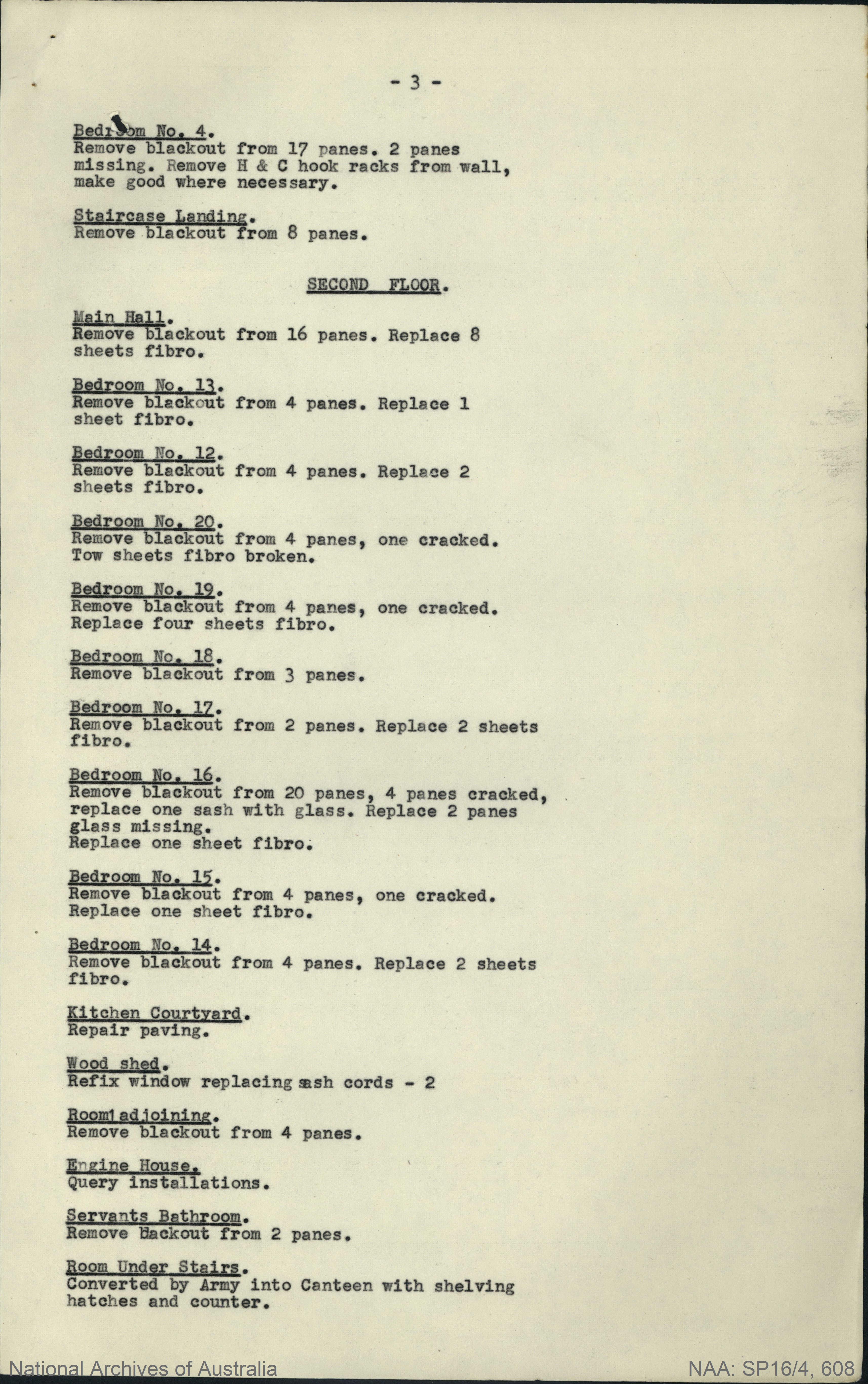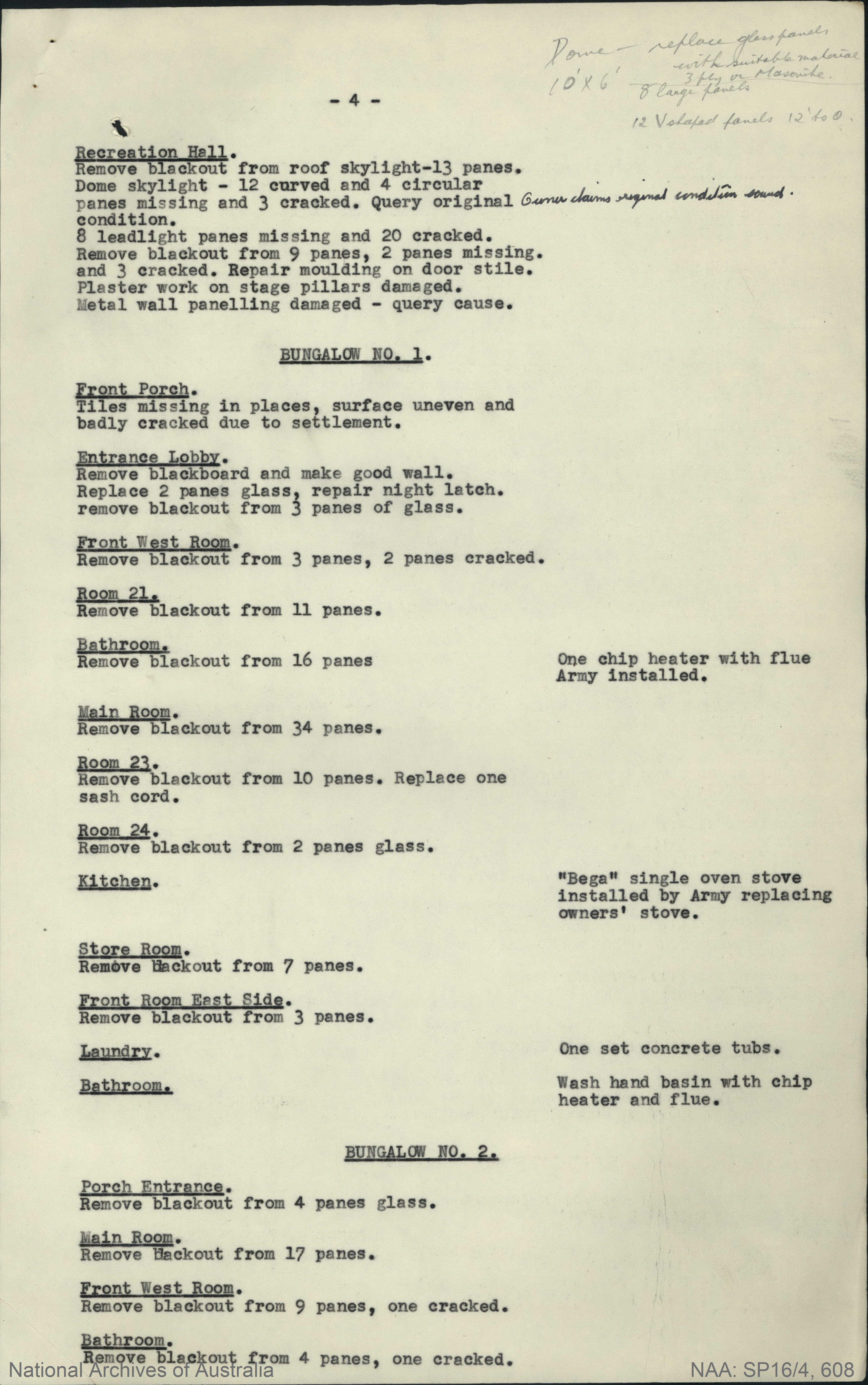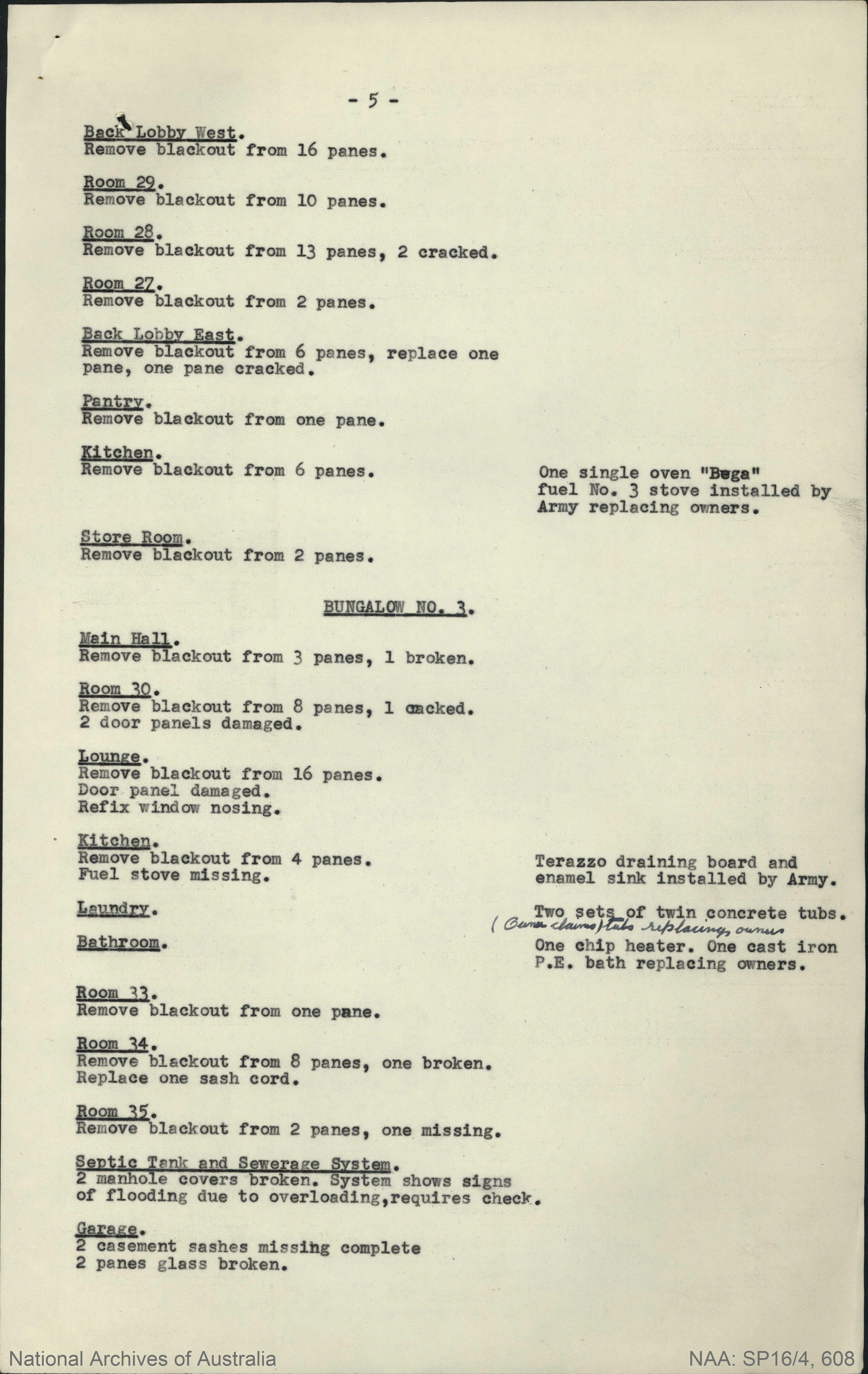Brock's The Oaks - La Corniche from 1911 to 1965: Rickards, A Coffee King, A Progressive School, a WWII Training Ground
By the Spring of 1910 Arthur Rickard's second wife, Nellie Crudge Rickard, daughter of first Mayor of Manly and Architect Thomas Rowe and sister to Harry Ruskin Rowe, was named as owner by mortgagee the City Mutual Life Assurance Society, ratified March 11th, 1911, and the Rickards commenced subdividing and selling the estate of 118 acres, apart from those acres on the north headland, those lots dedicated for pubic use, and that lot already under William Scott-Fell. Those sales, listed under Volume - Folio - 2124-227 in Extras, show who bought what and where and when from those first sections. Among these are many early residents of the Manly to Barrenjoey peninsula, as well as those from out of the area or from rural places.
Here a new mini golf course and the 'Mona Vale Hydro' was launched under a Mr. Fox. The Fox-Foy 'Hydro' didn't last long. The building was renamed 'La Corniche' by Rainaud, a French Restaurateur who originally ran a successful tea room, restaurant and boarding house at Church Point-Bayview of the same name until a tragedy. He brought the name with him when taking over these premises in 1911.
These images from the Allen Family album dated Sunday September 3rd 1911 show the Rainauds are already installed and Mr Taylor, of Bayview, also being present:
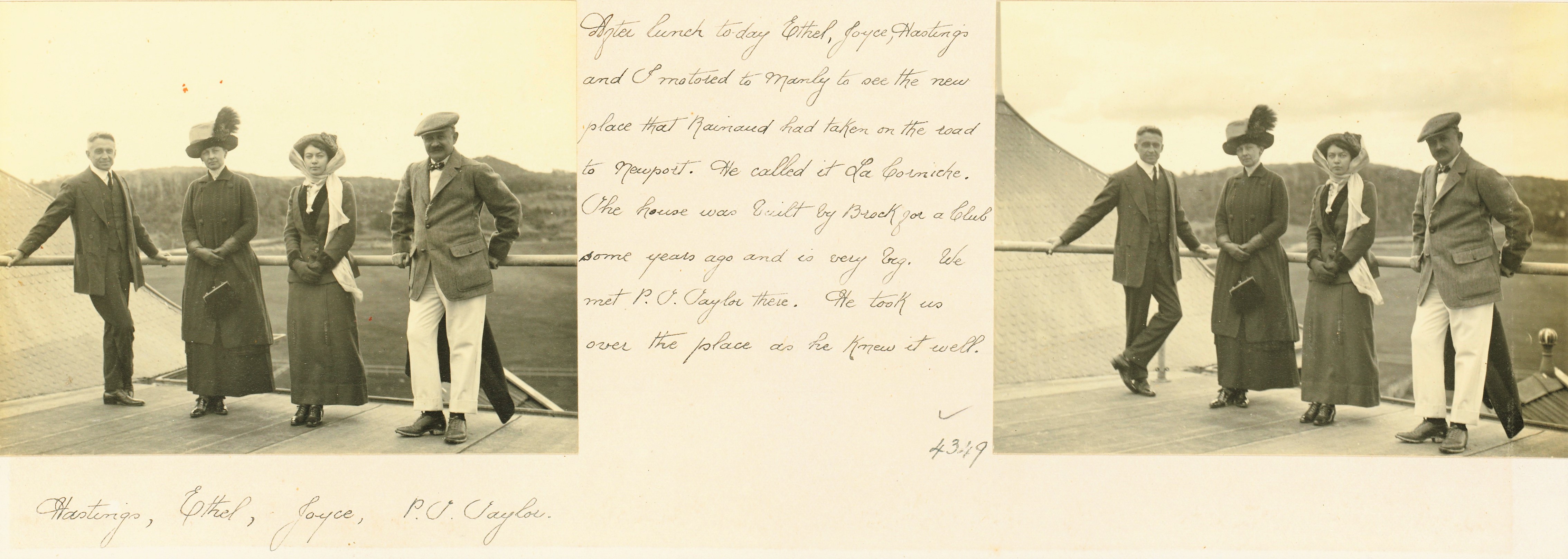
From - Album 57: Photographs of the Allen family, 2 May 1911 - 7 October 1911, Enlarged versions courtesy Mitchell Library, State Library of NSW. Item: SLNSW_FL151627
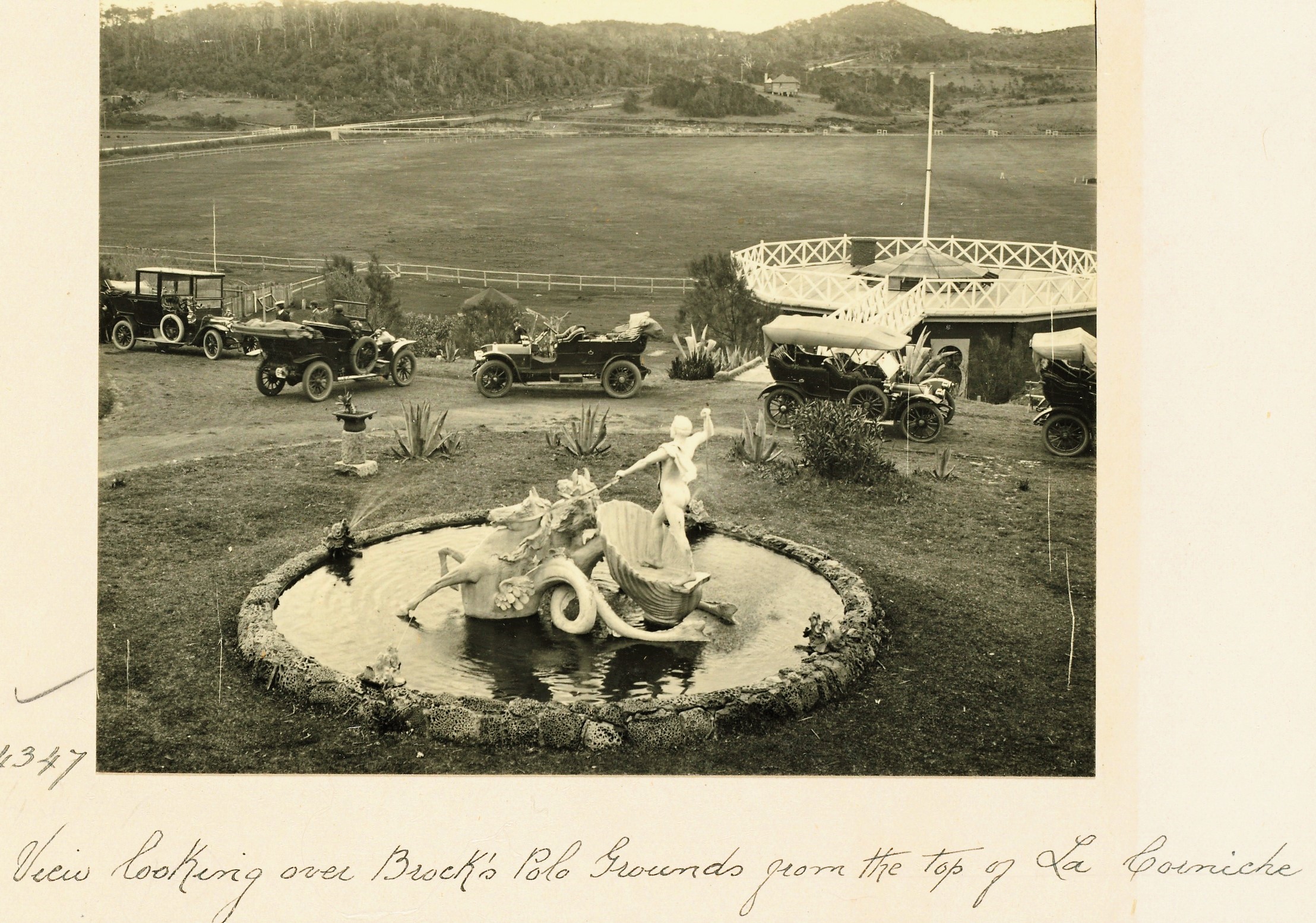
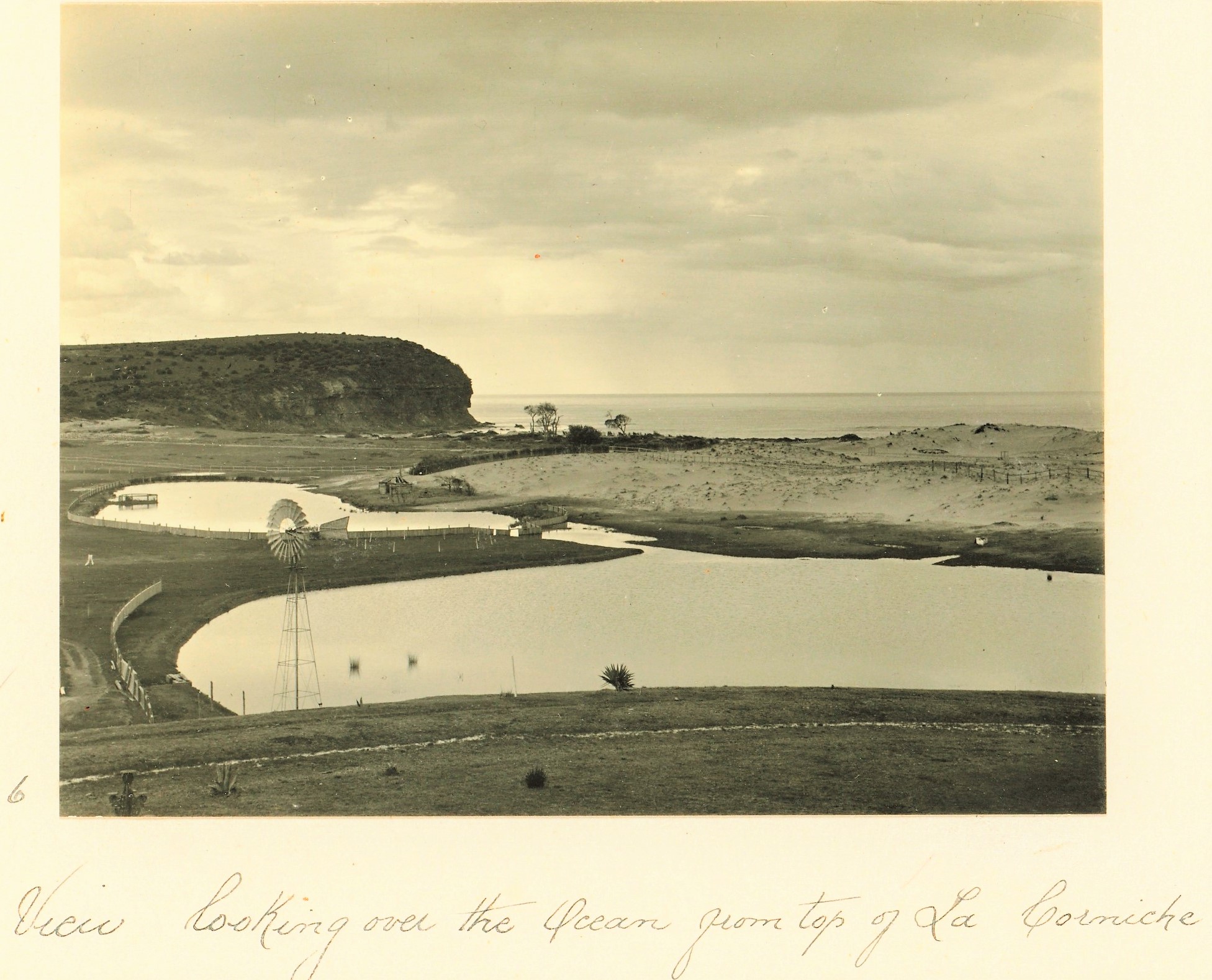
''La Corniche."
Patrons of "La Corniche," Pittwater, are informed that, the business having outgrown the accommodation afforded by the old building, Monsieur and Madame Rainaud have taken over the beautiful and commodious mansion at Mona Vale, known as "Brock's," which is, being altered and, fitted to suit their requirements, and which, will be known henceforth under the name of "La Corniche.
In addition to the excellent cuisine that made their old business famous, Monsieur and Madame Rainaud can now offer their, guests the additional attractions of a line golf links, a glorious surfing beach, fishing, tennis, and every facility for outdoor enjoyment.
The new "La Corniche,, offers all kinds of indoor comforts, billiard-room, ballroom, private dining-rooms, suites of apartments, single and double rooms, all furnished in the best style and replete with every modern convenience. MOTOR GARAGE, STABLES, FURNISHED COTTAGES.
Terms, etc., on application. TELEPHONE, MANLY 226. Advertising (1911, September 13). The Daily Telegraph (Sydney, NSW : 1883 - 1930), p. 5. Retrieved from http://nla.gov.au/nla.news-article238875176
Mr. Rainaud did not last long either though as on January 8th, 1912 the building was razed in a fire:
BROCK'S MANSION BURNED.
BIG BLAZE AT MONA VALE. beautiful landmark destroyed.
Damage estimated at £12,000.
No fire- fighting appliances available.
"La Corniche," a mansion at Mona Vale, which occupied a commanding position on the road between Manly and Newport, was destroyed by fire early this morning. Flames were discovered at 10 minutes to 1. At half-past 2 only portions of the walls, and they rickety, were standing.
The building was palatial In Its dimensions and appointments, and contained in all 38 rooms, 28 of which were bedrooms. It was originally designed for The Oaks Polo Club, and was built by Mr. G. S. Brock at a cost which has been set down at £32,000. Before the building was completed, however, it was acquired by Mr. Arthur Rickard, who brought It up to date and then let It to M. and Mme. Rainaud, at one time chef to Sir Harry Rawson. Instead of being used as a polo club it became a fashionable boarding-house, and on account of its situation and its surroundings, including surfing and golf, it became exceedingly popular. There were 30 boarders in the place at the time of the fire.
The fire started in the large dining hall, and was discovered before it had a very strong hold of the room, but not in time to be beaten out. There was a hue and cry raised throughout the building, and boarders were running to and fro to ascertain the extent of, their danger and the possibilities of saving their effects. The flames spread with great rapidity, but happily not In the direction of the staircase, and many of the people were, therefore, able to dash about and get their property outside.
Those on the second and third floors, however, did not take the risk which running up and down the stairs involved, and threw most of their belongings out of the windows. In ten minutes the flames -had begun to light up the hills on either side, and to throw long reflections out to sea. The boarders were all out of the building by ' this .time, and the menfolk were assisting the staff (numbering 20) to remove the furniture. They continued in this until the flames drove them back, and were successful in getting out a piano and other big stuff. But What was saved was a mere fraction of what was lost.
All that the people could do was to stand by and watch. There was water— the sea could be heard roaring in to shore all the time — but there was no means of pumping it into the building. No fire-fighting appliances which would avail anything were kept on the premises, there is no depot in the vicinity, and though a boarder motored to Manly post haste and reported the blaze the firemen did not go out, because they could have done nothing if they had.
There were very few incidents in connection with the fire. Everybody was got out expeditiously, and though there were several cases where ladles fainted they were never in danger. Even the pets of the house were saved, though one had a narrow escape. It was a little white pussy, and it mewed and mewed pitifully on the window sill of a room from which smoke was already issuing. One of the girls attached to the staff saw its plight and darted into the building and out again with her charge in a few seconds.
Mr. Scott Fell, who has a house in the grounds of La Corniche, provided accommodation for the boarders for the rest of the night. As bad as the consequences were they might have been worse. If the blaze, for instance, had started nearer to the stairway than it did, it is quite possible that the escape of the boarders would have been cut off, and the only exit would have been through the windows, a course . of action which would practically have endangered limbs if not life. Then, again, the wind was blowing out to sea. Had it blown from the sea, it Is not unlikely that two cottages and the Casino, nearer the roadway, would have gone, while the motor garage, where four motor-cars were kept, would almost certainly have been gutted.
The most remarkable circumstance in connection with the fire was associated with the telephone. When the blaze was found to be so serious Mr. A. Davis tore the 'phone from the wall and carried it outside. Later in the morning an electrician fitted it up on to the fence— the only piece of the fence which escaped the flames— and a trial showed that though the wires had been through the heat of the flames, the 'phone was still in order, and the Manly exchange could be distinctly heard. The boarders relished the good fortune, because it enabled them to send reassuring messages to their friends.
Mr. Rickard stated this morning that the building and furniture was insured in the New Zealand Insurance Co. for £6000, and that he was therefore a fairly heavy loser, seeing that his estimate of the value of the building was £10,000. The furniture was valued at £2000. Mrs. Mueller (wife of Dr. Mueller, of Macquarie-street), Messrs. Harvey, A-. Davis Earle Hermann, Toohey, L. A. and R. V. Minnett, Lotrois, and others of the boarders, were also sufferers by the fire. Mr. Rainaud lost silver, linen, &c., to the value of £250, which was uninsured.
The origin of the fire cannot he determined, but it is believed that it was caused by a lighted match or cigar butt carelessly thrown on to the carpet in the dining-room. Mrs. Rainaud heard a noise in the dining-room, which she attributed to burglars, and on getting out of bed found the place ablaze.
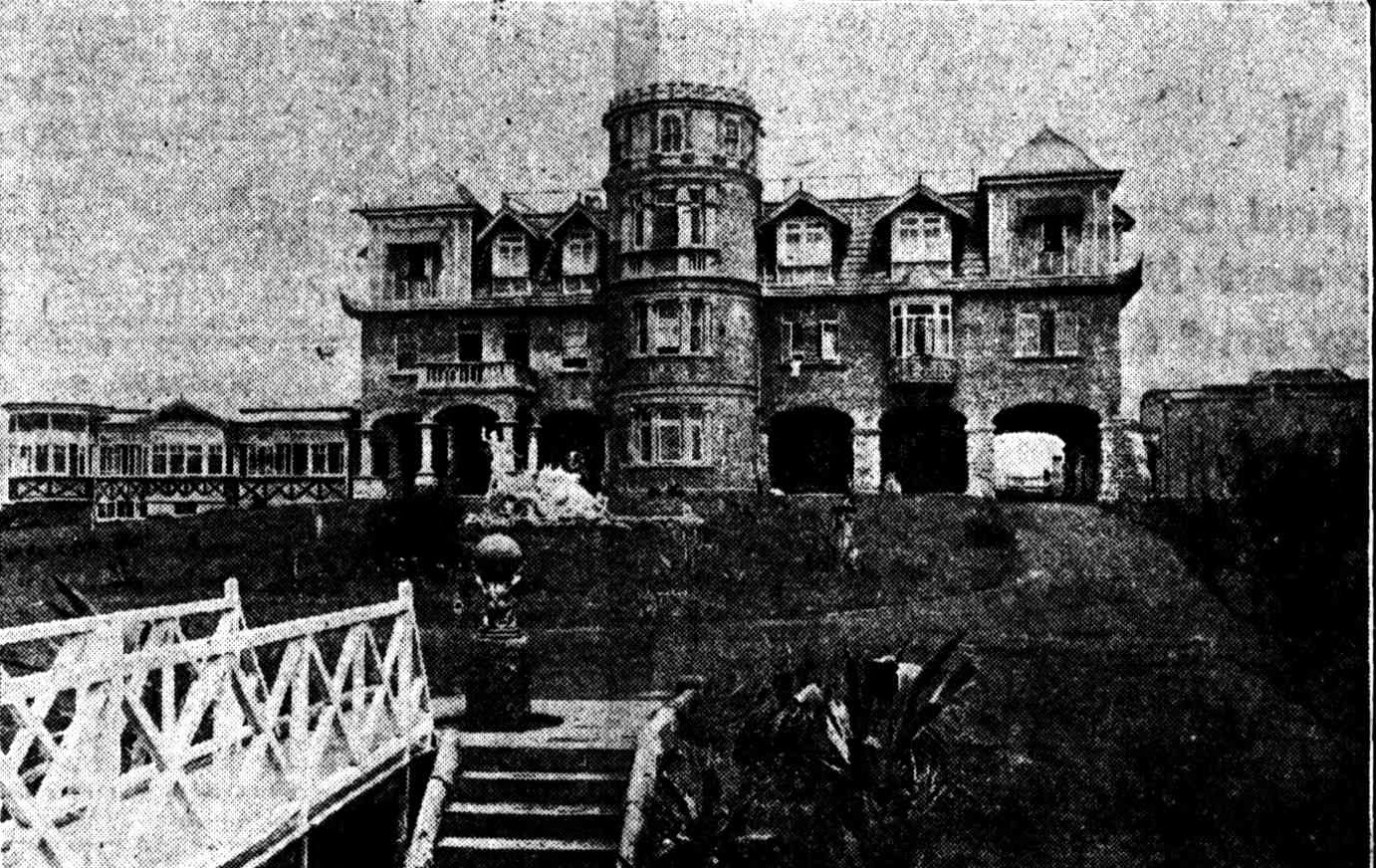
Mona Vale Hydro, the scene of a disastrous fire which occurred in the early hours of this morning. BROCK'S MANSION BURNED. (1912, January 8). The Sun (Sydney, NSW : 1910 - 1954), p. 1. Retrieved from http://nla.gov.au/nla.news-article222004219
AN UNLUCKY BUILDER.
man who was before his time.
The total destruction of the beautiful "La Corniche," better known as Brock's Mansion', at Mona Vale, in the early hours of this morning robs the naturally beautiful tourist journey from Manly to Pittwater of one of its, leading attractions. This magnificent pile of buildings, with Its charming surroundings, has always excited the admiration of the traveller, and the story of Its building by Mr. Brock, and its passing out or his hands after all his Napoleonic' work, has, always won- the stranger's keen sympathy. Mr. Brock gave the best years of his life to the realisation of his Idea to provide a high-class hotel on the lines of a great country home on this unrivalled site, which provides all the delights of ocean, lagoon, and green hills. His-choice of a spot could not have been Improved on with Its glorious ocean views, and after great work in levelling and draining what was a great swamp he evolved a fine polo ground and racecourse on the flat. Six years ago there were no less than 44 polo ponies on the ground.
When Mr. Brock started the buildings he set up his own brickyards and sawmills. Everything he used came from his district In this connection he showed his patriotism by employing only local labor, and for several years he was a benefactor to the neighborhood, his expenditure going Into many thousands.
It may he said that before Mr. Brock started his great undertaking he had the assurance of the Government then in power that the tram to Pittwater would be constructed at once. He went on with his work, spent many thousands, and just when he was within reach of his goal his money ran out, and he lost all his claims to the property, and the results of his labor for years. AN UNLUCKY BUILDER. (1912, January 8). The Sun (Sydney, NSW : 1910 - 1954), p. 1. Retrieved from http://nla.gov.au/nla.news-article222004175
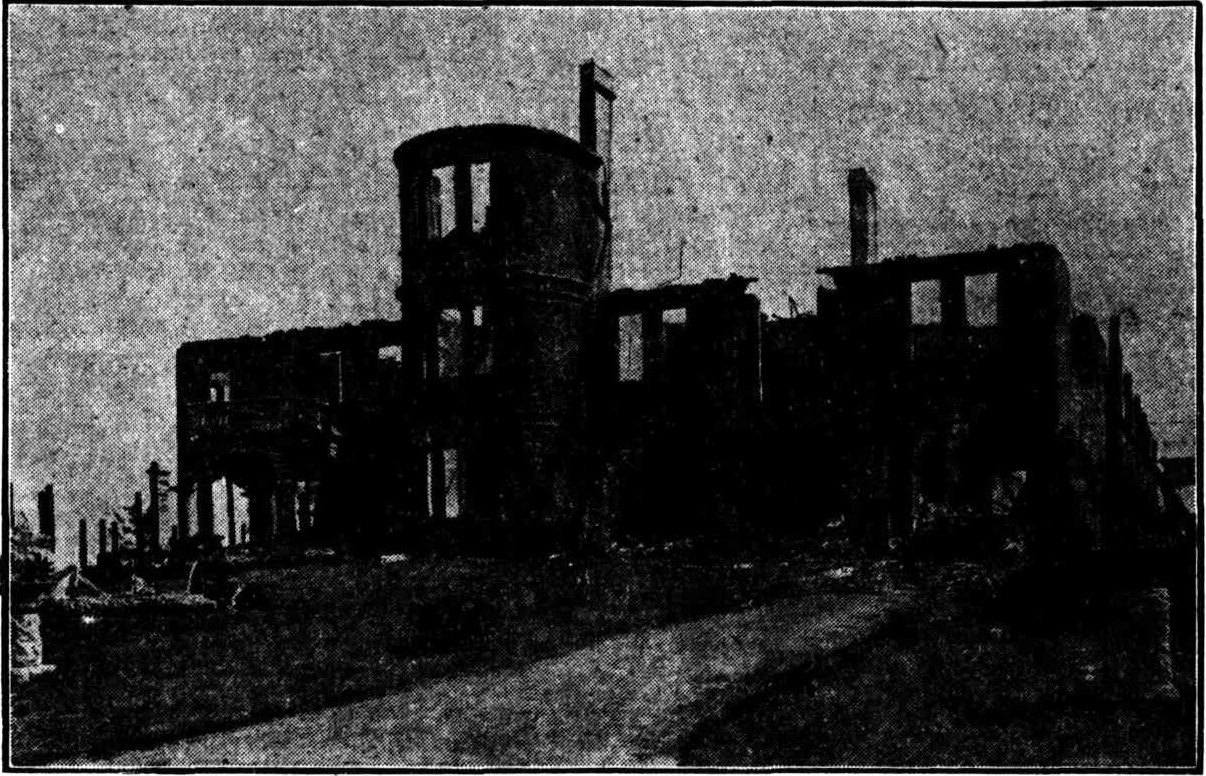
Ruins of "Brock's Mansions," at Mona Vale, destroyed by fire on Monday morning. The fate of the handsome pile of buildings is a grim finale to the financial tragedy that overtook the plucky builder, Mr. G. S . Brock, in its erection. No title (1912, January 10 - Wednesday). The Sun (Sydney, NSW : 1910 - 1954), p. 1 (FINAL EXTRA). Retrieved from http://nla.gov.au/nla.news-article222002216
Not every building at the site was burned:
REMARKLABLE CONFESSION. Alleged Burglars Exploits.
Norman Edward Keals, 27 years of, of Zealand, was before Mr Smithers S.M., at the -Manly Police Court on Friday on several charges of breaking and entering and stealing.
On a charge of breaking into Mr. Scott-Fell's house at Mona Vale, on June 16, the evidence showed that the house had been left properly secured on June 3.
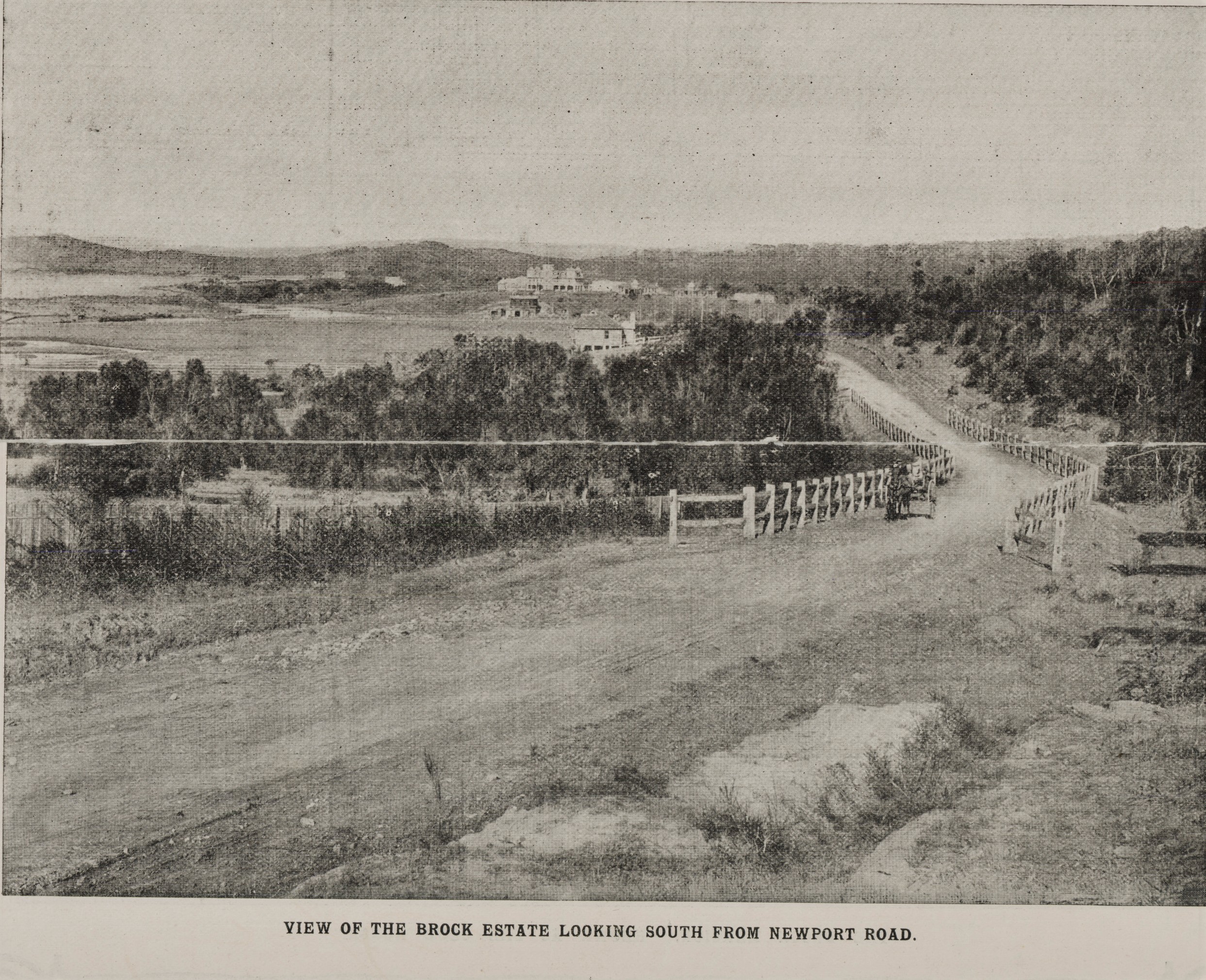
The Brock Estate - 1907, inner page brochure, Item No.: c046820079, Mona Vale Subdivisions, Courtesy State Library of NSW
Mary Rose M'Namara, who visited Scott-Fell's house on June 14, for the purpose of cleaning the place, stated that then she opened the door she found the furniture disarranged and the door open. She begun to work, when a man, whom she identified as the accused, came in from the court-yard. She asked him, "When did you come here?” He replied, "The day before,"
Witness asked him if he was sent by owner, and he said "Yes." Witness started to clean the room, when accused said it didn't want cleaning. He also said the conservatory didn't require any cleaning up. (laughter.) witness then rang" up Mrs. Fell and constable Hewitt-Constable Jones, watchouse-keeper, Manly slated that on the 17th, while he had the accused in custody, Keals voluntarily made the following statement and signed it:-
“on November last I was in Glenbrook looking for work. I came across a tent in Emu Plains camp belonging to Arthur Thompson. I wet into the tent and stole a bicycle from there. I rode the bicycle to Lawson and exchanged it for another which I found leaning up against a church. I afterwards saw in the papers that a young man named Ellis was fined £10 at Penrith Court for stealing a bicycle from Thompson's tent. I did not know Ellis, and he lad no part or share in the stealing of the bicycle. Afterwards I obtained a job on the railway at Glenbrook till February, when I left and went to Pitttwater. The bicycle I took from the church at Lawson I left in the bush at Glenbrook- When passing the Salvation Army Industrial Farm at Dee Why I entered the dining-room, where I obtained some food. I afterwards stole a bicycle from the outside of the shed there I rode the bike the rest of the way to Pittwater. That evening I entered Simpson's store at Bayview, and stole some tinned fish, biscuits. I postcards, and about 2/6 in silver; also some bottles of soft drinks. These things I put in a boat there, and sailed down the bay. I got into broken water, and the boat capsized: I got ashore on to the rocks, where I spent the night The next day I took a boat belonging to Dr. Stiles from the beach in front of his house (which I entered, and from which I stole some food) at Mackerel Beach, Broken Bay. I pulled to Careel Bay. I stole two coats, trousers, and shirts from a tent there. I went to Manly that night, and from there to Sydney, where I pawned my watch. With the money I received on the watch I paid my fare to Woy Woy, and got work at Wyong. I left there and went to Newcastle, and got work at Hexham on a farm. Then I went to Williams's place, outside Taree, and stole some clothes and money. Then I boarded a steamer at Newcastle and returned to Sydney. After working at Balmain for a while I went to Seven Hills, with the intention of leasing a farm there. I failed to get the farm, and on my return to Sydney I bought a revolver at Mick Simmons's, with which I intended to commit suicide. I went to Manly and to the Salvation Army Farm at Dee Why, where I stayed for a few days in a hayloft, and took some food from there, also from the Home of Rest. From there I went to Newport, and after a few days I broke into Scott Fells house at Mona Vale, and stayed there for a few days, and lived on the food that I found in the house. On June 14 I left Scott Fell's house, and went to another furnished cottage owned by Mr. Edward Scott-Scott, where I broke in, and remained until I was surprised by a party of weekend campers. I jumped out of the window, and ran away, but they caught me, and sent for Constable Hewitt, and gave me in charge. I wish to add that on my way to Pittwater the first time I entered the Salvation Army premises at Collaroy Beach, and stole a hymn-book.
Accused, who had nothing to say, was remitted for trial at the Darlinghurst Quarter Sessions. Accused was also committed for trial on two other charges, one of breaking into and stealing goods and money to the value of £15 from the shop of Arthur Morris Simpson, at Bay View, on February 11, and the other of stealing a boat from Dr. Stiles, Mackerel Beach, Broken Bay, on February 13. He was allowed Bail in each case. REMARKABLE CONFESSION. (1912, July 2). Singleton Argus(NSW : 1880 - 1954) , p. 1. Retrieved from http://nla.gov.au/nla.news-article80063111
All this while, as can be seen in Pittwater Roads II: Where The Streets Have Your Name - Mona Vale, Bongin Bongin, Turimetta and Rock Lily, Mr. Rickard continued to subdivide and sell the large amount of grounds that Brock had originally purchased from the Bassett-Darley estate. This sales lithograph from 1911 and when 'The Hydro' was, for a short time,. in operation, shows the amount of blocks for sale. Those sales, as found in the NSW Historical Land Records Viewer (HLRV) are listed under References - Extras:
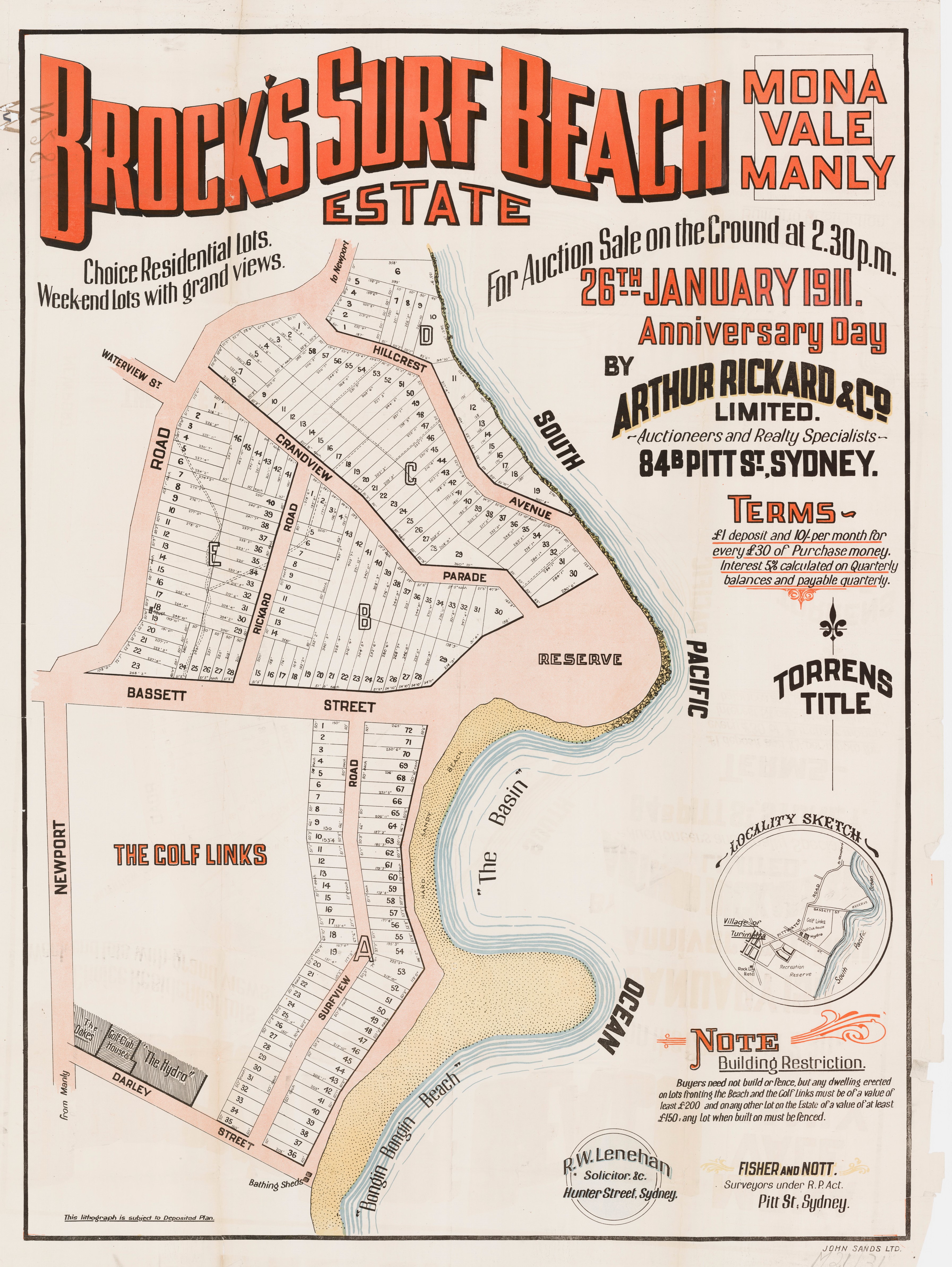
Architect S. N. Rickard is preparing plans for a residence at Mona Vale. WORK IN HAND AND CONTEMPLATED. (1912, September 30). Construction : Weekly Supplement to Building (Sydney, NSW : 1909 - 1914), p. 12. Retrieved from http://nla.gov.au/nla.news-article234756204
Plans are being prepared by Mr. S. N. Rickard for the erection of a brick residence at Mona Vale. NEW WORKS. (1912, October 1). The Daily Telegraph (Sydney, NSW : 1883 - 1930), p. 9. Retrieved from http://nla.gov.au/nla.news-article239178341
An example of his work from the same year:
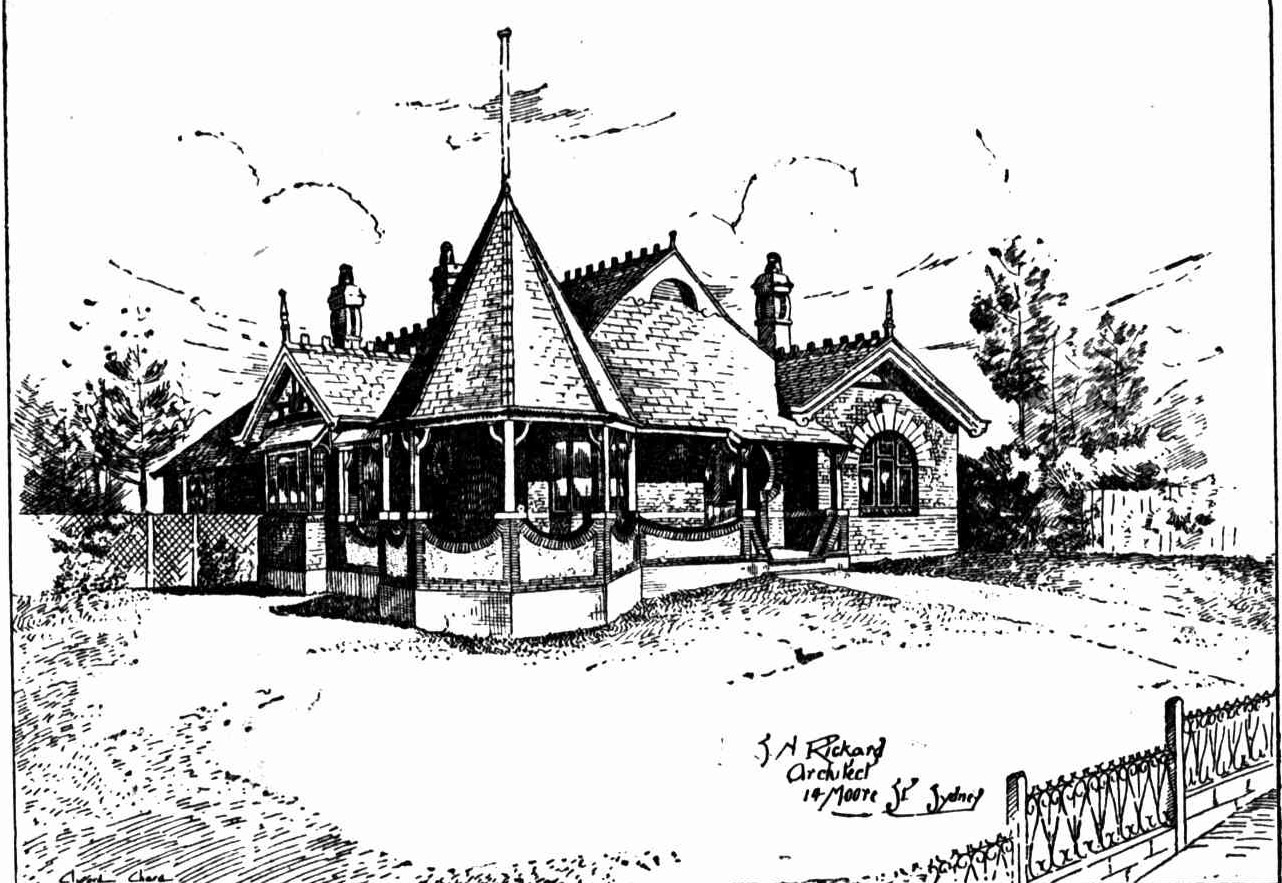
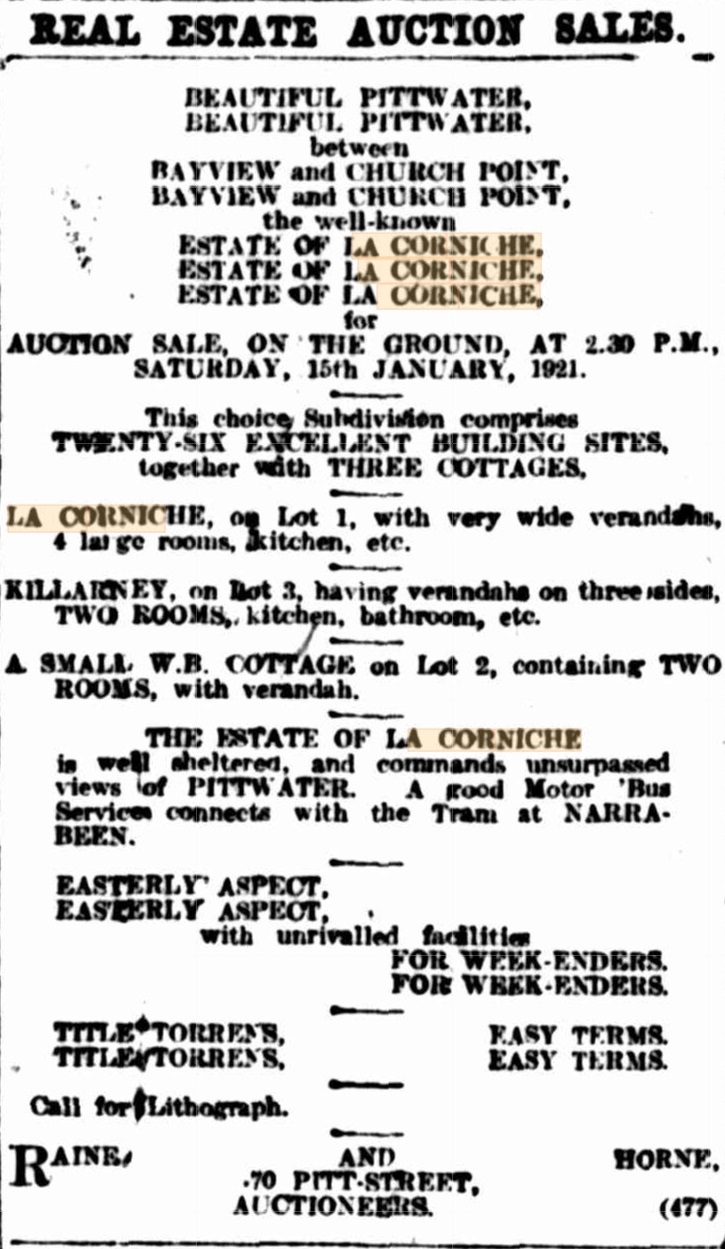
Advertising (1920, December 25). The Sydney Morning Herald (NSW : 1842 - 1954), p. 11. Retrieved from http://nla.gov.au/nla.news-article16881633
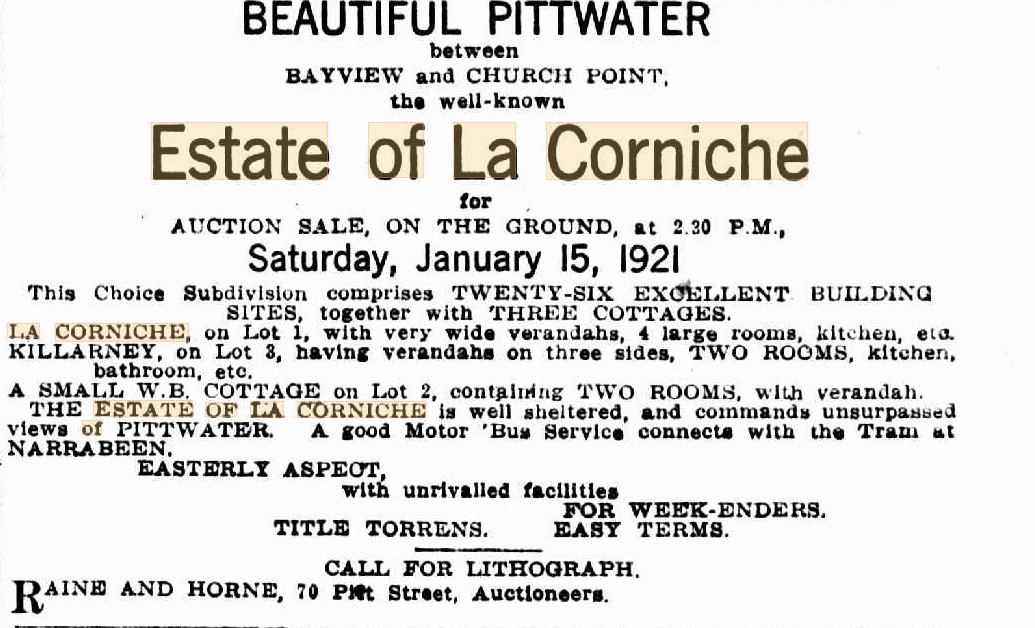
For Sale still: Advertising (1921, January 1). Smith's Weekly (Sydney, NSW : 1919 - 1950), p. 13. Retrieved from http://nla.gov.au/nla.news-article234269137
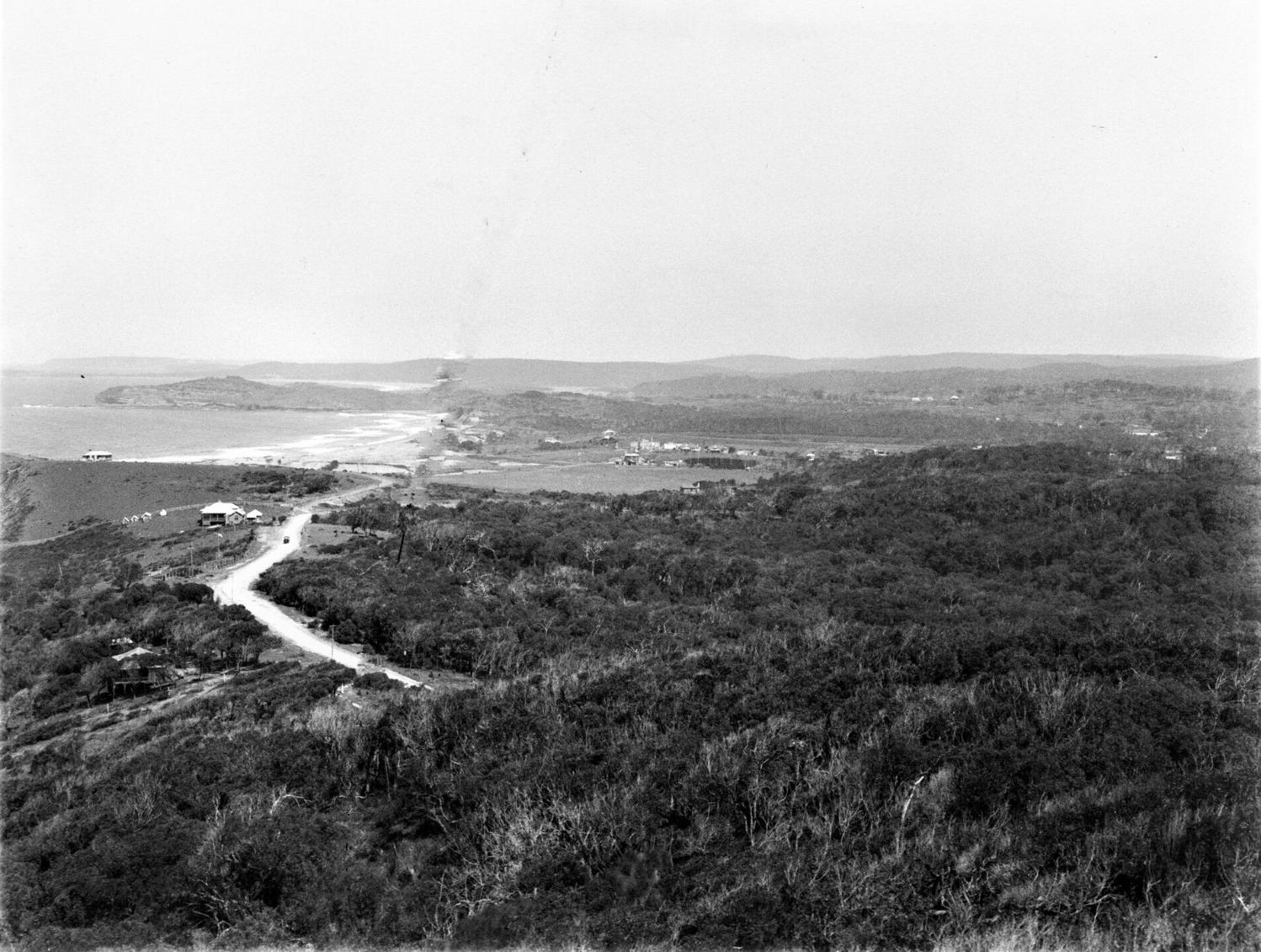
The chef and the Coffee King
On April 23rd, 1920 – Philippe Pic, Caterer, buys Lots 2 and 3 Section H – the cottages next to the Hydro and premises/blocks beside/before the cottage owned by W Scott Fell, as well as the Scott-Fell land and cottage.
Philippe Pic, according to the papers of the day, was a chef who had worked in Melbourne prior to coming to Sydney in 1911 to work at Paris House in Phillip Street, Sydney, although he didn't last long and took action, unsuccessfully, to recover wages - he had already had 20 years experience as a Head Chef by then.
Later he went into a partnership with Kabell Mockbell, a coffee and cigarette merchant, who would later state he had had to buy the property 'from five different people'. The connection between this Frenchman and Turkish man may stem from what was known in 1890, the date Kabell Mocklbell is said to have landed in Sydney, as the 'Cercle Frnacais' or French Club', where one 1933 letter states he first worked as a cook. French people in Sydney all knew each other during these decades:
STEVENSON'S OPEN LETTER.
TO THE EDITOR OF THE HERALD.
Sir,-Referring to the letter from "CM'' in your issue of the 27th inst, I may say that in the year he mentions (1890) I was a law clerk in the office of the late Marsham Elwin a'Beckett, a well-known Sydney solicitor, who was a prominent member of the Cercle Française, usually known as the "French Club," and I came in contact with many of the other members, mainly in the course of my unpleasant duty of suing on the dishonoured "bon pours" (an IO U for club services) given by those who had Gargantuan appetites disproportioned to their means of payment.
I cannot, however, recall that there was any printer among the members I knew, but Information on this point could probably be obtained from Mr. Kabell Mockbell the well-known coffee-room proprietor, who was the club's esteemed chef for many years. If not it might be worth while to search for the list of contributaries filed In the Equity Court in connection with the suit "Perpetual Trustee Company v a'Beckett and others," in which the late W H Paling's executor proceeded against the club members for recoupment of his heavy expenditure for the club's benefit. This list would probably show the occupations of all members affected.
I am. etc.,
A. J. COATES. Mosman, Dec 28 STEVENSON'S OPEN LETTER. (1933, December 29). The Sydney Morning Herald (NSW : 1842 - 1954), p. 4. Retrieved from http://nla.gov.au/nla.news-article17036116
The NSW HRLV provides Volume – Folio – 3066-144:

 Mockbell.jpg?timestamp=1660001261010)
Volume - Folio 2891-147: Emma Catherine Fell sells:

 Volume - Folio 2891-147.jpg?timestamp=1660005465851)
 Volume - Folio 2891-147.jpg?timestamp=1660005427200)
 Volume - Folio 2520-191.jpg?timestamp=1660005494119)
NSW Land Registry Services HLRV Volume - Folio 2520-191; Henri de Possel - a half share with Auguste Briquet they bought this on October 3rd, 1914 - some sources state that he and August Briquet, Electrician husband of Justine Leontine Houreaux, rebuilt the modest 4 bedroom cottage Volume-Folio 2520-12 lists the Certificate of Title for Mr. Briquet:

 Volume - Folio 2520-191.jpg?timestamp=1660106387393)
 Volume - Folio 2520-191.jpg?timestamp=1660106443402)
%20Volume%20-%20Folio%202520-191.jpg?timestamp=1660004514866)
Mockbell invested and restored the buildings he would use as premises, and kept going on what they spent here in making this a 'resort' again, although they built a brick edifice covered with cement render, rusticated, which was popular at that time.
Harry Ruskin Rowe, who has an avenue named after him at Avalon Beach, was responsible for the upgrading of the Paris House restaurant, taken over on a 17 year lease by Mr. Mockbell. Considering the upgrades and extensions that went on at La Corniche under the Mockbell years, and his connection with Arthur Rickard's wife, Harry Ruskin Rowe may have been involved involved in those Mona Vale changes as well.
You will see Arthur Rickard, who was selling the Mona Vale beach frontage lots is present, as is William Scott-Fell, who owned the cottage in line with the The Oaks - La Corniche buildings, and on Lot 1 in most plans and lithographs, is present at the reopening of Paris House after Ross and Rowe worked on it. These 1920-1923 'upgrades' of both places show thousands of pounds being spent on assets - for instance - the 40 thousand pounds spent on this upgrade equates to $3,506,458.4 US in 2022 and over $5,000,000 in Australian dollars - these are huge sums of money being poured into these venues:
NEW PARIS HOUSE
At the invitation of Ross and Rowe, the well-known city architects, about 100 guests were entertain at dinner at Paris House last night to celebrate the completion of the remodelling of the old Phillip-street restaurant. The premises have been entirely transformed on up-to-date lines for Mr. Mockbell, having spent £40,000 for that purpose.
Sir Arthur Rickard, in the absence of the Premier, presided and complimentary speeches were made by Mr. J Murdoch, MLC, Mr. J. Dooley, MLA, Mr. Scott Fell, MLA, and Mr. J Sulman. Responses were given by Sir Arthur Rickard, Mr. Mockbell and Mr. Rowe. NEW PARIS HOUSE (1923, October 11). Evening News (Sydney, NSW : 1869 - 1931), p. 9. Retrieved from http://nla.gov.au/nla.news-article119177940
This advertisement from January 1921, along with the National Library of Australia brochure held, which states the property now comprises for cottage as well as ''La Corniche'', describes the extent of the structre and grounds by then:
.jpg?timestamp=1563838434187)
Advertising (1921, January 21 - Friday). The Sun (Sydney, NSW : 1910 - 1954), p. 9 (FINAL EXTRA). Retrieved from http://nla.gov.au/nla.news-article221436292 - this the same advertisement as in the National Library of Australia Material
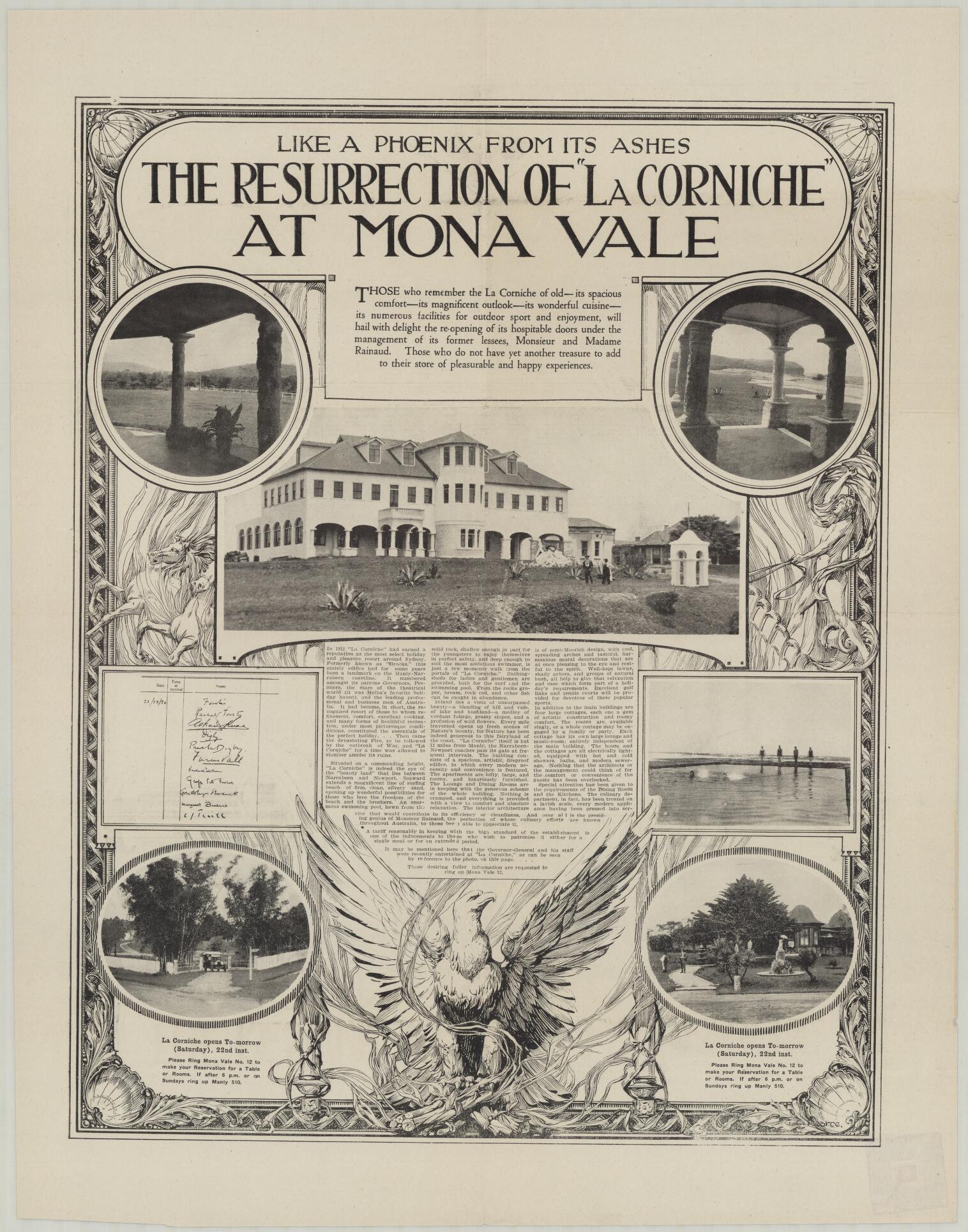
%20of%20la%20corniche%20phoenix%202.jpg?timestamp=1525925051551)
%20of%20la%20corniche%20phoenix%202.jpg?timestamp=1525925081669)

%20of%20la%20corniche%20phoenix%202.jpg?timestamp=1525925104843)

%20of%20la%20corniche%20phoenix%202.jpg?timestamp=1525925128958)
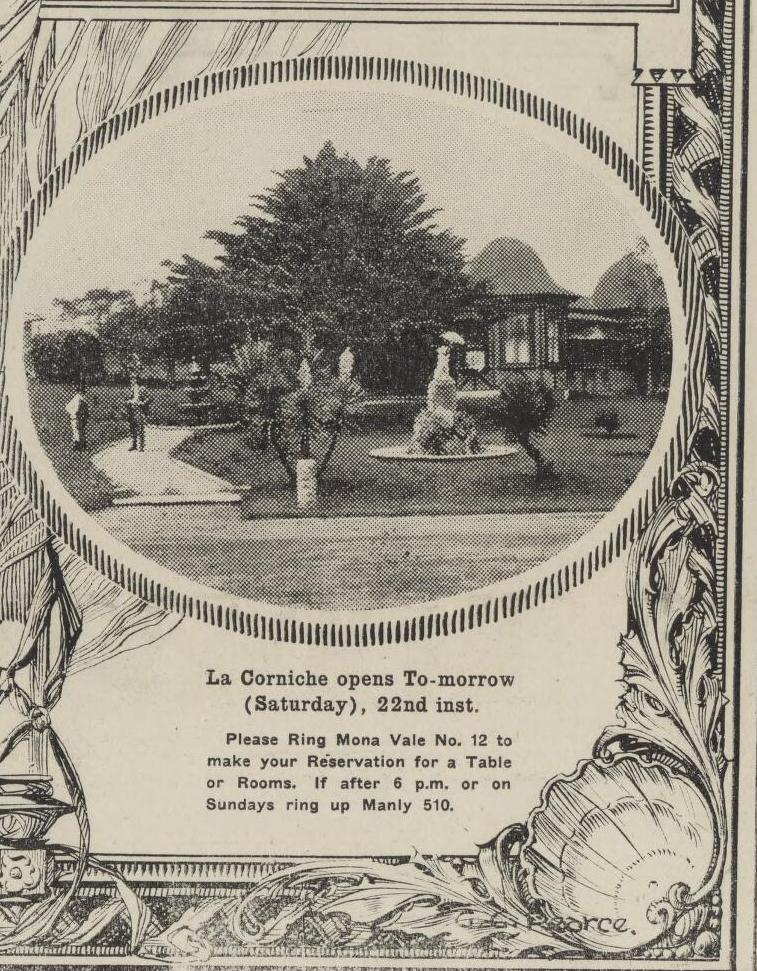
Pearce, G. C. (1920). Like a phoenix from its ashes, the resurrection of "La Corniche" at Mona Vale - and sections from to show details. Retrieved from http://nla.gov.au/nla.obj-67694921
The Rainauds are cooking and a grand reopening advertised:
Two Sydney Restaurateurs
The Rainauds, who have taken over "Brock's," on the Newport Road (Sydney), are a typical pair of French aubergistes. They get the personal touch into a restaurant. They started at "La Corniche." This was a small place on the Bayview Road, facing Lion Island, and overlooking the beautiful Pittwater reach of the Hawkesbury. They gave perfect bourgeois cooking at a reasonable price. Rainaud did the cooking and his wife attended to the business. The place got too popular. Lord Dudley was the initiator of its roubles. He and his staff took it up, and the news got abroad. It was rushed. On Sundays the long queue of cars ran into scores, and the lunch that was ordered for one o'clock was liable to be served at four. Rainaud, like Gaston Llevain, had certain specialities, and again like Gaston one of these related to chickens. Gaston's ' masterpiece was his poulet en casserole, and Rainaud's la a pilau of chicken with rice.
"Brock's" is big enough .to give scope to the energies of the Rainaud's, and at the same time small enough to admit of the retention of that personal touch which has ever been one of the secrets of their success. — Jermyn Street. GOSSIP FROM HERE, THERE, AND EVERYWHERE (1921, February 12). Smith's Weekly (Sydney, NSW : 1919 - 1950), p. 11. Retrieved from http://nla.gov.au/nla.news-article234271533
LA CORNICHE opening' dinner
La Corniche will be formally opened on Tuesday next, March 22, by a dinner at which Mr. McTiernan, the Attorney-General, will be present. A large number of guests have accepted invitations. On Easter Saturday the beautiful ballroom at La Corniche will be opened, and a dance will be given to celebrate the event. Visitors who desire to be present on. this festive occasion should book tables as early as possible.
It should be a night of nights. Delicious fare, lovely music, a fine door, and around the most delightful scenery, with the surf thundering against the rocks and beach the handy to the grounds. The list of visitors is filling up. The reputation of La Corniche is spreading. Nothing is wanting to give a sense of harmony and refinement. Comfort is always evident as the primary consideration of the management. La Corniche is 12 miles from Manly, and is within stone throw of a beautiful beach and swimming pool. The Narrabeen-Newport coach passes the gate al frequent intervals.
Those desiring to spend a pleasant week-end, or to enjoy a good lunch, tea, or dinner, after a motor drive, should not fail to reserve a table. Special attrition is being paid to the comfort of Easter visitors. In order to reserve accommodation, do not fail to write at once. Address, H. RAINAUD, La Corniche, Mona Vale, or telephone, Manly 510.— Advt. Advertising (1921, March 20). Sunday Times (Sydney, NSW : 1895 - 1930), p. 21. Retrieved from http://nla.gov.au/nla.news-article123235814
Further advertisements provide insights into what is now on the grounds as more is added, while a great album digitised by the State Library of NSW of Broadhurst postcards show what the premises looked like after this rebuild:
Cookery and Newport Rainaud's
Your comments about the Rainaud's seaside restaurant are a reminder of the culinary annals of the Newport Road. From the beginning the road has been noted for its meals. The pioneer in such matters was Leon Houreux, the tall, bewhiskered, top-booted Frenchman, who ran the "Rock-lily." That was ages before the days of cars, and Leon used to carry his customers in a lumbering coach, which was driven by himself, and drawn by a "unicorn" team—a pair of horses and one in the lead. Many famous men were patrons of the place. Long before it passed out, "La Corniche" was firmly established. The road is as notable for its English cookery as it is for its French. "Greig's" is run by Barry, who during the war was put in charge of the army canteens. At "Greig's", he produces a meal of the sort which is known in England as the "Market Ordinary"—huge joints and fishes, and oysters, and sucking pig, and so on. Washed down with cold beer, there are few better sorts of repast in the world.—"Guil." GOSSIP FROM HERE, THERE, AND EVERYWHERE (1921, March 5). Smith's Weekly (Sydney, NSW : 1919 - 1950), p. 11. Retrieved from http://nla.gov.au/nla.news-article234268012
LA CORNICHE
Opening of Ballroom
On Easter Saturday the beautiful ballroom at La Corniche will be opened, and a dance will be given to celebrate the event. Visitors who desire to be present on this festive occasion should book tables as early as possible. It should be a flight of nights. Delicious fare, lovely music, a fine floor, and around the most delightful scenery, with the surf thundering against the rocks and beach so handy to the grounds. The list of visitors is filling up. The reputation of La Corniche is spreading. The accommodation is of the best. The bedrooms are large and spacious, and with unusual quaintness each has been furnished in a separate style. Nothing is wanting to give a sense of harmony and refinement. Comfort is always evident as the primary consideration of the management La Corniche is 12 miles from Manly, and is within stone throw of a beautiful beach and swimming pool. The Narrabeen-Newport coach passes the gate at frequent intervals. Those desiring to spend a pleasant week-end, or to enjoy a good lunch, tea, or dinner, after a motor drive, should not fail to reserve a table. Special attention is being paid to the comfort of Easter visitors. In order to reserve accommodation, do not fail to write at once. Address, H. RAINAUD. La Corniche, Mona Vale, or telephone, Manly. 510.— Advt. Advertising (1921, March 13). Sunday Times (Sydney, NSW : 1895 - 1930), p. 6. Retrieved from http://nla.gov.au/nla.news-article123243668
Among the many enjoying the delights of La Corniche. Mona Vale, are Mr., and Mrs. Charles Jaques, Mr. and Mrs. J. O.- Keep, Mr. and Mrs. Kryder, and Mr. and Mrs. A. H. North (Leura). No title (1921, March 27). Sunday Times (Sydney, NSW : 1895 - 1930), p. 20. Retrieved from http://nla.gov.au/nla.news-article123241900
HOTEL WANTED.
MONA VALE PETITION
At the Water Police court yesterday a special sitting of the licensing Court considered a petition by certain residents of Mona Vale that a publican's license be granted to Mons. Rainaud, of La Corniche, Bayview. Mr. Adrais S.M., presided.
The petition bore the signatures of the majority of the adult residents of the locality, and the petition also set out that these had increased from 175 In January 1918 to 220 at present.
Mr. Windeyer, K.C., and Mr Jaques (instructed by Williamson and son) appeared for the petitioners and Mr. Rainaud, and Mr. Kidston (instructed by the Crown Law Office), for the Crown. Mr. Bathgate (instructed by Perkins and Stevenson) for Mr. C. C, Bacon, an objector; Mr.-Murray, for Mrs. Grieg of the Newport Hotel, objector; and Mr. Clegg for other objectors.
Mr. Windeyer explained that evidence would be submitted by those competent to judge that there should be in this locality an hotel of the character which Mr. Rainaud proposed to erect at Mona Vale. This place was one of the most beautiful and attractive resorts in the State, and with a first-class hotel established there, it would soon become the premier watering place of New South Wales. The application was based on the fact that within that in the district there was no hotel within a radius of one mile, but primarily because it was desired to convert into a first-class tourist resort.
Considerable evidence having been given in favour of the petition, the case was until to-day. HOTEL WANTED. (1921, August 25). The Sydney Morning Herald (NSW : 1842 - 1954), p. 4. Retrieved from http://nla.gov.au/nla.news-article15953812
"LA CORNICHE," MONA VALE Charmingly situated 10 miles by tram and motor 'bus from Manly, on an eminence overlooking splendid and sate surfing beaches, ending in delightful rooky pools, idolised by children, "La Corniche" makes an ideal spot for a day, or a week-end, a week or month's holiday. The fame of its high-class French cooking has spread wherever "cuisine" is discussed, while with memories of its surfing, the girls and boys are never tired of talking about the nightly dances in the ball-room, the tennis, billiards, and fishing. The hotel has been luxuriously furnished in the brightest and most modern style with every possible convenience, hot and cold water, electric light, and modern sewerage. Besides, one of the delightful little cottages can be engaged for a family or party, and each cottage has its own lounge and music-room. Hotel Tariff.— 11/1/- per day. Special rates for longer periods on application. All meals from 6/6. Afternoon teas from 2/-. Refreshments any hour. Special luncheons or dinners to order at short notice. Correspondence invited. 'Phone Manly 610M for further particulars. Advertising (1921, October 30). The Sun (Sydney, NSW : 1910 - 1954), p. 1. Retrieved from http://nla.gov.au/nla.news-article223487554
The Comfort of "La Corniche"
Even the depression of a wet weekend cannot kill the spirit of gaiety at "La Corniche," Mona Vale. The atmosphere of the place Is contagiously joyful; the laughter of birds, perfume of flowers, sweet odors, from the bush-land and the salt tang from the singing surf on the beach at the foot of the hill amalgamate to give delight to the senses and to make a holiday restfully enjoyable.
The so-favored "La Corniche" Is only 10 miles from Manly. It has the best position on the southern coast. From its commanding hill the whole vista of coastline and hills, the beauty of Mona Vale, and the little, flower-filled valleys may be seen. So much for the aesthetic. But at "La Corniche" material comforts are provided. The fame of the French cuisine has already spread beyond Sydney, and people In country districts are arranging for accommodation for the Christmas Holidays. Tastefully furnished rooms, nightly dances, billiards, tennis, fishing, and surf are inducements which also attract.
For family parties who prefer to keep a measure of seclusion, luxuriously furnished cottages are provided, so that the atmosphere of Home may be retained, with Improvements. Thus each week "La, Corniche" charms acquaintances into friends who propagate her multiple attractions. If you desire to enter into this communism of friendship, 'phone Manly 510M., where fuller particulars can be obtained. Special tariff rates may be arranged for guests who desire to stay for long periods. The cuisine is at the disposal of all, If special luncheons or dinners are desired. For ordinary meals, 6/6 is charged, while refreshments are always available, and dainty afternoon teas are served from 2/. Advertising (1921, November 13). The Sun (Sydney, NSW : 1910 - 1954), p. 7. Retrieved from http://nla.gov.au/nla.news-article223485890
SUMMER AT LA CORNICHE
Now that the summer appears definitely to have arrived, the steady flow of visitors to "La Corniche," at Mona Vale, is Increasing. To greet them, they find the gardens which surround the popular resort a riot of color and perfume intermingled with the soft green of the lawns. The tennis courts, well-guarded from the weather during the winter months, are in beautiful condition. Below the hill on which "La Corniche" stands, the surf 'on the gently sloping beach invites coolly, while the soft shades and shadow of verandahs and alcoves Is a welcome retreat from the warmth of the sun. Only a chef who had learnt his art In the Valley of the Rhone, in the Riviera, and at Chamonix, could supply the dainty fare which makes the cuisine at "La Corniche" famous. For every day and change of weather there is an eminently suitable menu, prepared by expert hands, and served in a manner and in surroundings which enhance its quality. Particulars of "La Corniche" may be obtained by 'phoning Manly 510M. The tariff is arranged to suit the period which the guests desire; for those who can merely steal one day to spend in idyllic surroundings, the rate is £1 1s per day. Refreshments are always available for passing motoring parties and afternoon teas are prepared at short notice. The whole skill of the chef is available for those who require special luncheons and dinners. Advertising (1921, November 20). The Sun (Sydney, NSW : 1910 - 1954), p. 11. Retrieved from http://nla.gov.au/nla.news-article223488232
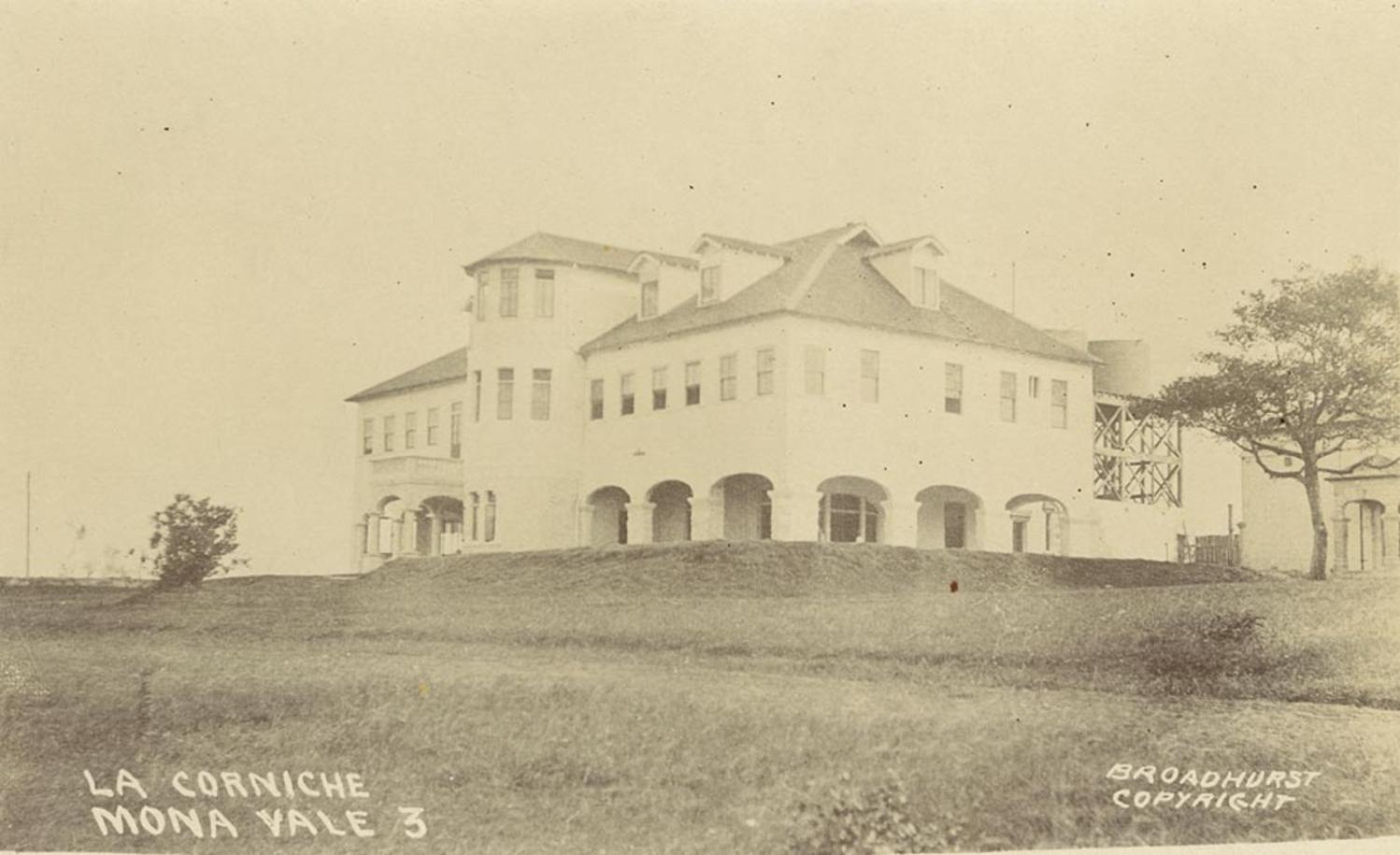
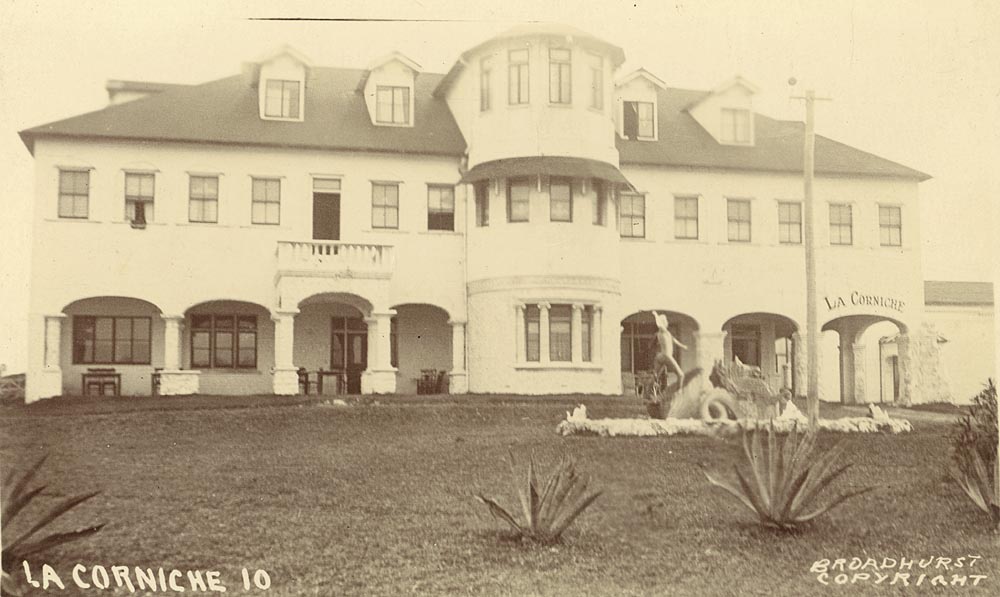
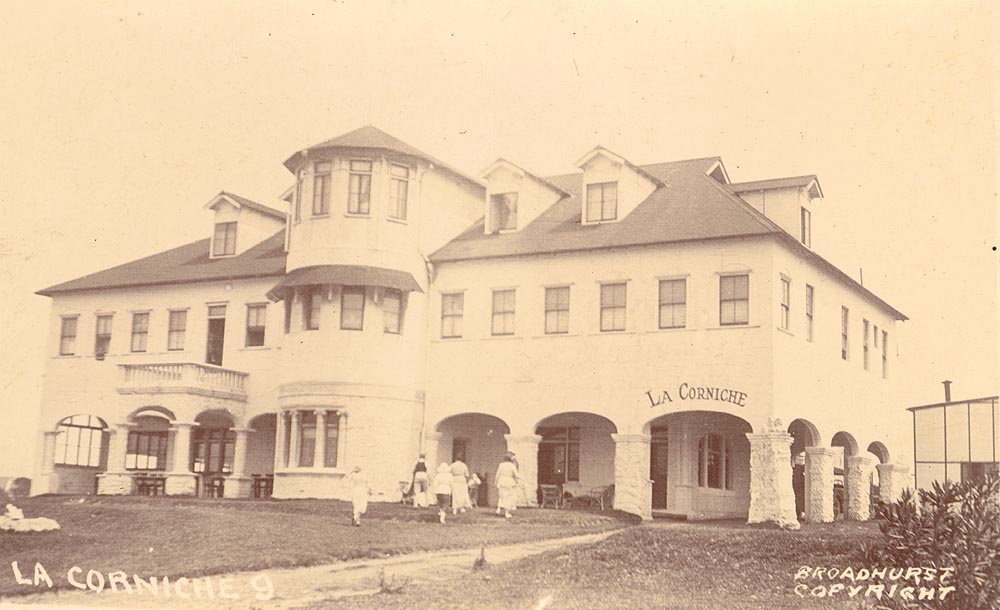
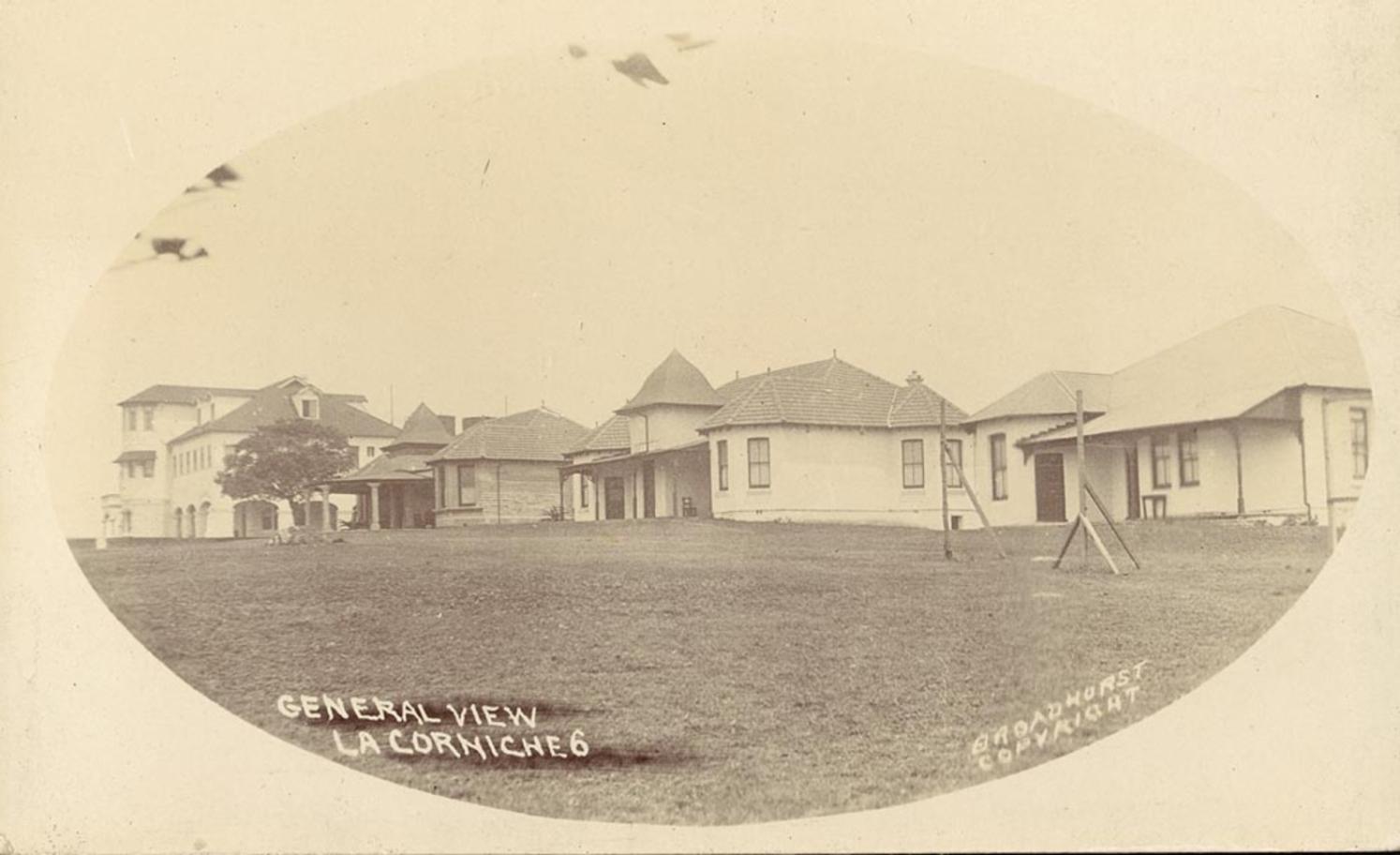
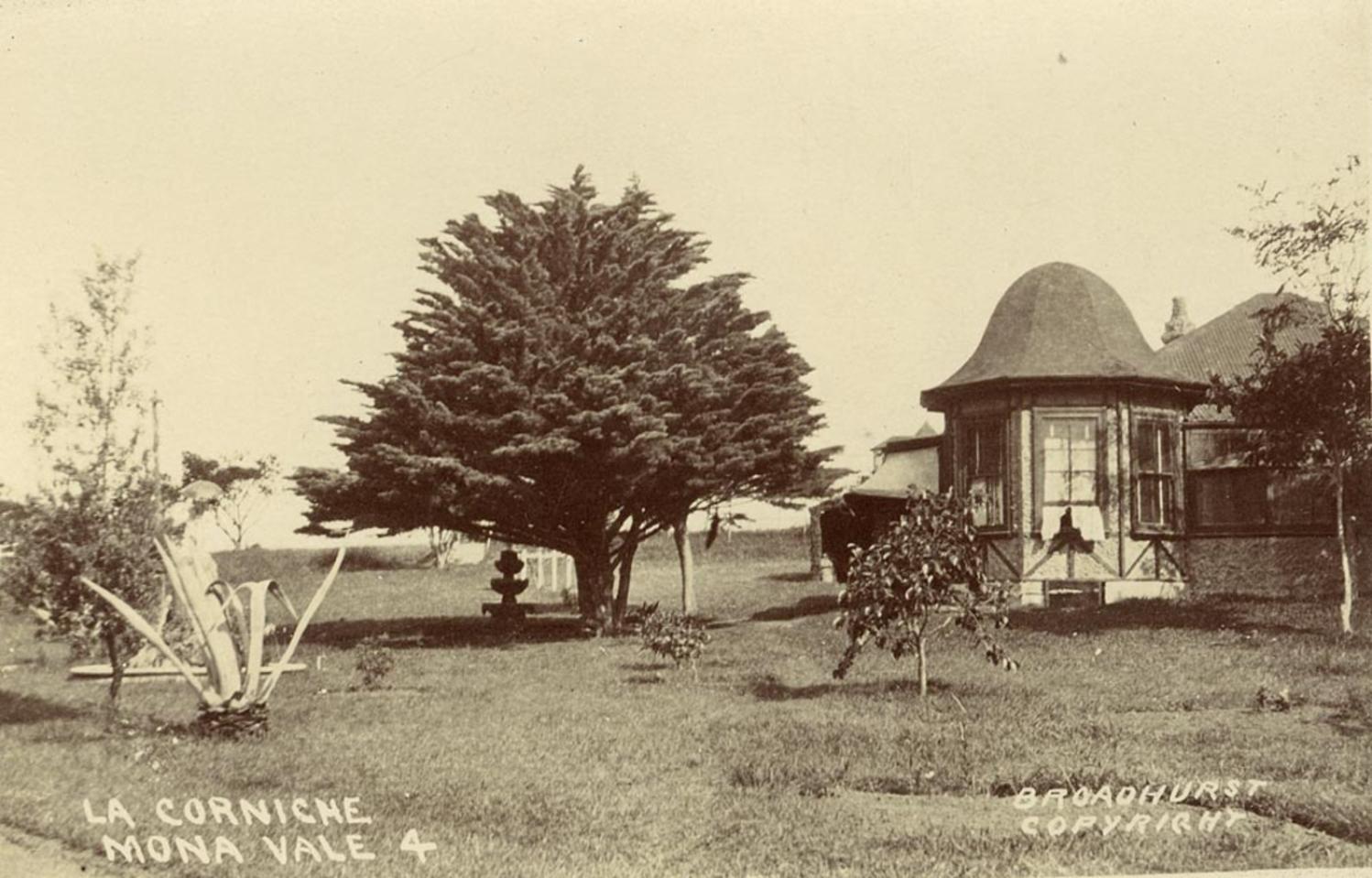
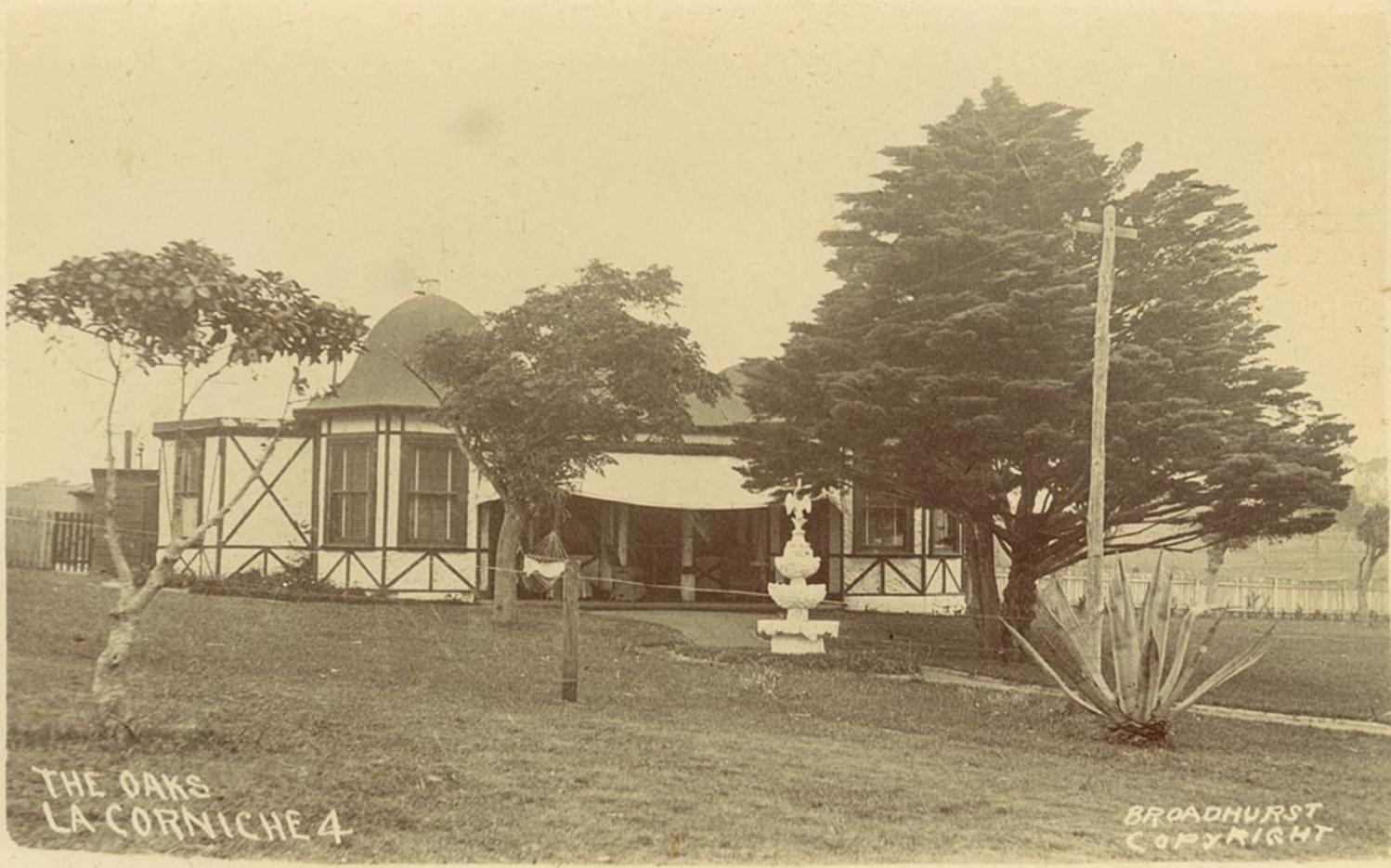
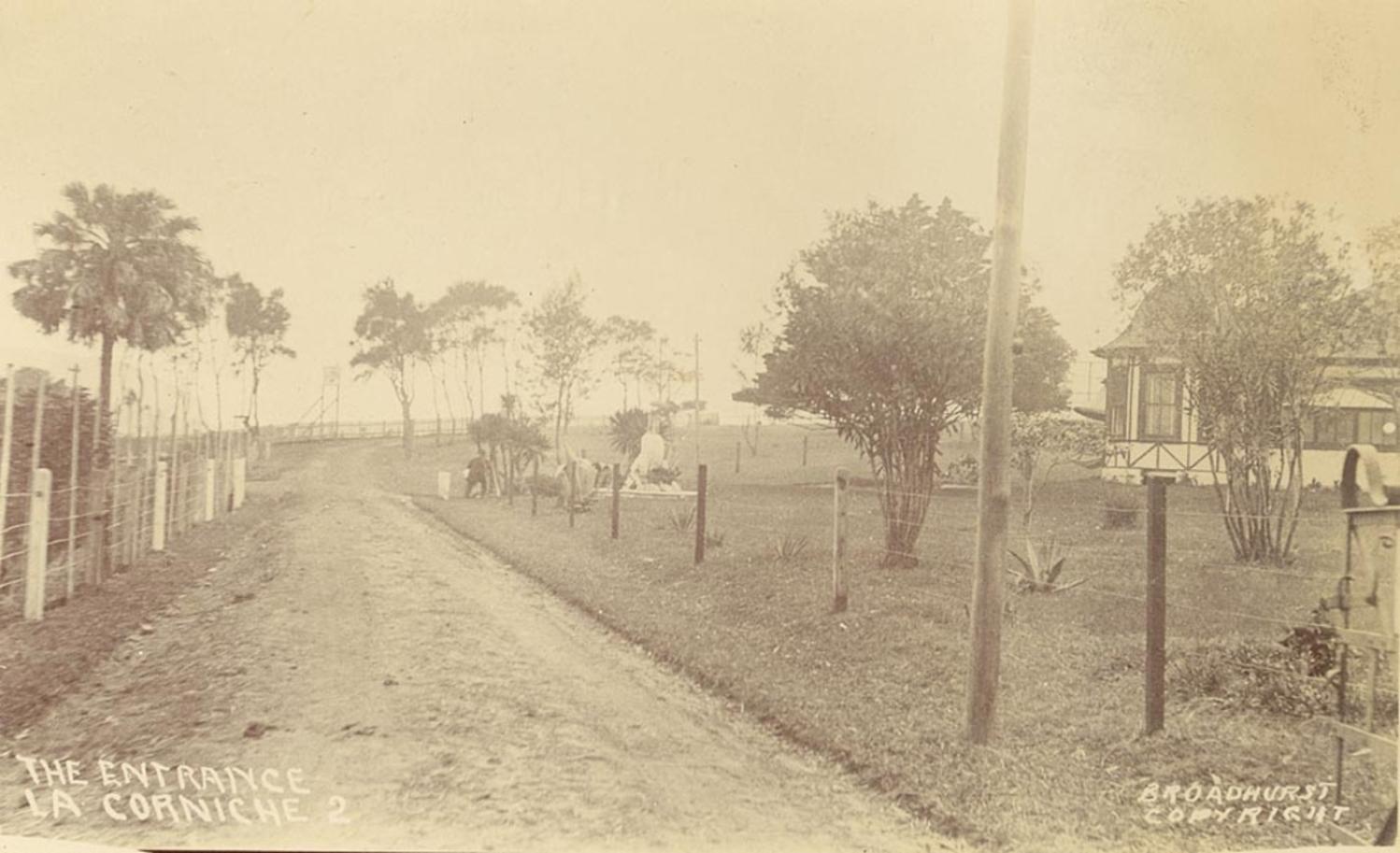
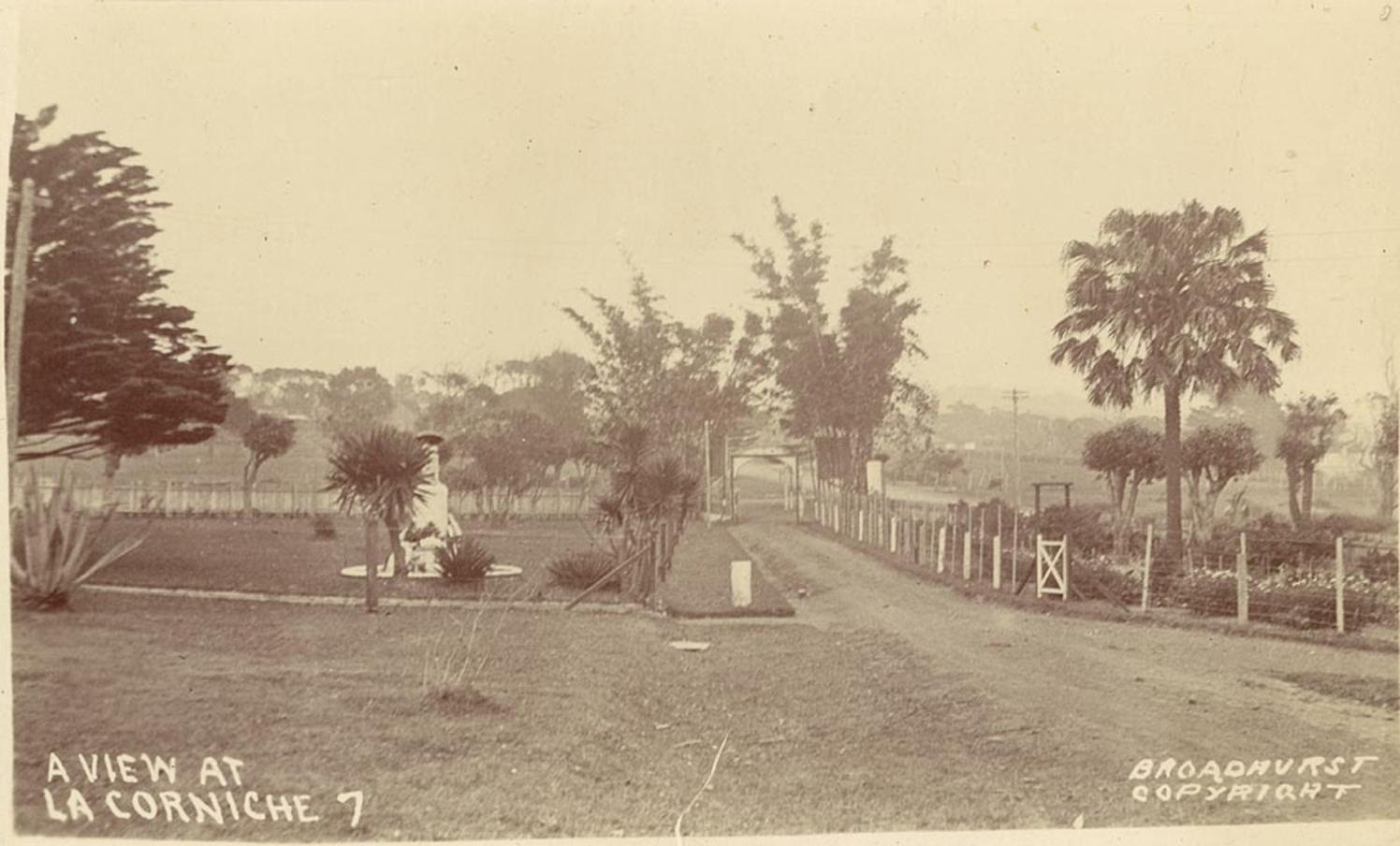
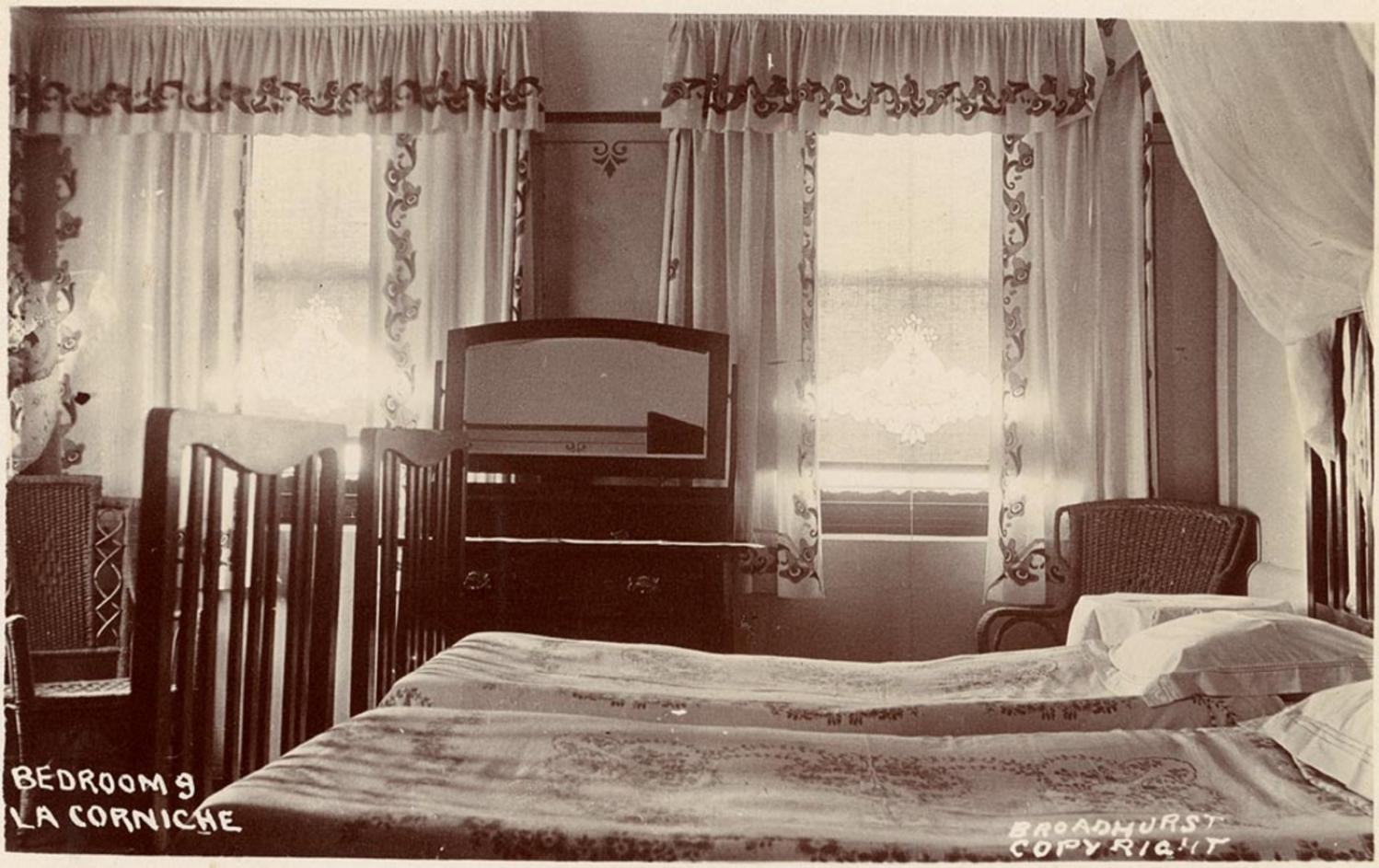
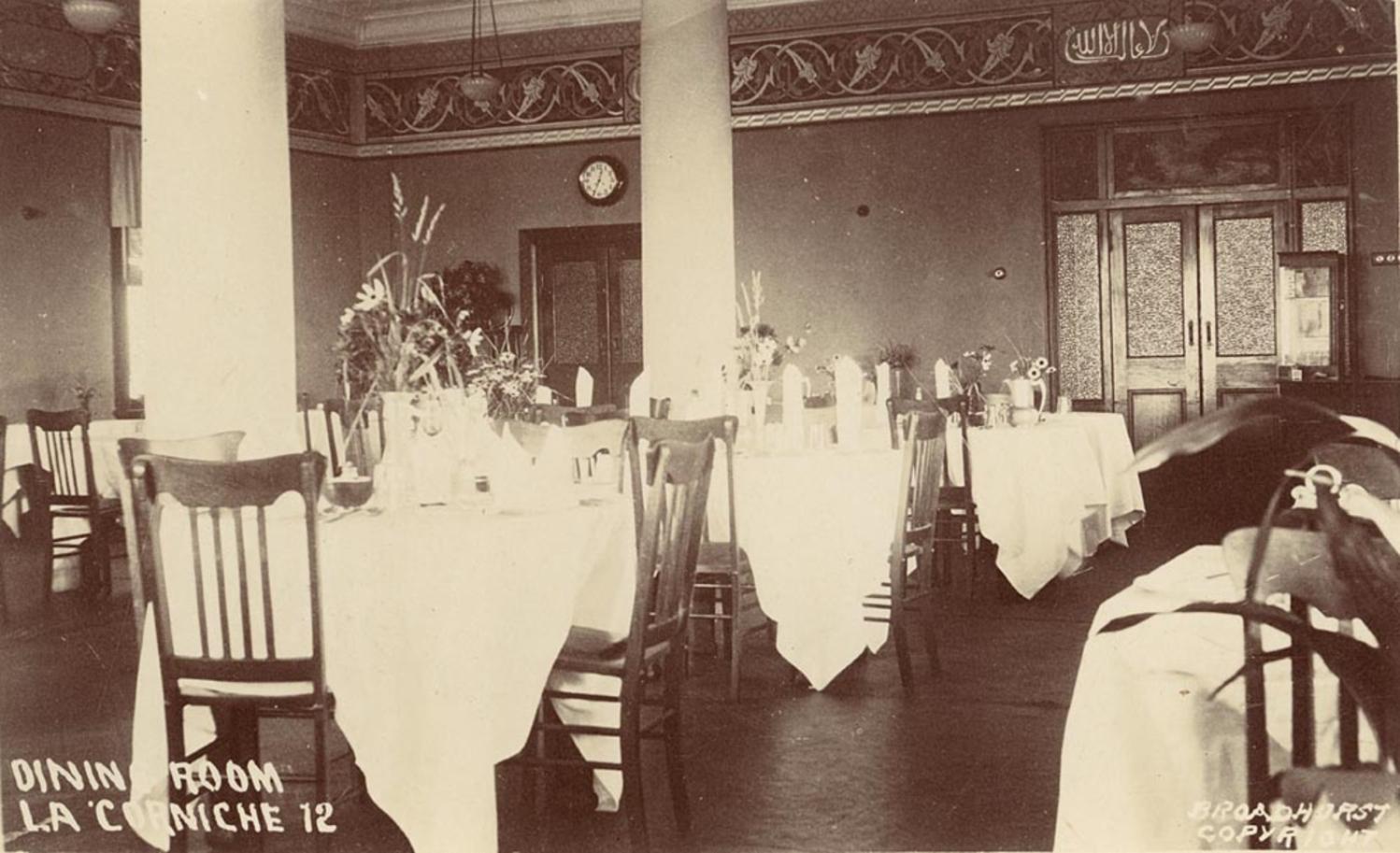
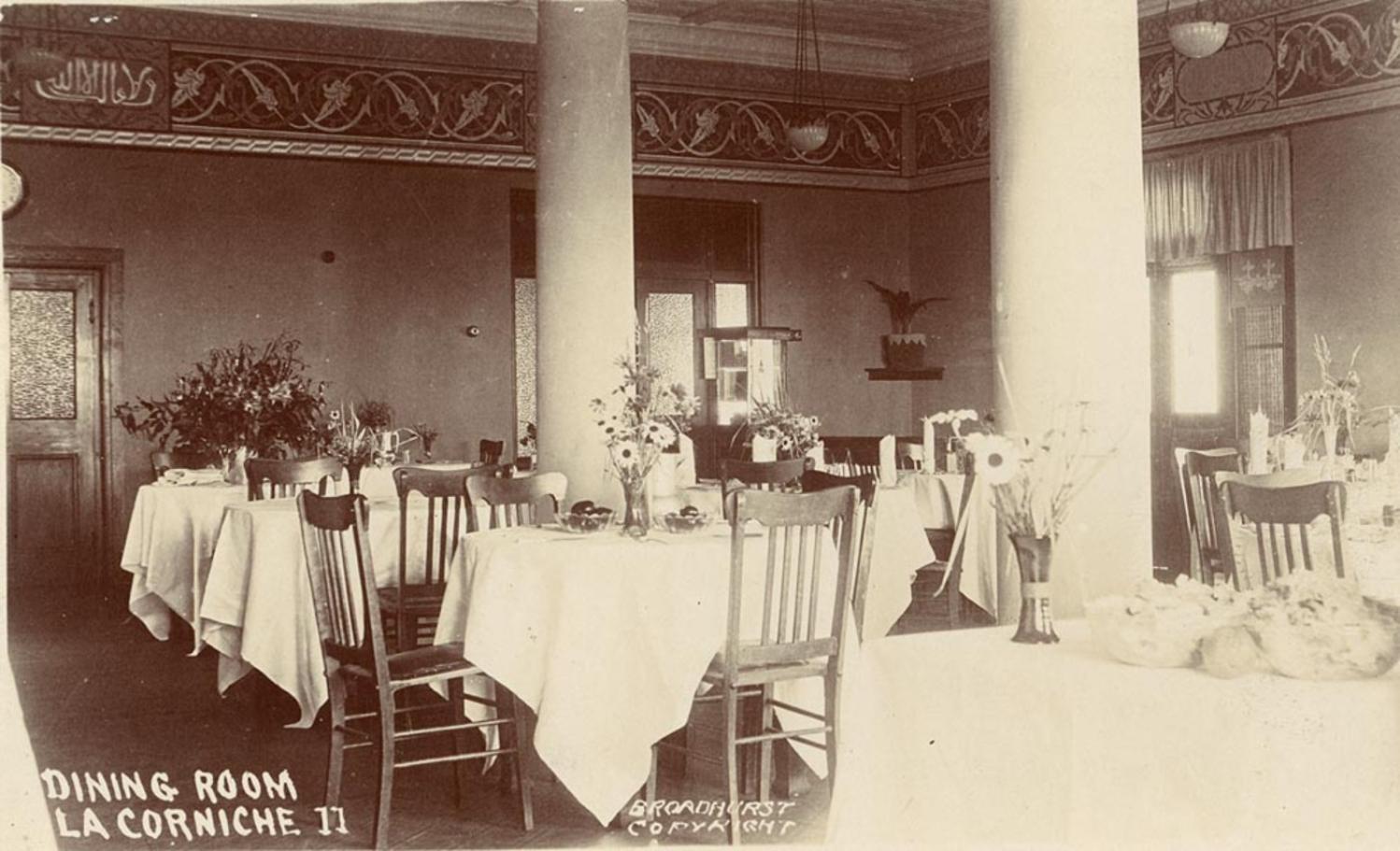
Kabell Mockbell had bought these 'La Corniche' lots and acres on May 25th 1923. A year later the partnership between himself, Philip Walker and Philippe Pic is dissolved.
%20Mockbell.jpg?timestamp=1660001546111)
%20Mockbell.jpg?timestamp=1660001616755)
%20Mockbell.jpg?timestamp=1660001680584)
%20Mockbell.jpg?timestamp=1660001489391)
%20Mockbell.jpg?timestamp=1660001731701)
NOTICE OF DISSOLUTION OF PARTNERSHIP.
NOTICE is hereby given that the partnerships heretofore subsisting between Kabel Mockbell, Philippe Pic, and Philip Dudleigh Walker, carrying on business at Paris House, Phillip-street, Sydney, and La Corniche, at Mona Vale, near Manly, have been dissolved by mutual consent, as from the twenty-second day of February, 1924. The said businesses will in future be Carried on by the said Kabel Mockbell in his own name, and all debts due to and owing by the late firm will be received and paid respectively by the said Kabel Mockbell, who will continue to carry on the said businesses.
Dated this 29th day of February, 1924.
P. D. WALKER
Witness to signature of Philip Dudleigh Walker,—
Jakes Linton.
Solicitor, Sydney.
K. MOCKBELL.
Witness to signature of Kabel Mockbell,—
Thomas Magnet.
Solicitor, Sydney.
3683 - 12s. NOTICE OF DISSOLUTION OF PARTNERSHIP. (1924, March 14). Government Gazette of the State of New South Wales (Sydney, NSW : 1901 - 2001), p. 1595. Retrieved from http://nla.gov.au/nla.news-article224630207
With the leaving of Philippe Pic the Rainauds also went back to Bayview, and later to Narrabeen, his wife Hedwig eventually passing away while living with Ken 'Sava' Lloyd's family:
AT LA CORNICHE
CHUCKS' RIVAL
Name on Bottle
The Chuck brothers are not the only members of the police force who enjoy motor rides with ladies, champagne, and costly dinners at exclusive restaurants.
They have a rival In Constable Charles Seymour Lee, of water police, who was the chief witness in a case of sly grog-selling at the Manly Court today, when John Andrew O'Shea, proprietor of La Corniche, at Mona Vale, and Alexander Henderson, waiter, were charged with having sold liquor without a license. Constable Lee said that, with a Miss Brown, he motored down to La Corniche, and ordered dinner for two. Later he asked Henderson if he could have some wine, Henderson referred him to the proprietor, Mr. O'Shea. The latter said: 'You should have ordered your drink In advance.' Lee replied that he did not know that that was necessary.
By Mr. Niland: You have told a few lies already. Try and think of some more.
Witness said that he had not given the name of Wilson at La Corniche. He did not give It because Mr. Wilson was a wall-known customer. He could not account for the name of Wilson being on the bottle he ordered. It was quite by chance that he gave his name as Wilson. Constable Fleming gave evidence he having found a quantity of liquor at La Corniche. Several of the bottles were marked 'Wilson.' (Proceeding.) AT LA CORNICHE (1924, May 8). Evening News (Sydney, NSW : 1869 - 1931), p. 9. Retrieved from http://nla.gov.au/nla.news-article119209167
Royal Automobile Club
News and Notes THE OPENING RUN
The opening run of the Royal Automobile Club of Australia was held on Saturday afternoon, February 6, to "La Corniche," Mona Vale. The outing was one of the most successful yet held by the club, the array of cars parked on the spacious lawns of "La Corniche' demonstrating the popularity of these outings, both from a motoring and social point of view. Some 250 members, wives, families, and friends made the run, and were entertained by the R.A.C.A. at afternoon tea and dancing. Many remained over dinner, and carried on the festivities until a late hour. The Manly Band was in attendance, and dispensed Appropriate music for the occasion. Royal Automobile Club (1926, February 13). The Daily Telegraph (Sydney, NSW : 1883 - 1930), p. 14. Retrieved from http://nla.gov.au/nla.news-article245854506
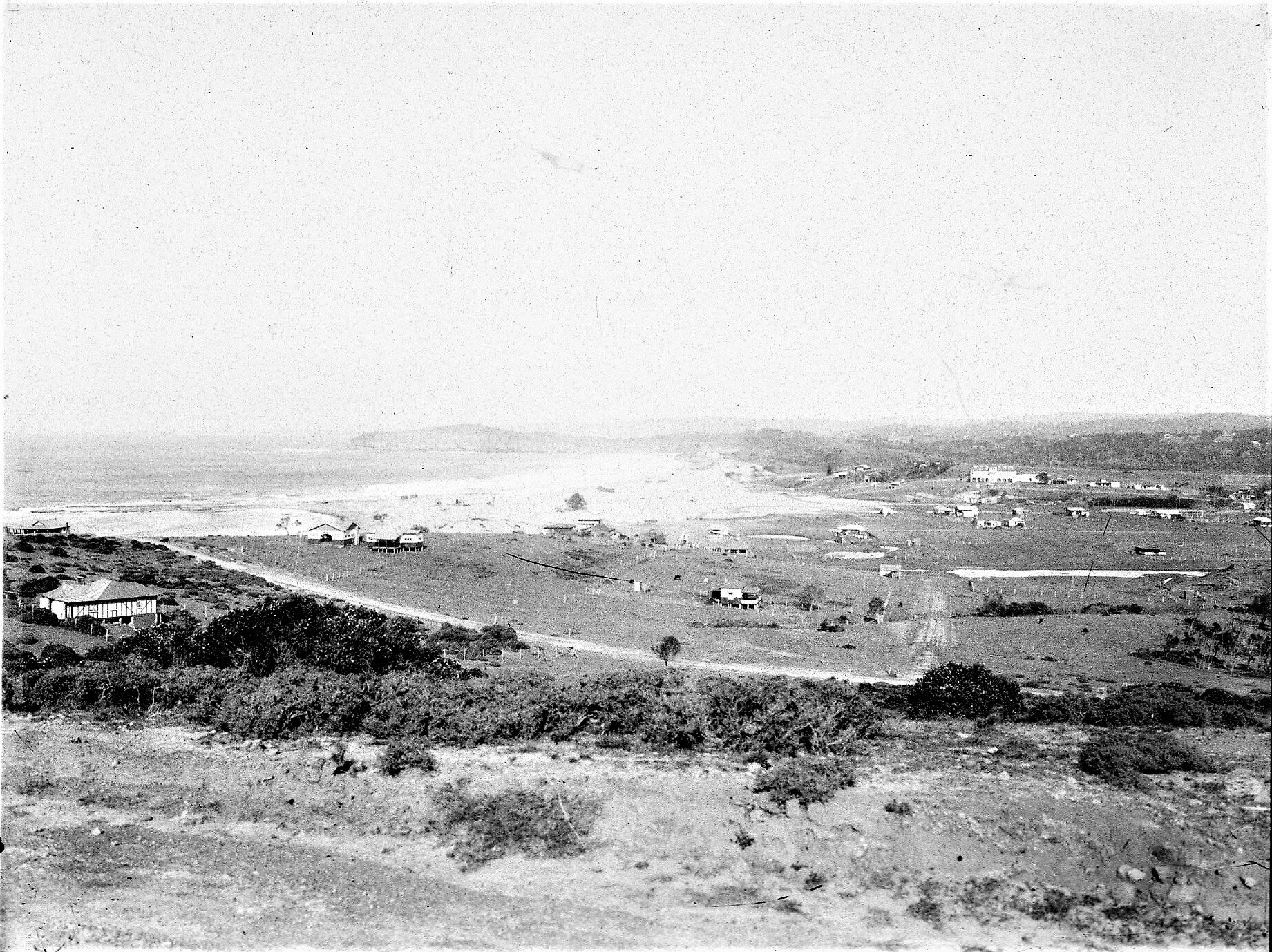
Mona Vale Views: 01-01-1925 to 31-12-1925, courtesy NSW Archives and Records. Item: FL4901050
Kabell Mockbell was a gentleman who was quietly known for his generosity and as one of the first coffee merchants in Sydney. He began in the Imperial Arcade in Sydney and by August 1894 he was advertising real pure mocha coffee 'as supplied to the best restaurants in Paris' according to what was run in the August 1st edition of the Sydney Morning Herald. Here a partner, Thabet Suby 'Mockbell', would later dissolve the partnership and go into competition with him when Mr. Mockbell went into voluntary bankruptcy - interestingly, the only 'Mockbell' that shows up in Australian Shipping lists is a 27 year old 'Mockbell', no first name given, born 1885, was aged 27 when alighting there on the 24th of August 1912 on his way to Western Australia. This was Thabet Suby, who enlisted from that state in 1915. Thabet, according to his WWI enlistment papers, was born in Bombay. Biographers who have researched his story state 'Mockbell' was added on and he was no blood relation to Kabell.
The surname 'Mokbel' is of Egyptian origin, although today people bearing this surname are mostly found in England and Australia. One Australian tells us the surname is of Arabic origin and has a meaning of 'future'. This item, which turns up in an Adelaide paper of Kabell Mockbell, also refers to Arabic origins. In 1904, when Kabell Mockbell applies for a Naturalisation Certificate, unsuccessfully, he lists his age as 44 and states he has lived in Australia for 21 years, coming here from Marseilles, although he was born in Yemen, around 1859:
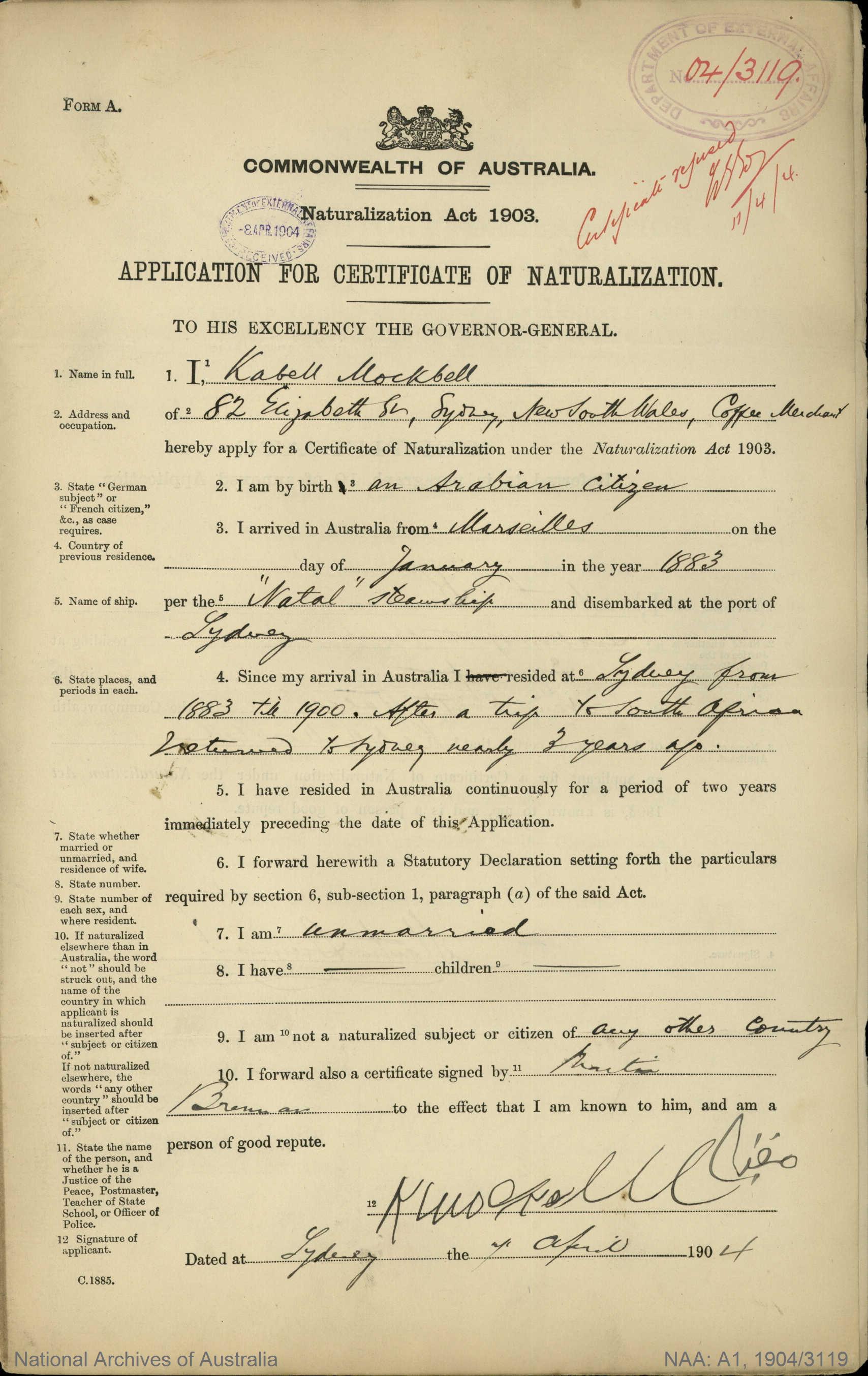
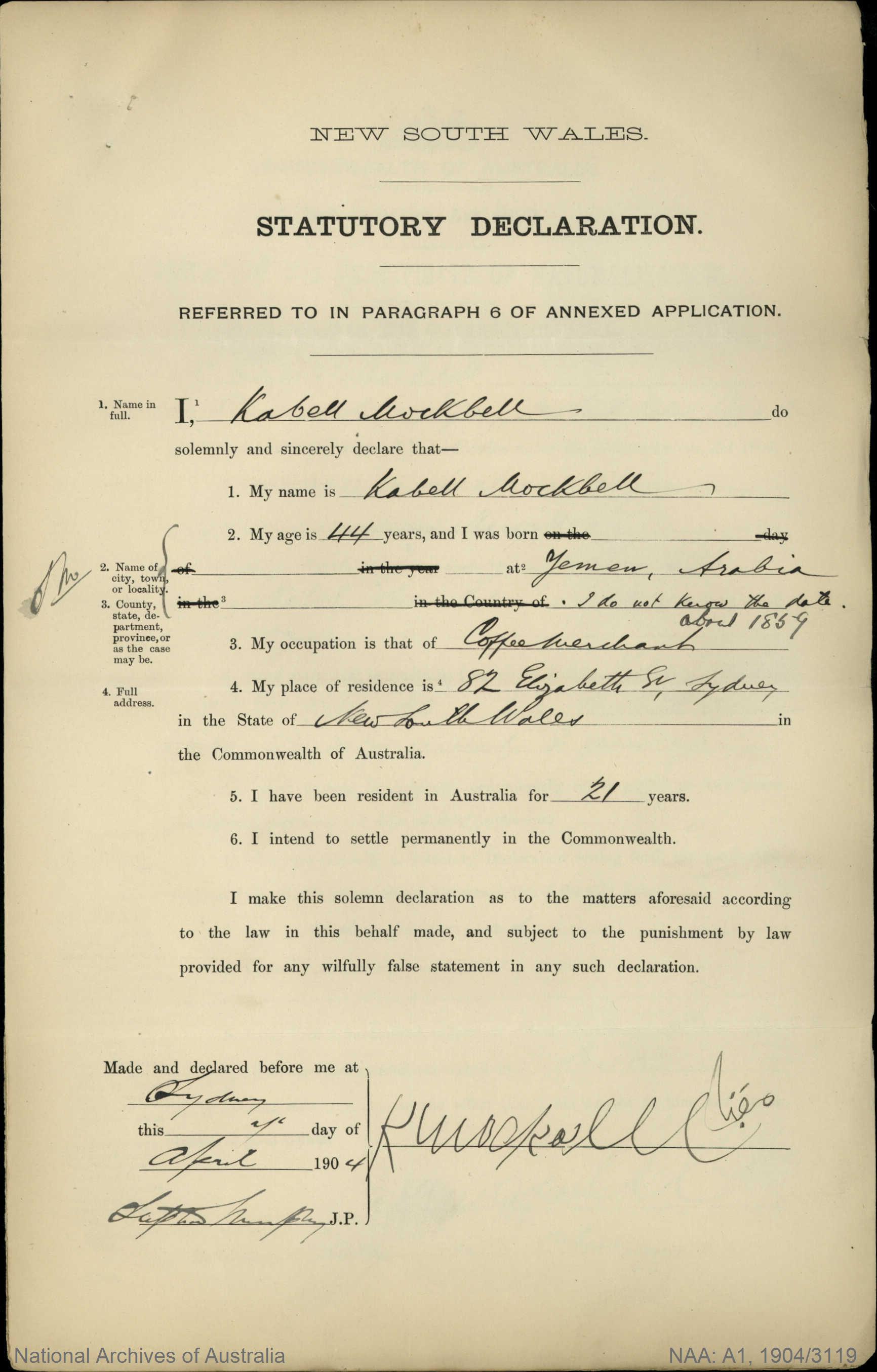
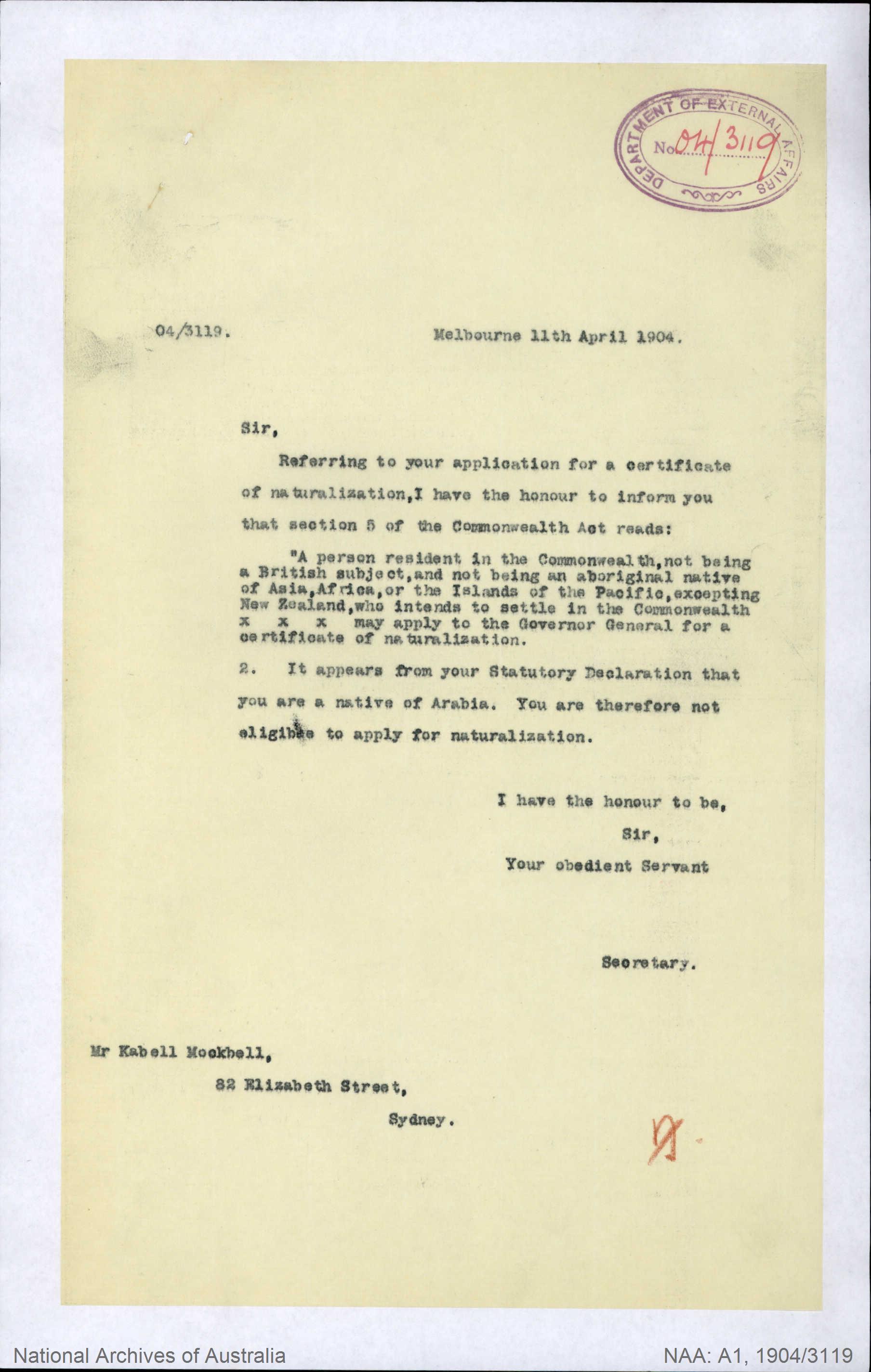
Mr. K. Mockbell
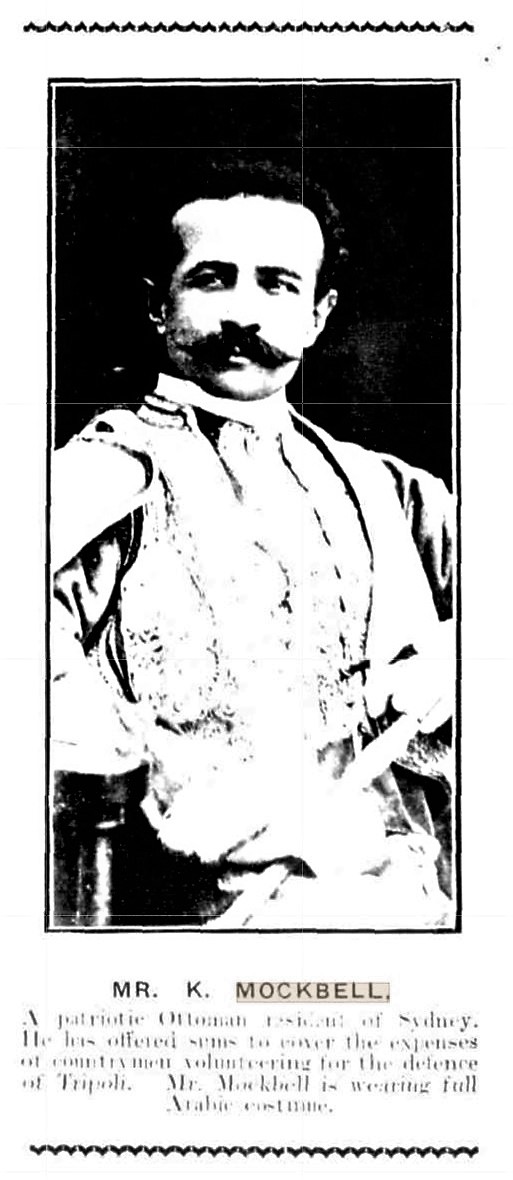
A patriotic Ottoman resident of Sydney. He has offered sums to cover the expenses of countrymen volunteering for the defence of Tripoli. Mr. Mockbell is wearing full Arabic costume. No title (1911, December 2). Observer (Adelaide, SA : 1905 - 1931), p. 30. Retrieved from http://nla.gov.au/nla.news-article164740138
His place of birth was also used against him - especially during World War One, but he had by then, through various acts of charity and having established himself, acquired a good reputation:
KABELL MOCKBELL'S STATUS.
QUESTION OF ALIEN ENEMY.
Mr. W. M. Daley, who appeared for Frank Graham, poulterer, and J. F. Keene and Co., of Municipal Buildings, Ultimo-road, today made an application to Mr. Justice Street, in the Bankruptcy Court, to set aside a bankruptcy notice, issued by Kabell Mockbell, of Hosking-place, Sydney, in respect of £156 12s 11d, taxed costs, arising out of an unsuccessful Supreme Court action, brought by Graham and Keene against Mockbell, in connection with the supply of poultry to the Ritz Cafe.
Mr. Curlewis (instructed by Mr. F. C. Petrie), appeared for Kabell Mockbell, to oppose.
An affidavit, on behalf of the applicant, was read, in which it was alleged that Mockbell was an alien enemy, and, consequently, had no legal status.
Mr. Curlewis quoted a number of authorities to combat the contention raised, and said that the test of an alien enemy was not his nationality, but his domicile. Mr. Daley asked leave to withdraw the application, but submitted that it should not be dismissed. This Mr. Curlewis opposed, and said that the application was not made bona fide, and was for the purpose of delay.
His Honor said he would not accede to Mr. Daley's application for withdrawal, but would dismiss it, with costs. KABELL MOCKBELL'S STATUS. (1915, May 4). The Sun (Sydney, NSW : 1910 - 1954), p. 3 (FINAL EXTRA). Retrieved from http://nla.gov.au/nla.news-article229334286
In 1914 and until 1926 he applied again to become a citizen of Australia, this time listing his birth date and year and that he was born at Stamboul, Constantinople, Turkey. A 1914 letter indicates where he obtained the above uniform, stating he served as a cadet under Lord Cromer.
Evelyn Baring, 1st Earl of Cromer, GCB, OM, GCMG, KCSI, CIE, PC, FRS (February 26, 1841 – January 29, 1917) was a British statesman, diplomat and colonial administrator. He served as the British controller-general in Egypt during 1879, part of the international control which oversaw Egyptian finances after the Egyptian bankruptcy of 1876. He later became the agent and consul-general in Egypt from 1883 to 1907 during the British occupation, prompted by the Urabi revolt. :
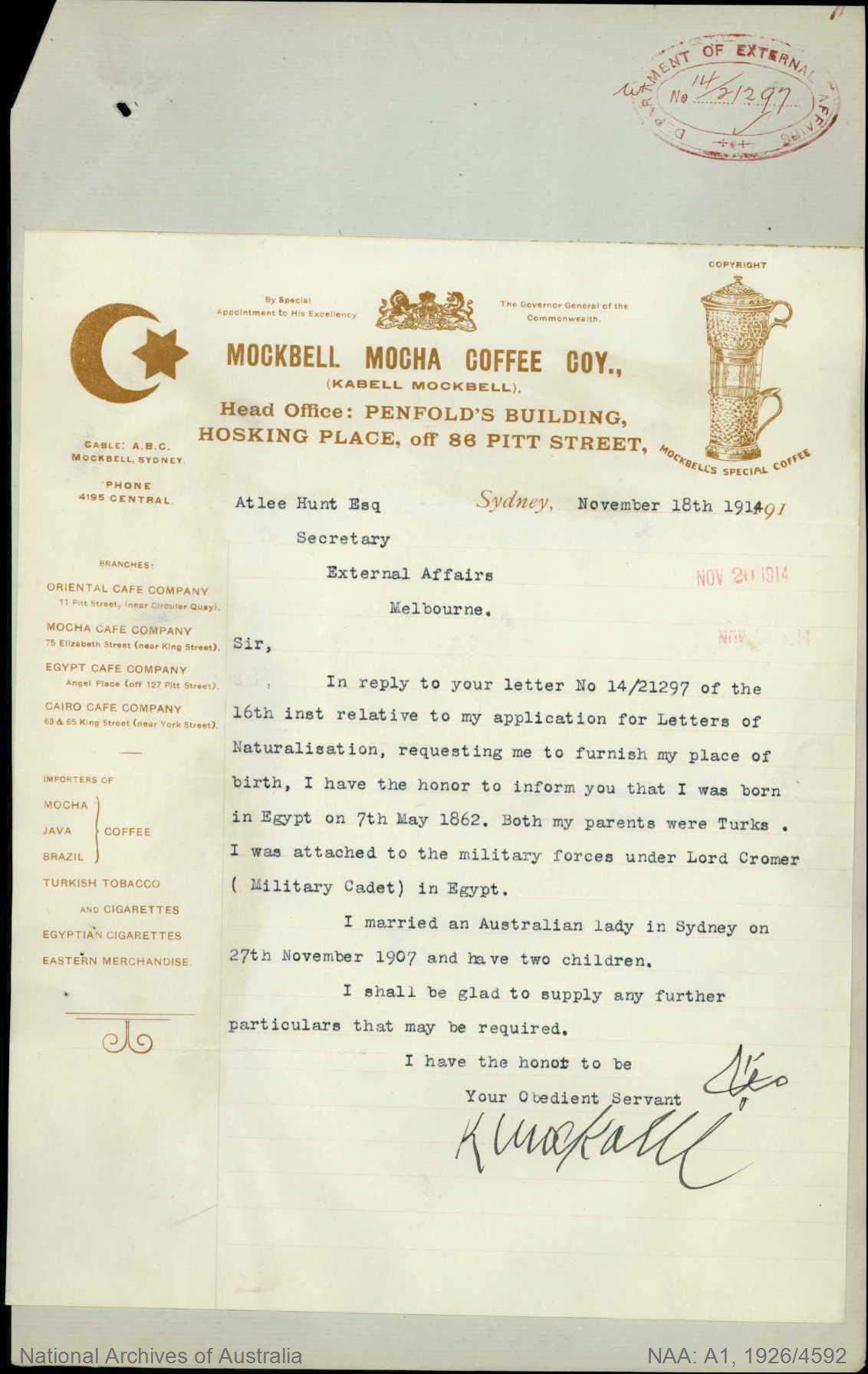
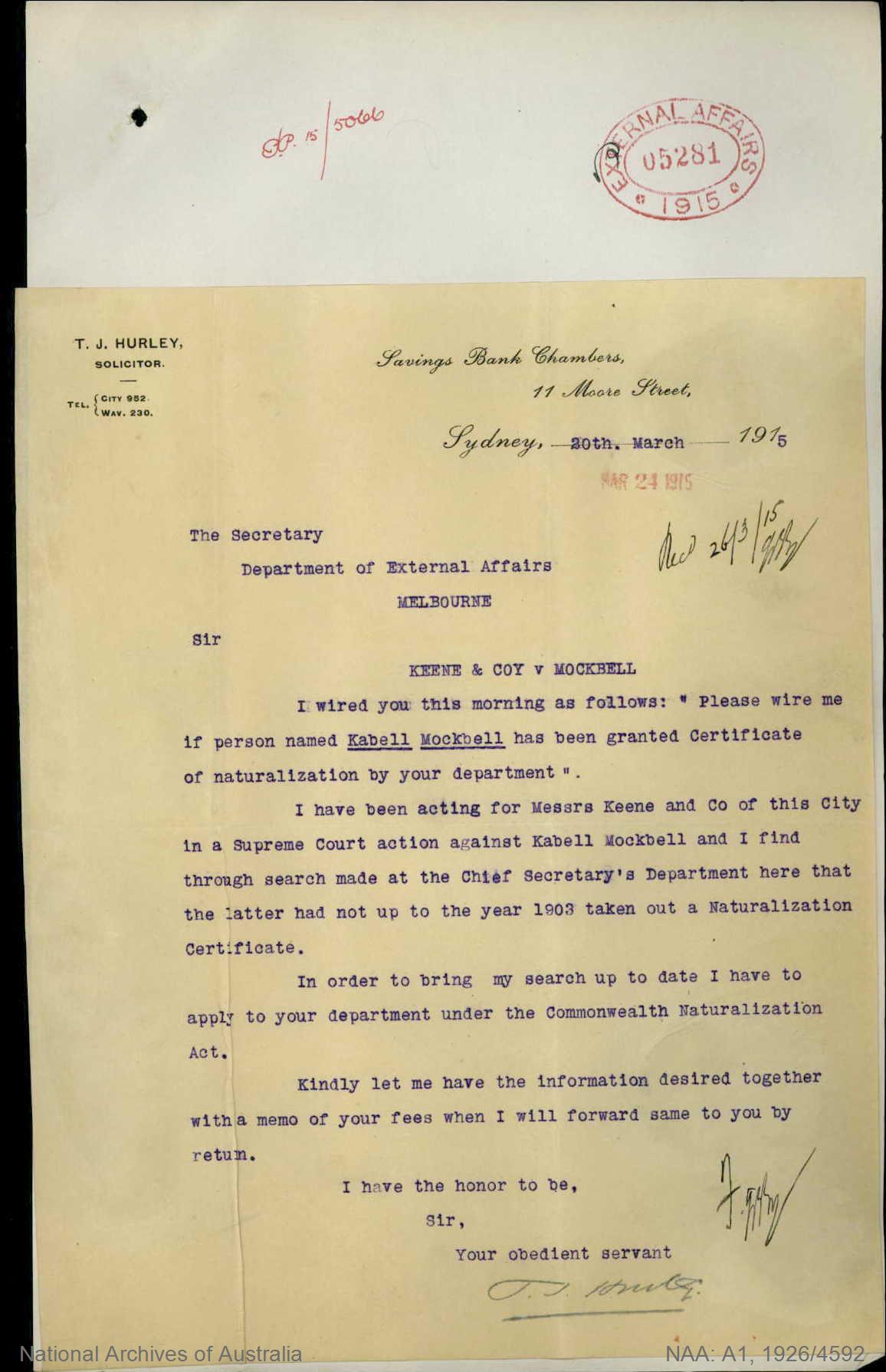
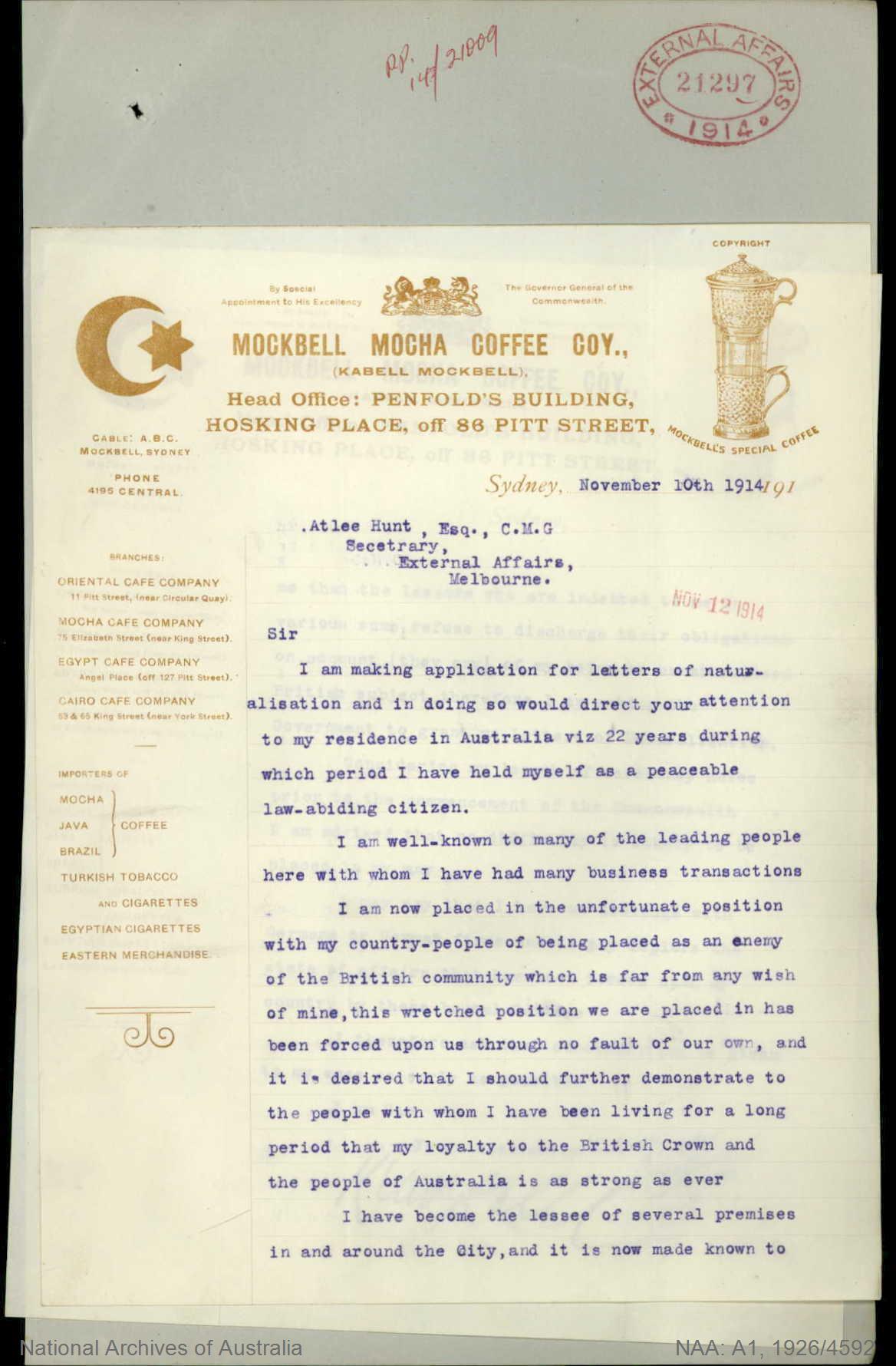
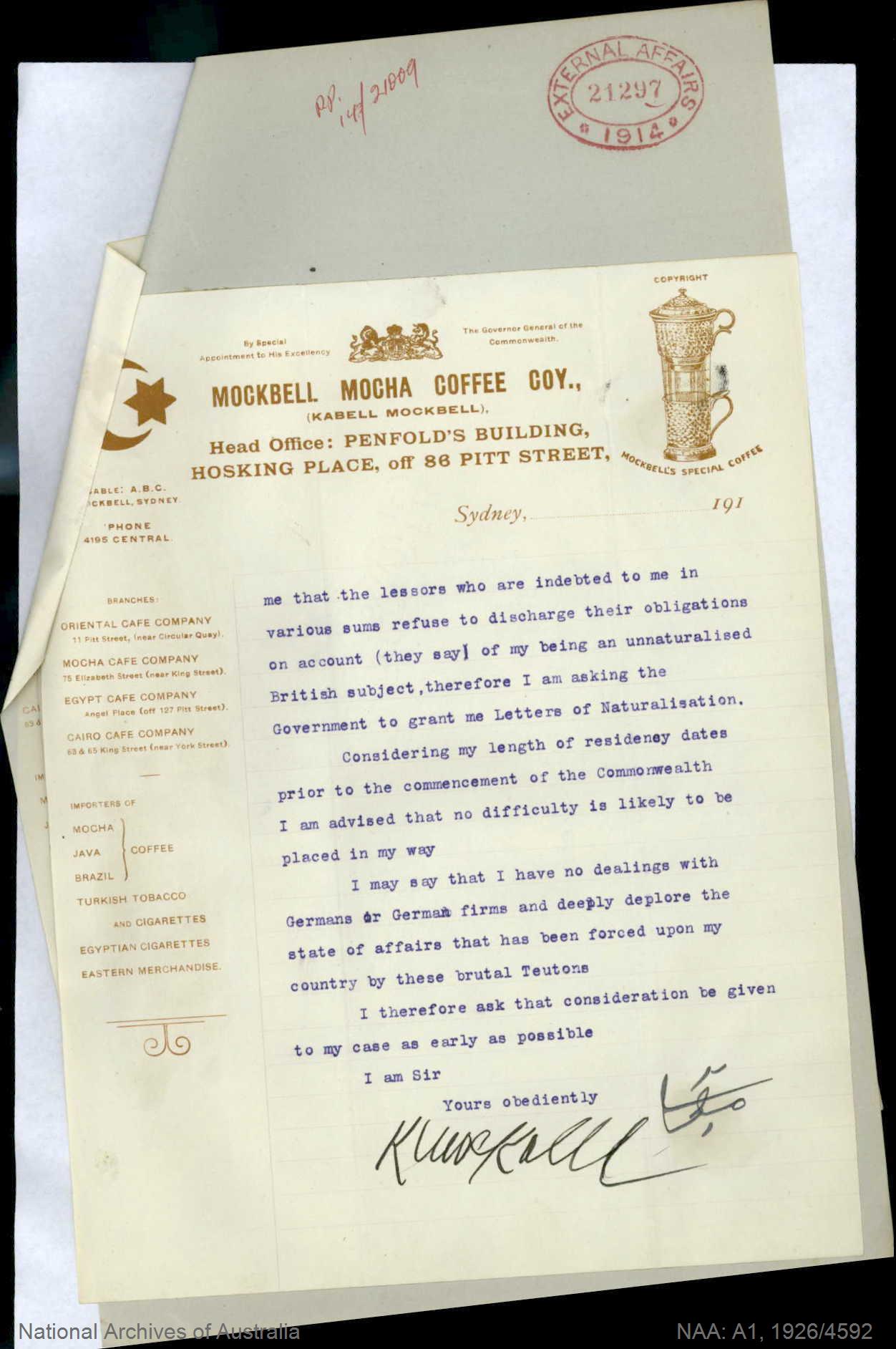
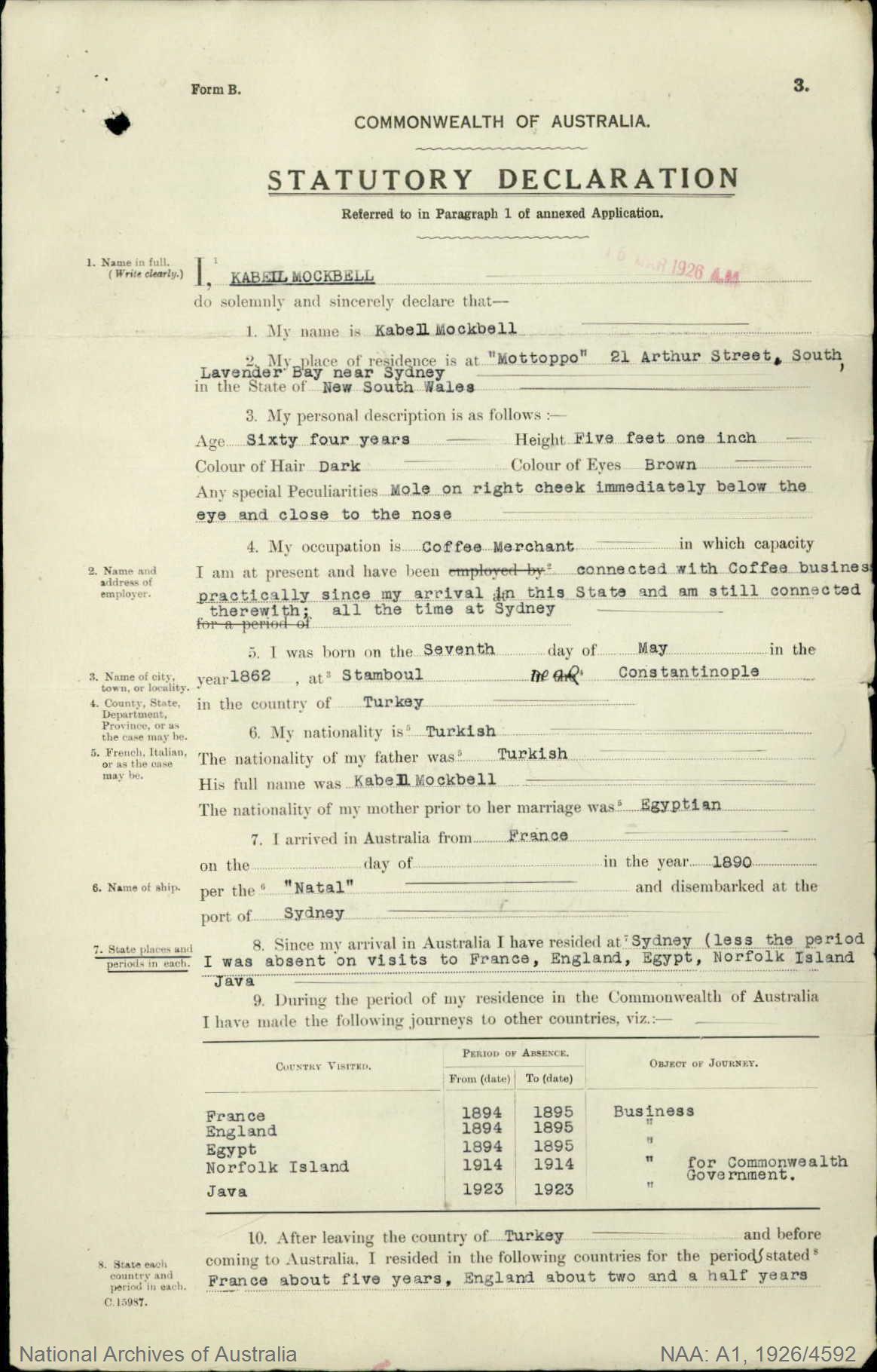
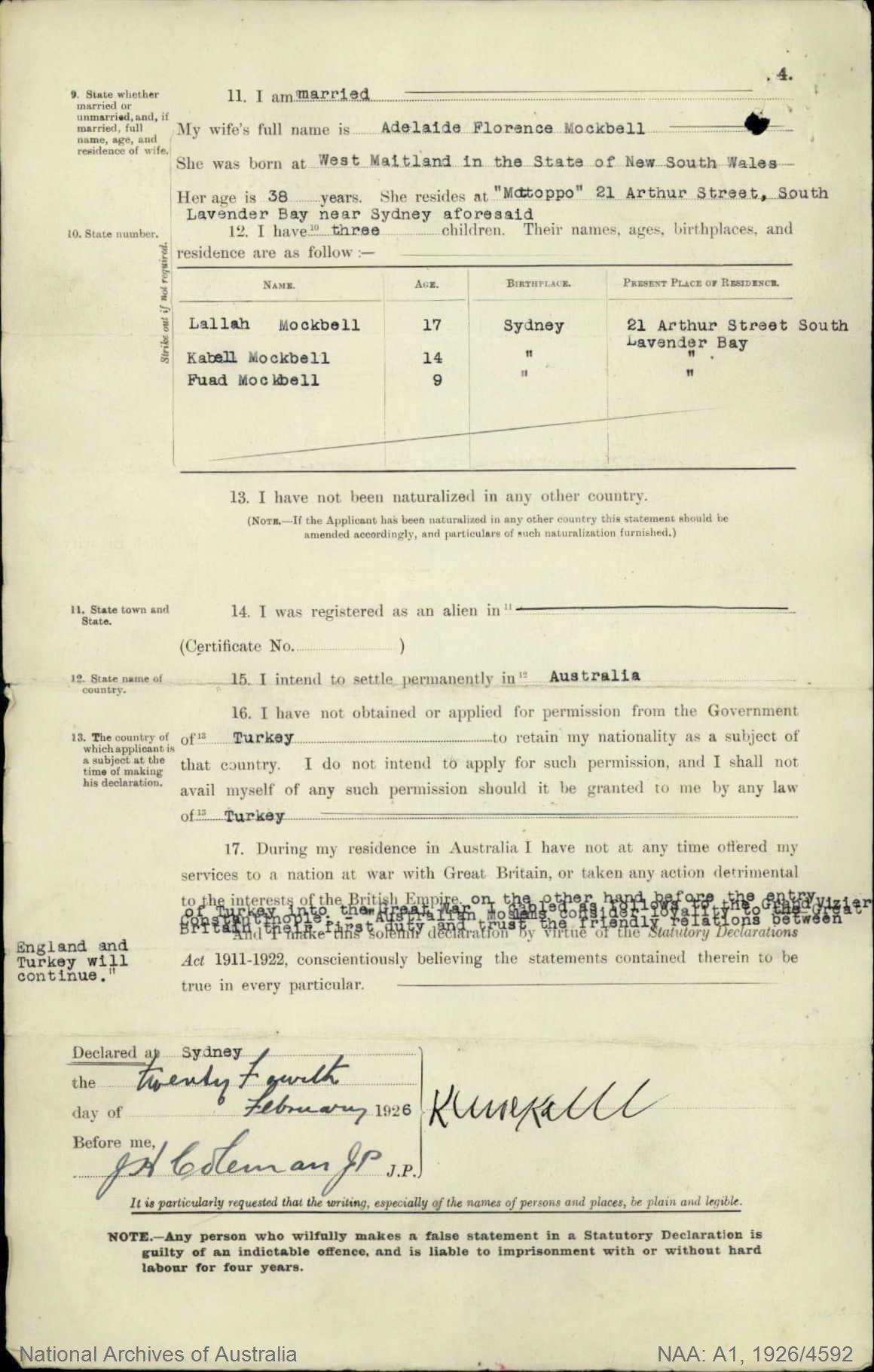
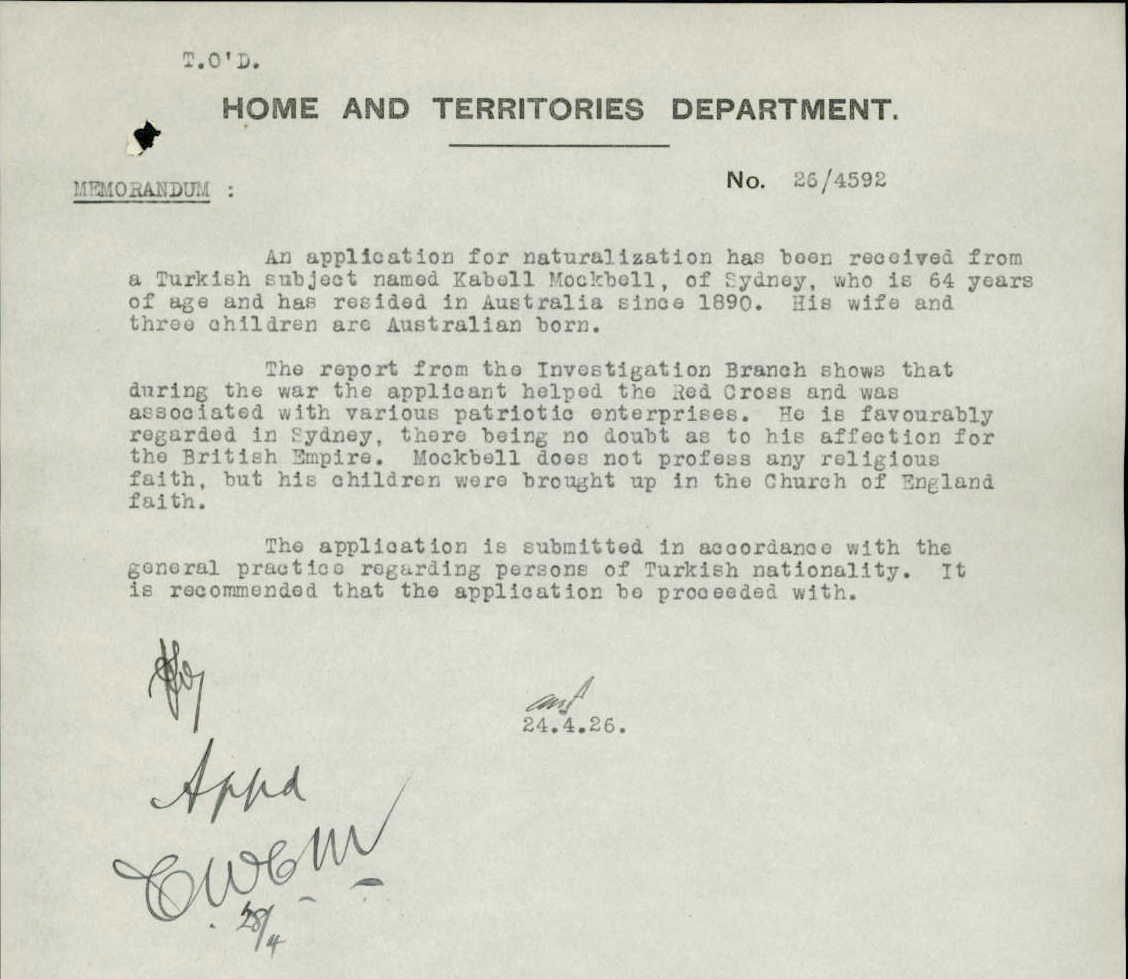
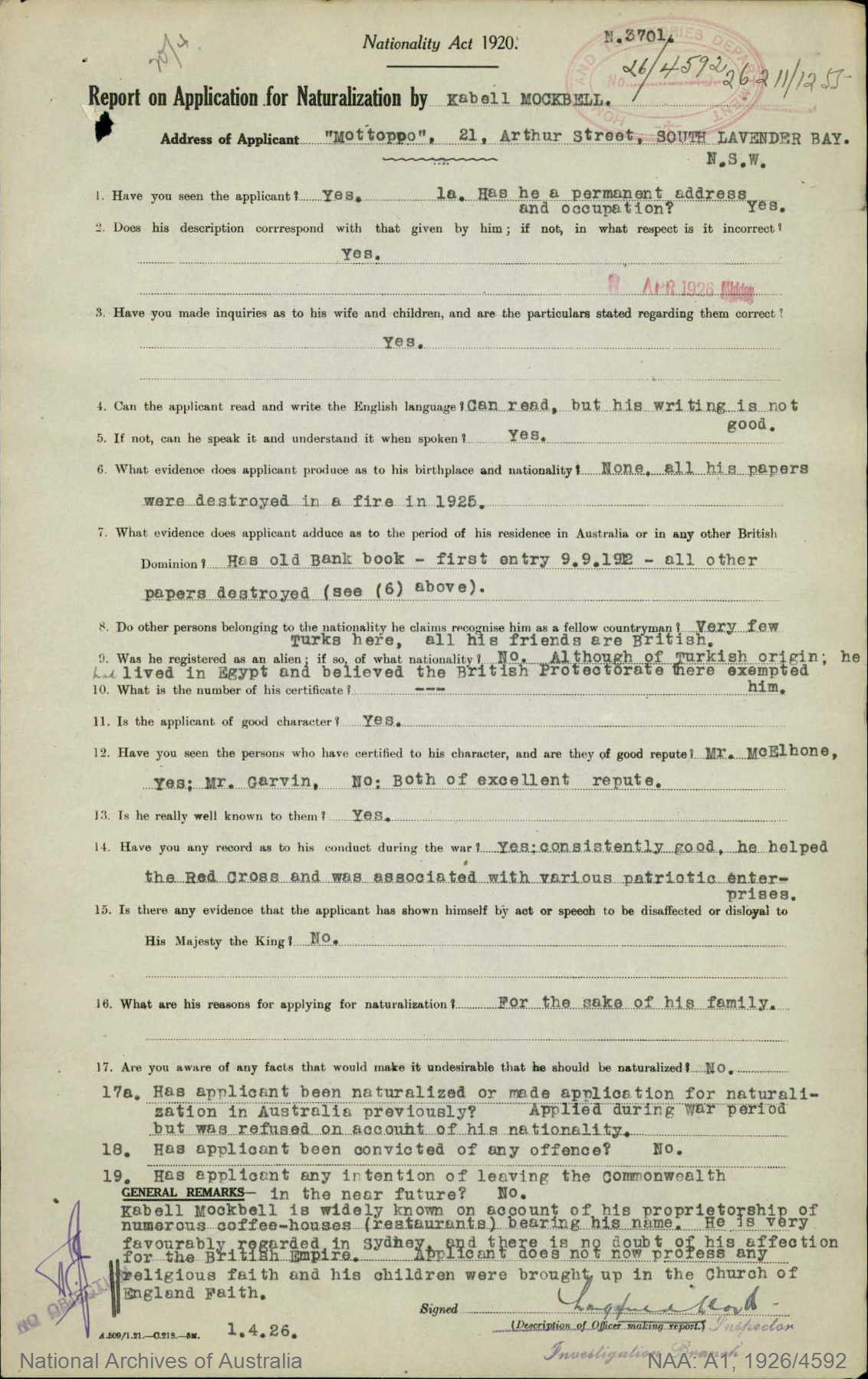
Kabell Mockbell's story was that of a successful emigrant.
In July 1898 Mr. Mockbell commenced a factory to produce 'Fez Cigarettes', bringing the Egyptian fashion of cigarettes as the latest way to consume tobacco, into Australia, which was officially opened by future Prime Minister Edmund Barton:
'FEZ' CIGARETTES.
A Cute Idea.
If you import Turkish Cigarettes into this colony, you pay such heavy customs dues as to make their price prohibitive. If you import Turkish leaf and make it up into cigarettes here, you escape more than three-fourths of the duty. This fact has been taken advantage of by the Stamboul and Egyptian cigarette Company, which imports the nest Turkish leaf, and makes out of it 'Fes ' Cigarettes in Sydney, These de-lghtflui smokes have been now put on the market. The works of the company are to be opened on Thursday next, when the Hon Edmund Barton and most of Sydney's leading men will be present.'FEZ' CIGARETTES. (1898, July 17). Truth (Sydney, NSW : 1894 - 1954), p. 2. Retrieved from http://nla.gov.au/nla.news-article168083097
THE STAMBOUL AND EGYPTIAN CIGARETTE CO., LTD.
MR. BARTON PERFORMS THE OPENING CEREMONY.
The new premises of the Stamboul and Egyptian Cigarette Company, Limited, in William-street, were yesterday afternoon opened in the presence of a large and influential gathering by the Hon. E. Barton, M.L.C. Amongst those present were—Mr. A. W. Meeks (president of the Chamber of Commerce), Messrs. J. T. Cohen, G. Crowley, J. P. Gray, Mark Hammond, F, Punch, John Norton, J. Latimer, Ambrose Pratt, W. E. Byrne, Foennnder, and many others. The proceedings, which were of a social character, were opened in an auspicious manner by the founder of the company, Mr. Mockhell, presenting Mr. Barton with a handsome cigarette case of unique design filled with cigarettes. The gift was inscribed "To the First of Australians."
The presentation was made with a very happy speech, and the members of the company, rising to their feet, cheered the recipient. In replying to the presentation, and at the same time formally declaring the new premises open, Mr. Barton, whose health had been drunk in champagne, said he did not pretend to be the first of the Australians. How-ever he hoped to be the first to accomplish, certain work for the Australians. (Applause) At a social gathering of that kind they would not expect the introduction of local politics, and he would not make an electioneering speech (Hear, hear ) They had met there for the purpose of recognising the beginning of a local industry, and to cordially wish success to the same (Applause) He hoped there was not a gentleman present who had not sampled one of the cigarettes because they were remarkably good (Cheers and laughter ) If the company kept up the quality of the cigarettes there would be a great market for them. As federation would soon be accomplished they would find 1,000,000 people providing a greater market than 1,000,000 (Applause.) He wished success to that company and to all other local industries. It was a new thing the importation of raw material and its local manufacture, and as such well merited success (Applause) The company would place a better article in the hands of the citizens and give employment to a number of people (Hear, hear ).
The toast of " The Queen " was proposed by Mr. Mockbell, and duly honoured Mr. J. J. Cohen pro-posed the toast of " Federation." which was responded to by Mr. John Norton, whose announcement that he would follow Mr. Barton met with a cordial greeting " The Ladies" were also honoured Mr. F. E. Zaccour, on behalf of the company, thanked those present for their attendance and in an especially warm manner referred to Mr. Barton's presence under great personal inconvenience. He said that they trusted to Mr. Barton to crown the noble endeavour he had already made in favour of federation by carrying that work to a successful issue (Applause.) They would never forget his untiring energy, but would always remember when the Australians were united that to him the chief honour was due. (Applause.) Cheers were given for Mr. Barton, and the rest of the afternoon was spent socially. THE STAMBOUL AND EGYPTIAN CIGARETTE CO., LTD. (1898, July 22 - Friday). The Sydney Morning Herald (NSW : 1842 - 1954), p. 3. Retrieved from http://nla.gov.au/nla.news-article14181019
FEZ CIGARETTES
THE FACTORY FORMALLY OPENED.
To the public it is of importance that the tobacco it smokes should be pure and of good quality. The Stamboul and Egyptian Cigarette Co. has been formed to import the best of Turkish leaf, and manufacture it into cigarettes in Sydney, thus giving a new industry and a new delight to the city. It was not therefore an unworthy degree of condescension—as Mr Mockbell, the managing director of the Co. remarked—for Mr Barton and others of most prominent of Sydney's citizens to attend the official opening of the factory on Thursday last.
Mr Barton indeed performed the opening ceremony, and among others present were Messrs J J Cohen, J P Grey, George Crowley, Mark Hammond, Frank Punch, Atlee Hunt, Ambrose Pratt, the Turkish and Italian Consuls and the member for the district, Alderman John Norton. Before Mr Barton opened the factory Mr K Mockbell the managing director of the company, presented him with a beautifully chased silver cigarette-case and holder, inscribed 'To the first of Australians,'.
Mr Mockbell made a happy speech in which he expressed the hope that Mr Barton would soon get for Australia Federation and incidentally for Fez Cigarettes and other New South Wales industries a wider market. Concluding he called attention to the cigarette holder, stating it had been added to the case because the hands which moulded constitutions should not be soiled, even with the smoke of the best cigarettes in the world. (cheers and laughter.)
Mr Mockbell then proposed 'The Queen,' a toast which was. heartily honored with sparkling burgundy and champagne. Mr Barton then declared the factory open, and in doing so expressed his gratitude for the splendid present they had made to him. He modestly disclaimed being 'the first of Australians,' but hoped to be one of the first to give to Australians federation, He con-gratulated the Company on their enterprise and on the fine quality of their cigarettes. He wished success to it and all other local industries. Its objects were worth, as it would place a good article in the months of the people and give employment to a number of citizens.
MR J J Cohen then proposed 'Federation,' paying a high compliment to the Hon Edmund Barton. Mr John Norton responded as a fervent advocate of Australian union and a co-fol-lower with Mr Cohen of the Hon Mr Barton, who had been appropriately designated the first of Australians.' He (Mr Norton) would in future loyally follow Mr Barton and do his best to ham-string those who wished to ham-string the Federal leader. The toast of 'Success to the Company,' proposed by Mr Barton was responded to by Mr F E Zaccour, and the health of Mr Mockbell was proposed by Mr Ambrose Pratt. The guests than enjoyed champagne, light refreshments, some of Mr Mockbell's incomparable coffee and cigarettes in profusion; and altogether had a merry-time. FEZ CIGARETTES. (1898, July 24). Truth (Sydney, NSW : 1894 - 1954), p. 6. Retrieved from http://nla.gov.au/nla.news-article168086593
'Fez' Cigarettes didn't last too long though:
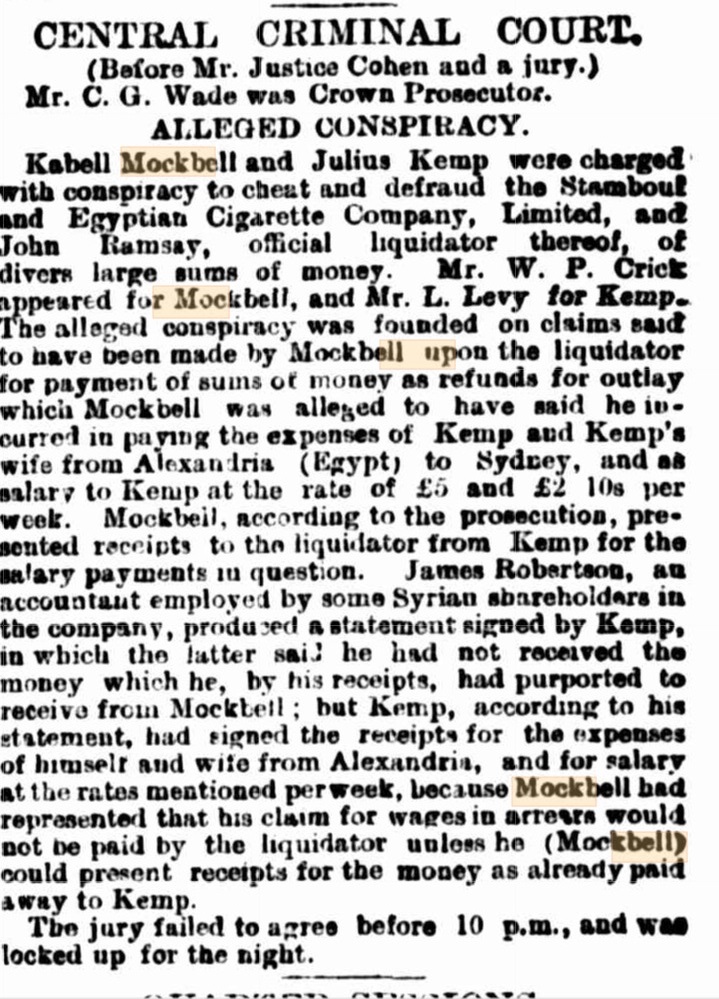
CENTRAL CRIMINAL COURT. (1899, August 4). The Sydney Morning Herald (NSW : 1842 - 1954), p. 3. Retrieved from http://nla.gov.au/nla.news-article14248536
As can be seen above on the letterhead from 1914, he continued expanding his businesses in coffee and restaurants - then, as now, Australians and Sydneysiders could not get enough of the caffeine that came from Mockbells.
By 1920 Mockbells Ltd. was launched:
MOCKBELL'S, LTD.
This company is being formed to take over the Mockbell Coffee Company, owned by Mr. K. Mockbell. Its authorised capital is £20,000, in £1 shares, of which 10,000 shares fully paid are given to the vendor, with £5000 cash, as full consideration, and the remaining 10,000 are offered to the public at par. The assets (£15,000) purchased are plant and furniture, valued by H. Y. Norton at £8356, stock £3900, and goodwill and six shop leases £2744, certified to by Foxall and Foxall, public accountants, who have also certified the net profits for the three years, 1917-8-9, to have been £1821, £1550, and £2805.
The past average net profit of £2057 would not suffice to pay 10 per cent, on £20,000. Mr. Mockbell, who will act as managing director for four years, has, however, waived his right for that period to dividends on his 10,000 shares, to the extent which the net profits may fall short of the sum necessary to pay such a dividend. The 10,000 £1 shares subscribed by the public are accordingly preferential as to 10 per cent, dividends for four years. The success of the scheme, which is fairly set out in the prospectus, depends largely on Mr. Mockbell's system of business, and on his personality. READY MONEY (1920, May 8). Smith's Weekly (Sydney, NSW : 1919 - 1950), p. 12. Retrieved from http://nla.gov.au/nla.news-article234222739
MOCKBELLS, LTD.
The first report of Mockbells, Limited, covers the half-year ended December 31. A net profit of £1899 Is shown. A dividend at the rate of 15 per cent, per annum on paid-up capital absorbs £1303. A sum of £240 is carried to reserve for goodwill and leases, preliminary expenses written off amount to £316, and £38 1s carried forward. The capital is £1/,500. Sundry creditors are down at £1607, and bank at £765. On the other side goodwill and leases are valued at £2748, furniture and fittings at £8218, stock at £4552. Investments (Peace Loan), fixed deposit, and cash in hand amount to £3661. The half-yearly meeting was held yesterday, Mr. D. K. Inglis, chairman of directors, presiding. The report was adopted. MOCKBELLS, LTD. (1921, February 19). The Sydney Morning Herald (NSW : 1842 - 1954), p. 15. Retrieved from http://nla.gov.au/nla.news-article15959510

"I've Three Homes But Only One Wife," Says Mockbell: All From Coffee! (1924, May 14). The Labor Daily (Sydney, NSW : 1924 - 1938), p. 5. Retrieved from http://nla.gov.au/nla.news-article236691899
The Women's Hospital, Crown Street, benefited considerably through Mr. Kabell Mockbell's generosity in donating to their funds the entire proceeds of the opening day of his big new coffee house, 11 Castlereagh Street, yesterday. Everything was supplied by Mr. Mockbell, the hospital nurses gave valuable assistance with the sale of tickets. At night a splendid programme was contributed by Miss Joyce Fisher, assisted by two or her pupils (the Misses Barbara Bolt and Lila Mockbell), Miss Leah Freedman, Miss N. Chadwick, Mr. Billy Dick, Mr. Victor Austin, and Mr. Kenneth Fisher. THE WORLD OF WOMEN (1925, April 17). The Daily Telegraph (Sydney, NSW : 1883 - 1930), p. 5. Retrieved from http://nla.gov.au/nla.news-article245240071
However, from 1914 on he became susceptible to his wide ranging businesses, especially when those who owed money would not want to pay based on his citizenship status and go to enormous and persistent ends not to meet obligations. There is a sense that comes through these articles of too much expansion in too many directions at once, too much money spent on upgrades to premises, unscrupulous people placed in charge of some venues, as well as a prejudice or jealousy, and wanting to destroy him.
GOODS FOR LA CORNICHE.
Westphal v Mockbell and others.
The plaintiff In this case, William Mathias Westphal, of Beach-road, Clovelly, sued Kabel Mockbell, of Paris House, 173 Phillip street, Sydney, Phillip Dudleigh Walker, of 170 Phillip-street, and Philippe Pic, of Paris House, formerly trading at La Corniche, Mona Vale, to recover the sum of £81/6/7 for goods sold and delivered to defendants at La Corniche. Defendants pleaded never indebted, and that the goods had not been supplied on their order. Mr. Studdert (Instructed by Mr. H. N. Chippendall) appeared for the plaintiff; and Mr. Barton (Instructed by Messrs. Magney and Magney) for the defendants. His Honor gave a verdict In favour of defendants. DISTRICT COURT. (1927, March 11). The Sydney Morning Herald (NSW : 1842 - 1954), p. 8. Retrieved from http://nla.gov.au/nla.news-article16360707
His family and himself kept doing for others:
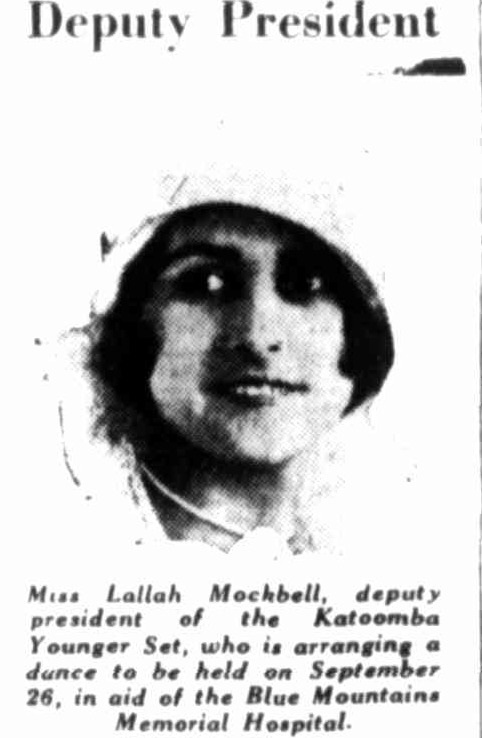
Deputy President (1930, September 9). Evening News (Sydney, NSW : 1869 - 1931), p. 12. Retrieved from http://nla.gov.au/nla.news-article118760260
By 1931, the worst year of the Great Depression in Australia, he was declaring himself for bankruptcy again:
KABELL MOCKBELL BANKRUPT
Kabell Mockbell, of 25 Arthur St., McMahon's Point, well-known city business man, voluntarily filed a debtor's petition in the Bankruptcy Court yesterday, stating that he was unable to meet his liabilities. A sequestration order was made, and Mr. C. F. W. Lloyd was appointed official receiver. Trading as a coffee merchant and café proprietor, Mr. Mockbell has businesses at Paris House, La Corniche (Mona Vale), Wingello House, City, Royal Chambers, Hunter St., 386 George St., 55½ Elizabeth St., and 175 Phillip St., City. KABELL MOCKBELL BANKRUPT (1931, July 23). The Labor Daily (Sydney, NSW : 1924 - 1938), p. 6. Retrieved from http://nla.gov.au/nla.news-article236589393
The ensuring court appearances were widely covered and provide details of how much was invested at Mona Vale's 'La Corniche' - some of these reports' figures conflict with each other, but it is obvious he spent thousands on acquiring the property and then thousands again in upgrading it and extending what was there:
PAID £14,000 -
FOR PARIS HOUSE
KABELL MOCKBELL
Kabell Mockbell, the well-known coffee merchant, who was examined before the Registrar in Bankruptcy (Mr. Norman C. Lockhart) to-day, said that he paid £14,000 for Paris House, Phillip-street. Mockbell stated that he was born in Turkey nearly 70 years ago. He had been carrying on as a coffee merchant in Sydney for about 40 years. He told his Official Receiver (Mr. C. F. W. Lloyd) that he was bankrupt before, in May, 1901.' In 1916 or 1917 he floated the company, Mockbell's, Ltd., and he was managing director at £1000 a year. He held' about 5000 shares in Mock-bell's, Ltd., and he made his manager a present of 1000 shares. He was "with that firm for about four years when he resigned.
£14,500 for "La Corniche"
He gave £14,500 for '"La Corniche," Mona Vale. He bought it from five different people, and spent nearly £12,000 In alterations. For some time both "La Corniche" and Paris House paid, but during the past two years and a half business had fallen off.
Objected to Covenant
Out of his businesses he made about £4000 a year, he said. Mockbell said that the cause of his bankruptcy was that the landlords would not reduce his rent. The depression considerably helped in the falling-off in takings at his coffee shops, from £120 a day to about £60 or £70 a day. The mortgages on Paris House amounted to £27,000, and at the time of the Eucharistic Conference, about three years ago, he had refused £55,000 for it.
Mockbell said he called a meeting of his creditors, but objected to signing a deed containing a covenant which provided that until he obtained a certificate from the trustee appointed by the creditors he would not compete with businesses carried on by the trustee or any purchaser from the trustee. He refused a request to sell his business to Mockbell's, Ltd., for 6s In the £ on the valuation of the assets, provided he signed the deed referred to, and lie sequestrated his estate. Mockbell's unsecured creditors were disclosed in the statement of affairs at £10,445; unsecured assets at £25,746; secured creditors at £39, 165; and secured assets at £66,700. The further hearing was adjourned. Mr. Magney of Magney and Magney) appeared for Mockbell; and Mr. I. K. WQ. Cowie (of samuelson and Cowie for the Trustee in Bankruptcy. PAID £14,000 (1931, August 24). The Sun (Sydney, NSW : 1910 - 1954), p. 9 (FINAL EXTRA). Retrieved from http://nla.gov.au/nla.news-article224721853
£4000 A YEAR: BUT CANNOT WRITE
KABELL MOCKBELL IN BANKRUPTCY
BORN in Turkey 72 years ago, and for the last 30 years a well-known Sydney coffee-house proprietor, Kabell Mockbell was a picturesque figure in the witness-box yesterday, when he furnished particulars of his Business career to the Registrar in Bankruptcy. He declared that he had made as much as £4000 a year, but admitted that he could not write. Mockbell, whose unsecured creditors totalled £10,445, attributed his bankruptcy to high shop rentals, excessive charges by certain milk companies, losses on Paris House, and "La Corniche," Mona Vale, and a falling in takings. The matter was adjourned until September 7. Mr. Cowie, of Messrs. Samuelson and Cowie, appeared for the Trustee In Bankruptcy; Mr. Magney, of Messrs. Magney and Magney, for the bankrupt, and Mr. Lloyd, as the official receiver. ' £4000 A YEAR: BUT CANNOT WRITE (1931, August 25). The Daily Telegraph (Sydney, NSW : 1931 - 1954), p. 7. Retrieved from http://nla.gov.au/nla.news-article246709984
Kabell Mockbell's Bankruptcy.
Kabell Mockbell was examined by the official receiver. Mr. Magney appeared for bank-rupt, Mr. Cowie for the trustee. Replying to questions, bankrupt stated that some years after his business had been formed into a company he had a disagreement with the directors and in 1922 started new coffee shops. At one time the takings in his shops amounted to £ 120 a day, but had fallen to practically half. Had the rents been reduced he would have been able to carry on. For one place the rent was £29 a week, for others £20, £15, and £10. Some of his creditors had been overcharging him. In 1920 he paid £14,000 for Paris House. He bought La Corniche for £17,000, spending altogether £32,000 on purchase and alterations. Both places paid until 1927-1928, but then business began to fall away. He had declined to sell Paris House for £55,000, and had been offered £35,000 for La Corniche. The examination was adjourned until September 7. IN BANKRUPTCY. (1931, August 25). The Sydney Morning Herald (NSW : 1842 - 1954), p. 5. Retrieved from http://nla.gov.au/nla.news-article16820495
La Corniche is under new management early the following year:

Advertising (1932, February 20). The Sydney Morning Herald (NSW : 1842 - 1954), p. 5. Retrieved from http://nla.gov.au/nla.news-article16841961
Debtor's name—Kabell Mockbell. Address—25 Harbour View-crescent, Neutral Bay, formerly of 25 Arthur-street, McMahon's Point, and carrying on business at " Paris House ", Phillip-street, Sydney; " La Corniche", Mona Vale, near Manly; "Wingello House", Angel-place, Sydney; 17 Castlereagh-street, Sydney; 11 Castlereagh-street, Sydney; " Royal Chambers Hunter street, Sydney; 380 George-street, Sydney; 17 Arbitration-street, Sydney; 250 George-street, Sydney; 551 Elizabeth-street, Sydney; and 175 Phillip-street, Sydney.
Description—Cafe proprietor and coffee merchant.
Court—Bankruptcy.
Number—S.354 of 1931.
Date fixed for hearing—25th October, 1932.
3780 X. C. LOCKHART. Registrar. APPLICATIONS FOR DISCHAHGE. (1932, September 29). Commonwealth of Australia Gazette (National : 1901 - 1973), p. 1269. Retrieved from http://nla.gov.au/nla.news-article232602139
Everything was sold out from under him too:
PRELIMINARY ANNOUNCEMENT
etc.,
HAVING BEEN FAVOURED WITH INSTRUCTIONS FROM THE TRUSTEES OF THE ESTATE OF KABELL MOCKBELL. Esq. in Bankruptcy),
will sell at an early date the entire contents of the well-known Private Hotel, "LA CORNICHE"-MONA VALE.
The Furnishings and Effects of this famous resort are being removed to Grove mid Co.'s City Rooms, and will be available for Inspection on days to be announced next week. Advertising (1933, March 15). The Sydney Morning Herald (NSW : 1842 - 1954), p. 19. Retrieved from http://nla.gov.au/nla.news-article16967343
Another advertisement from March 21st, 1933 lists the contents and lends some insights into what had been done at La Corniche:
.jpg?timestamp=1660082351621)
Advertising (1933, March 21). The Sydney Morning Herald (NSW : 1842 - 1954), p. 14. Retrieved from http://nla.gov.au/nla.news-article16966759
A few bright spots among this gloom include the marriage of his daughter and the renting of part of La Corniche to the Mona Vale Alumni - the surf club and lifesavers at Mona Vale Beach of then:
BARTLE-MOCKBELL WEDDING
Sentimental reasons determined the quiet wedding last night of Miss Lallah Mockbell and Mr. Reginald Bartle, at Lindfield Presbyterian Church. Rev. A. D. Marchant, who performed the ceremony, is a former schoolmaster of the groom, and will be leaving to attend the Federal Presbyterian Assembly in Melbourne next week, so the wedding, fixed for the middle of September, was put for-ward. The bride's brother, Mr. Kabell Mockbell, Jnr., was best man, and Miss Lorna Westbrook was bridesmaid. The bride is the only daughter of Mr. and Mrs. Kabell Mockbell, of "Motoppo," Lavender Bay, and late of 'Cairo,' Leura, and the groom is the only son of Mr. and Mrs. S. C. Bartle, of Katoomba. Mr. and Mrs. Reginald Bartle will make their future home in Katoomba. BARTLE-MOCKBELL WEDDING (1933, September 7). The Daily Telegraph (Sydney, NSW : 1931 - 1954), p. 13. Retrieved from http://nla.gov.au/nla.news-article248115750
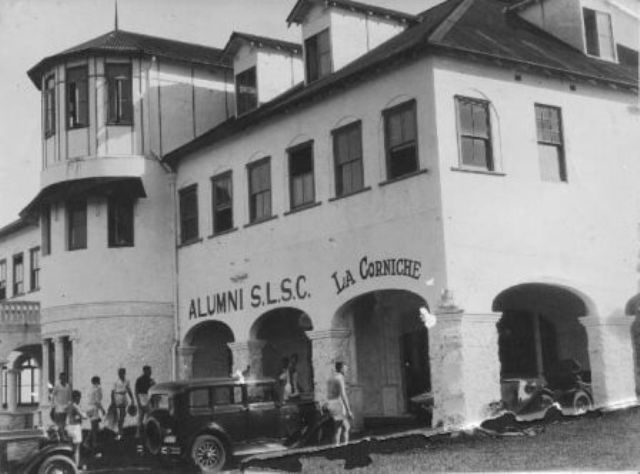 There will be great festivities at La Corniche on New Year's Eve.
There will be great festivities at La Corniche on New Year's Eve.
This picturesque old house has just been taken over, by the Mona Vale Alumni Surf Club, a branch of the G.P.S. Club. A ladies' committee has been formed with the object of arranging for a dance to welcome in the New Year. The name for the party has not yet been decided upon, but tub frocks and flannels will take the place of uncomfortable stiff shirts and perishable ninons. The LIFE of SYDNEY (1933, December 15). The Daily Telegraph (Sydney, NSW : 1931 - 1954), p. 17. Retrieved from http://nla.gov.au/nla.news-article247176485
NOTICE OF INTENTION TO DECLARE A FIRST AND FINAL DIVIDEND.
District of New South Wales (No. 354 of 1931).—In the bankrupt estate of Kabell Mockbell, of Sydney, cafe proprietor.
A FIRST and Final Dividend is intended to be declared in the above matter. Creditors who have not proved their debts by the nineteenth day of December, 1933, will be excluded from dividend.
Dated this fourth day of December, 1933.
A. G. WALKER. Trustee. 341 George-street, Sydney. 951G NOTICE OF INTENTION TO DECLARE A FIRST AND FINAL DIVIDEND. (1933, December 14). Commonwealth of Australia Gazette (National : 1901 - 1973), p. 1881. Retrieved from http://nla.gov.au/nla.news-article232610469
In the matter of Mrs. KABELL MOCKBELL AND COMPANY LIMITED.
AT an Extraordinary General Meeting of the abovenamed Company, duly convened and held at 7 Elizabeth-street, Sydney, on fourth day of March, 1935, the following Re-solution was passed:—
That it has been proved to the satisfaction of the Meeting that the Company cannot by reason of its liabilities continue its business, and that it is advisable to wind-up the same, and accordingly that the Company be wound-up voluntarily. That Messrs. H. L. Brown and J. R. P. Partridge, of 84 Pitt-street, Sydney, be and are hereby appointed Joint Liquidators.
SIDNEY RAPER, Chairman. 2512 16s. 6d In the matter of Mrs. KABELL MOCKBELL AND COMPANY LIMITED. (1935, March 8). Government Gazette of the State of New South Wales (Sydney, NSW : 1901 - 2001), p. 1087. Retrieved from http://nla.gov.au/nla.news-article224743492
Later that year all the Mockbell Mona Vale assets were sold. Kabell Mockbell passed away on October 31st the following year:
REMEMBERED FOR GENEROSITY
Tribute To The Late Kabell Mockbell
Known to thousands as the founder of Sydney's first coffee shops, the late Kabell Mockbell, who died on Saturday, aged 75, will be remembered by many for his generosity '
"During his lifetime he gave thousands of pounds to worthy charities and few people knew anything about it." said Mr. Lionel Lindsay, the artist, in recalling today incidents in the life of Mr. Mockbell.
Soon after the close of the World War the late Mr. Mockbell went to Norfolk Island to report to the Federal Government on the possibilities of settling returned soldiers on small holdings to produce coffee.
"When he returned he was asked to put in his expenses," said Mr. Lindsay, "but notwithstanding that he spent about £300, he never bothered to charge a penny" Mr Mockbell left a widow, two sons (Kabell and Jack), and a daughter, Mrs Lallah Bartle. The funeral took place to-day at the Northern Suburbs Crematorium. REMEMBERED FOR GENEROSITY (1936, November 2 - Monday). The Sun (Sydney, NSW : 1910 - 1954), p. 7 (COUNTRY EDITION). Retrieved from http://nla.gov.au/nla.news-article230901005
The McPhees' ownership - a family of farmers
Mary McPhee, wife of Gerald Joseph McPhee of Mosman, Retired Grazier, bought all the Mockbell La Corniche holdings from the Bank of NSW in December 1935 and February 28th, 1936 although these were not lodged in total until March 27th, 1936 – Volume Folio 4752-48 and Volume Folios as seen at top right hand side of Certificate of Title account for the 'five different persons' Mr. Kabell had bought the lots from. They comprised Lots 1, 2, 3, 31 and 32 of Section H and comprised 9 acres, 3 roods and 32 ¼ perches in total:

 McPhee.jpg?timestamp=1660002318719)
 McPhee.jpg?timestamp=1660002485894)
Mary McPhee was born in 1886 to Maurice and Hannah Mahoney, the birth registered at Oberon. Her father was a farmer who passed away in 1887, leaving his wife to care for four daughters.
Mary married Albert Joseph Kenny in 1912, but he passed away from illness that same year and before their only child was born:
Wedding KENNY— MAHONEY. -
A wedding of more than ordinary interest was celebrated at. S.S. Michael and John's Cathedral, at 9 o'clock on Saturday morning, when Albert Joseph (''Bert.''), third son of Mr. F. B. and Mrs. Kenny, of ''Hetherley,'' Bathurst, was married to Mary, youngest daughter of the late Mr. Maurice Mahoney, grazier, of Porter's Retreat, and Mrs. Mahoney. Notwithstanding the early hour, there was a large number pre-sent to witness the ceremony, which was performed by Rev. S. H. McGee. Given away by her uncle, Mr. John Mahoney, the bride was charmingly attired in white charmeuse, with an overdress of Malines lace. She also wore a coronet of orange blossoms, and a bridal veil, lent for the occasion by her sister, Mrs. Harris, of Gulgong. The bride carried an ivory-bound prayer book and diamond ring, gifts of the bridegroom. Miss Kenny, sister of the bridegroom, as bridesmaid, wore a beautiful costume of silver grey charmeuse, with an overdress of grey ninon, grey hat, with cerise feathers to match. Her gift from the bride-groom was a gold-mounted hand-bag. Mr. Arnold Kenny attended on his brother as best man.
After the ceremony nuptial mass was celebrated by Rev. Father McGee. The reception was held subsequently at the Royal Hotel, where a large number of guests were entertained by the bride's mother, and the happy couple received the congratulations of their friends. Included in those present were: — Mrs. M. Mahoney (mother of bride), black crepe de chine, black fur toque with ostrich plumes ; Mrs. F. B. Kenny, (mother of bridegroom), pale blue coat and skirt, blue Tagel straw picture hat; Mrs. Harris (Gulgong), cream silk lace gown, veiled in black ninon, large black velvet hat, white ostrich plumes ; Mrs. Braham (Millthorpe), grey costume, grey hat to match ; Miss Ella Vance, cream corduroy velvet costume, with pale blue satin and cream velvet hat ; Messrs. F. B. Kenny (father of bridegroom), J. Mahoney (uncle of bride), Dr. Harris (Gulgong), Dr. Murray Curtis (Sydney), and Messrs. J. F., F., and E. Kenny (brothers of the bridegroom). At the wedding breakfast, the usual toasts were honored, and Mr. J. F. Kenny sang the thanksgiving song, and ''Beloved, it is Morn.'' Mr. and Mrs. Kenny afterwards left for Sydney on their honeymoon tour, the bride travelling in a Copenhagen blue coat and skirt, trimmed with white braid and buttons, and blue felt hat adorned with an ostrich plume. The presents were varied and rare, and included some very costly gifts. Mr. and Mrs. Kenny's future home will be at Perthville. Wedding (1912, July 22). National Advocate (Bathurst, NSW : 1889 - 1954), p. 5. Retrieved from http://nla.gov.au/nla.news-article157952441
Death of Mr. A. J. Kenny.
Universal regret was expressed yester-day when it became known that Mr. Albert Joseph ('' Bert') Kenny had passed away in one of the local private hospitals. The deceased, who was only 22 years of age, had been ailing some time, but his demise came as a profound shock. Death was due to septic pneumonia. The late Mr. Kenny was the fifth son of Mr. and Mrs. F. B. Kenny, of "Hatherley," George-street. He had successfully carried on an orchard at Perthville up to the time of his illness. The funeral arrangements are announced elsewhere. Death of Mr. A. J. Kenny. (1912, October 30). The Bathurst Times (NSW : 1909 - 1925), p. 2. Retrieved from http://nla.gov.au/nla.news-article111380739
FUNERAL. KENNY. — The Friends of Mrs. Albert Joseph (Bert) Kenny, 'Southerwood,' Perthville, are respectfully invited to attend the FUNERAL of her late dearly-beloved Husband, to move from his parents' residence, 'Hatherley,' 176 George-street, at 3.45 o'-clock' THIS (WEDNESDAY) AF-TERNOON, for the Catholic Cemetery, Bathurst. W. BOYD, Undertaker, 182 Piper-street. Tel. 116. FUNERAL. KENNY.— The Friends of Mr. and Mrs. F. B. Kenny and Family are respectfully invited to attend the FUNERAL of their late dearly-beloved Son and Brother (Bert), to move from 'Hatherley,' 176 George-street, at 3.45 o'clock THIS (WEDNES-DAY) AFTERNOON, for the Catholic Cemetery, Bathurst. W. BOYD, Undertaker, 182 Piper-street. Tel. 116. Family Notices (1912, October 30). National Advocate (Bathurst, NSW : 1889 - 1954), p. 5. Retrieved from http://nla.gov.au/nla.news-article157970838
Child: KENNY ALBERTA MARY 29829/1913 ALBERT J MARY BATHURST - NSW BDM's
BIRTH.
KENNY. — On May 10, 1913, at ''Myola,'' Gladstone-street, Bathurst, the widow of the late A. J. Kenny, a daughter. Family Notices (1913, May 16). National Advocate (Bathurst, NSW : 1889 - 1954), p. 2. Retrieved from http://nla.gov.au/nla.news-article157821274
In 1917 she married Gerald Joseph McPhee, born 1880 to James John and Anne Mary, the birth registered at Bathurst. His family were also farmers:
Personal Notes. — The engagement is announced of Mr. Gerald McPhee of Trangie, second son of Mr. J. McPhee "Copperhannie" Trunkey, and Mary, youngest daughter of Mrs. Mahoney "Aidar" Lambert St. and widow of the late A. Kenny. The marriage is to take place very early in the new year. The youthful bride-elect has already received many congratulations and expressions of good will for her future happiness. REMARKS (1917, November 7). National Advocate (Bathurst, NSW : 1889 - 1954), p. 1. Retrieved from http://nla.gov.au/nla.news-article158631918
The couple had two children, Anne, born in 1918, the birth registered at Bathurst, and Gerald Joseph, born in 1921 in Sydney - they were living at Mosman by then, Gerald the Grazier having decided to work in Real Estate, focussing at first on Mosman properties.
At the week-end Dr. and Mrs. Harris had a visit from Mrs. Gerald McPhee of Trangie, who, with her daughter, Betty, called here on the way to Sydney. Mrs. Harris and Mrs McPhee are sisters. Personal (1923, October 23). National Advocate (Bathurst, NSW : 1889 - 1954), p. 3. Retrieved from http://nla.gov.au/nla.news-article158677798
Alberta Mary Kenny passed away in 1941, just 27 years of age.
KENNY.—May 7, Alberta Mary, daughter of Bert Kenny (deceased), and Mrs. G. McPhee (deceased). Family Notices (1941, May 17). The Sydney Morning Herald (NSW : 1842 - 1954), p. 12. Retrieved from http://nla.gov.au/nla.news-article17745341
His father, who had moved to Sydney around the same time, passed away here after an accident in 1926:
DEATH OF MR. J. J. McPHEE.
By the death of Mr. J. J. McPhee, the Trunkey district loses one of its finest personalities. Mr. McPhee, who was 88 years of age, was killed in Military Road, Mosman, on Tuesday, through being knocked down by a motor lorry. He was the father of our estimable townsman, Mr. James Mc-Phee, of McNeilly, Crampton and Martin, and probably the best known gentleman in the whole of the Carcoar and Trunkey districts. He was one of the first shire councillors for Carcoar, and a member of the land board of that district for very many years. A sheep breeder of note, Mr. McPhee had been on the land for the whole of his life, and was a fund of information on the early days of the west, and a highly cultured and well-read member of the western primary producers. He leaves four sons, Dr. V. J. McPhee, of Macquarie Street and Rushcutters Bay; Messrs. J. P. McPhee, chemist, of Cowra; Gerald McPhee, ex-pastoralist, lives at Mosman; and Jas. McPhee, pastoralist, of Orange. His only daughter is Mrs. Deacon, wife of Dr. Deacon, of Mosman. The interment, which was well attended, took place in the Northern Suburbs cemetery, the Rev. Fathers Murphay, O'Donnell and McDermott officiating at the graveside. DEATH OF MR. J. J. McPHEE. (1926, November 19). Leader (Orange, NSW : 1899 - 1945), p. 4. Retrieved from http://nla.gov.au/nla.news-article255476404
MOTOR FATALITY
MR. J. J. McPHEE THE VICTIM.
The very regrettable news came to Cowra on Tuesday that Mr. James John McPhee, father of Mr. J. P. McPhee, of Cowra, had been knocked down by a motor lorry at Mosman that afternoon, and died shortly after being admitted to the Mater Misericordiae Hospital at North Sydney. The deceased gentleman, who had reached the ripe old age of 88 years, had resided for a considerable period at Copperhannia, Trunkey, and was well and favorably known in Cowra, having frequently visited here. For the past five years he had lived with his only daughter, Mrs. Deakin, wife of Dr. Deakin, at Mosman.
The late Mr. McPhee was a native of Ireland, but came to Australia when a mere child. At the point where the accident happened the street is being done up and only a narrow portion of it is open for traffic. Mr. McPhee had gone across for a paper and was re-turning when the lorry struck him. Rev. Father O'Donnell had also been for his paper and was quickly with Mr. McPhee, and had him conveyed to the Hospital, where he was admitted. The mortal remains of the deceased gentleman were buried at the Northern Suburbs cemetery, Rev. Fathers Murphy, O'Don-nell, and MacDermott officiating at the graveside. The late Mr. McPhee was a pastoralist, and for some years was a chairman of the Stock Board, and a member of the Land Board in the Carcoar district. He was also one of the first Shire Councillors at Rockley. He leaves four sons, Dr. V. J. Mc-Phee, of Macquarie Street and Rush-cutter's Bay; Messrs. J. P. McPhee, chemist, of Cowra; Gerald McPhee, pastoralist, lives at Mosman; and Jas. McPhee, pastoralist, of Orange. His only daughter is Mrs. Deakin, wife of Dr. Deakin. MOTOR FATALITY (1926, November 19). Cowra Free Press (NSW : 1911 - 1937), p. 9. Retrieved from http://nla.gov.au/nla.news-article262034292
McPHEE -November 16, 1926 at Mater private hospital, North Sydney, result of accident, James John beloved father of John, Gerald, May, James and Vincent aged 88 years, late of Copperhannia Trunkey. RIP. Family Notices (1926, November 17). The Sydney Morning Herald (NSW : 1842 - 1954), p. 14. Retrieved from http://nla.gov.au/nla.news-article16328760
Mr. James John McPhee.
One of the oldest and most respected residents of the Abercrombie district, in the person of Mr. J. J. McPhee, passed away recently at the age of 89. His early years were spent in Rockley, and after travelling a great part of N.S.W. he settled at Copperhania, in the Abercrombie Mountains, with wife (nee Miss Anne Mc-Laughlin, of Sodwalls), and engaged in pastoral pursuits until the last eight years of his life, which he spent with his daughter at Mosman. He was an active member of the Carcoar District Land Board for 20 years, and a member of the Carcoar Stock Board for over 30 years, part of the time being chairman. When shire councillors were appointed he was amongst the first to be elected to the Rockley Council. His wife predeceased him by 22 years, and he is survived by four sons — John (chemist, Cowra), Gerald (retired grazier, Mosman), James (stock agent, Orange), Dr. Vincent (Macquarie-street, Sydney), and one daughter, the wife of Dr. Deakin (Mosman). His only surviving sister Mrs. McLaughlin, lives in North Sydney. These with 22 grandchildren and a large circle of old friends, mourn their loss. He was a man charitable in thought, word and deed, and an exemplary Catholic— R.I.P. Mr. James John McPhee. (1927, February 3). The Catholic Press (Sydney, NSW : 1895 - 1942), p. 37. Retrieved from http://nla.gov.au/nla.news-article107973731
Just as Arthur Rickard had put the Mona Vale Brock lands under his wife Nellies name, Joseph did the same.
These were leased to Questhaven Schools P/L on September 21st, 1937, although it is clear they were running the school from there in 1935.
QUESTHAVEN SCHOOL, MONA VALE, NSW.
A Progressive, Modern Boarding and Day School for Boys and Girls, from Kindergarten age. The education is on psychological lines for the development of Individual character. NEW TERM BEGINS 16th September. Y33B4. Y0123. MARY SHERIDAN. Director. Advertising (1935, September 14). The Sydney Morning Herald (NSW : 1842 - 1954), p. 12. Retrieved from http://nla.gov.au/nla.news-article17192823
The Director named here is the daughter of Mary Sheridan:
QUESTHAVEN SCHOOL, MONA VALE.
A co-educational school for boarders from the age of three. Founded on modern psychological principles, this school studies individual mental development, in addition to training pupils in the usual educational subjects and handicrafts. Katharine Sheridan, Director. Prospectus on application to the secretary. Advertising (1936, November 11). The Daily Telegraph (Sydney, NSW : 1931 - 1954), p. 16. Retrieved from http://nla.gov.au/nla.news-article246978747
Neither of the McPhee children attended this school - Anne went on to become a nurse, while Gerald Joseph the son of G J McPhee went into advertising prior to enlisting to serve in World War II. Their mother passed away soon after their parents bought La Corniche and its associated cottages, leaving their father in charge of meeting the payments for the mortgage they had had to take out. Records found in the National Archives of Australia indicate the small amounts of £ they received for renting the premises to the Qest Haven school just covered these.
McPHEE.-January 11, 1938, Mary, beloved wife of Gerald Joseph McPhee, and loving mother of Betty, Ann, and Gerald. Requiescat in pace. Family Notices (1938, January 12). The Sydney Morning Herald (NSW : 1842 - 1954), p. 16. Retrieved from http://nla.gov.au/nla.news-article17421949
McPHEE. — The Relatives and Friends of Mr. GERALD JOSEPH McPHEE and FAMILY, of No. 9 Prince Albert Street, Mosman, are kindly Invited to attend the Funeral of his dearly beloved wife and their mother, Mary, which will leave our Private Mortuary Chapel, 563 Miller Street. North Sydney. THIS WEDNESDAY, at 2.30 p.m., for the Northern Suburbs Cemetery. Family Notices (1938, January 12). The Daily Telegraph (Sydney, NSW : 1931 - 1954), p. 13. Retrieved from http://nla.gov.au/nla.news-article247394232
The Questhaven School
Mary Sheridan was apparently an Irish-born lady, and Psychologist, who, with others, was involved in the first New Education Fellowship (NEF) committee in Australia in 1925. The New Education Fellowship, an international organisation dedicated to the ideals of progressive education, was established in 1921 by Beatrice Ensor, founder of a progressive school in Letchworth, England, and several colleagues. The fellowship spread its philosophy through such journals as The New Era (now The New Era in Education) in England and Progressive Education in the United States. It is now known as the World Education Fellowship (WEF).
NEW EDUCATION FELLOWSHIP
SYDNEY BRANCH TO BE FORMED
A meeting has been arranged to form a branch of the New Education Fellowship in Sydney, in order to promote closer relations among teachers of all grades of the profession, and to stimulate public Interest in education.
Lectures and discussions will be held, denting principally, with new schemes projected, and teachers will be able to discuss such schemes with others, who have experimented and learnt much of1 their value or otherwise. Mr. H. S. Neill, the author of the Dominie books, has been closely associated with the movement, on the Continent, and many other educationists of note contribute to the "New Era," the official organ of the society. The first meeting is to take place on Friday, June 12, at 5 p.m., at the Federation Rooms, Fraser House, Bridge Street, when Mr. F. K. Barton, of Turramurra College, will lecture.NEW EDUCATION FELLOWSHIP (1925, June 11). The Labor Daily (Sydney, NSW : 1924 - 1938), p. 7. Retrieved from http://nla.gov.au/nla.news-article239958683
NEW EDUCATION.
SYDNEY FELLOWSHIP.
INAUGURAL MEETING.
The New Education Fellowship held Its first Sydney meeting at the Teachers' Federation rooms, Frazer House, yesterday.
Claiming that other teachers' societies are interested rather In politics or in examinations than in the true cause of education, and supporting the introduction of teaching methods based »rated on attempts to develop the spiritual power and the innate interests of the-child than on any system of externally imposed curricula and discipline, the Fellow-ship, it is stated, has won considerable power overseas.
Yesterday's meeting was .attended by a representative group of Sydney teachers. All present were elected temporary executive committee, with Messrs M. Lamond and C. Irwin as secretaries. It was agreed that meetings should be held at 7.30 p.m. on the first Friday of each month. All who are interested in education are eligible for membership.
A short address was given by Mr. F. K. Barton, of the Turramurra College, on the newer teaching methods adopted at that school. He claimed that the customary system of secondary education found the average boy Ignorant and curious, and left him still ignorant, but without curiosity. The remedy, be said,' was suggested by the methods of self-command, and development of natural abilities adopted at the Perso School, Cambridge, and at Oundle School. Its own experiments had shown that, by those methods, surprising results could be gained from the most unpromising material. NEW EDUCATION. (1925, June 13). The Sydney Morning Herald (NSW : 1842 - 1954), p. 16. Retrieved from http://nla.gov.au/nla.news-article16228562
Mary Sheridan turns up in newspapers advertisements as giving lectures in town through the late 1920's and early 1930's, which apparently was a good source of income:
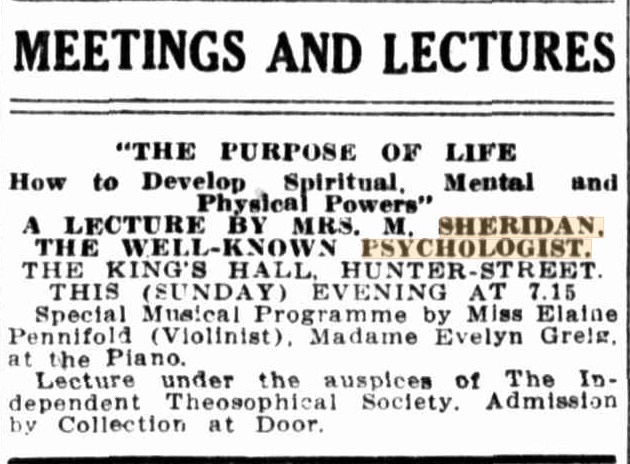
Advertising (1927, April 24). The Sun (Sydney, NSW : 1910 - 1954), p. 14. Retrieved from http://nla.gov.au/nla.news-article223239104
MEETINGS AND LECTURES
PUBLIC LECTURE
AT THE KING'S HALL. HUNTER-ST.
This Sunday Evening, at 7.15 MRS. M. SHERIDAN, well-known Psychologist, will lecture. Subject: "Your Creative Powers and Their Development." The New Psychology and Its practical application to your every-day life — Its relation to Theosophy, etc.
Brilliant Musical Programme Includes Item by Miss Hilda Boyle (Soprano). Mr. Eugene Ossipoff (Russian Operatic Baritone), and Madame Evelyn Grieg (Pianist). Collection at Door. Advertising (1928, March 25). The Sun (Sydney, NSW : 1910 - 1954), p. 22. Retrieved from http://nla.gov.au/nla.news-article222011161
A Farmers advertisement from then shows the genuine interest in this subject during this period:

Advertising (1928, September 8). The Sydney Morning Herald (NSW : 1842 - 1954), p. 1. Retrieved from http://nla.gov.au/nla.news-article16492611
PRACTICAL PSYCHOLOGY-A Lecture will be given by Mrs SHERIDAN In the Chamber of Commerce Building 233 George street on THURSDAY JULY 4 at 8 p m Subject THE ART OF LIVING Admission Silver Coin. Advertising (1929, July 3). The Sydney Morning Herald (NSW : 1842 - 1954), p. 19. Retrieved from http://nla.gov.au/nla.news-article16548743
PRACTICAL PSYCHOLOGY.-Mrs. SHERIDAN will give her usual Monthly Lecture at the Chamber of Commerce Building, 233 George-street, THURSDAY, 5th September, at 8 p.m. Subject: ‘’OUR CREATIVE POWERS’’. ADMISSION SILVER COIN. Advertising (1929, September 4). The Sydney Morning Herald (NSW : 1842 - 1954), p. 27. Retrieved from http://nla.gov.au/nla.news-article16581028
PRACTICAL PSYCHOLOGY.-Mrs. SHERIDAN will hold her usual monthly Lecture at Chamber of Commerce Building, 233 GEORGE-STREET, on THURSDAY. 7th NOVEMBER, at 8 o'clock. Subject- "MASTERING THE NERVES." ADMISSION SILVER COIN. Advertising (1929, November 6). The Sydney Morning Herald (NSW : 1842 - 1954), p. 24. Retrieved from http://nla.gov.au/nla.news-article16599241
To say good-bye to Mrs. M. Sheridan and her daughter, who are leaving by the Mongolia to-morrow on a visit to Europe, members of the Sheridan Psychology Club gave a party at the Kretschmann Club on Saturday. Topics for Women (1930, March 17). The Sun (Sydney, NSW : 1910 - 1954), p. 17. Retrieved from http://nla.gov.au/nla.news-article223701785
In 1930, she travelled to London and visited Dr Hugh Crichton-Miller’s Tavistock Clinic and worked at the child guidance clinic of child psychologist and psychotherapist, Dr Margaret Lowenfeld. At the Notting Hill clinic, Sheridan was exposed to the use of sand trays (‘wonder boxes’), toys and models that later became known as the Lowenfeld World Technique, and the inspiration for Dora Kalff’s sandplay therapy.
On her return the Lectures continued and a first go at a school began which was followed by Quest Haven at Mona Vale in 1935:
New Ways With Children At Child Guidance School
FREEDOM for the child. In the dark In the dark ages he may have had it. When he was permitted to be the little wild heathen he still is at heart, he' was happy. Now he is hedged in by all kinds of conventionalities which have left their effect on him in some way. Various schools of thought have realised this, and at different times and in different daces have tried to alter it. They have met with varying success.' Even Sydney has had several attempts at' honestly facing the problem of training children. Schools for children have been started along these lines, but have frequently sunk into oblivion after a short existence.
One of the most stable of these is The Child Guidance School, held every afternoon except Wednesday, by the Australian Psychology Centre at ‘The Block," George-street, Sydney.
Started last year' the little band of lone workers are now meeting with greater success. Parents are showing more confidence in them, and there is now a steady, attendance of pupils. Paradoxical as it may seem, it is nevertheless a fact that the success of this method of educating children ' depends almost entirely upon first educating the parent. Those who do not try to understand the aims of the centre soon lose interest and take their children away. It means work for the parent, it means patience, 'understanding of the child mind, and above all, it means subjugation of oneself in the interest of the growing child, and freely discarding the old protecting right of parental dignity, based purely on pride. Let us look on at the school for a moment.. It. is a bright sunny afternoon so the children are playing on the large roof of "The Block." Toys, wooden building blocks, sandtrays, tables, chairs, balls, string, bats, etc., are to.be seen everywhere and anywhere. Sometimes they are broken But that docs not matter. The child is not punished in any way. If he feels like breaking things, let him. It is better to, get it out of his system; Other times he feels like fighting. He may suddenly feel that the assistant sitting nearby is- a representative of parental authority to which he has had to bow ever since he first came into the world. He has now been told at this school that he can do what he likes. He would like to rebel. He would like to hit out blindly at that parental power. He does. He hits the assistant. He kicks. What happens? Nothing, the first time. He is deeply surprised. This is his first victory —the first time he has been allowed to win. The assistant directs his energy into other channels by giving him hammer, nails and a piece of wood. But this does not stop him from attacking the assistant again — and again, and when the latter feels that he has reached the stage of needing opposition, she supplies it, and the young man may find himself engaged in a miniature fight such as would result were he to indulge in that behaviour later in life. That is one of the things he has learnt to-day at this school.
See this child? He is strutting proudly about yelling, "Fares, please." He is not merely a tram conductor for the moment. He is his own father. He is, more than that, too, for he not only has power over a child, he has power over all the travellers on his imaginary train. Now he is better than his .... To a certain extent he is working out his inferiority complex.
There is a little girl. At home she has always been taught that she must be tidy. Everything must be put in its own little corner. Toys must be put back in their little boxes at night. How does she show it? When she plays with building blocks her training is apparent. Houses are built close up together. Each is partitioned off from its neighbor with a tidy dividing fence. All is compact and orderly. When' the game is over the little girl prepares to put the, blocks away. She is told that she does not have to put them away if she does hot want to. And invariably she certainly has absolutely no desire to put \ them away. Out of all the children who have attended the school not one so far has exhibited any inclination to pack things up after he has used them. Is it reaction to his home training? Absolute freedom is allowed at the school. The child may do anything he likes. Many are the children who have improved temperamentally and physically under this treatment. Nervous children have dropped their cloaks of shyness.
Blustering, young boys have found that, they need no longer talk loudly to attract ' attention to themselves. They have become normal, healthy lads. But it is not always a success. Parents defeat the work of the school by indifference or interference. They force their ideas and personality on to the child. They dominate him. Perhaps it is only with kindly guiding hands, but it is dominance all the same. One little fair-haired laddie showed a decided preference for girls' toys. His mother disapproved. She wanted him to be like other boys. Her sarcasm was gentle, but it had a an effect and he became deceitful in trying to do as she wished. He had to be true to his nature, so played with dolls on the quiet. It might look as if he were effiminate, and reflect on the mother. She was not thinking of her son. She thought only of what she wished him to be, and not what he was fitted for.
His first day at school he reverted instantly to dolls again in his new found freedom, but on his mother's entrance he hid them until the assistant said, "Oh, lots of little boys play with dolls," when he lovingly ' fondled them again. Left alone to follow his own inclinations such a child might develop into a dress designer, a physician with a real love of healing sick persons, or an artist.
The Child Guidance School is far from being a money-making concern. Only 1s per visit is charged while all the assistants give voluntary help. From 2.30 to 3.30 p.m. on Mondays and Thursdays, children under three years are admitted. Tuesdays and Fridays those over three, but under ten years, attend. No appeal to the public is ever made for financial assistance, and even the centre as a whole only derives income from the entrance money to the lectures and subscriptions of members. Although a booklet is published quarterly it is not a money-making venture, and is not sold with the idea of making profit.
.jpg?timestamp=1660098301034)
Left: Then We come to hammer and nails. Here the lads are hammering with a will, and after a few hammers they no longer hit their thumbs, nor do they long to put nails into mother's best mahogany suite.
Who’s wrong with a bit of paint on the old battleship? But how many parents sec eye to eye with their small boys who long for a paintbrush at home? Not many . So Sonny Boy works it off at the Child Outdance School. No harm, either, in giving the old gramophone handle a turn. He possibly cannot play with the home one and longs to, so he turns this one on to life.
Boys will be boys, especially where they can scale up and down ladders till they don't want to anymore. In this Way they work out ...longings, inherited, maybe, from their monkey ancestors.
Sand will ever hold a fascination for children, and making mud pies is, of course, the best fun any properly -brought up child can have. In fact, the more " properly " he is brought up the more he revels in mud pies when he gets a chance.
For girls, there are plenty of dolls to play with, and lots of patches to sew into dollies clothes.
.jpg?timestamp=1660098350508)
.jpg?timestamp=1660098375299)
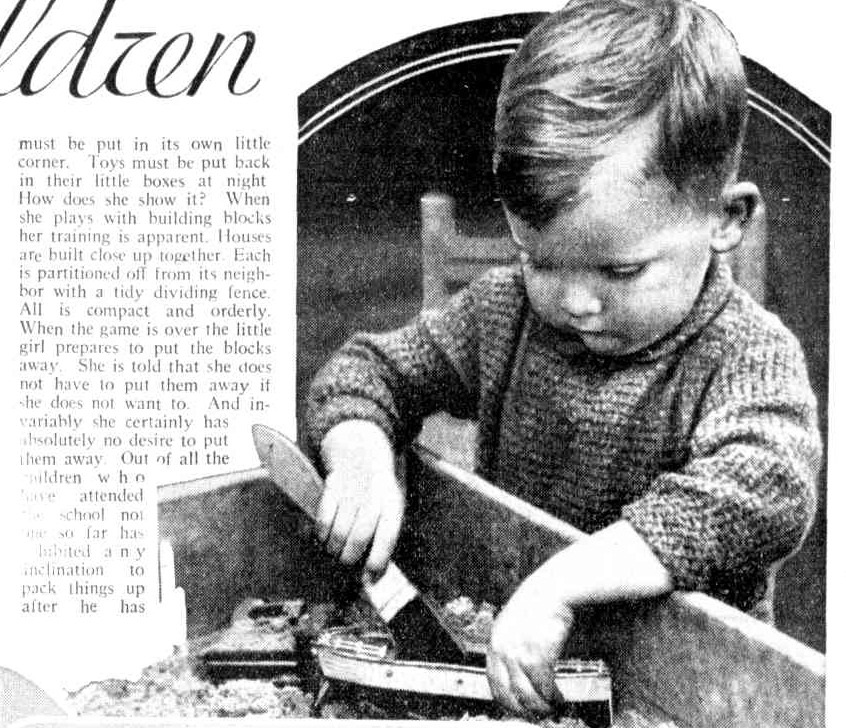
Then is a thrill in putting on a record without anyone saying, "Be careful, dear, don’t break it," for at the Child Guidance School the kiddies are allowed to break as many as they want to and nothing is said. Kind friends keep this school supplied with old records.
The Australian Psychology Centre is not of recent origin. It has been in existence for eight or nine years, but has only been so designated for two years. Its only interest is not the teaching of children, for parents and any others interested may also join the Centre, attend the lectures and borrow books from the library. On the first Thursday in every month lectures are given on different aspects of Psychology. The third Thursday in the month is taken up with illustrated travel talks, while the first Friday afternoon is devoted to lectures to mothers.
Mrs. M. Sheridan, who founded the original Psychology Club, was for two years a worker at the Child Guidance School sponsored by the London university in London She herself, also had a large practice with many eminent London personalities. She has carried on her work in Australia, but a few weeks ago left Sydney to visit other psychology schools abroad. On her return Mrs. Sheridan hopes, to start an all day boarding school.--G. M. Mills. New ways with children (1934, July 22).The Sun (Sydney, NSW : 1910 - 1954), p. 25 (STUMPS). Retrieved from http://nla.gov.au/nla.news-article229572038
Parents and Their Problem Children
Mrs. Mary Sheridan's Mission Overseas
MRS. MARY SHERIDAN, who returned yesterday by the Romolo from an interesting European trip, which was undertaken to discover what is being done abroad in the way of child psychology, is full of eager plans for the establishment of similar work In Sydney. Before she went away in February, Mrs. Sheridan left a clinic of applied psychology in perfect running order at The Block, George-street, and in the three years of its existence, great work has been done. Now a daily nursery school, for kiddies from two to six, and later a boarding nursery school, will be progressive additions to this. Attached to the clinic, too, will be an advisory station, an idea which Mrs. Sheridan has adopted from overseas, in which parents may consult and discuss their problems, domestic, mental, etc., in connection with their children.
Civilisation, such as it has been, has reached its end, says Mrs. Sheridan, unless a special effort is made to relieve mankind of some of the repressions which are forced upon it in childhood. The world restlessness, which is not noticeable in Australia, but with which the whole of Europe Is bristling, is an indication of this, and the psychologists over there are thoroughly alive to the situation and are doing remarkable things with the young. But, unfortunately, it takes about 30 years for such education as they are tackling to permeate a civilisation so that a general good will necessarily be delayed.
Mrs. Sheridan said her mission was, of course, more especially concerned with problem children, and for this purpose she visited such famous schools as Russell's, Andrew Neill's and Bedale's school. Andrew Neill, she says, has a perfect genius with delinquent children, and kiddies are allowed to say and do anything they like when first they go there, and so find an outlet for all the repressions which have been responsible for their delinquency.
"Our own clinic is more or less for children whose parents do not know the mental make-up of their own children, who become difficult to manage and backward at school," says Mrs. Sheridan. "A child of ten who is difficult is only three years old emotionally. The object of the school Is to get the parents to co-operate with the worker, who will point out the mental characteristics of the child which need help. Unless the parent is co-educated herself with regard to the emotional life of the child, it Is not possible for a child to become a good citizen."
Mrs. Sheridan illustrates her point by Instancing a child of five with remarkably destructive tendencies, due to living in a home of parental quarrels. When he first went to the clinic, he destroyed everything he saw and was astounded that he was never told not to. The mother was educated, the wrong environment changed, the little fellow worked out, bit by bit, most of his destructive impulses, and is now on the verge of being a thoroughly normal child. Parents and Their Problem Children (1934, October 14). The Sun (Sydney, NSW : 1910 - 1954), p. 34 (COUNTRY EDITION). Retrieved from http://nla.gov.au/nla.news-article230325478

Advertising (1934, October 31). The Sydney Morning Herald (NSW : 1842 - 1954), p. 18. Retrieved from http://nla.gov.au/nla.news-article17123690
By the next Spring the school at Mona Vale, as Quest Haven, was open. A little about the school from a 1935 periodical:
FREEDOM FOR THE CHILD
Novel Training Methods Adopted at Quest Haven School, Mona Vale
WHY should children be given freedom when strict discipline has always been thought right for character building? This Is the very reasonable question which thinking people ask when first confronted with the Idea of freewill in schools. Its answer is to be found In the work at Quest Haven School at Mona Vale. The reason that such methods as encouraging freewill are used in this modern school is that no child can develop to his best if he is forced to 'be good.' Behavior imposed by dominating the child's will is the behavior which the child forgets as soon as he possibly can. Self-discipline is the only habit that remains with us when all fear of punishment is absent.
The Idea that freedom is licence is widespread, and understandable. We all know the child whose parents allow it to do as it pleases. Such a child is frequently unattractive and utterly regardless of others. This is not the freedom or Quest Haven. Here a child is allowed freedom with guidance. If he has no pattern given him of how to behave, how can he be expected to grow with desirable habits? The pattern of behavior must be given first by the grown people that surround him. If they are kind and courteous and understand the difference between the things a child does because he must, and those he does because he has not yet learned better habits, the child grows confident and unconsciously imitates. There is nothing so totally unnecessary in training a child as scolding, nagging, punishments and fear.
If Vernon, aged four, threatens to damage Shirley's tricycle he may be asked what he would give Shirley to damage from among his toys. The older children form their own regulations and see that they are carried out. For a teacher to override a decision in a thoughtless way would be a serious office. At a meeting, at which the children choose their own chairman from among them, the teacher sits on the floor and treats the young president with the courtesy he or she would expect. If he wishes to speak he raises his hand, and may or may not be allowed to speak next, the choice lies with the child.
He guides the progress of the meeting in an inconspicuous manner, if necessary, but this can be done without taking the initiative out of the hands of the children themselves. Here are men and women of the future being trained to reason for themselves every problem of life, that confronts them— training in Initiative, Judgment, self-control, courage, all the qualities which are too frequently stolen from children by early overprotection and thoughtless adult discipline. FREEDOM FOR THE CHILD (1935, December 12). The Farmer and Settler (Sydney, NSW : 1906 - 1955), p. 7. Retrieved from http://nla.gov.au/nla.news-article117212339
Her daughter Katharine was an Artist who exhibited in Sydney during this time and also appeared to have Artist friends to the premises, one notable fellow lady Artist being Linocut proficient Ethleen Palmer (1906-1958) whose works still command thousands of dollars, some of them of this area during those years.
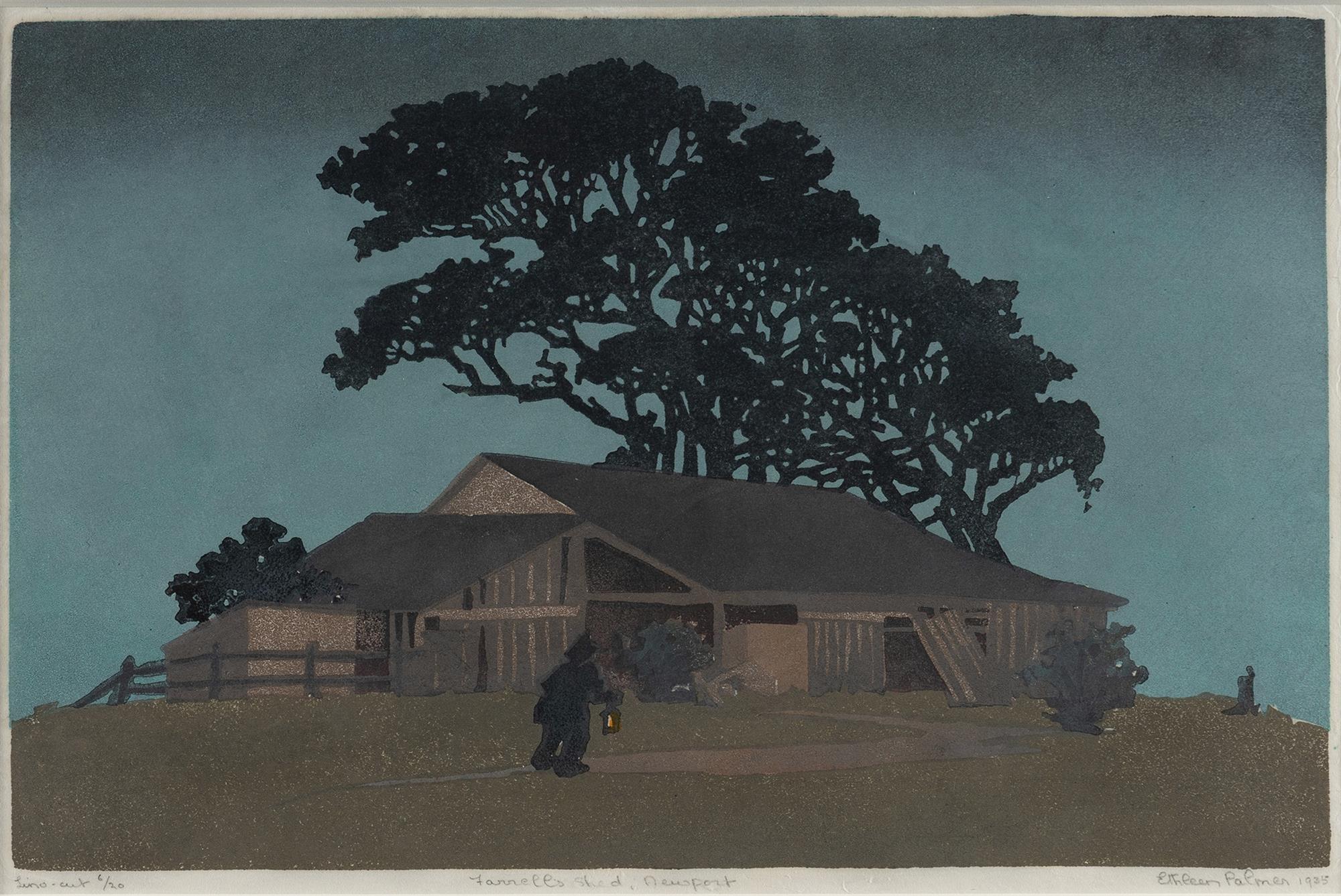
Ethleen Palmer (1906-1958), 'Farrell's Shed, Newport,' 1938., Linocut 6/20, 19x29cm Est: AUD1,000 sold Jul. 03, 2022.
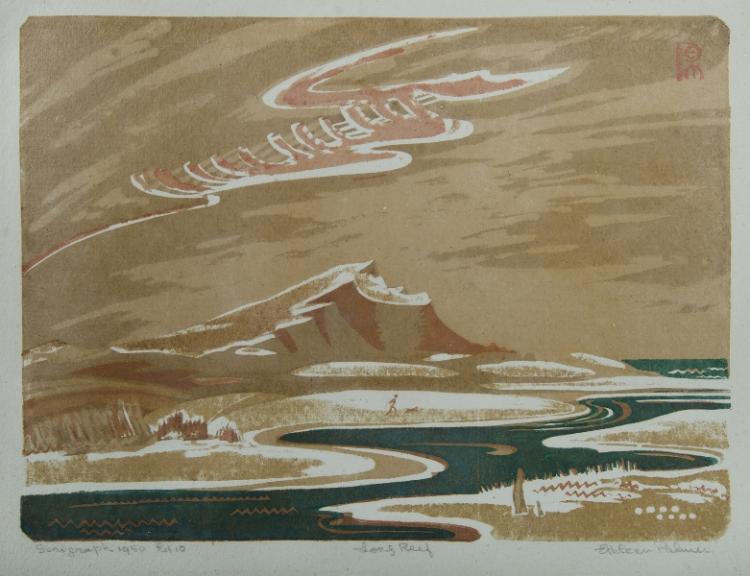
'Long Reef', 1950 by Ethleen Palmer
Ethleen Palmer major contributor to the female print movement of the 1920s and 30s. Her contemporaries were Preston, Proctor, Spowers, Blackburn etc. Rather than imitating the style adopted by these iconic artists she created prints with a distinctly Japanese feel. Her ability to capture movement and nature in the Japanese style gave her the name “The Australian Hokusai”. The Sydney Morning Herald in 1938 were so confident in her ability and talent that they called her “Australia’s leading Linocut artist” a big statement considering the other fantastic printmakers of the period. A talented and often overlooked Australian artist who will form part of future Mona Vale Artists history insights.
Katherine Sheridan's small watercolors have charm and merit. ART SOCIETY'S EXHIBITION (1935, June 9). The Sun (Sydney, NSW : 1910 - 1954), p. 14. Retrieved from http://nla.gov.au/nla.news-article230260685
QUEST HAVEN SCHOOL, MONA VALE, N.S.W. A Progressive Modern Boarding and Day School for Boys and Girls, from Kindergarten age. The education is on psychological lines for the development of individual character. NEW TERM begins 20th January. Tele.. Y9123. MARY SHERIDAN. DIRECTOR. Advertising (1936, January 25). The Sydney Morning Herald (NSW : 1842 - 1954), p. 31. Retrieved from http://nla.gov.au/nla.news-article27995968
One of the most interesting oils is a medium-sized painting, "Death Mask," by Katherine Sheridan. ART SOCIETY EXHIBITION (1936, June 9). The Labor Daily (Sydney, NSW : 1924 - 1938), p. 6. Retrieved from http://nla.gov.au/nla.news-article237785162
AUSTRALIAN PSYCHOLOGY CENTRE 7th Floor
Dymock s Buildings George street
MARRIAGE ADVISORY BUREAU
A series of four Lectures will be given by MARY SHERIDAN on the Problems of Marriage and Parenthood Lectures commence Monday May 11th at 8 pm Subsequent dates May i8 25 June 1. Fee 10/6 for series. Advertising (1936, May 6). The Sydney Morning Herald (NSW : 1842 - 1954), p. 13. Retrieved from http://nla.gov.au/nla.news-article17332066
WOMEN'S WORK.
MISS KATE BEARD, who came to Sydney from London some years ago, Is a well-known painter of animals. Her doggie studies, many of them lent by the owners of the pictures, are notable contributions to the Australian Art Society's Exhibition this month. Lady Gowrie's pet Australian terrier, Yonka, has been one of Miss Beard's "sitters." Katherine Sheridan, In a study of a small boy, "James," and in a death mask impression which she has Imbued with the peace, rather than the sombre mystery of death, shows considerable power and technique. ARTISTS MUST LIVE (1936, June 16). The Telegraph (Brisbane, Qld. : 1872 - 1947), p. 18 (LATE CITY CABLE NEWS). Retrieved from http://nla.gov.au/nla.news-article183375912
ART EXHIBITIONS.
WOMEN ARTISTS.
The exhibition by women members of the Industrial Art Society, which has been placed on view at the gallery in the Victoria Arcade, is notable for some water-colours by a New Zealand artist, Gwen Nelson. Only recently arrived here, Miss Nelson represents the Sydney scene with much technical smoothness, delicacy, and gaiety in "A Street, Bondi," the washes have been applied in singularly clear style, and "Queen's Club, Early Morning," is full of lively light. Betty Millar's "Circular Quay" has some charming passages of colour in it. Laura Booth, in "Old Warriors," provides a pleasant study of trees. Galeena Sobolev's. " Landscape " is a true water-colour drawing, in which the colour is used to embellish and enrich, rather than to provide the linear substance of the subject. Lilla Cabot Moffat's "Darling Point Garden" has animation and an agreeably glowing and harmonious colour scheme. Ethleen Palmer's "The Rivals," is a delightful lino-cut depicting tiny birds. Dora Jarret presents a pleasant nude study, and Sheila Macdonald's picture of the Mint in Macquarie-street is attractively reposeful. Then there are Violet Bowring's pastel portraits: Hedley Parsons' "Derelicts," a faithful representation of an old rusted hull; Gwen Ramsay's decorative oils; and interesting pictures by Katherine Sheridan and Nora Vigeveno. ART EXHIBITIONS. (1936, August 6). The Sydney Morning Herald (NSW : 1842 - 1954), p. 6. Retrieved from http://nla.gov.au/nla.news-article17258302
Then all of a sudden Mary Sheridan is dead:
SHERIDAN.— August 19th, 1936, at her residence, Bower Street. Manly. Mary, wife of John Joseph Sheridan, and loving mother of Doreen Katherine. Family Notices (1936, August 20). The Daily Telegraph (Sydney, NSW : 1931 - 1954), p. 6. Retrieved from http://nla.gov.au/nla.news-article247062147
NSW BDM’s SHERIDAN MARY 19194/1936 father: JAMES mother: NOT KNOWN at MANLY
SHERIDAN-The Funeral of the late Mrs MARY SHERIDAN will leave her late residence Edgewater, Bower street Manly THIS THURSDAY at 10 a m for the Crematorium Northern Suburb. WOOD COFFILL LIMITED Belgrave street Manly Family Notices (1936, August 20). The Sydney Morning Herald (NSW : 1842 - 1954), p. 7. Retrieved from http://nla.gov.au/nla.news-article17262643
Katherine is now in charge:
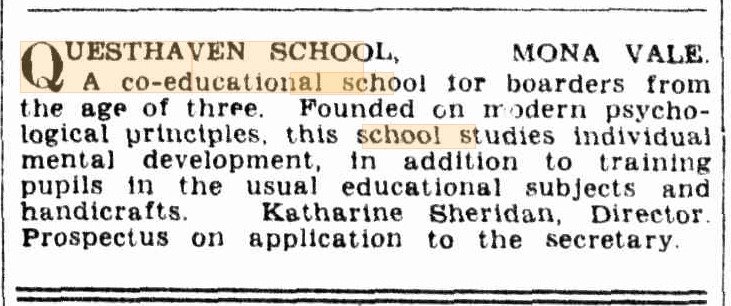
Advertising (1936, November 11). The Daily Telegraph (Sydney, NSW : 1931 - 1954), p. 16. Retrieved from http://nla.gov.au/nla.news-article246978747
A 10-YEAR-OLD PRODIGY AT NOVEL SCHOOL
MELBOURNE. Today.
A remarkable mask of a man's face has been made by Brian Williams, 10-year-old sculptor of unusual merit. Without tuition, he has been encouraged to express his gift for sculpture in his own way, at his school, Quest Haven, the 'self-expressionist' college at Mona Vale. His work is excellent, says the director of the College (Miss Katherine Sheridan). 'The man depicted is primitive and so, in a sense, is the mind of the lad who modelled- it.' Quest Haven is the school where 'don'ts' and 'must' are forbidden, and where the children are allowed to act as they please and even to hail their teachers by Christian names. A 10-YEAR-OLD PRODIGY AT NOVEL SCHOOL (1936, November 21). Mirror (Perth, WA : 1921 - 1956), p. 2. Retrieved from http://nla.gov.au/nla.news-article75482767
NOVEL METHODS OF TEACHING
THREE years ago the Quest Haven School for children from three to 12 based on modern methods of education and psychology, was started at Mona Vale by the late Mrs. Mary Sheridan, much to the astonishment of Sydney educationalists, who could not see how such a school would be a success.
The basic idea of the school is that children should not be repressed in any way, and that all their creative and original ideas should be given full expression. The children are allowed to choose their own subjects for study, apart from ordinary school lessons, and so develop their own natural talents. Their recreation follows on the same ideas- They are given perfect freedom and this makes them more self-reliant.
These tolerant methods, according to Miss Katharine Sheridan, who took over the directorship of the school after the death of her mother a year ago, turn the "problem' child into one who is constructive and creative, for the child has no time to be naughty, as he is kept fully occupied. The school has been such a success that a company to control It is about to be formed by the parents and their friends, and it has been decided that the company will devote all the profits to further developing the school. The conference of the New Education Fellowship, to be held in August, will probably centre Interest in this school, as It is the only one of its kind in Sydney, though schools of this type are common in England. Curriculum Of School Some of the ways In which Quest Haven differs from other schools are:—
The manner In which the children are divided, for convenience sake, into "Smalls," "Bigs" and "Middles." The children do not call their teachers "Mr,," "Mrs." or "Miss," but by friendly nicknames. Never once has this privilege been abused. No competitive sport is allowed. Community games, which develop a co-operative spirit, are preferred. Children do not have to wear a regulation uniform. They are dressed, during the week, in sturdy, sensible clothes that can be soiled and rumpled without qualms. The children have a variety of interests. Several of them produce a magazine six times during a term. Instead of writing essays and compositions in class, they have an outlet for literary ability in the magazine. They write their stories and poems in it, just as if they were telling them, without any obvious attempt at being literary. Clay modelling is the favorite hobby of practically all the children, and every day they spend some time at the benches at the bottom of the garden making all kinds of figures. They dig the clay out of a pit which adjoins the benches, model the figures, and bake them in the sun. Three weeks ago the school gave a concert, at which the star turn was a marionette show. The children made and dressed all the dolls themselves, erected the stage and arranged the lighting. The play chosen was " Cinderella.” and the music, accompanying it was Eric Coate's "Cinderella Suite." NOVEL METHODS OF TEACHING (1937, July 29). The Sun (Sydney, NSW : 1910 - 1954), p. 38 (LATE FINAL EXTRA). Retrieved from http://nla.gov.au/nla.news-article231084301
SCHOOL FOR "SMALLS," "BIGS," "MIDDLES"
A number of pupils of Quest Haven School, Mona Vale, enjoy their clay modelling on sunny benches at the bottom of the garden (top left). The clay is dug from a pit just at the side. The main school house of Quest Haven is in the background.
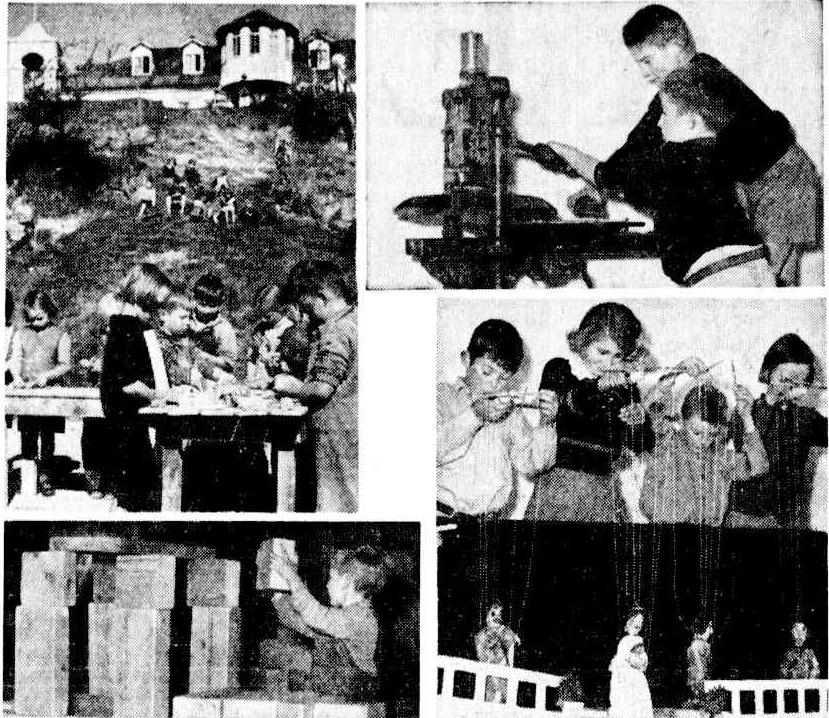
Brian Williams and John Winn (top right) look over their printing-press which produces the Quest Haven School Magazine. A small pupil (lower left) constructs a fine boat with out-sized wooden blocks. At lower right are four pupils (from left), Brian Winn, Peggy Winn, Charles Hardie and Elva Hardie, with their Cinderella marionettes which they made and dressed. SCHOOL FOR "SMALLS," "BIGS," "MIDDLES" (1937, July 29). The Sun (Sydney, NSW : 1910 - 1954), p. 38 (LATE FINAL EXTRA). Retrieved from http://nla.gov.au/nla.news-article231084302
SITTING FOR HIS PORTRAIT
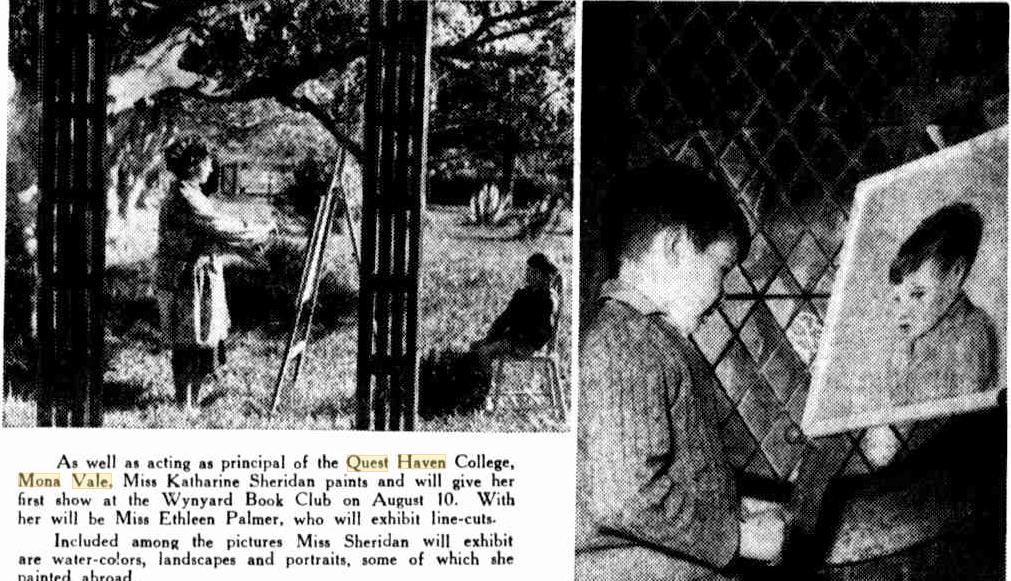
As well as acting as principal of the Quest Haven College, Mona Vale, Miss Katharine Sheridan paints and will give her first show at the Wynyard Book Club on August 10. With her will be Miss Ethleen Palmer, who will exhibit lino-cuts. Included among the pictures Miss Sheridan will exhibit are water-colors, landscapes and portraits, some or which she painted abroad. In the above picture Miss Sheridan is found putting the finishing touches to the portrait of one of her pupils, James Jackson, who is an interested model. The setting is a sunny corner outside Miss Sheridan's studio, at Mona Vale, which is a quaint old room made entirely of ship's timbers. In the second picture the model, with a mullioned window for a background, admires the finished picture of himself which Miss Sheridan has catalogued as "James." SITTING FOR HIS PORTRAIT (1937, August 5). The Sun (Sydney, NSW : 1910 - 1954), p. 42 (LATE FINAL EXTRA). Retrieved from http://nla.gov.au/nla.news-article231088294
AN exhibition of oil paintings, water-colours, and linocuts by the Misses Ethleen Palmer and Katharine Sheridan will be opened by Mr. B. J. Waterhouse at the Wynyard Book Club on August 10 at 3 p.m. COMING EVENTS.—COMMITEES MAKE PLANS (1937, August 5). The Sydney Morning Herald (NSW : 1842 - 1954), p. 20. Retrieved from http://nla.gov.au/nla.news-article17380834
Is This Genius Or is It Merely Clay ?
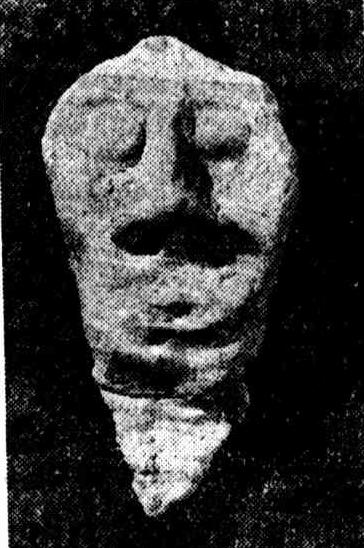
This is not a bust by Jacob Epstein, entitled ."Education in the New Era." It is a post-impressionist portrait in clay of Paul Bovet, Director of the J. J. Rousseau Institute for Educational science at Geneva. It was executed by six-year-old John Hickey, a pupil of the Quest Haven School, Mona Vale. When Dr. Bovet, who was a delegate to the New Education Fellowship Conference, visited the school, young John studied him intelligently, and, after he had gone, ran into the grounds, quarried his own clay, and dashed off his impression of the distinguished visitor, In his interpretation of the educationist personality,; the artist has undoubtedly caught something of the brooding and detached spirit of scientific investigation. The treatment of the beard may be open to criticism — but then, everybody has not seen Dr. Bovet’s beard. Is This Genius Or Is It Merely Clay ? (1937, August 22). The Sun (Sydney, NSW : 1910 - 1954), p. 11. Retrieved from http://nla.gov.au/nla.news-article231083230
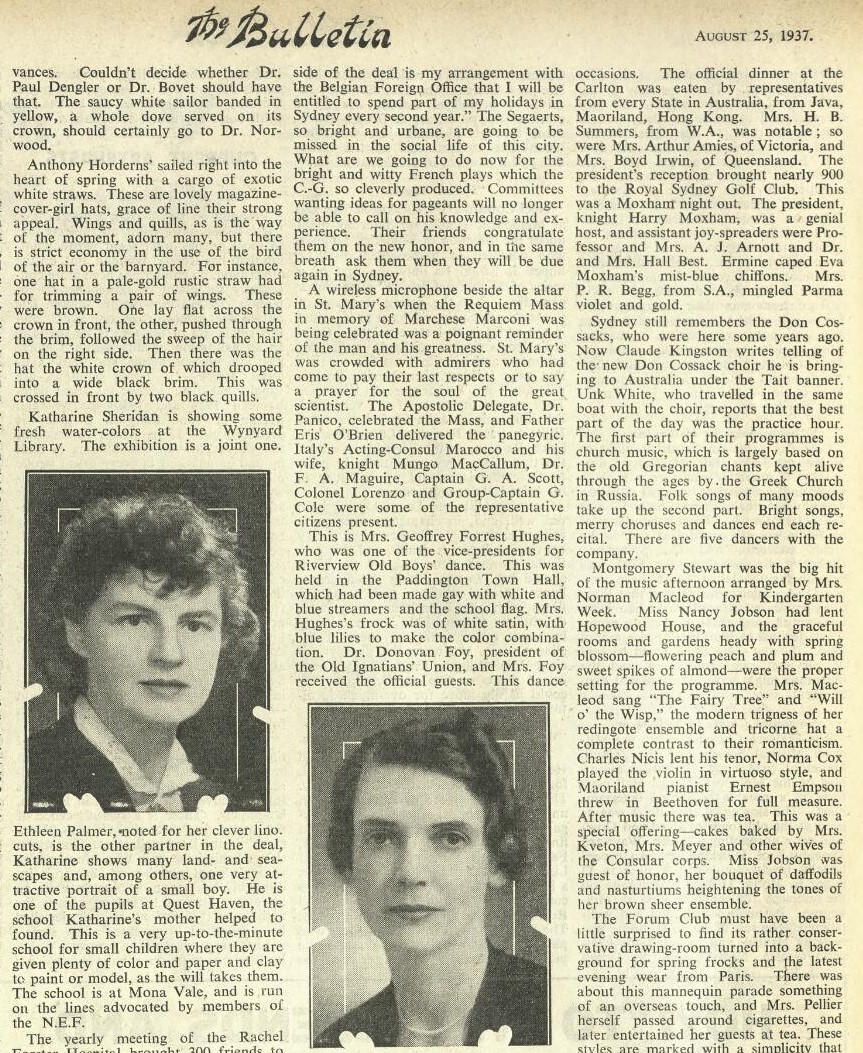
1937 Bulletin mention of another joint Katharine and Ethleen Exhibition
With the passing of Mary a company was set up, with the parents the main shareholders:
Questhaven Schools Pty., Ltd., nominal capital £2000. To establish and carry on at Mona Vale or elsewhere a school or schools. Subscribers: L. W. Burrell, F. C. Winn and E. W. Statham. COMPANY REGISTRATIONS (1937, September 17). The Sun (Sydney, NSW : 1910 - 1954), p. 14 (LATE FINAL EXTRA). Retrieved from http://nla.gov.au/nla.news-article229441874
SOME COMING EVENTS.
MR. PERCY SPENDER will open the fete which will be held at Quest Haven School, Mona Vale, next Saturday, at 3 p.m. The fete is in aid of the school, and the pupils have made an "Aunt Sally," which will be one of the entertainments. The new tuck shop, which is built like a log cabin, will be a stall for the afternoon.' SOME COMING EVENTS. (1937, November 18). The Sydney Morning Herald (NSW : 1842 - 1954), p. 24. Retrieved from http://nla.gov.au/nla.news-article17409594
In February 1938 the Quest Haven school ended up in the newspapers for all the wrong reasons:
KIDNAPPED CHILD.
DEMAND FOR RANSOM.
Taken From Car.
A boy, two and a half years old, the son of Mr. and Mrs. Ronald Powles, of Pacific Parade, Deewhy, was kidnapped from his father's car at Narrabeen yesterday morning. Later, a demand for £300 ransom was made.
After his father had frantically searched for the boy, he received a mysterious telephone call. A man's voice told him his child was safe and would be released on payment of the ransom. Apparently Interrupted, the man said he would telephone again, and rang off. He has not telephoned since.
Mr. Powles was warned that he must drop all negotiations with the police, but no threat of violence was made against the child.
A large squad of police is searching the Narrabeen, Deewhy, and Manly districts.
This is believed to be the first case of kid-napping of a child for ransom in New South Wales.
The boy, Phillip Charles Powles, was seated in his father's car while Mr. Powles, who is the operator at the Narrabeen Theatre, was inside inspecting the machinery. When Mr. Powles came out after 10 minutes the boy had disappeared.
QUIET SIDE-STREET.
The theatre is in a quiet side-street near the Narrabeen tram terminus. Opposite the theatre is a vacant allotment with low grass and no trees. Nearby are houses and several shops. There are no trees in the street and a clear view of the section near the theatre may be had from the main Pittwater Road.
Mr. Powles's car is a single seater "baby" car, with a canvas hood. When Mr. Powles left the boy he was sitting beside the driver's seat.
He is described as a friendly, intelligent child for his age. It was Mr. Powles's custom to take the child often to the theatre and he always left him sitting in the car. The boy became well known to residents of the district.
Mr. Powles is certain that he was away from the car no longer than 10 minutes yesterday. "While he was in the theatre he heard no sound from the child. When he entered he noticed no one in the immediate vicinity of the theatre and when he came out there was nothing to suggest to him that his son had been kidnapped.
At first he imagined that the child, for the first time, had strayed away, from the car, and only when a hasty search revealed no sign of the boy did Mr. Powles become seriously alarmed,
He immediately obtained the help of shop-keepers and residents who scoured the streets and the foreshores of the Narrabeen lagoon. When this failed to reveal any trace of the missing child Mr. Powles telephoned the police to obtain assistance in his search.
ACCIDENT FIRST FEARED.
At this time it was still assumed that the boy was merely lost and, although it was feared that he might have met with an accident or fallen into the lagoon, there was no suggestion of anything sinister.
After a fruitless search of two hours, Mr. Fowles returned to his home at Deewhy to Inform his wife, who is not in strong health, that the boy was missing. Mrs. Powles and her mother immediately accompanied Mr. Powles back to Narrabeen to assist in the search.
It was on his return to Deewhy that Mr. Powles first heard a suggestion that his son had been kidnapped, and an hour later, at the Deewhy Theatre, Mr. Powles himself received a mysterious telephone call, stating that the boy was kidnapped and being held lor £300 ransom.
FATHER'S STORY.
Telling a "Herald" representative last night of this 'phone call, Mr. Powles said:
"A man's voice said: 'Is Ronny Powles in?' I said, 'Yes,' and he said: 'Listen. Your little boy is held for £300 ransom.'
"I was dumbfounded, and said: 'I haven't got that much money.' He replied: 'That doesn't matter. Your family has. I suppose you have got in touch with the police. You will be wise if you call them off.'
"Then he got excited and said hurriedly: I will ring again in two or three hours.' He then rang off.'
Alarmed by this conversation, Mr. Powles immediately advised the local police, who communicated with the Criminal Investigation Branch. Detectives were then rushed to Dee-why, and with extra police sent from Sydney and Manly searched the whole area between Manly and Narrabeen. This search was still being continued early this morning.
Mr. Powles said last night that there was not to have been any screening at the Narrabeen Theatre last night and the reason he went there with his son at 9.45 a.m. yesterday was to prepare for Friday night's programme.
"I often take Phillip with me on the trip," said Mr. Powles, "but I always leave him out-side in the car because I have been afraid that he might come in contact with some electrical apparatus in the operating box and be electrocuted.
"This morning the mechanism was in good order, and I spent only about 10 minutes testing it. When I returned to the car I was surprised to find Phillip missing.
"I had locked the car doors, and he had never climbed out before. I thought he must have learnt the bad habit and was wandering about nearby.
"I searched the streets near the theatre, without finding him, for about half an hour, Then I became alarmed and secured the help of shopkeepers and anyone else I could find, No one remembered having seen the boy,
SEARCHED SHORES OF LAKE.
"We made an extensive search along the shores of the lake, in the dense scrub, and anywhere else where we thought the boy might be hiding.
"When we found nothing I Informed the police.
"By this time I knew his mother would be anxious. I drove home, and my wife and mother-in-law, Mrs. L. Williams, came back with me and joined in the search.
"About 1 o'clock I returned to Deewhy, where I met Mr. James Johnson, of Oaks Avenue, Deewhy, who had been working In the Deewhy Theatre. He said: 'I had a queer message for you this morning. About 11.30 o'clock a man telephoned for you. He seemed strange in his manner and said that he would call again at 2 p.m."
"I waited In the Deewhy Theatre with my wife and at 2 o'clock the man rang again."
Mrs. Joyce Powles said: "The whole thing seems incredible. I am numbed to realise that someone has taken Phillip. It all seems like something in a silly book.
"Phillip is a baby who would never have got out of the car by himself. Someone must have given him a lolly to keep him quiet and then lifted him out of the car over the locked door.
"I hope that whoever has taken him will treat him well."
DESCRIPTION OF CHILD.
The police last night issued the following description of the missing child:
Two feet in height, sturdy build, fair complexion, very fair hair, and blue eyes.
When he disappeared he was wearing a white shirt with long sleeves rolled up to the elbows, light blue linen romper trousers, which buttoned on the shirt. He was without shoes or hat.
According to the police, the child knows his name, but does not speak distinctly.
The police have no doubt that the person responsible for the removal of the boy knows both Mr. Powles and possibly the child also. The police have learned that Mr. Powles was regarded by many people in the district as being well-to-do. The manner of address adopted by the man who telephoned Mr. Powles has also suggested to the police that if he had not already met Mr. Powles he at least knew something of his home life and possibly acquaintances.
Early in the night the police dragged the Narrabeen lagoon to clear away any suggestion that the telephone call had come from someone who knew that the child had met with an accident and hoped to make capital of it.
Narrabeen residents could not give much assistance to the police. They did not remember having seen any strangers, in the vicinity yesterday, nor could they recall having noticed a car or other vehicle enter the street in which Mr. Powles's car was parked.
A large squad of police, directed by Detective-inspector Matthews, Detective-sergeants McRae and Tassell, made a quick reconnaissance through the Narrabeen, Deewhy, and Manly districts. Detectives interviewed practically everyone who might have seen the boy taken from the car at Narrabeen.
The kidnapping has caused intense excitement in the district, where the Powles are well known. Residents sat up in their houses or stood about the streets until a late hour last night discussing it.
Police broadcast the boy's description last night and early this morning, and asked that anyone seeing a boy resembling Phillip Powles should, immediately telephone the nearest police station.
After broadcasting, the Manly police received many reports of snowy-headed boys being seen in practically all parts of the metropolitan area.
One report particularly interested the police. A man telephoned that shortly before dark he had seen a young boy, whose description tallied in all respects with that of Phillip Powles, walking along a road near the Elanora golf links, Narrabeen. The man said that he remarked that he was surprised that any mother could allow so young a child to wander in the bush, but, as he supposed someone hidden from him was watching the child, he took no action.
The area is a maze of tracks in fairly rugged and well-wooded country. A large force of police will begin searching the locality at dawn to-day. (Portrait on page 12.) KIDNAPPED CHILD. (1938, February 25). The Sydney Morning Herald (NSW : 1842 - 1954), p. 11. Retrieved from http://nla.gov.au/nla.news-article17427377
BABY BOY KIDNAPPED, HELD FOR RANSOM
DEMAND FOR £300 IN MYSTERY TELEPHONE CALL
Child Disappears From Father' s Car Outside Narrabeen Theatre
PHILIP CHARLES POWLES, aged 2 1/2, was kidnapped yesterday from his father's car outside the Roxy Theatre, Narrabeen, and is being held for ransom.
The kidnapper demanded £300 from the father in an anonymous telephone call. "Don't make contact with the police " he was warned , "or you might not see your son!" At a late hour last night the child had not been found, despite a long search by four detectives and more than 20 police. No further word has been received from the kidnapper. The boy's mother, Mrs. Powles, is expecting another child within 24 hours. At a conference early this morning, the police stated that they believed the kidnapper did not travel more than 30 or 40 miles, probably by car, and telephoned Mr. Powles from within the district.
Missing Boy's Description
The description of the missing boy is :
Fair hair, fair complexion; blue eyes; sturdy build; about 2ft. high; dressed in white shirt, long white sleeves, probably rolled up to the elbow, light blue linen pants buttoned on to the shirt; no shoes or hat. The child, can talk a little, but not very distinctly. He knows his name and can speak It well enough to be under-' stood. Because his father frequently took him In his car when attending the theatres, the child was used to meeting people and; would not be too shy to speak up and give his name when asked. The father of the missing child, Ronald Powles, aged 24, of Pacific Parade, Dee Why, is an operator at the theatre. He also visits several other theatres in the district to post bills and programmes. As was his custom, he was on a round of the theatres yesterday, and called in at the Roxy, Theatre, Narrabeen, That was at 10 a.m. He stayed in the theatre for about 10 minutes, and when he came out found that the-child had gone. He thought that the child had climbed out of the car and had wandered away. "Several people were about at the time," said Mr. Powels, "and I asked them if they had seen Philip. None of them had. "We then began to search the nearby scrub and the fringes of the Narrabeen Lake, a hundred yards away."
He then went to the Dee Why Theatre, reaching there about 11.30, and was immediately told by the operator (Mr. James Johnson) that there had been a telephone call for him at 11.15. "I can't be bothered with phone calls," said Mr. Powles. "I have lost my boy.
"Good heavens," said Mr. Johnson, "the man who rang said the message was about your boy." "What did he say?" asked Mr. Powles. :'He said, 'Is Mr. Powles there?' "I said, 'No.' "He said, 'All right. When he comes in tell him that I can tell him about his child, and that I'll ring later.'" "I thought," said Mr. Powles, "that this might mean that someone had found the, child, and had phoned the theatre to tell me. "At the same time, I couldn't understand why they had not left a straightforward message to say where the child was. "I decided, however, that the best thing to do was to wait until the man phoned again. "I rang the Narrabeen police and told them that my boy was missing, that I and some others had searched for him for about ah hour, and that someone had "phoned a message to the theatre to say he could tell me about the child." Meanwhile Mr. Powles was worried about his wife, who would be wondering why he and the child had not returned home.
The Dee Why police sent out three men to join in the search. He decided that he had better run down to his home in the car— about four minutes' drive. Mrs. Powles returned with him to the theatre, and they stayed there until about 2.30. The telephone rang and a man's voice asked for Mr. Powles. "I have your son," said the voice. I am holding him for £300." "Don't be foolish," said Mr. Powles. "This is no time for. Joking. I have not the money." The voice, ignoring the interruption, continued, "Don't make contact with the police or you might not see your son. I will ring later." The mysterious caller then rang off.
Broadcast Warning By Police
Mr. Powles at once rang the police and told them of this telephone conversation. "The voice," he said, "was that of a young man. He was in a great hurry and very nervous. I think he rang from a public phone."
Detective-Sergeant Leary and Detective Wilks, of the C.I.B., and Detective-Sergeant Tassell and Detective McNeil, of Manly, went to Dee Why and went over the case with Powles. He could help the detectives little In their investigations, having no idea of anyone who would steal his child and demand money. It was thought possible that the child had wandered away from the car and drowned In the lake, and that some perron, hearing of the search, had phoned making the demand on Powles. About 20 police were brought from the mty to Join men under Inspector Wen-ham, of Manly, in a further search of the neighborhood. The lake was also dragged. The detectives, however, have no doubt that the child has been kidnapped. ..The search will be continued today and the lake will be dragged again. It is also probable that one of the Police Alsatian dogs will be used.
Last night the police broadcast a description of the child. They think that the kidnapper might turn him adrift, and he might be taken into the home of someone unacquainted with the facts. No clue has been gained as to whether the boy was taken out of the district, but It is thought that the person responsible was familiar with Mr. Powels's movements, as he knew that by telephoning the Dee Why Theatre he would be able to get In touch with him. 4 Mr. Powles was at a loss to understand why anyone should kidnap his child. "I always took him in the car with me," he said. . "I was only away ten minutes, and returned to find him missing. "It was something of a relief to hear from the kidnapper that he was safe and well, but now I am greatly worried because I have not heard anything further. "I expected a ring from the man at 8 o'clock. The telephone rang at 8.15, but as soon as I answered It, the receiver was slammed down. ' "I only hope that he will give us Philip safely. Why he should demand money from me, I don't know, for I am a comparatively poor man. "To my knowledge I have not an enemy In the world."
Search By Grandfather
Mr. Powles has lived in the district most of his life, and is well known there. Recently he purchased a block of land, and was planning to build his own home. .Mrs. Powles, when told that her son had vanished, collapsed, but later recovered. She was taken to hospital. "I can understand this happening to a wealthy family," she said, "but we are poor people."
A doctor was in attendance on her during the night.
Charles Powles, the child's grandfather, heard that Philip was missing about noon. He was not satisfied that the child had not followed his father into the theatre , unable to obtain a key, forced the door and made a thorough but fruitless search. News of the kidnapping spread rapidly through the district, and residents at a late hour were still on the lookout for the child in case he should be 8Thedpo The theory is that the child Is being well cared for and will probably be abandoned. They do not expect Mr. Powles to hear further from the kidnapper. The last person to see the child in the car was Mr. J. A. Stewart, who keeps a store opposite the theatre. He saw Mr. Powles arrive, and gave him the key to the theatre. He then left his shop, and Philip was then in the car. He did not notice anyone in the vicinity.
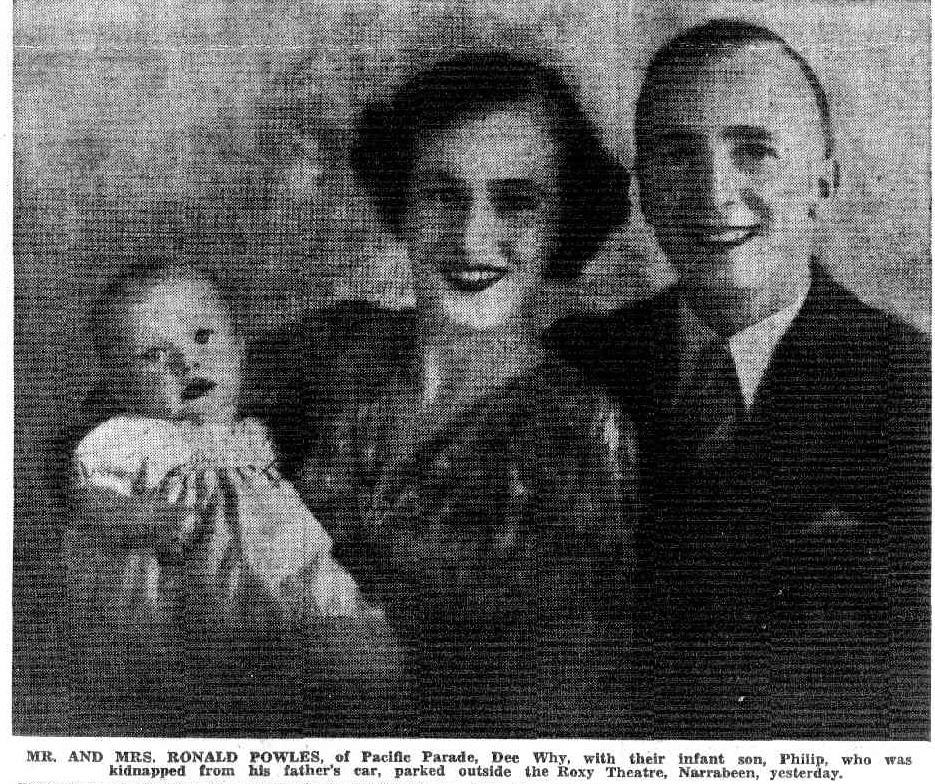
MR. AND MRS. RONALD POWLES, of Pacific Parade, Dee Why,, with their infant son, Philip, who was kidnapped from his father's car, parked outside the Roxy Theatre, Narrabeen, yesterday.
.jpg?timestamp=1660110166515)
THE CHILD WAS KIDNAPPED FROM THIS CAR. Ronald Powles, 24, father of the missing boy, is shown seated in the car, giving information to police at Dee Why. -
.jpg?timestamp=1660110223447)
MAN HUNT, .Police were rushed from the city in this lorry last night to assist in, the search.
The boy Is well known in the district, and particularly on the Dee Why beach. "His father got him used to the water early,", said Mr. P. H. Williams, Mr. Powles's brother-in-law, "and he used to love It: "At the same time, he would never venture into the water alone. "He was a child who would not go to strangers unless they, gained his confidence." "Scene Described, P. 2, Col. 4
KIDNAPPING (From Page 1) LATEST POLICE THEORIES At a conference early this morning, police had formed the following theories: (1) The kidnapper used a car, because the child would probably have cried if led away by a stranger,- and he was well-known to several residents and shopkeepers in the neighborhood, (2) The kidnapper did not travel farther than about 30 or 40 miles, as he telephoned the Dee Why Theatre a little over an hour later. His voice over the telephone was clear and distinct, and, according to Mr, Powles, "sounded nesir." Probably, the police think, the kidnapper was speaking from within the district. (3) The man was in desperate need of money, He may, have been misinformed about Powles and .the child, and thought the father, held a high position- Powles drove his own car, or his father's. Bis work took him to a string of theatres in the Warringah Shire, and as he had easy access to them all, lie may have been mistaken for the proprietor.
Scene Of Kidnapping
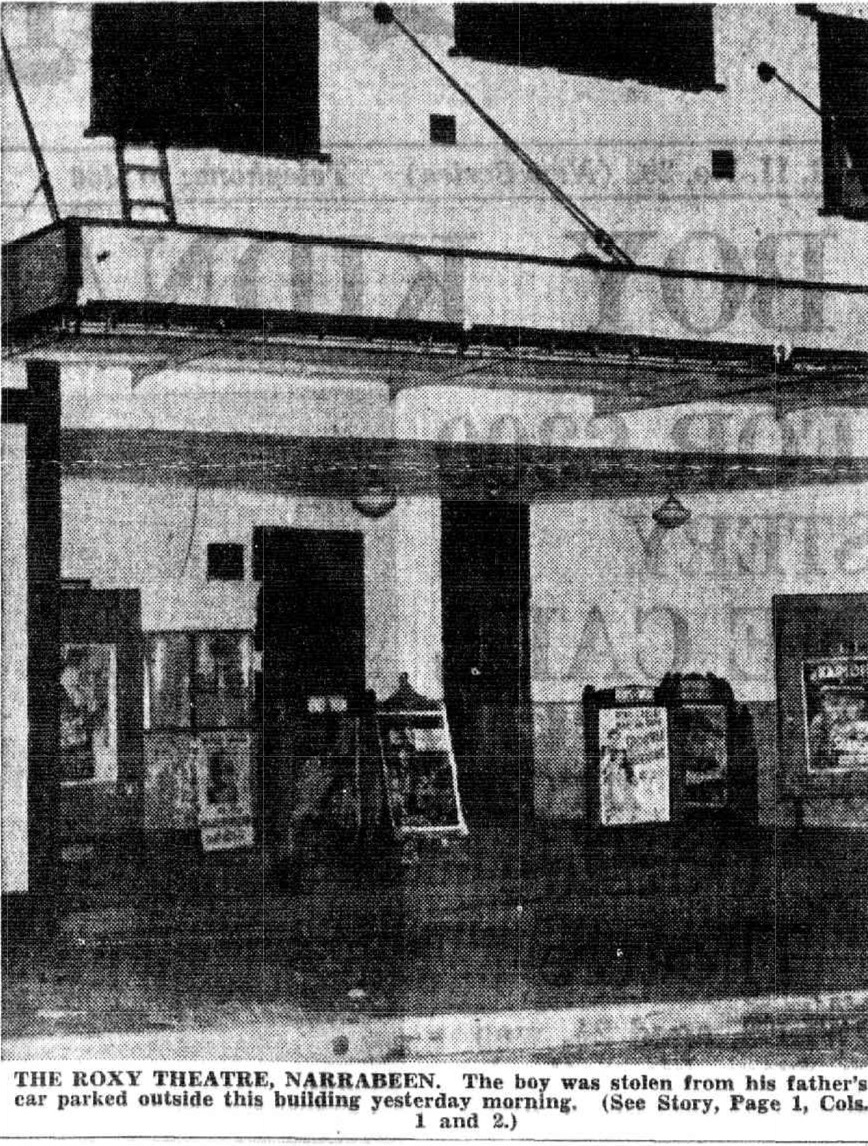
The Roxy Theatre, outside which the-child was left, is in a side road which runs from Pittwater Road to the ocean. Opposite is a shop, but there are no more houses for about a hundred yards. The road is lined by vacant allotments and occasional scrub, All this area was thoroughly searched, but no trace of the child was found. Crossing Pittwater Road, the side road leads to Narrabeen Lake. For the child to have reached the lake by himself he would have had to walk 40 yards from the theatre to Pittwater Road, cross the road — which is a busy thoroughfare— -and walk about another 50 yards to the water. The child was not seen along this route. BABY BOY KIDNAPPED, HELD FOR RANSOM (1938, February 25). The Daily Telegraph (Sydney, NSW : 1931 - 1954), p. 2. Retrieved from http://nla.gov.au/nla.news-article247392383
LOST CHILD IS SAFE
Was in private school
Reception Arranged By Telephone mystery man
Unharmed and unmoved by the drama and anxieties caused by his strange disappearance from his father's car, yesterday, Philip Charles Powles, 2 ½ was found safe and well to-day at the Quest Haven School at Mona Vale.
The school received a mysterious telephone call yesterday indicating that "a new pupil," who was carefully described, would arrive by bus. The child was met, made immediately happy in its surroundings, and was cheerfully playing when taken by police to the distracted parents this morning.
While the young mother, who is expecting another child to-day, sat in their tiny stone cottage with friends all night, detachments of detectives, police and recruits scoured the bush. Dragging operations at Middle Harbor and the Spit had actually begun when the report of the child's safety was received.
Police, late this afternoon, said that they did not expect an arrest on a charge of kidnapping. They are continuing their investigations. The driver of the bus which carried the child to the school was unable to identify anyone as the man who put the child on the bus yesterday.
Extraordinary aspects of the incident, since the father first reported that his son had been kidnapped from his oar outside the Roxy theatre at Narrabeen yesterday, have presented many puzzling points to the Police. They expect to clear up the mystery to-day.
Mystery Phone Call
Miss D. Nunn, a nurse in charge of | the younger children at Quest Haven School, told "The Sun" to-day that she had received a mysterious telephone call about 10 a.m. yesterday. A man's voice saw, "I have Just rung to confirm the booking for that little boy. I will put him on the bus. Will you pick him up?" Miss Nunn said the man appeared to be in a hurry and said that he had to go away to the country in a hurry, but would be down to see the child at the week-end. Before she could ask for the child's name, the man hung up. As she had been off duty the previous day, Miss Nunn took it for granted that arrangements had been made for the reception of the child. She sent one of the nurses to meet the bus ….and the child was brought back to the school.
The principal of the school, Miss Catherine Sheridan, was broadcasting a series of talks on child psychology over 2GB yesterday morning, when she received a phone call from Miss Nunn.
"Although It appeared strange that the child had arrived without clothing, we thought that perhaps the parents had been in a hurry or had left instructions with somebody who had not yet got in touch with us."
Miss Sheridan said to-day. "We decided to wait for a while for some further Information. Not for one moment did we think there had been a kidnapping or anything like that.
Saw Photo
"The child was put to bed last night after several happy hours of play with the other pupils. Philip (whom we had an Idea was named Peter) certainly enjoyed himself while he was here. He was particularly bright and cheerful, and we all loved him."
She had mentioned the unusual fact that a child had been left at the school to a number of friends last night and since 5 a.m. to-day the school telephone had not ceased ringing, friends excitedly telling her that she had a "kidnapped" child in her possession. Miss Sheridan said she got in touch with the police first thing this morning and they had come down and taken charge of the child.
Bryan Lynch, a former employee at the school, met Miss Nunn last night, and she mentioned to him the unusual circumstances surrounding the child's arrival at the school. Early this morning Lynch, who has a room over Brown's store at Mona Vale, was awakened by his room-mate, Dick Hellings, who remarked it was strange that a kidnapping should have taken place in Narrabeen. "I looked at the paper," said Lynch, "and as soon as I saw the baby's Photo., together with a description of his clothes, I knew that the baby at Quest Haven was the one missing."
Lynch ran over to the home of Constable Simpson, woke him up. and told him what he knew. Constable Simpson dressed and went across to the school
Father Puzzled
Tense faces watched as the snowy-haired, blue-eyed child, in carefully-laundered blue trousers and spotless silk shirt, was carried through the gate of the Powles home to-day. He protested against being smothered with kisses by relatives and friends, struggled free, and was soon Picking petals from the garden flowers, Ingenuously unconcerned about anything so mighty as police officers in uniform. The child's grandmother, crying bitterly, swept the little chap off his feet and kissed him.
"I can offer no theory for this thing," Powles said, after at first refusing and then agreeing to pose with Philip for a photograph. "I can only think that somebody thought I was worth more than I am and decided to kidnap Philip and extort money from me. I possess only a block of land and a car, but little else, so goodness knows why they picked on me!"
Even while he Joined the searchers last night he felt that his child must be safe, he said. Powles said he wished to express through "The Sun" his gratitude, to the army of police who had searched all night "as eagerly as if their own children were involved."
George Thornberg, conductor of the bus which carried the child from Narrabeen to the school, to-day remembered a man putting a baby boy on his bus. but could not describe him "I see so many people getting on and off the bus," Thornberg said, ...outstanding features of any particular person. As far as he could remember, the man had just put the boy on and said, "Put him off at Quest Haven School. A nurse will meet him there." He had asked the boy's age, and the man said he was under five. The man did not offer any fare. He might be able to identify the man again.
Dog Used
At the height of the general anxiety last night, police heard that a child had been seen wandering near Elanora Heights, some distance from Narrabeen. The police dog Tess was taken to the scene and given the scent of Philip's clothing. It showed no Interest. and later they were to confirm the fact that the wandering child was not Philip. They traced the other child and continued their search for Philip. The Acting-Chief of the C.B. (Detective-Inspector Matthews) personally supervised preparations for the Investigation. Under Inspector Wenham and Detective-Sergeant Morgan, police handling the mystery happening Include Detective-Sergeants Leary and Tassel, and Detectives Wilks, McNeill, Sergeant Cook, and Constables Mc-Leod and Searl. Kidnap Penalty, Page 1
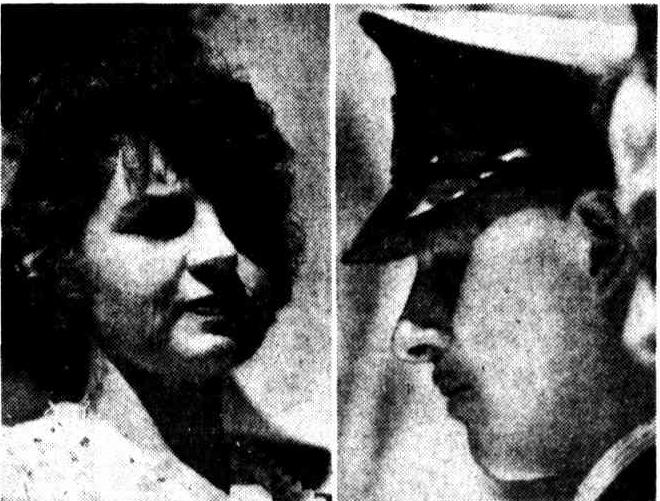
The principal of Quest Haven school, Miss Catherine Sheridan, and George Thornberg, conductor of the bus which carried Philip Powles from Narrabeen to the school. … LOST CHILD IS SAFE (1938, February 25). The Sun (Sydney, NSW : 1910 - 1954), p. 1 (LATE FINAL EXTRA). Retrieved from http://nla.gov.au/nla.news-article231117123
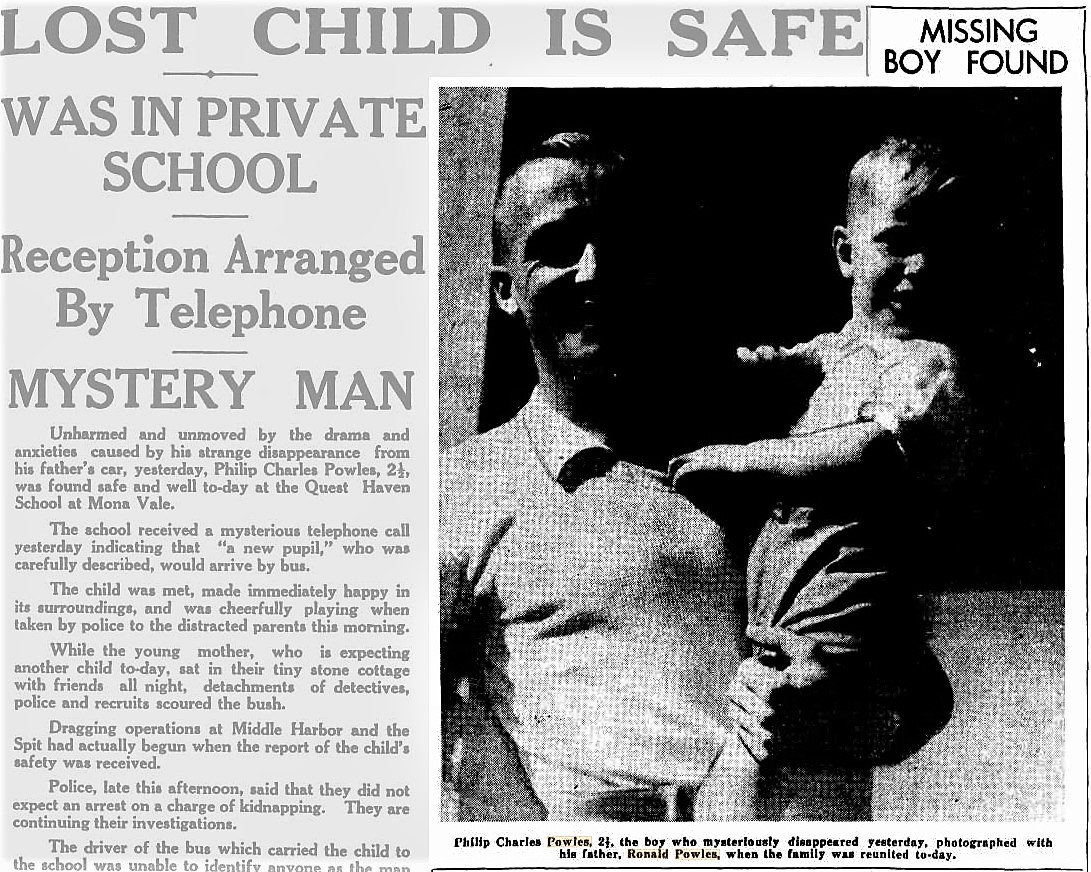
SON BORN TO MRS. POWLES
A 7 ½ lb. son was born yesterday to Mr. and Mrs. Ronald Powles, of Pacific Parade, Dee Why. His brother. Philip, 2 1/2, disappeared last Thursday from his father's car In Narrabeen. Philip was found the next day in Quest Haven School, Mona Vale, where he had been sent by bus.
Police Inquiries
The identity of the man who placed him on the bus is being sought by detectives. They have traced the woman who nursed the child from the time he was handed Into the bus until he was taken over by a nurse from the school. SON BORN TO MRS. POWLES (1938, March 1). The Daily Telegraph (Sydney, NSW : 1931 - 1954), p. 7. Retrieved from http://nla.gov.au/nla.news-article247478815
KIDNAPPING STORY.
Police Inquiries Nearly Complete.
The Inquiries of Detective-sergeants Leary and Tassell, and Detectives Wilks and McNeall Into the report by Mr. Ronald Powles, of Pacific Parade, Deewhy, that his son, Phillip, two and a half years old, was abducted from his car outside the Narrabeen picture theatre and that, before he was found at the Quest Haven private school at Mona Vale, a man had demanded £300 ransom, will probably be completed by the end of the week.
A line of inquiry was pursued yesterday which is said to have furnished further corroboration of the suspicions the detectives formed early in their investigations. Evidence has been obtained that a man placed the child on the bus with the direction that he should be set down outside the Quest Haven private school, but the identification of the man is incomplete, and he denies that he was connected in any way with the case.
Other features may prompt the detectives to make a report, if no arrests are made, that they have formed the conclusion that the child was not abducted in the ordinary criminal sense. KIDNAPPING STORY. (1938, March 3). The Sydney Morning Herald (NSW : 1842 - 1954), p. 11. Retrieved from http://nla.gov.au/nla.news-article17445524
All sounds very fishy....
By the end of the year some good press:
Freedom For Children
AT Mona Vale, N.S.W., there is a school, unique in Australia, where the latest European and American child educational theories are put into practice. It is the Quest Haven New Education School.
The school is run by a company — the Quest Haven School Proprietary — in which most of the shares are held, by parents.
THE pupils, between the ages of 3 and 12, are allowed almost complete freedom. They run their own banking system for their pocket money, have built their own tuck-shop, and write copy for, illustrate, and print, on their own printing press, a school magazine.
"But please don't say that we allow the children to do entirely as they wish," said Miss Kathleen Sheridan, the principal of the school. "That would give a false impression.”
Indeed, the curriculum is practically the same as that of any other school. Children are not allowed to absent themselves from lessons — though they can take another subject if they particularly dislike the one they are doing. But here the resemblance ceases. There are no desks and benches as in the ordinary classroom; each child has a separate table and chair. There are no punishments in the ordinary sense — the first offender is warned, and should that not prove sufficient, one of the privileges granted to other children is taken away from him.
There are no competitive sports.
Stress is laid on visual education. The school hopes to have its own film-projecting machine. In the meantime, an epidiascope is used for many lessons. Clay, which is found plentifully in the locality, is used for modelling. The children have a marionette theatre, which they have made themselves. Girls are taught cooking, and all children must make their own beds and help with tidying-up. In spite of the relaxed discipline, and the wide scope allowed for the children to develop their own initiative, they are not over-mischievous, have spontaneously adopted certain rules of conduct. Great individuality of paintings and modellings testifies to the benefits of their new method of education.
EVEN at an early age, the children learn to express themselves. Here is a story in the school magazine by a girl of five: "A train went over a tunnel and it fell down. All the people fell out. It sunk, and so did the driver, and it smashed into the water and all the people got eaten up. There were sharks in the water. A life-saver went in the water, and he got drowned, and then another went in and he didn't get drowned. All the teeth fell out of the people's mouths. There was a dentist in the train, and the dentist fell out on the bridge and landed on his back. That's finished." Another piece of reporting, simple and to the point, comes from a child of six: "Once upon a time there was a train, and it came from a station. There was another train, and it came from another station. They both came at 12 o'clock. They did not know that they put two trains on one line. Then they came bump, crash, bang, then it smashed. That was the end of the people." Of this impressionist poem by a slightly older boy: "The sea, the sea I love, and I love the doves too. What comes into my heart? The sea comes into my heart, and nothing else."
Curiously, most of the stories in the magazine have a sudden-death climax.
LACK of formality is seen when the children address their headmistress as "Kay."
It is often argued against new educational methods that they tend to make children too conscious of their own importance, unfit them to take their place in the outside community. Miss Sheridan does not believe a word of it.
"The school has been in existence nearly four years now," she said. "In that time, we have been able to see results. All the older boys who have left the school have done exceptionally well, both socially and in their work. They did not require any adjustments."
Quest Haven is set a little back from the Mona Vale beach, contains some acres of ground. It is hoped that in the future the school course may be further extended to take in other activities of a practical agricultural kind. Freedom For Children (1938, August 27).Smith's Weekly (Sydney, NSW : 1919 - 1950), p. 12. Retrieved from http://nla.gov.au/nla.news-article234542055
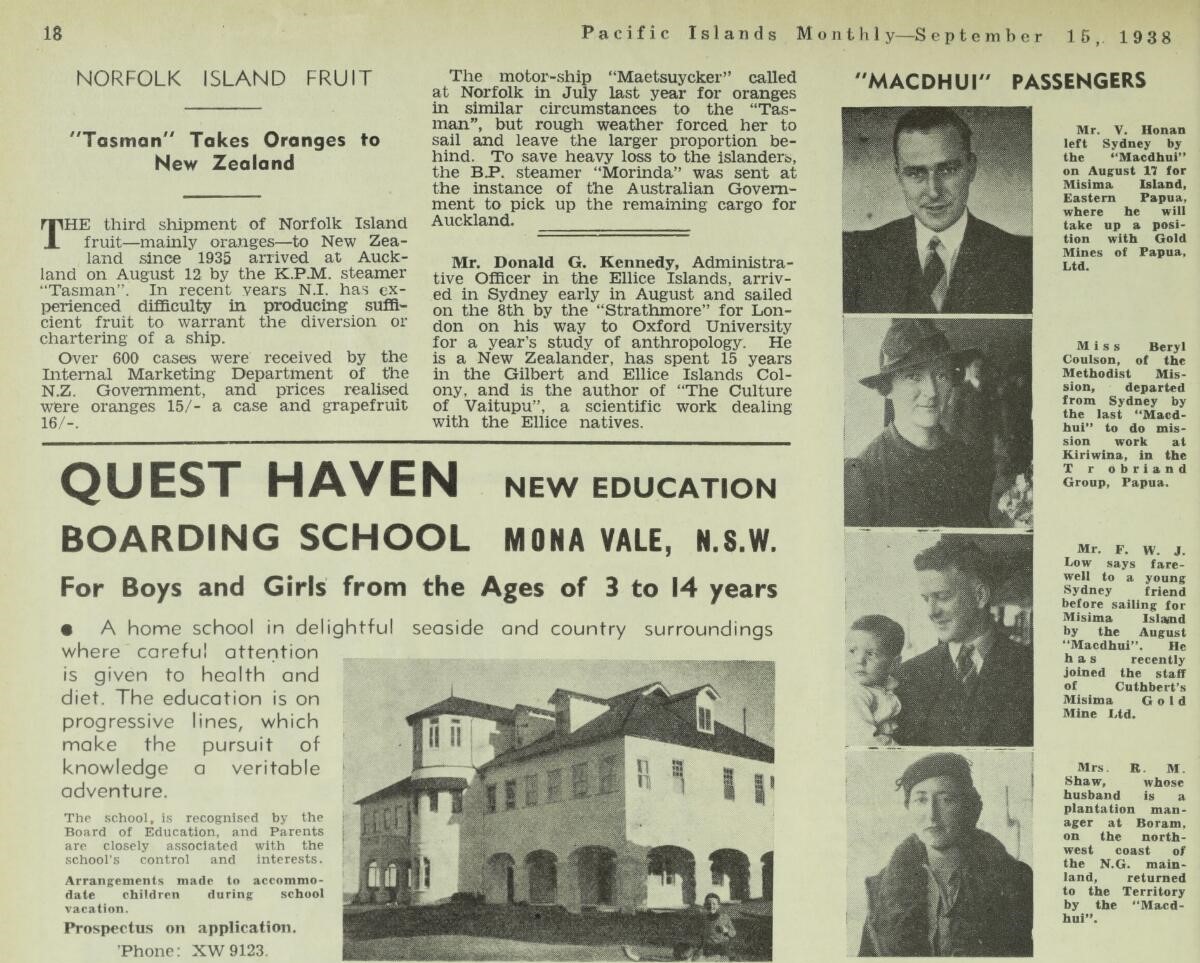
September 1938 Advertisement in Pacific Islands Monthly magazine - the image is from a series taken of the school and the children 'at work' by Newport Photographer Max Dupain. Thi series may have been taken after Quest Haven Schools P/L was established
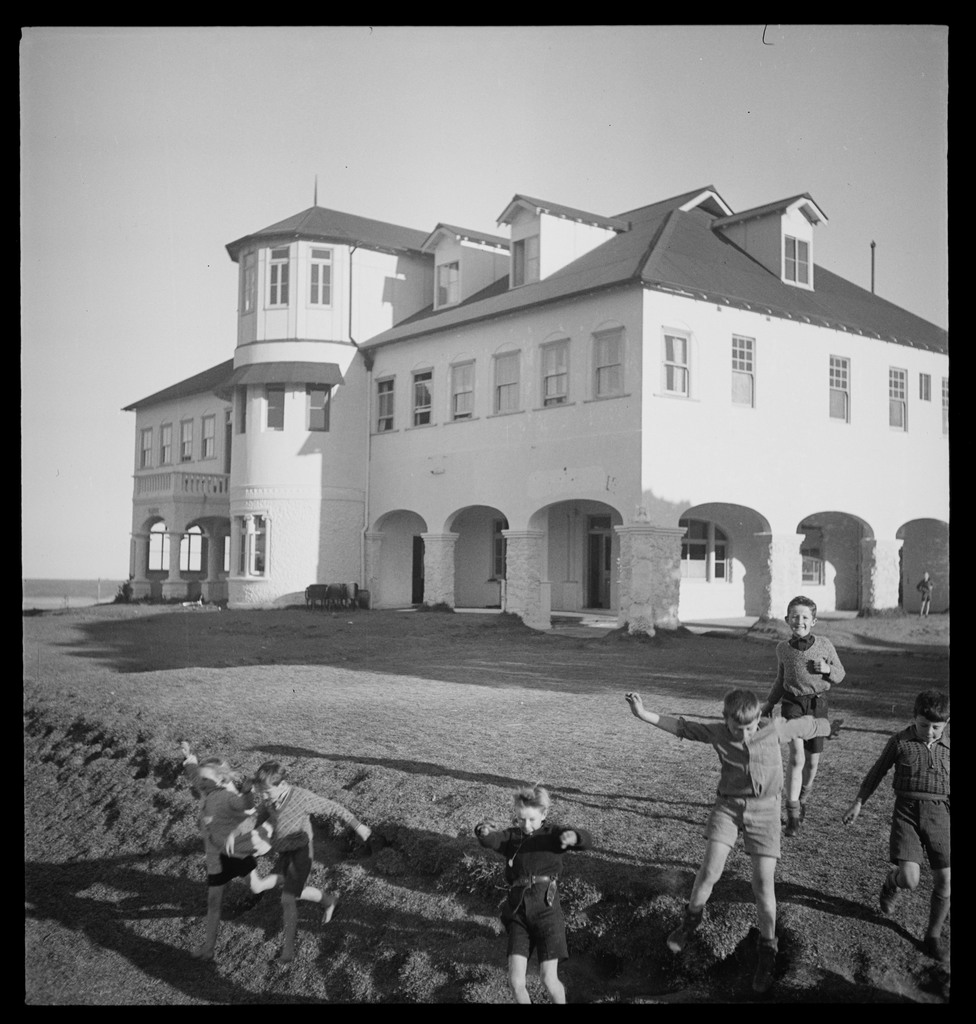
Primary School, Mona Vale, photographed by Max Dupain, courtesy Mitchell Library, State Library of New South Wales Items: c22451_0006_c to c22451_0016_c. Sample of these shared here:
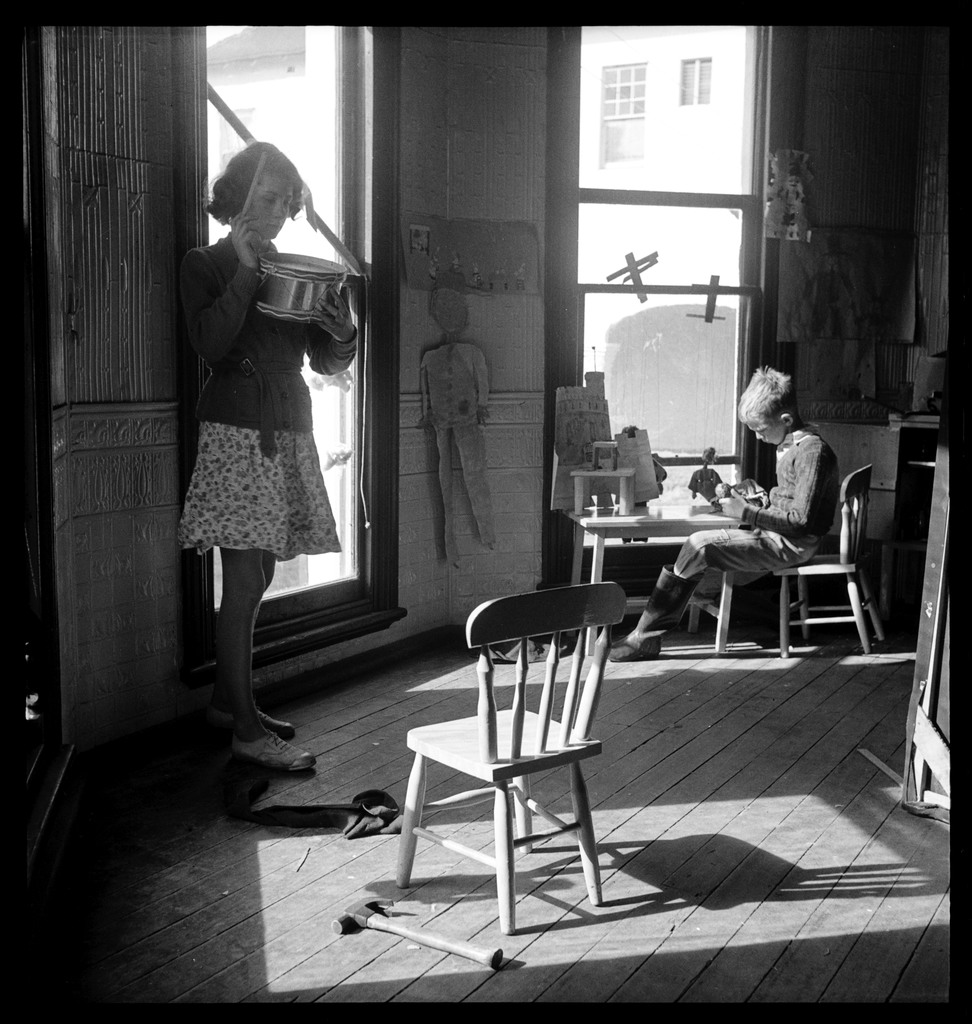
Primary School, Mona Vale, photographed by Max Dupain, courtesy Mitchell Library, State Library of New South Wales
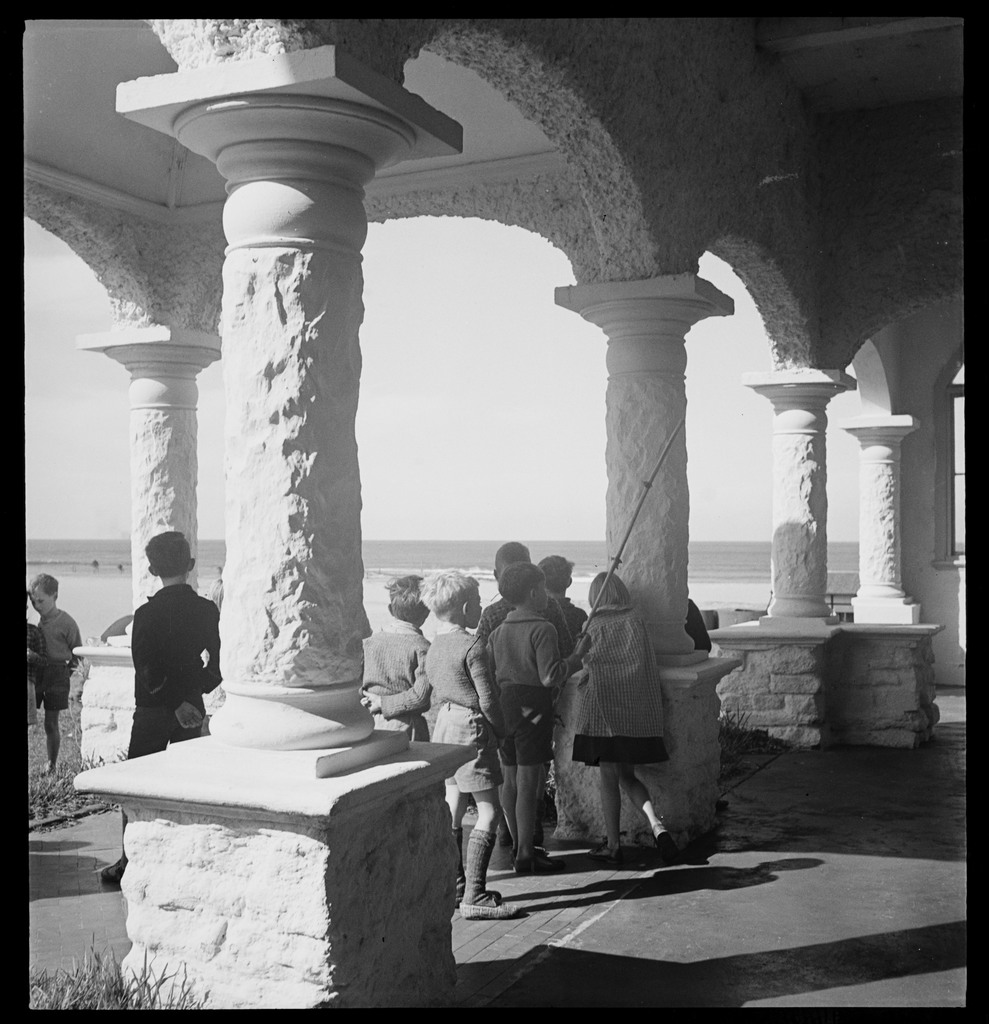
Primary School, Mona Vale, photographed by Max Dupain, courtesy Mitchell Library, State Library of New South Wales
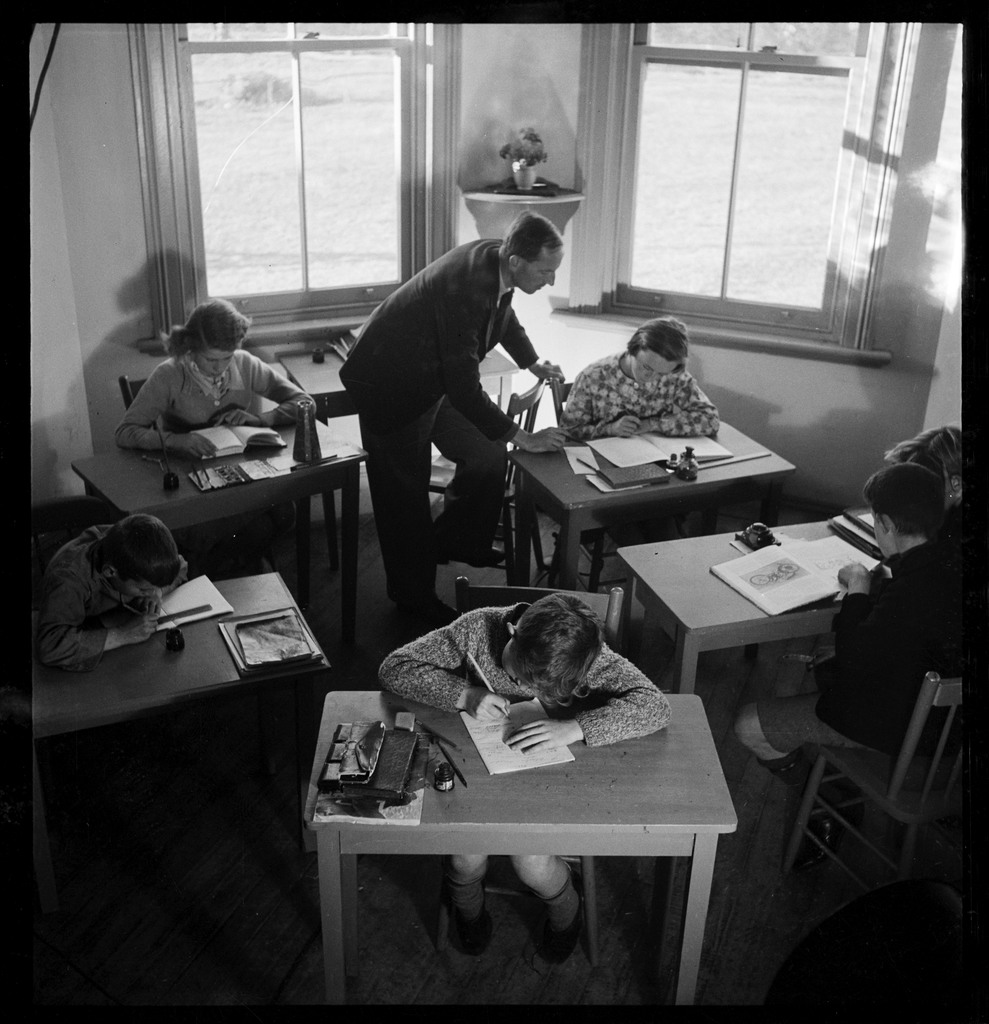
Primary School, Mona Vale, photographed by Max Dupain, courtesy Mitchell Library, State Library of New South Wales
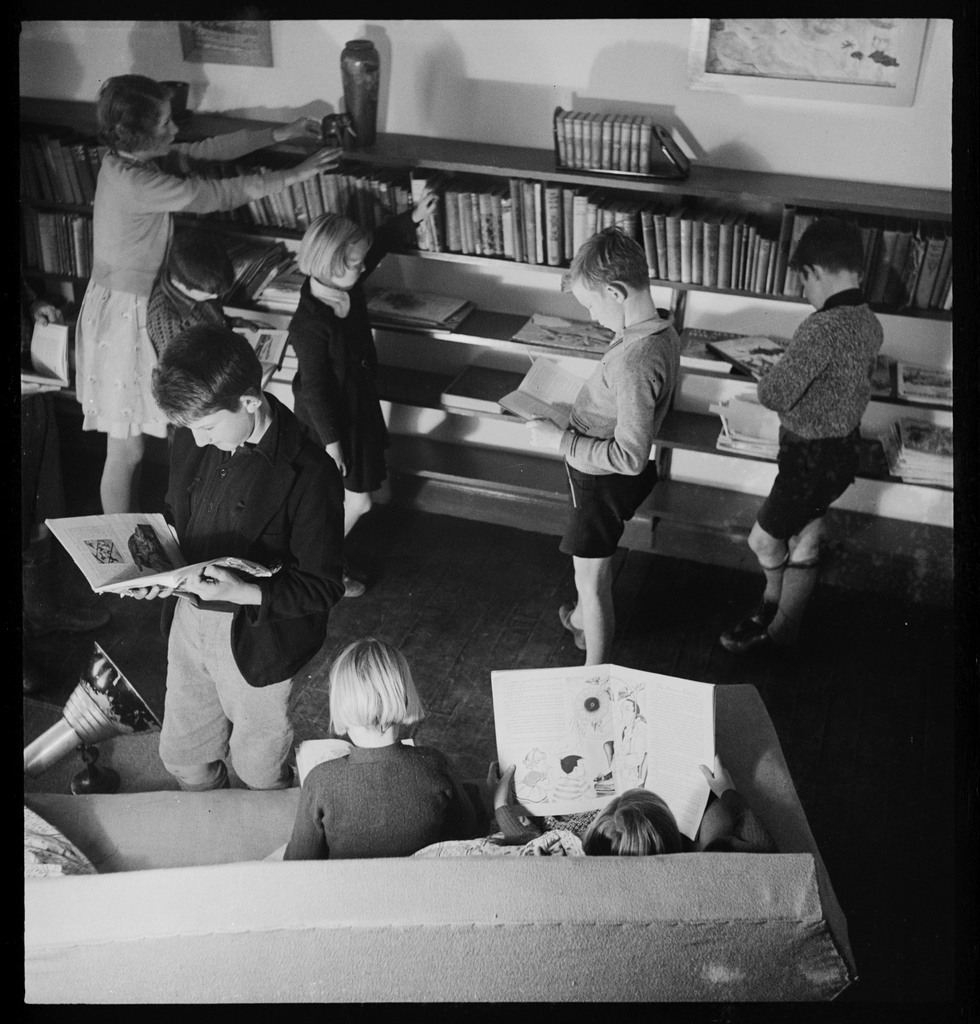
Primary School, Mona Vale, photographed by Max Dupain, courtesy Mitchell Library, State Library of New South Wales
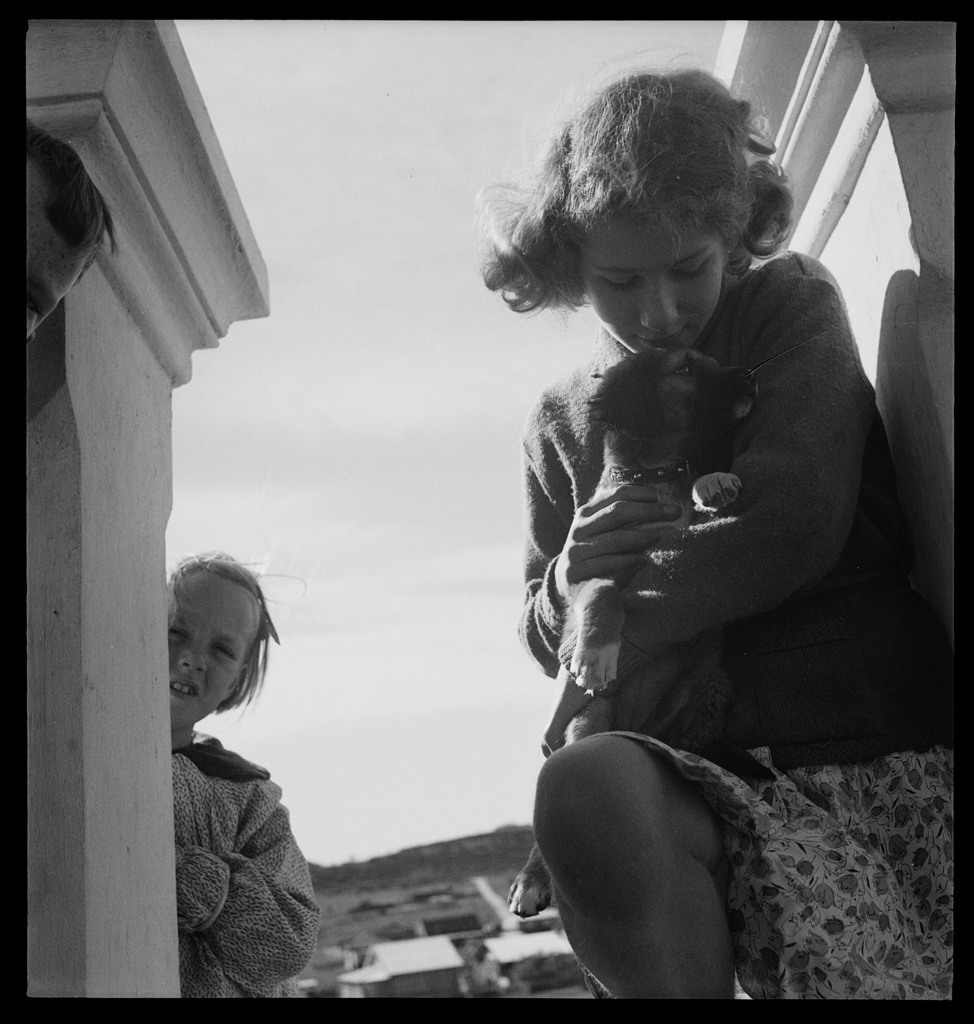
Primary School, Mona Vale, photographed by Max Dupain, courtesy Mitchell Library, State Library of New South Wales
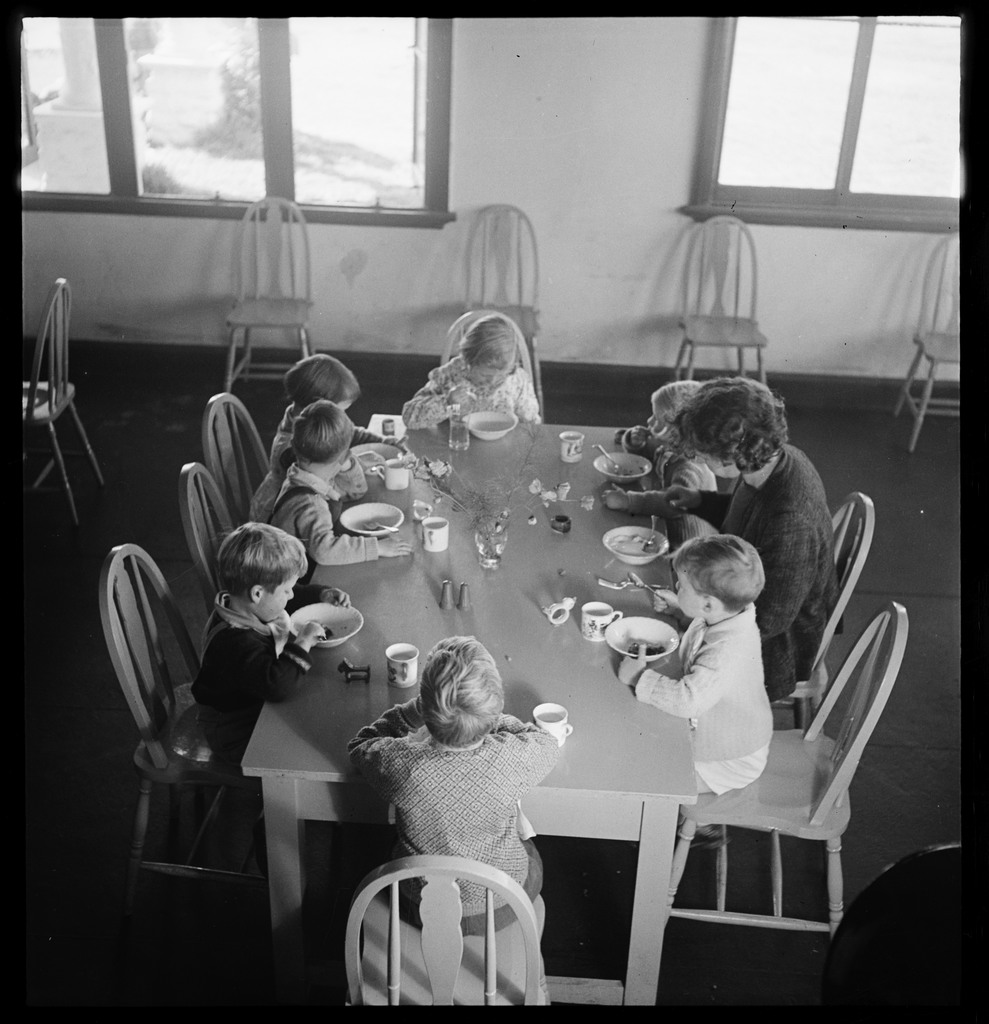
Primary School, Mona Vale, photographed by Max Dupain, courtesy Mitchell Library, State Library of New South Wales
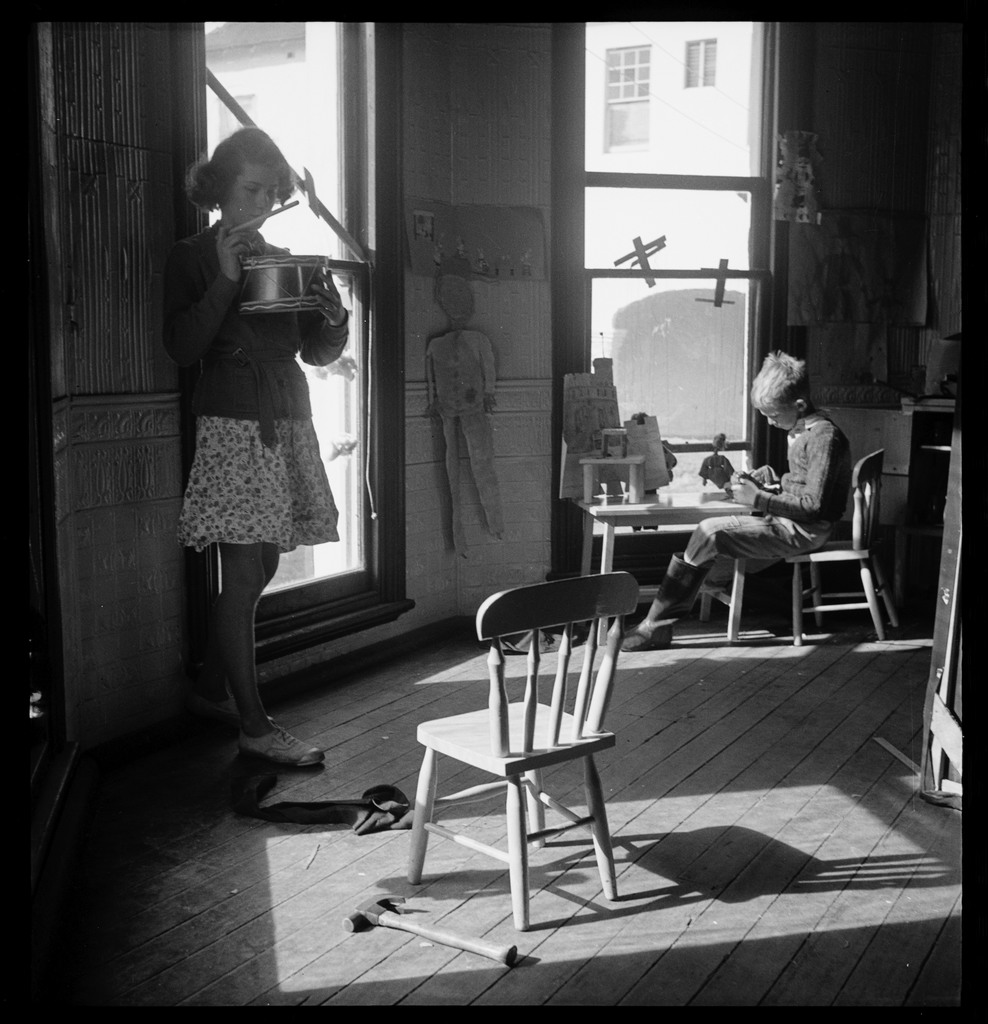
Primary School, Mona Vale, photographed by Max Dupain, courtesy Mitchell Library, State Library of New South Wales
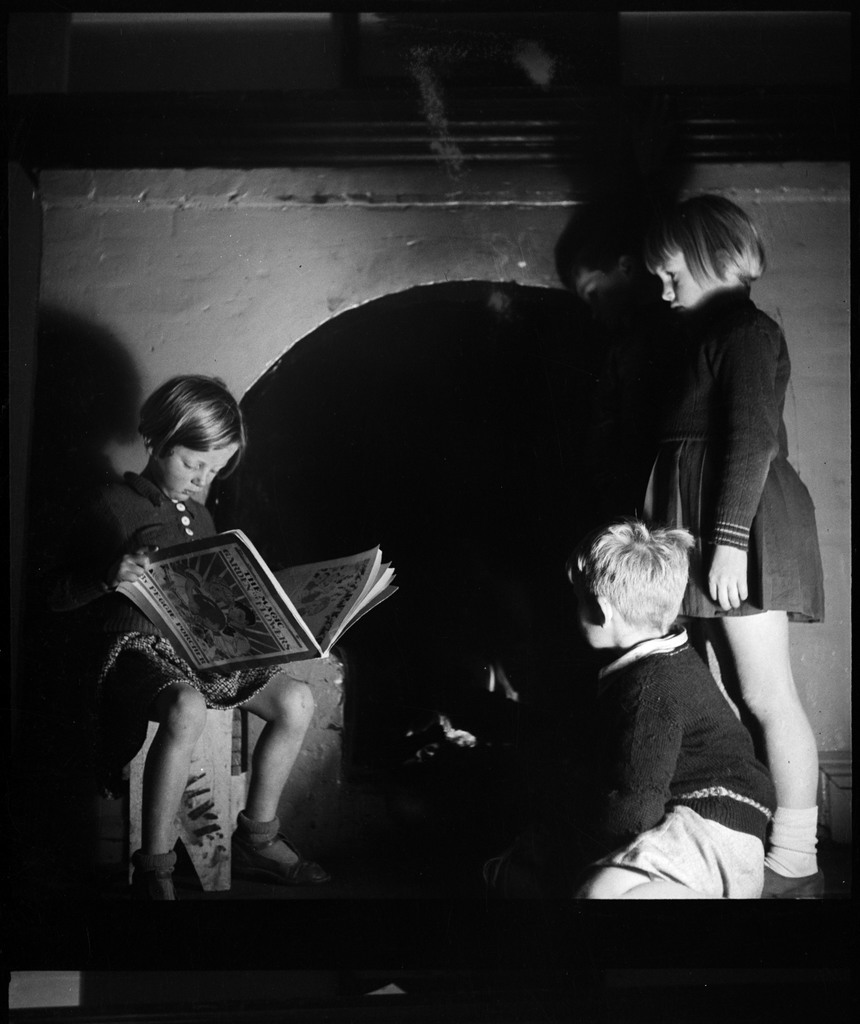
Primary School, Mona Vale, photographed by Max Dupain, courtesy Mitchell Library, State Library of New South Wales
Pupils Fix Own Punishment
Children at Quest Haven Private School, Mona Vale, decide their own punishment. Offenders are dealt with by a "Trust Council," composed of pupils, and elected by pupils. The council meets each week, and is responsible for keeping order.
"It is a form of self-government which works very well," said Miss Katherine Sheridan, the director.
Call Director "Kay"
Pupils address the teachers by their first names. Miss Sheridan is called "Kay." Pupils are graded into "Bigs," "Middles," and "Smalls," according to their ages, which range from three to 14. The annual play day and marionette show at the school was held at the weekend.
Learn Clear Thinking
A three-act play was staged by the 'Bigs" and "Middles." Programmes for the show were set up and printed by the children on the school press.
"The muddled thinking brought about' by orthodox education is partly responsible for the mess the world is in today," said Miss Sheridan, "New education aims to do away with this by teaching the coming generation to think clearly and individually.’’ Pupils Fix Own Punishment (1938, December 12). The Daily Telegraph (Sydney, NSW : 1931 - 1954), p. 7. Retrieved from http://nla.gov.au/nla.news-article247434199
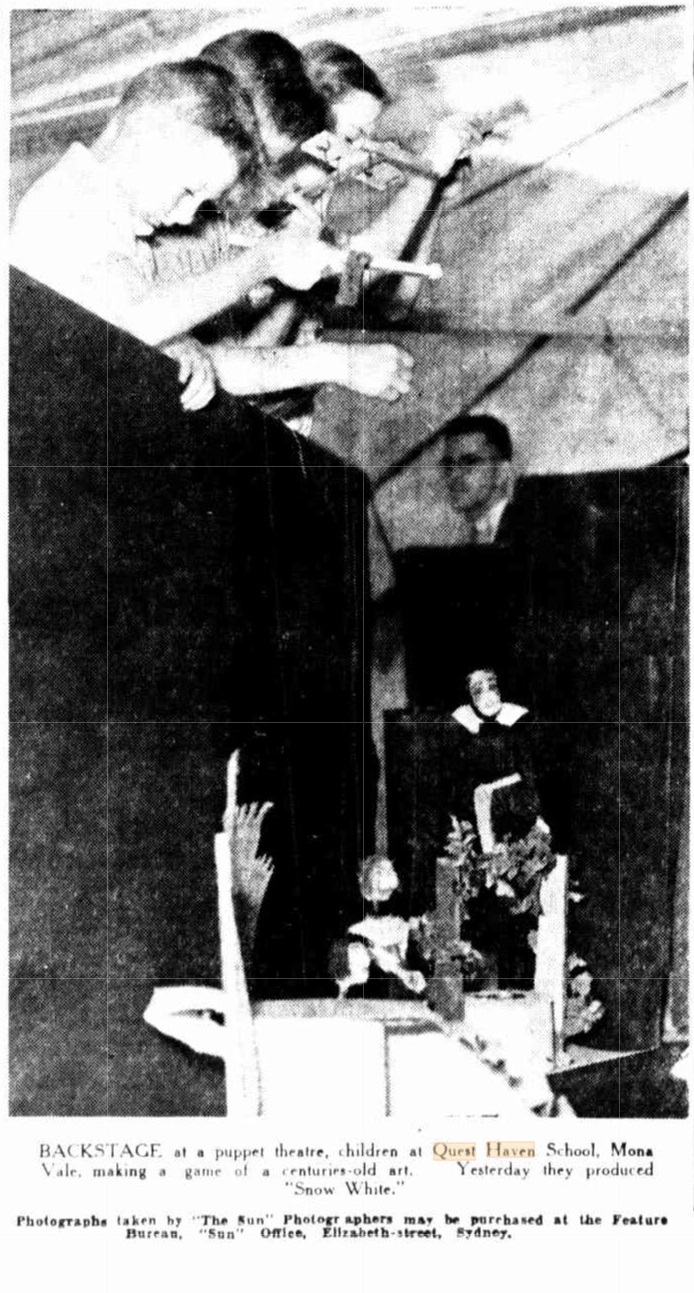
Salvage Work After The Hurricane (1938, December 12). The Sun (Sydney, NSW : 1910 - 1954), p. 12 (LATE FINAL EXTRA). Retrieved from http://nla.gov.au/nla.news-article231124765
While the children are on their Summer break:
GIRL GUIDES
International Ranger Moot AT MONA VALE
(BY ''A MOOTER')
Rangers from Holland, India, New Zealand, and every Australian State met at Quest Haven School, Mona Vale, for the first International Ranger Moot that has ever been held.
The school is ideally situated near Mona Vale Beach and Rock Pool, where the Rangers spent many happy hours swimming, for which the weather was most suitable.
The school itself is interesting. Quest Haven comprises four houses, 'Seatoller,' 'Peace How,' 'Brandle How' and 'Manesty.' The old bell, which was rung to rally the Rangers was originally the ship's bell of the City of Hankow.
The Rangers visited Taronga Park, and launch trips were enjoyed on the Parramatta River, where the girls saw the old Government House, and the Hawkesbury, on the way to Palm Beach. They also visited the Boy Scouts' Jamboree at Bradfield. Last Wednesday the hundred and thirty odd Rangers were driven down the South Coast to Port Kembla, where they visited the Electrolitic Refining and Smelting Co. and the Metal Manufactures, Ltd. These, the Rangers found most interesting, and after a swim in the beautiful Olympic Pool, and a talk by a local resident on the history of Port Kembla, they returned to Mona Vale, stopping at the top of Bulli Pass to see the lights of the South Coast spread out below like a magic carpet.
The Rangers were given some interesting talks at the Moot. Dr. Rossell, the former Flying Doctor in the Northern Territory spoke to them about his work there. Also the Rangers 'enjoyed a talk on 'Personal Arts and Crafts,' which they found a useful guide to correct hairdressing and facial make-up, and a talk on 'Air Raid Precautions,' a subject which is particularly interesting at present. Rangering is perhaps the least known branch of the girl guide movement, but it is by no means the least interesting. The International Moot is not the first ambitious undertaking of the New South Wales Rangers, as a party of seven rangers, in charge of Miss I. H. Meek, Commissioner for Rangers, toured Europe in 1937.
Slides made from photographs which were taken on this trip were shown to the rangers at the Moot, while Miss Meek told them about their experiences in Europe in a most interesting address. A notable feature of the ranger Moot was the hospitality with which the N.S.W. Metropolitan rangers entertained the overseas, interstate and country visitors, all of whom enjoyed themselves immensely daring the twelve brief days of the Moot. The Moot has brought together rangers from other states and other countries and is truly International. GIRL GUIDES (1939, January 11). The Maitland Daily Mercury (NSW : 1894 - 1939), p. 6. Retrieved from http://nla.gov.au/nla.news-article126387237
RANGERS' MOOT IN NEW SOUTH WALES
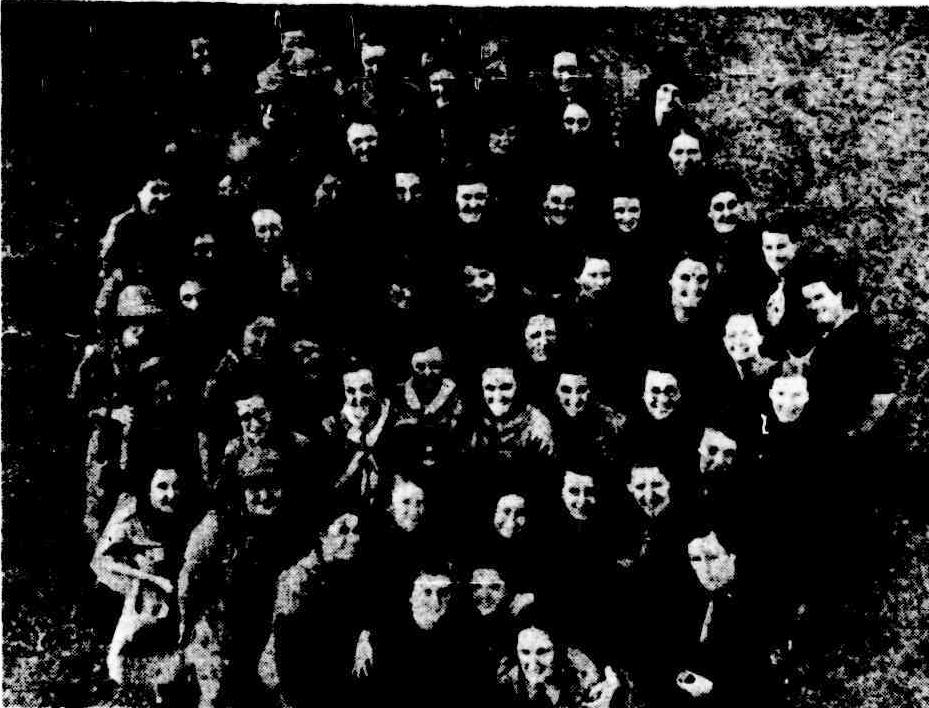
A group of rangers attending the first International Moot ever held in Australia. At Quest Haven School, Mona Vale (N.S.W.), 130 rangers are in camp and they represent every State in the Commonwealth, New Zealand, India, and the Netherlands. RANGERS' MOOT IN NEW SOUTH WALES (1939, January 14). The Mercury (Hobart, Tas. : 1860 - 1954), p. 8. Retrieved from http://nla.gov.au/nla.news-article25580624
Modern Child Education
" IF there were more schools like Quest Haven which are definitely out to develop the child's personality, his artistic interest, and his ability to enjoy recreational pastimes, and his appreciation of the creative work of others, Australia would be a happier place," said Miss Zoe Benjamin, the well-known child psychologist when she opened the exhibition of children's creative work at the Industrial Arts luncheon yesterday.
The exhibition has been arranged by Miss Katherine Sheridan, principal of the Quest Haven new educational school at Mona Vale, and consists of the work of her pupils, whose ages range from five to 13 years It includes drawing, painting, finger-painting, clay and plasticine modelling, printing, puppet-making, and woodwork. From Day to Day in Sydney. (1939, March 2). The Sydney Morning Herald (NSW : 1842 - 1954), p. 18. Retrieved from http://nla.gov.au/nla.news-article17569253
Department of Education, Sydney, 6th July, 1939.
LIST OF SCHOOLS CERTIFIED UNDER THE PROVISIONS OF THE PUBLIC INSTRUCTION (AMENDMENT.) ACT, 1916.
THE following Non-State Schools have been certified under the provisions of the Public Instruction (Amendment) Act, 1916.
Mona Vale, Darley-street—Questhaven Private School (Miss K. Sheridan) (B.).
Mona Vale, Park-street—-Greengate College (Mr. F. C. Buckhardt) (D, and B.). LIST OF SCHOOLS CERTIFIED UNDER THE PROVISIONS OF THE PUBLIC INSTRUCTION (AMENDMENT) ACT, 1916. (1939, August 4). Government Gazette of the State of New South Wales (Sydney, NSW : 1901 - 2001), p. 3950. Retrieved from http://nla.gov.au/nla.news-article225730830
Winding up of companies:
QUESTHAVEN SCHOOLS PTY., LIMITED— By resolution passed 1/8/39. E. W- Statham, liquidator. (1909). Vol. 62 No. 8 (August 21, 1939) Dun's gazette for New South Wales Retrieved from http://nla.gov.au/nla.obj-769844314
QUEST HAVEN SCHOOLS PTY. LTD.
NOTICE Is hereby given that the final meeting of the Shareholders of the above Company will be held on Thursday, 31st of August, 1941, at 9 o'clock, at the registered office, 215 Bourke-street, Sydney, for the purpose of having an account placed before them showing the manner in which the winding-up has been conducted.
Also to pass the Extraordinary Resolution of determining the manner in which the books and documents of the Company shall be disposed of.
Dated at Sydney, this thirty-first day of July, 1941.
E. W. STATHAM, Liquidator. 281 13s. QUEST HAVEN SCHOOLS PTY. LTD. (1941, August 1). Government Gazette of the State of New South Wales (Sydney, NSW : 1901 - 2001), p. 2827. Retrieved from http://nla.gov.au/nla.news-article225122898
The Quest Haven Alumni had a reunion just over a dozen years after the school closed:
"QUEST HAVEN" REUNION
THE first reunion of ex-students and teaching staff of the Quest Haven co-educational boarding school since it closed at the out-break of World War II, was held last night at the home of Mrs. M. Jackson, of Mosman.
Mrs. Jackson's three children, Janice, Henry and James, were pupils at the school which was one of the first of its kind in Australia.
More than sixty guests were present at the reunion which was arranged by Misses Barbara Winn, Janice Jackson, Messrs. Peter Hals and James Jackson, primarily for discussion on the effects of the educational system funded in 1935 by child psychologist, the late Miss Mary Sheridan. "QUEST HAVEN" REUNION (1951, October 28). The Sunday Herald (Sydney, NSW : 1949 - 1953), p. 16. Retrieved from http://nla.gov.au/nla.news-article18500386
La Corniche during World War II: a site for defending, training
Occupation by Australian Military Forces of premises known as 'La Corniche' in Mona Vale, the property of Mr. G J McPhee. Includes claim for compensation. Contents date range: 1939 – 1945
Since its commencement the grounds at Mona Vale were used for military exercises and training, George Brock hosting lancers and camps from at least 1902 on and this continued even during the phases of World War I.
Norman Godden shared some insights on the Warriewood end and Mona Vale beach area during his Profile which led to further research and finding that area between warriewood and Mona Vale was also used during the late 1930's, sometimes utilising parts of the sand dunes that line the beaches here, and the by then, established Mona Vale Golf Course perimiters.
The State Library of New South Wales holds a number of images relating to this exercise under the title 'Dawn Attack' - the mentions in the newspapers of 1938 share:
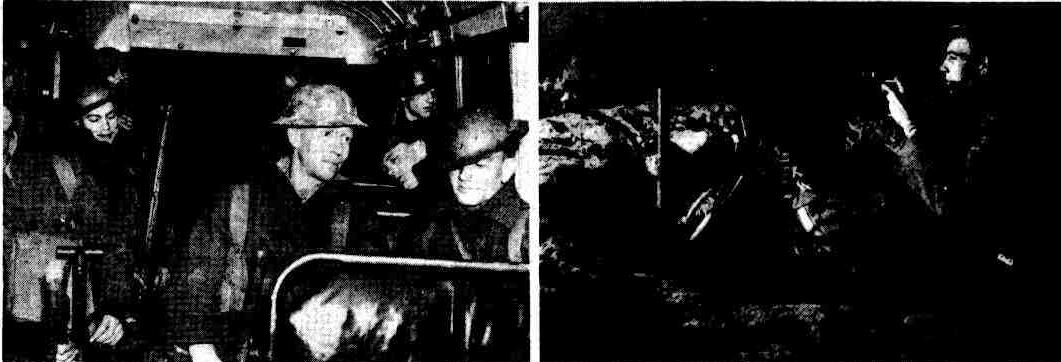
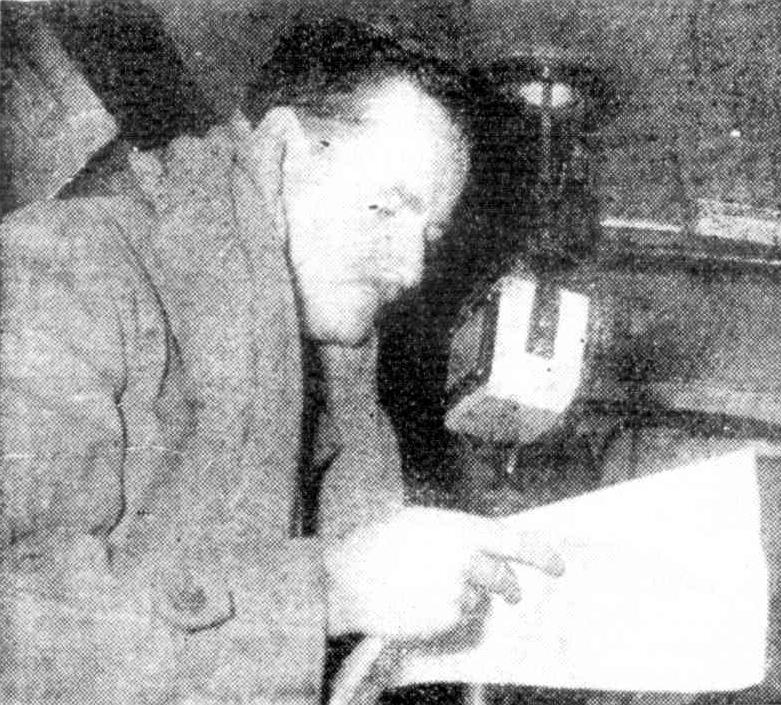
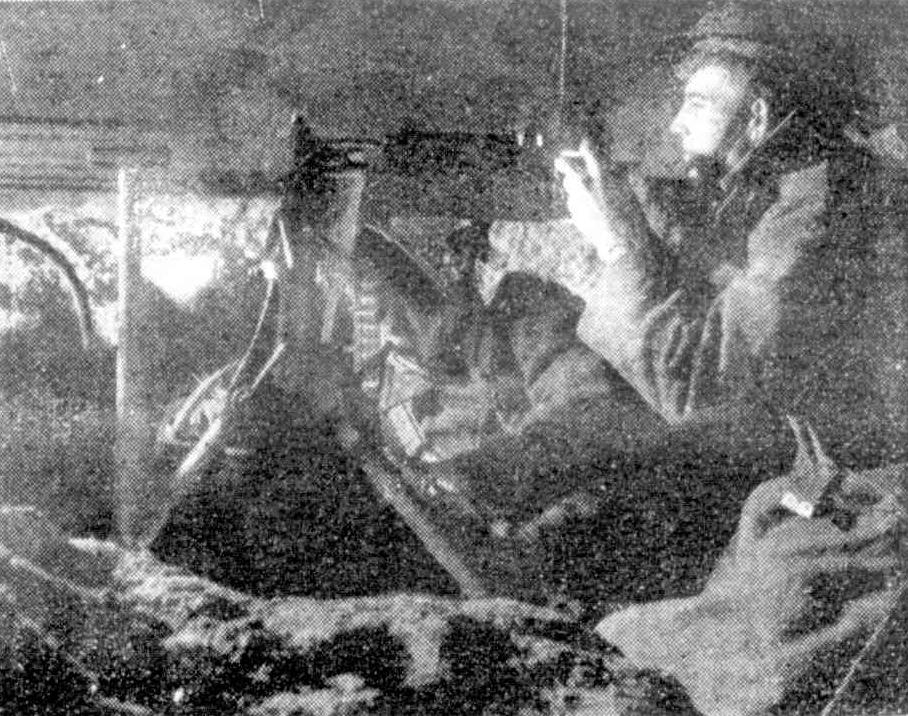
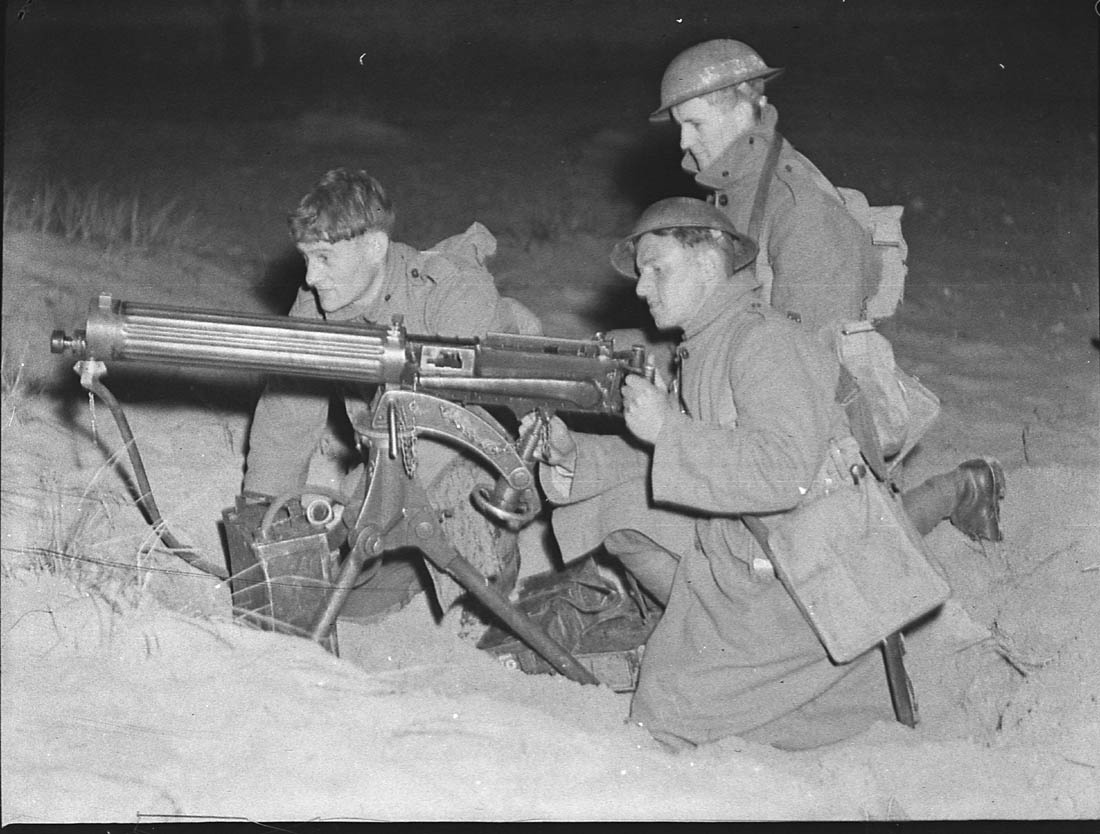
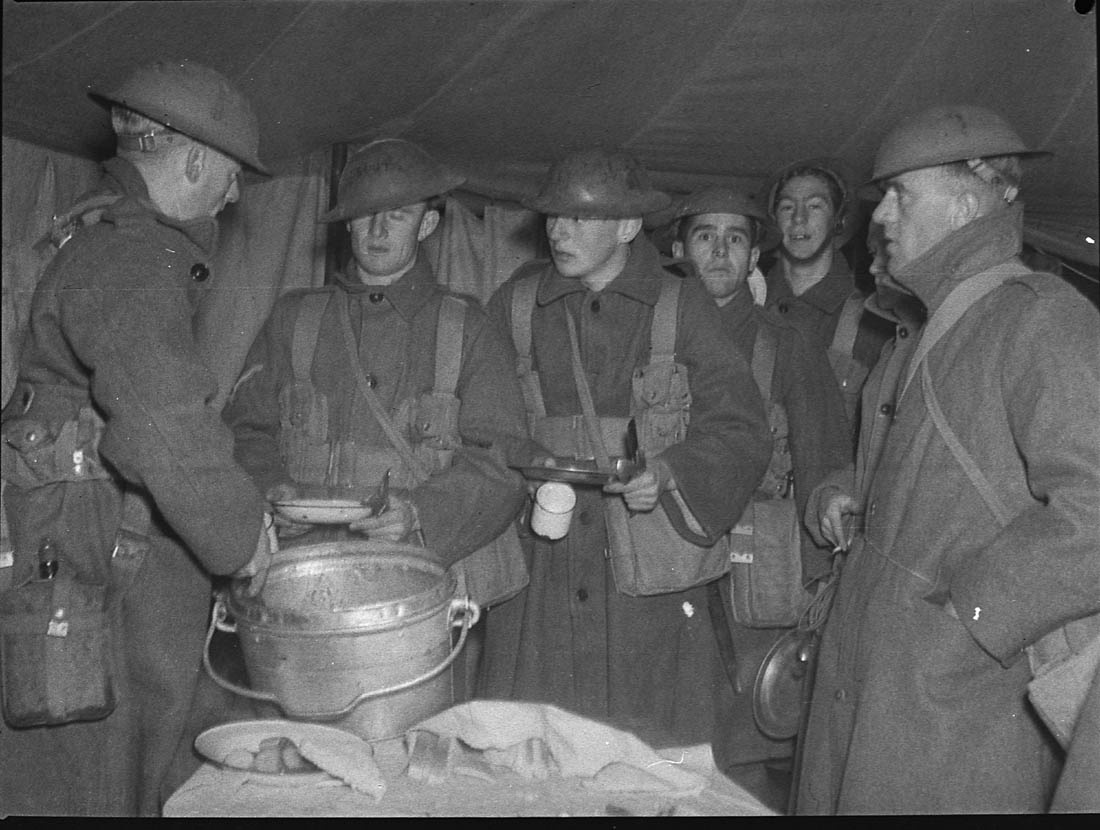
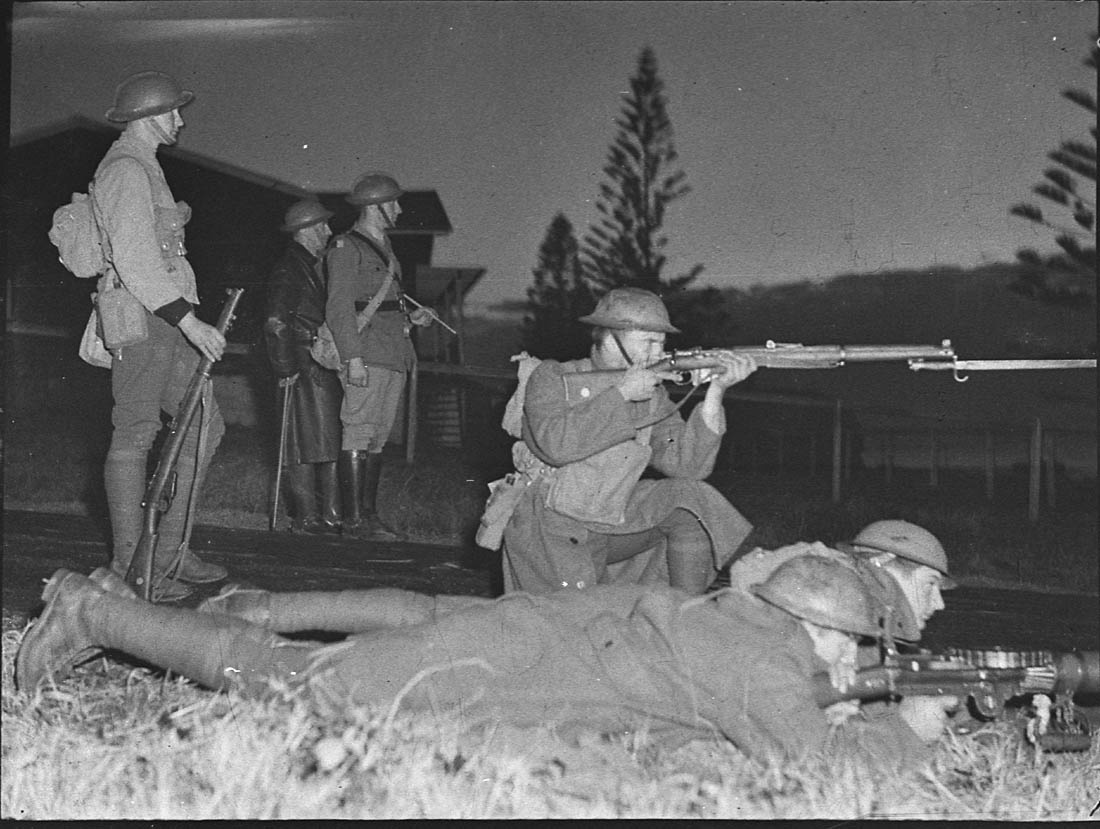
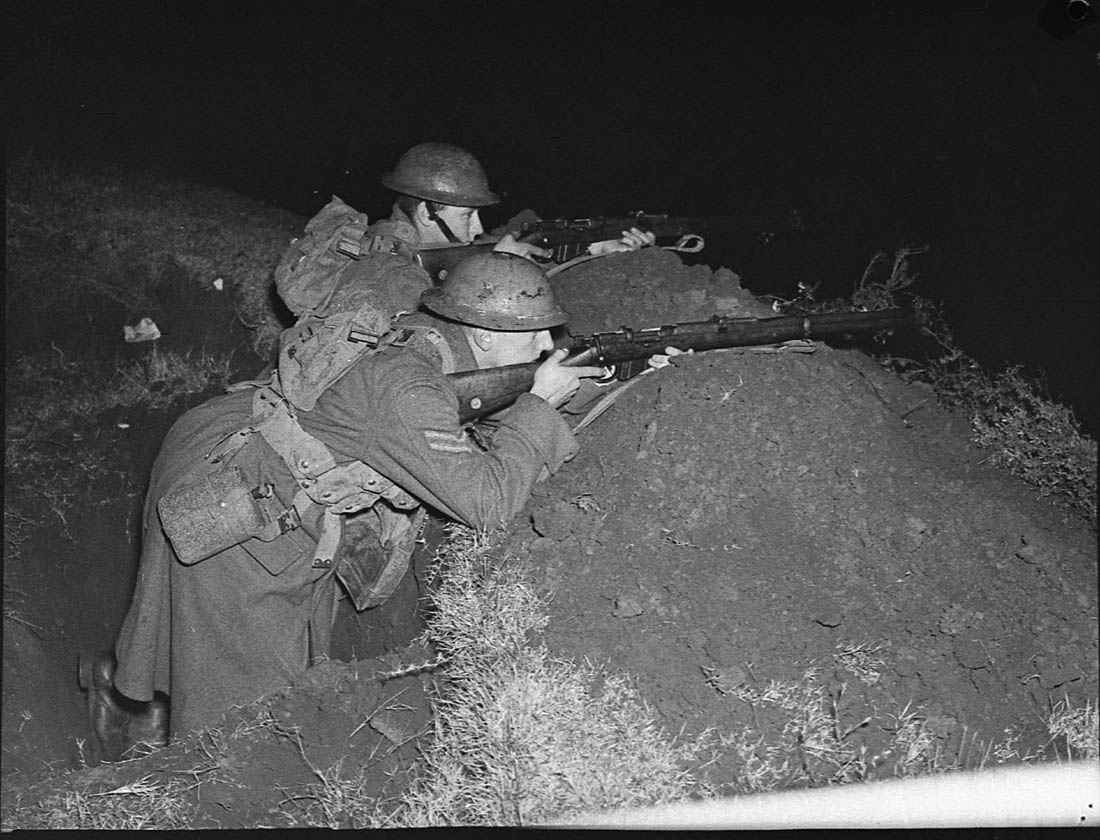
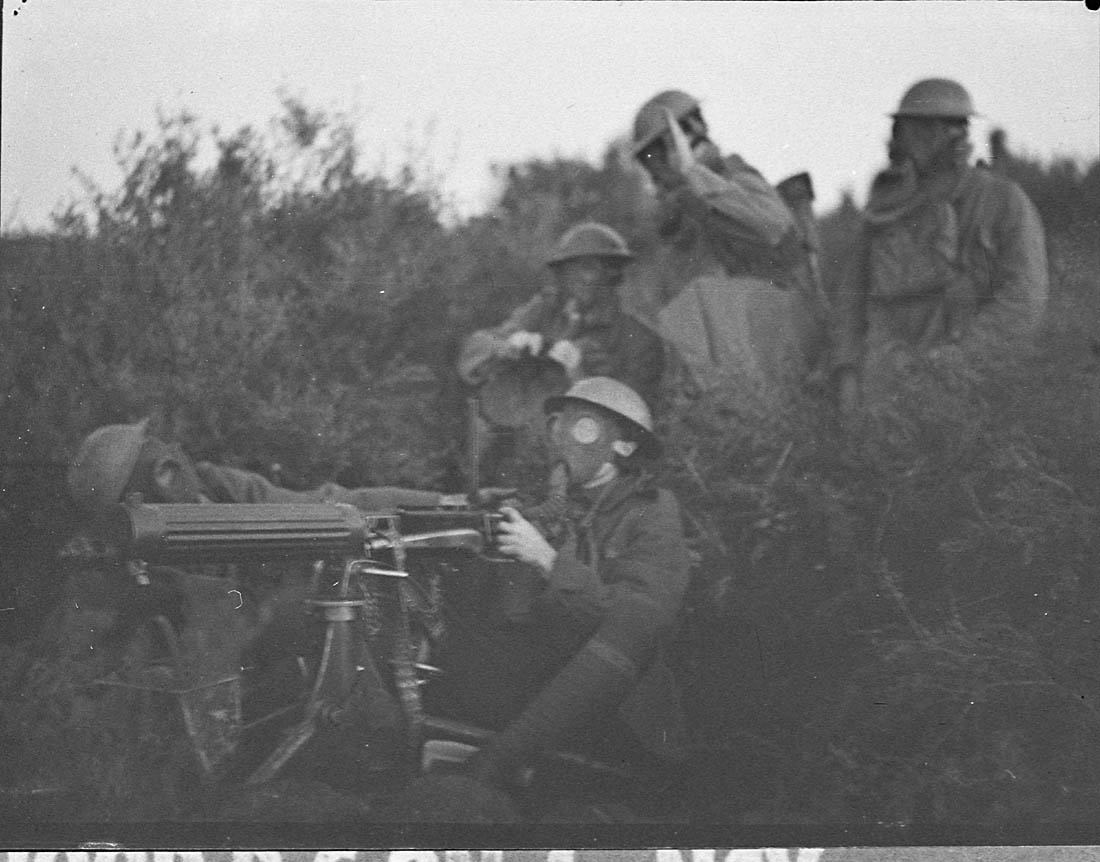
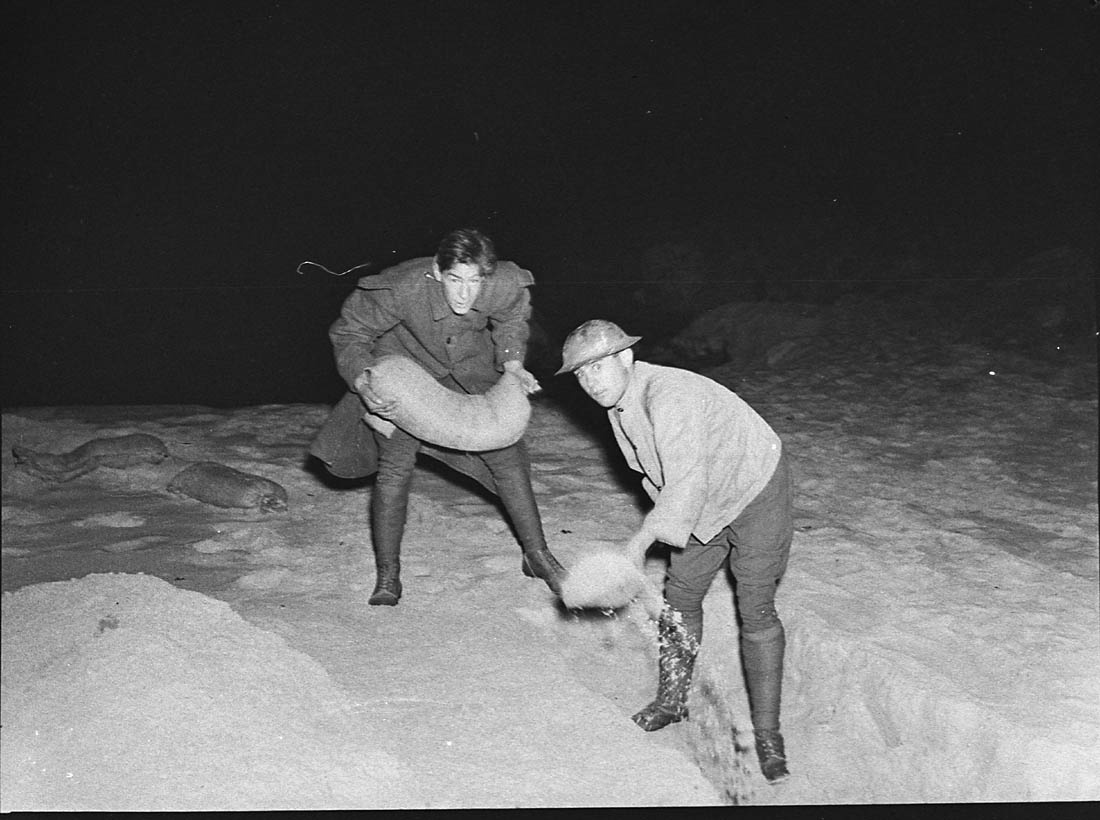
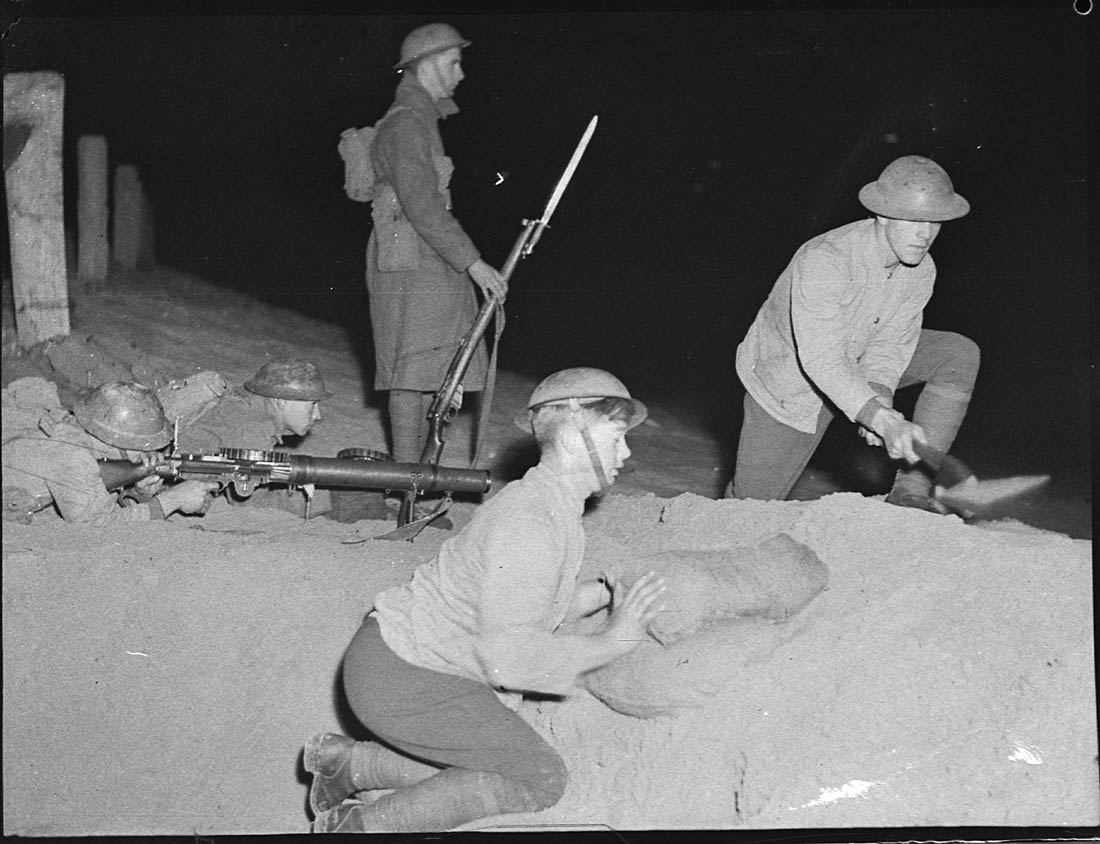
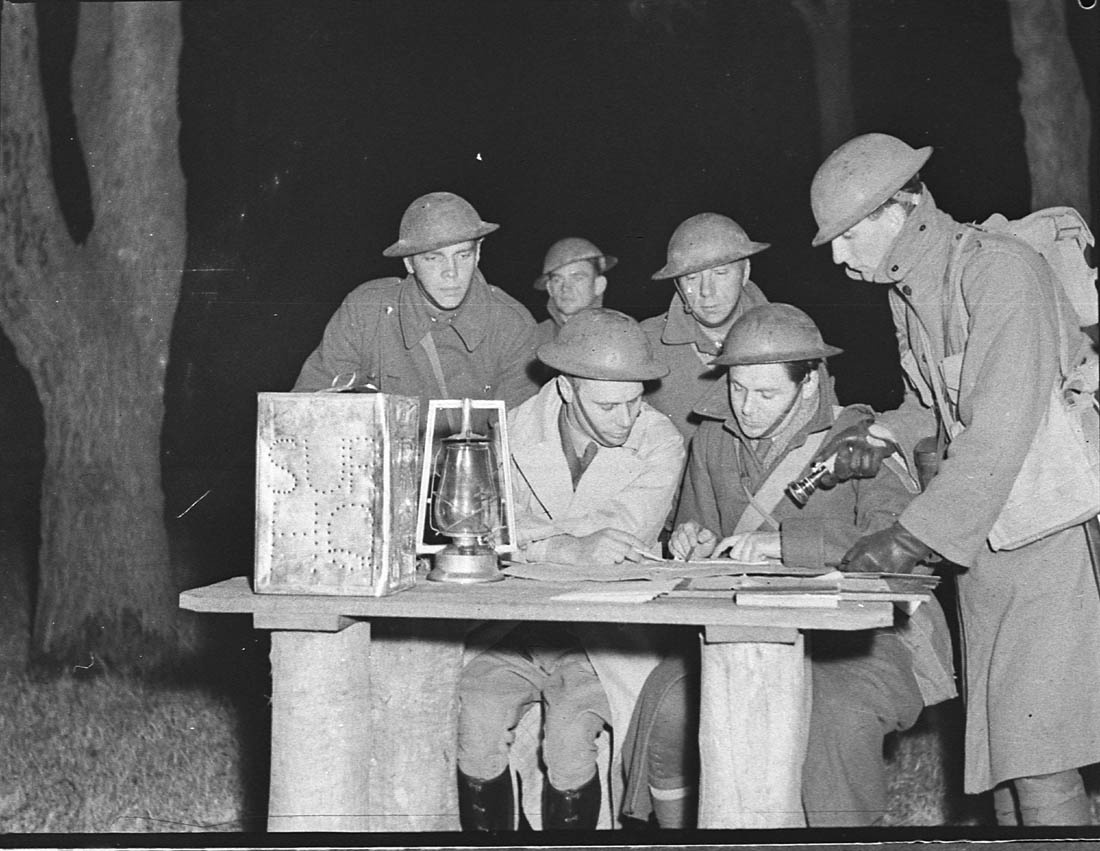
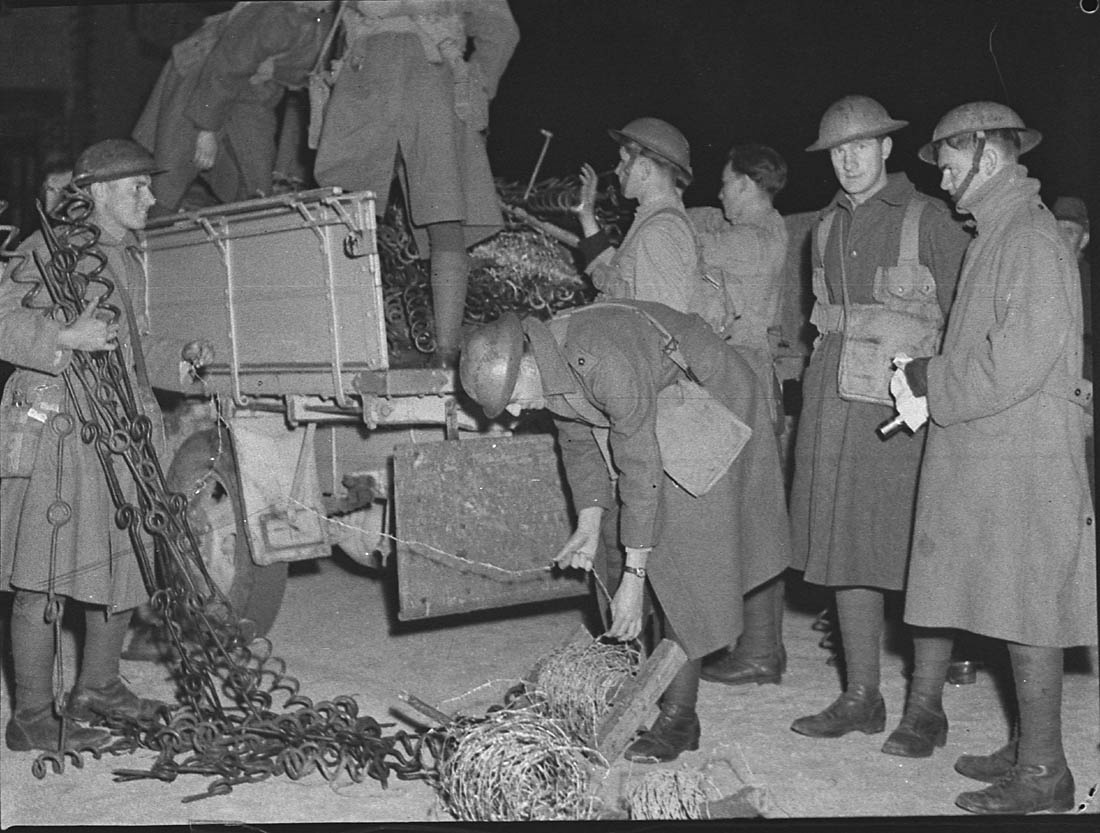
The Australian Government and its representatives abroad have struggled hard to prevent a breakdown of this kind. We did not want war in the Pacific. The Australian Government has repeatedly made it clear, as have the Governments of the United Kingdom, the United States of America, and the Netherlands East Indies, that if war came to the Pacific it would be of Japan's making. Japan has now made war.The hands of the democracies are clean. The discussions and negotiations between Japan and the democracies were no mere bandying of words on the democracies' part. Since last February it has been the aim of the democracies to keep the peace in the Pacific. The best brains of the democracies were brought to bear for this end. It is on record that the President of the United States and Secretary of State, Cordell Hull, and the British and Dominions Governments worked untiringly and unceasingly. Yet when the President of the United States decided to communicate direct with the Japanese Emperor in support of an appeal for Imperial intervention on the side of peace, the war government of Japan struck. That war government, bent on aggression, and lusting for power, and acting in the fashion of its Axis partners, anticipated the undoubted weight of the President's message and shattered the century-old friendship of the two countries.For the first time in the history of the Pacific, armed conflict stalks abroad. No other country than Japan desired war in the Pacific. The responsibility for this actual resort to war is therefore upon Japan.... Australia goes to its battle stations in defense of its very way of living.
Australia was in the firing line when Japan commenced hostilities in the Pacific - attacking Darwin, New Guinea, then an Australian Protectorate, and the islands in between Japan and New Guinea.
Mona Vale Golf Course and Clubhouse were commandeered to be used as training grounds by the 18th Battalion (green). Bruce Robertson OAM shared through his Profile that he had been stationed at Mona Vale Beach as a lifesaver during these hostilities, with soon to be famous Australian actor Rod Taylor - then a Mona Vale resident and part of the so-called 'Mad Mile' group of artists who lived in and around Waterview Street Mona Vale.
Bruce explained:
How did you come to Mona Vale originally?Through talking to Rod Taylor, when we were wrapping papers, we’d talk about what we were doing. He was doing art at Sydney Technical College and I was still at school. We used to wrap all the newspapers and periodicals for Swains, which was a big stationer in Pitt Street in Sydney. This was in 1941 and 1942, I was 11 and 12.We were both keen on the surf and said one day ‘let’s have a look’. So we decided we’d get the bus where we could, caught a bus and went as far as the bus would go which was Mona Vale. We walked down to the beach and that was it.About 14 or 15 of us used to sleep on a big wrestling mat in the middle of the floor. The first clubhouse had gone up three or four years prior to that.During the war I was a messenger boy for the Air Raid organisation at Roseville. This was exciting work. I must admit I was never frightened of the Japanese, I didn’t think they could really get here (to Sydney) but at the same time, that’s exactly what was happening.What happened at Mona Vale Beach in terms of preparation was one clear example of this. They had an enormous barricade of barbed wire set there. To prevent or stall a feared invasion by Japanese forces, a tank trap was built across the course from Turrimetta to Mona Vale heads and barbed wire entanglements erected next to the beach.I must say though that during the war there were other hazards causing problems, namely the amount of barbed wire placed there as a deterrent against any potential invasion. They had captured plans you see, plans made by the Japanese to use tanks in an invasion right along our coasts and so tank traps and barbed wire were installed. Every beach had these big concrete triangles, the waterways at Pittwater had them too.We all had to go in and out of these. To go to the surf at Mona Vale during the war you went through two ‘S’s going round and in and out and then in and out again and add to these a series of barbed wire. My main activity then was giving First Aid to people and applying ointments and washing out sand from cuts from barbed wire.An influx of defence forces meant La Corniche was utilised while Mona Vale Golf Club's clubhouse was commandeered for use as administration offices and officers’ mess for the nearby army camp.
Records held by the National Archives of Australia dated from during this conflict, and after it, when residents were seeking to have areas where tank traps had been built restored, lend some insight as to the extent of what was happening at the Mona Vale to Warriewood beach stretch:
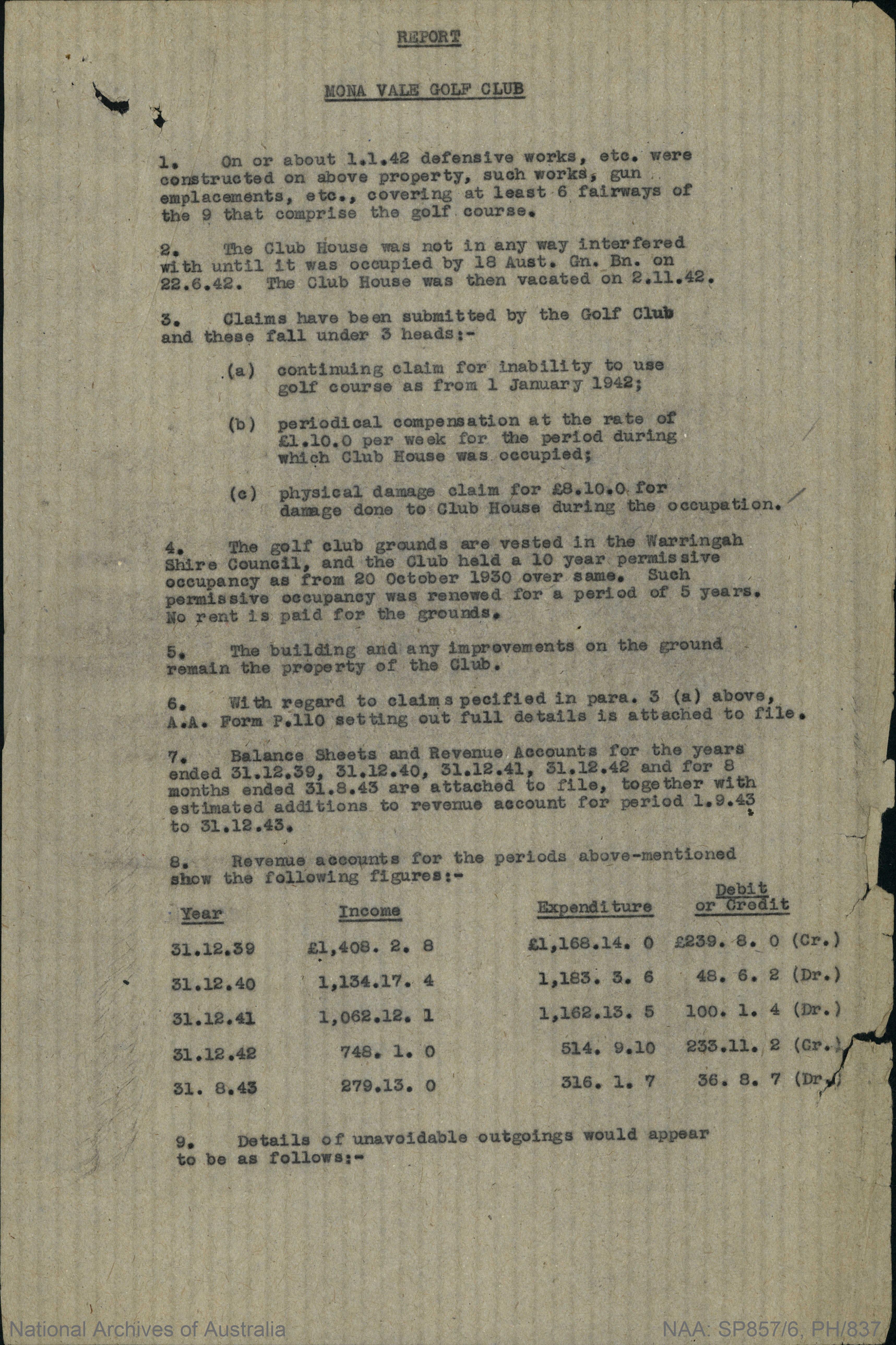
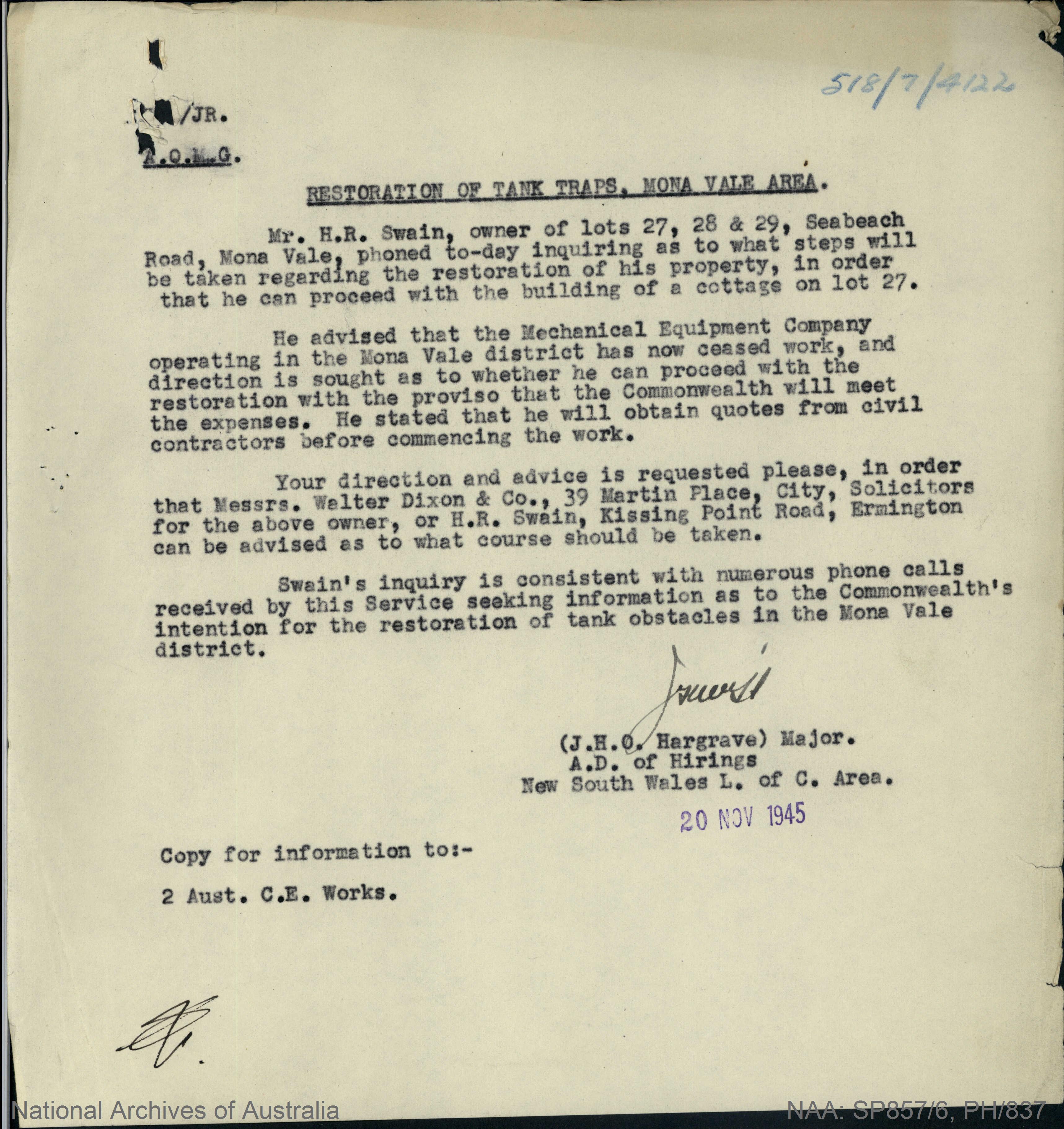
After Gerald Joseph McPhees' wife Mary passed away and Quest Haven closed at the end of 1939, the same year his son enlisted to serve; and would go and serve behind the lines in New Guinea as part of M Special Force and as a 22 and 23 year old, more on that in a few weeks, the payments for the property still had to be met.
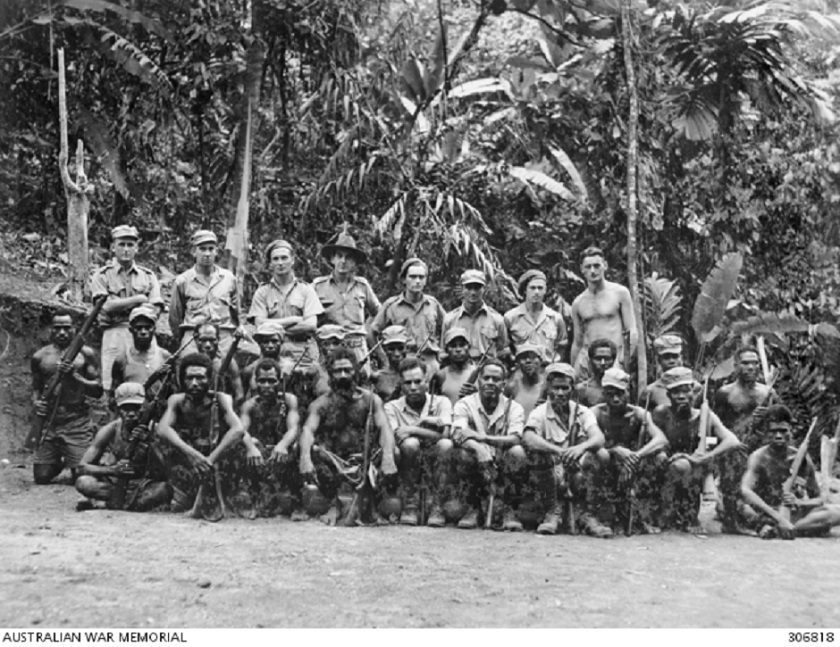
Bougainville, Solomon Islands. c. 1944-02. Group portrait of Coastwatchers and native police, some of whom are armed with rifles. Fourth back row, left to right: two native policemen; Flight Lieutenant J. A. Corrigan, RAAF; Lieutenant (Lt) J. R. Keenan, RAN; Lt J. H. Mackie, AIF; Captain R. C. Cambridge, AIF; Sergeant (Sgt) G. McPhee, AIF; Corporal (Cpl) N. D. Thompson, AIF; Sgt T. R. Aitkin, AIF; Corporal (Cpl) E. D. Otton, AIF. (Naval Historical Collection) (Formerly Y007) Courtesy Australian War Memorial AWM
Mr. McPhee Jnr. who enlisted on enlisted on November 29th, 1939 (born March 26th, 1921) is noted having communicated with the Army on this letter from Richardson and Wrench, that the premises could be hired on around £8 per week - the Army then hired it, the following year, at £5 to begin with.
It's also worth noting the change between what age you could be when enlisting to serve in WWI and WWII. The age limits set for enlistment in the Second Australian Imperial Force (AIF) in 1939 were 20 to 35 for recruits, higher for officers and some NCOs. The maximum was raised to 40 in 1940, and the minimum lowered to 19 in 1941, and 18 in 1943; written parental consent was required for anyone under the age of 21. Even when the limit was lowered to 18, men of that age were not permitted to go to New Guinea or the Northern Territory. The same restriction also applied in the Citizen Military Forces (CMF), although the 18 year lower limit existed earlier. From 1942, the CMF also shared with the AIF a requirement that all recruits under the age of 20 on enlistment undergo six months training before being posted to a unit. The CMF upper age limit was 60. Height requirements for the AIF in 1939 was a minimum of 5 feet 6 inches (167.6 cm); a year later 5 feet (152 cm) was enough. - AWM
This too was in the WWII La Corniche file held by the National Archives and would account for the young look to some of those training in the area, as seen in the photographs below: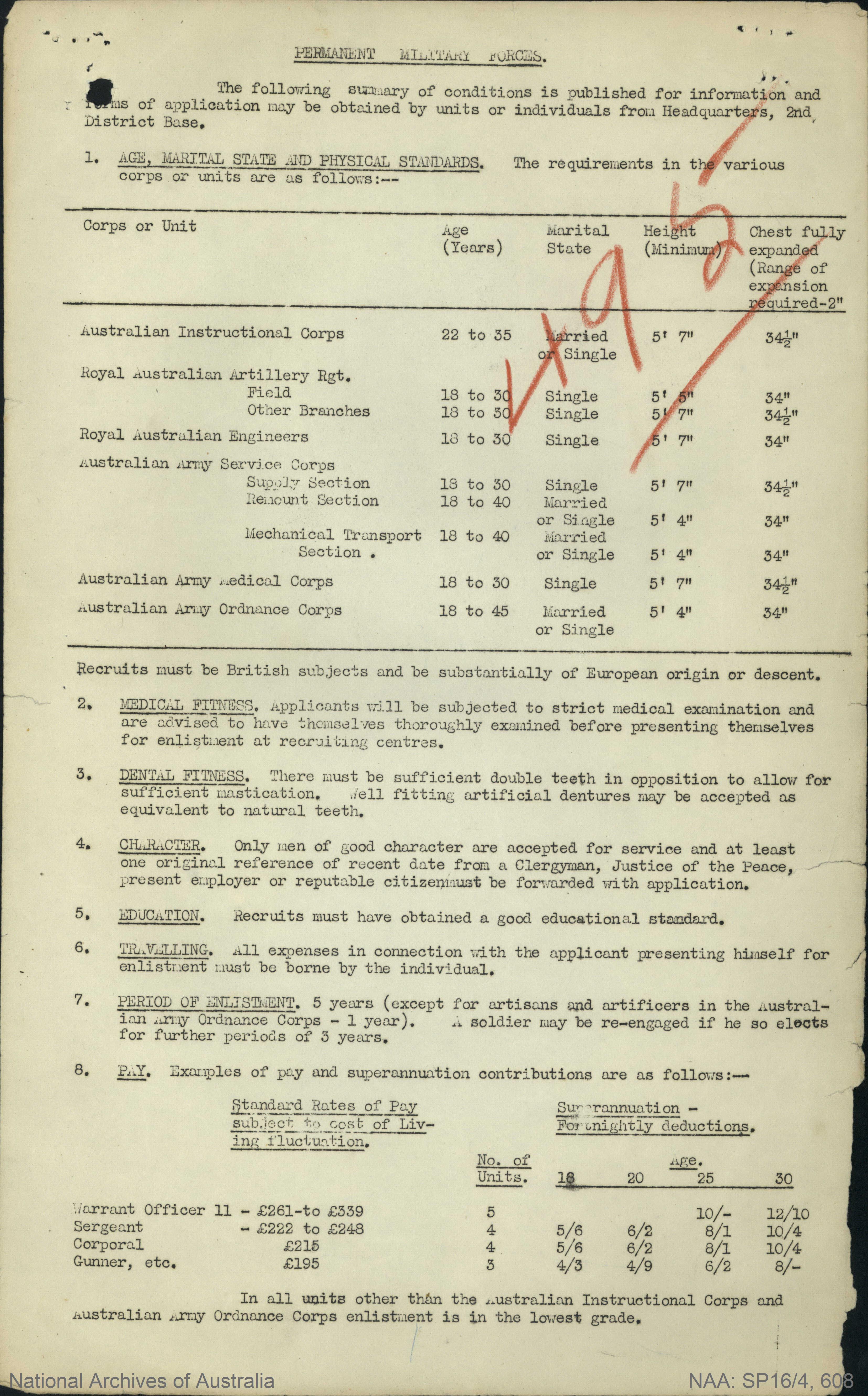
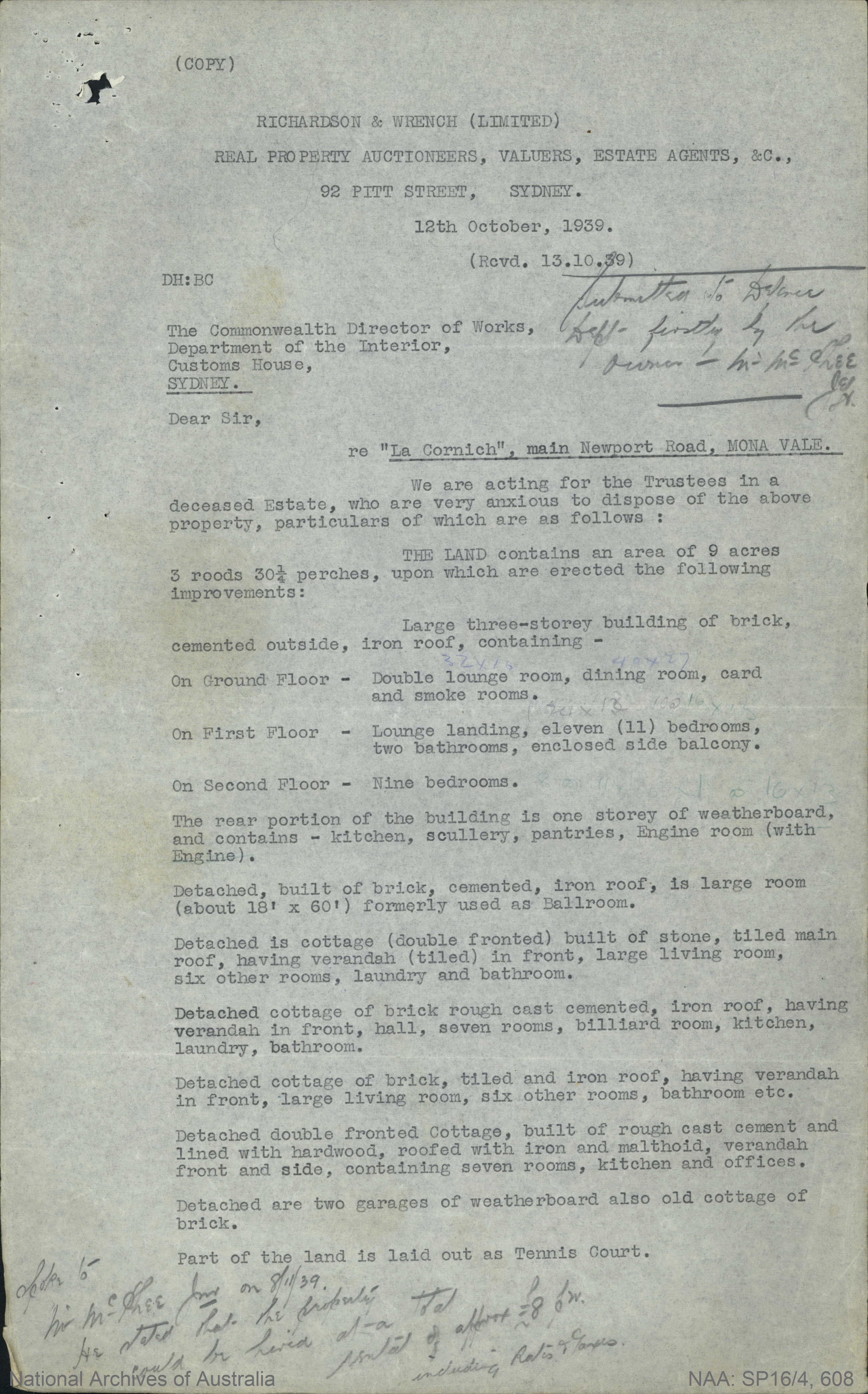
The Army had taken over the Mona Vale Golf Course grounds and clubhouse to use, as well as be in place to defend, but the camping out in what was originally 'The Black Swamp' led to problems - you can still see where the waters used to flow in the 1800's, and flood, every time our area gets a serious downpour - the greens get inundated and pools form in the undulations of the land between the elevated greens.
By the middle of 1941 the conditions the men were bivouacked in are described in records held by the National Archives of Australia as 'deplorable' - people were getting ill from sleeping in puddles, even putting them up on rough pallets didn't help; the rain can rise in that place, and does so quickly.
The grand old building fairly obviously within view was proposed as an alternative. It still had the cottages as well, good for Officers.
Exercises carried out in the vicinity, and 'camp life' were photographed on at least one occasion by R. Donaldson NSW photographer for PIX Magazine - not the only time our area appeared in this magazine during this conflict. The National Library has digitised all of these Issues and made them available online. Two other examples ifrom July and August 1941:
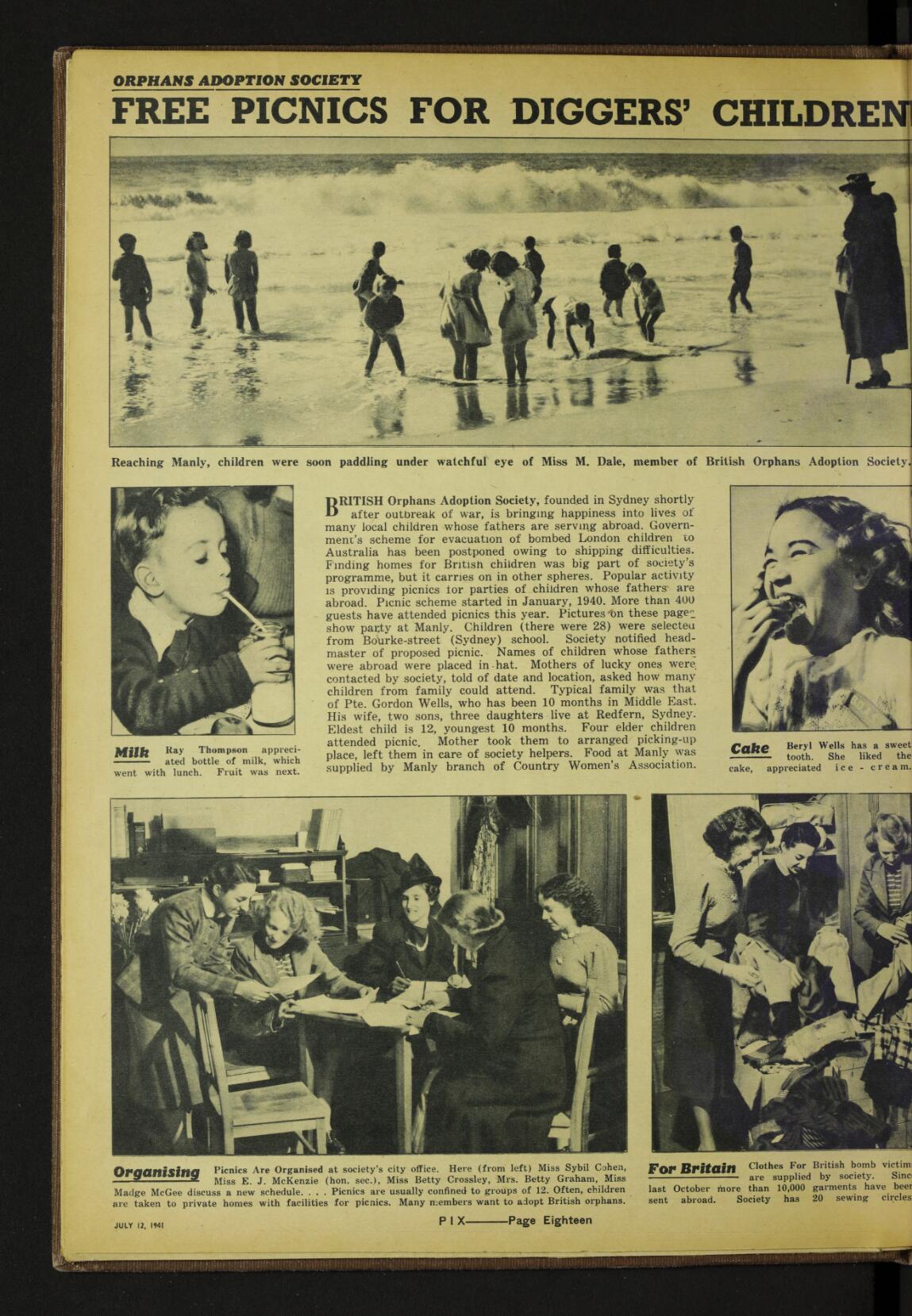
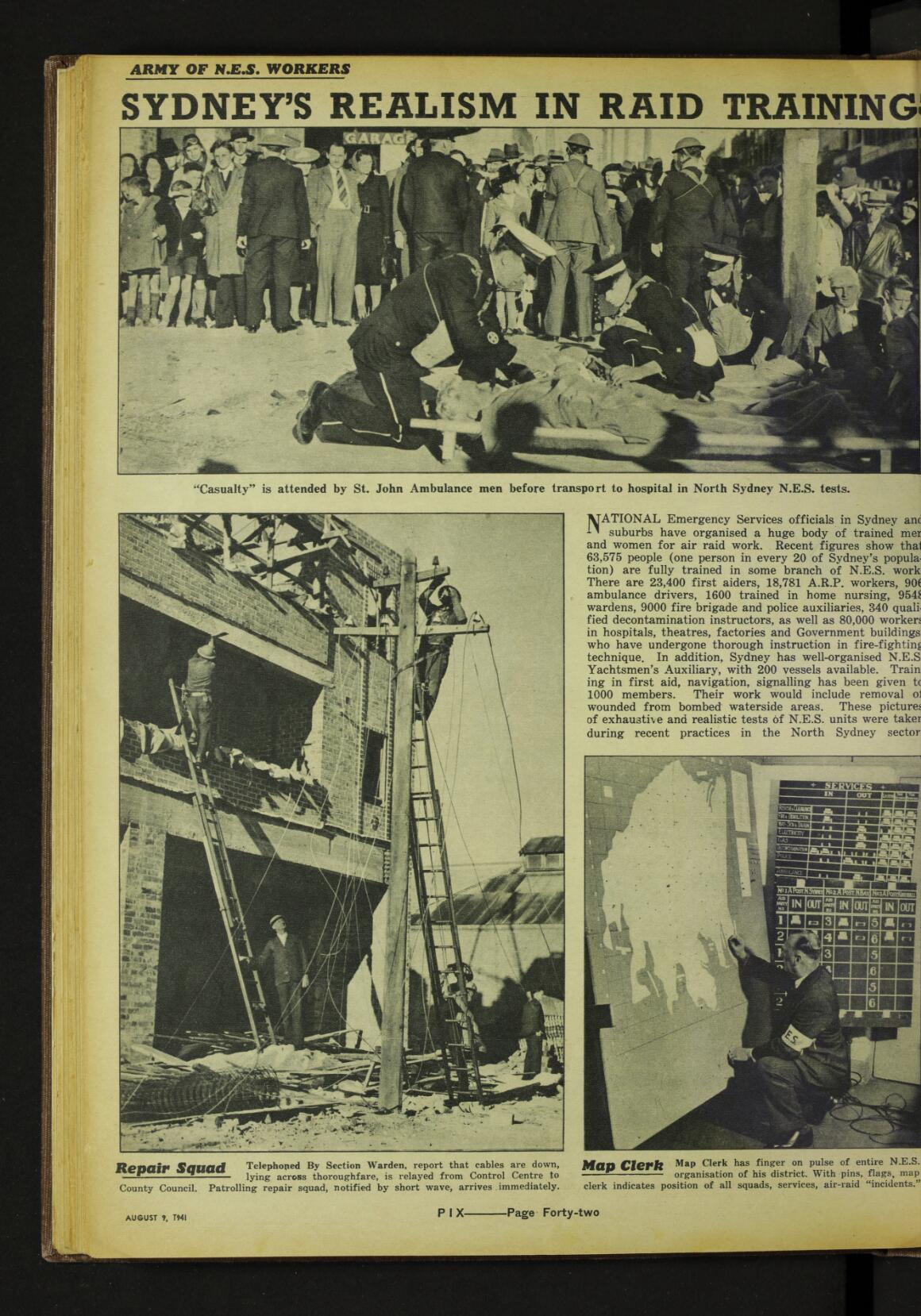
These images are all courtesy of the State Library of NSW's own digitisation program, which has dated them as taken on in June 20th, 1941:
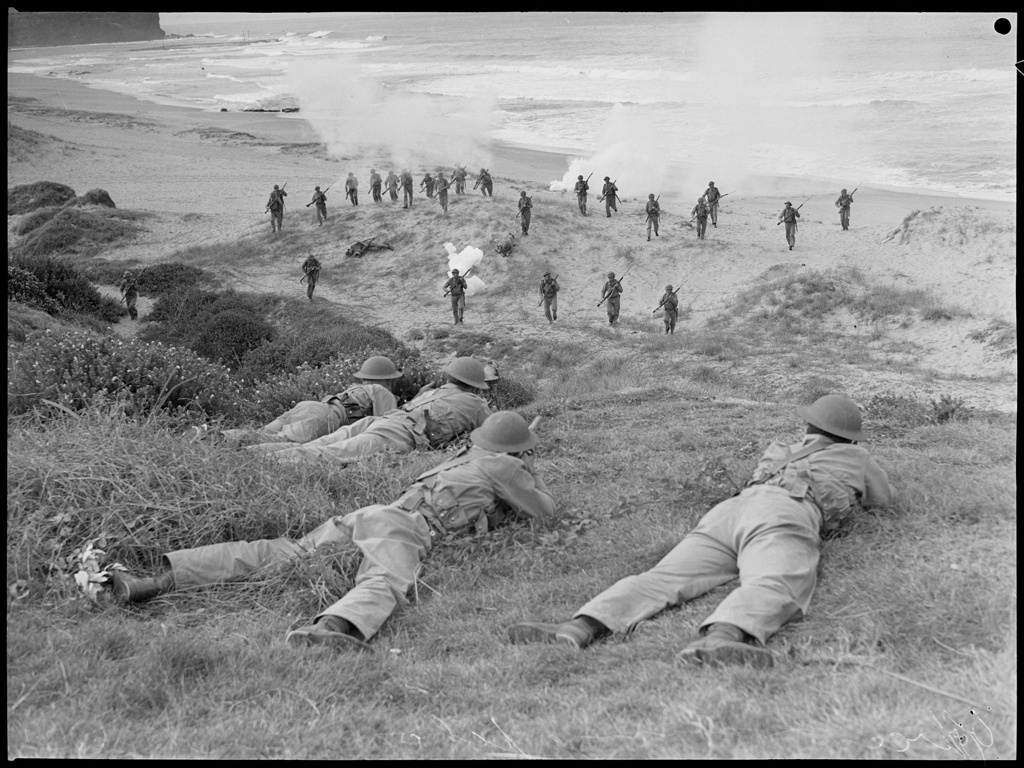
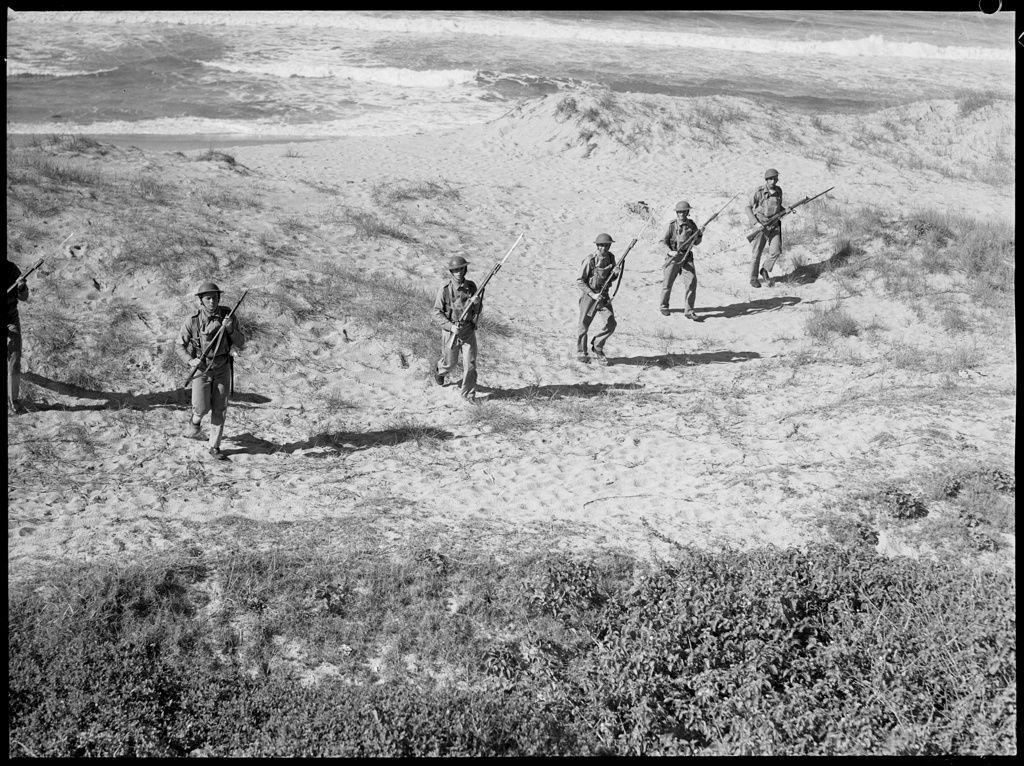
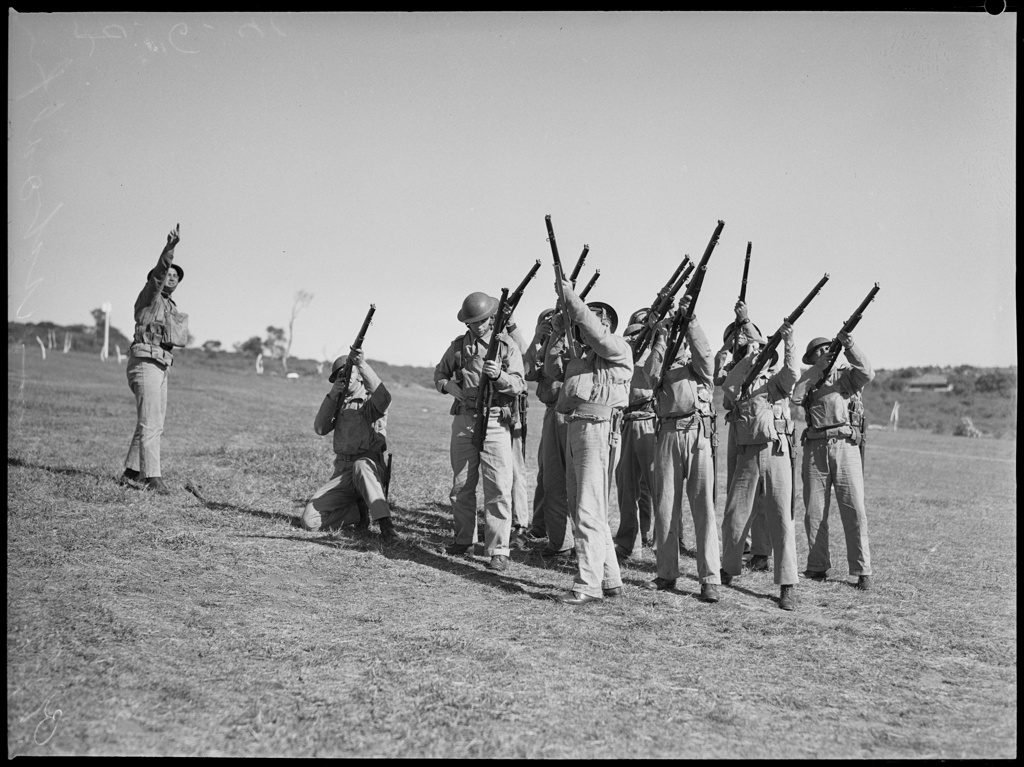
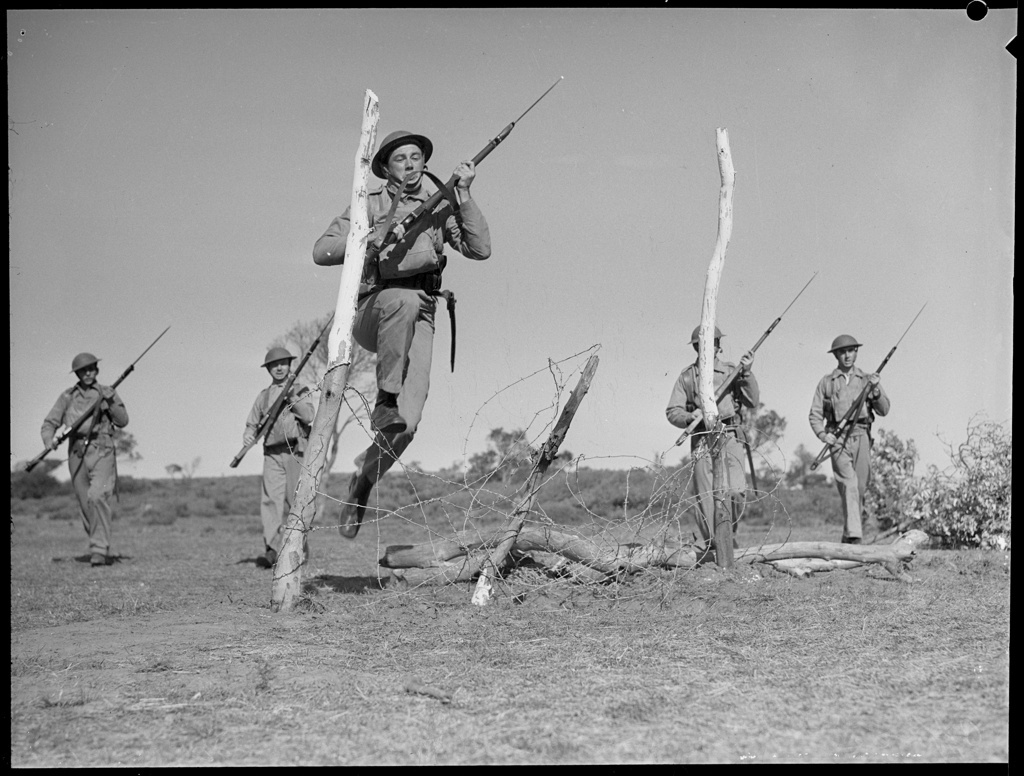
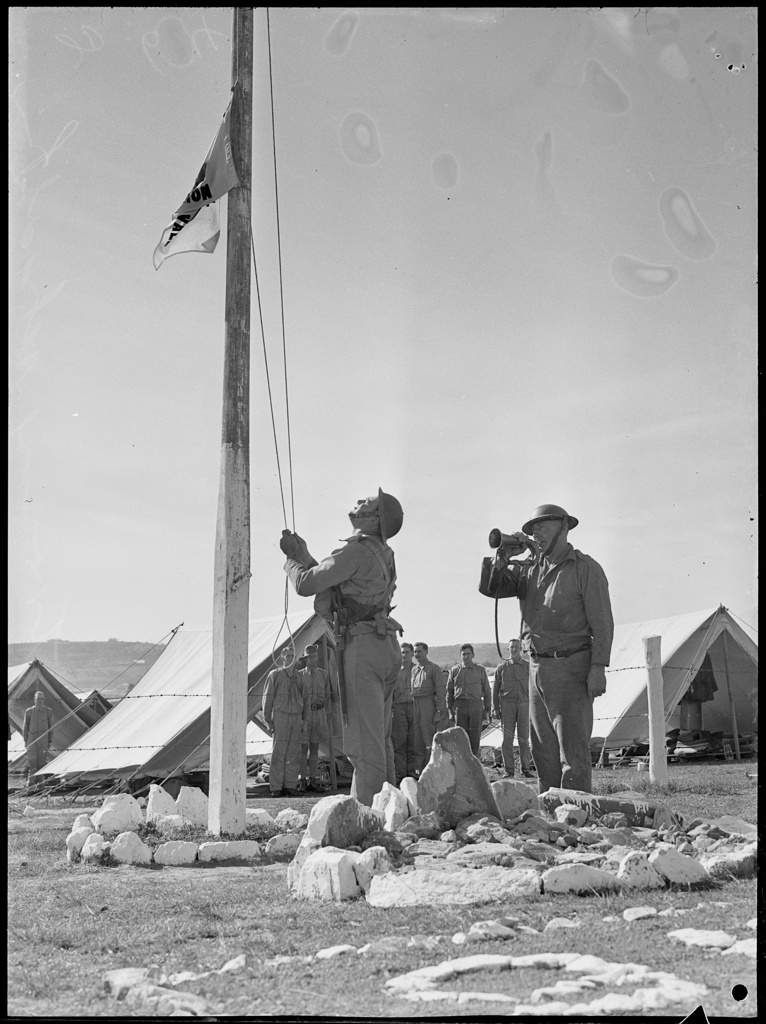
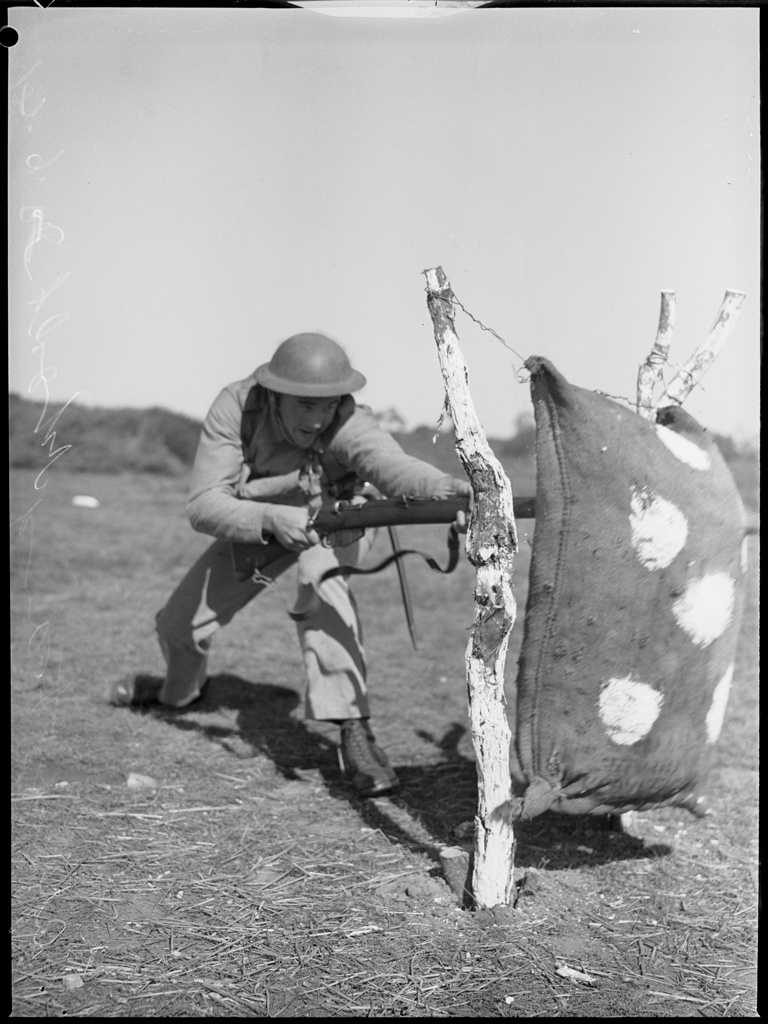
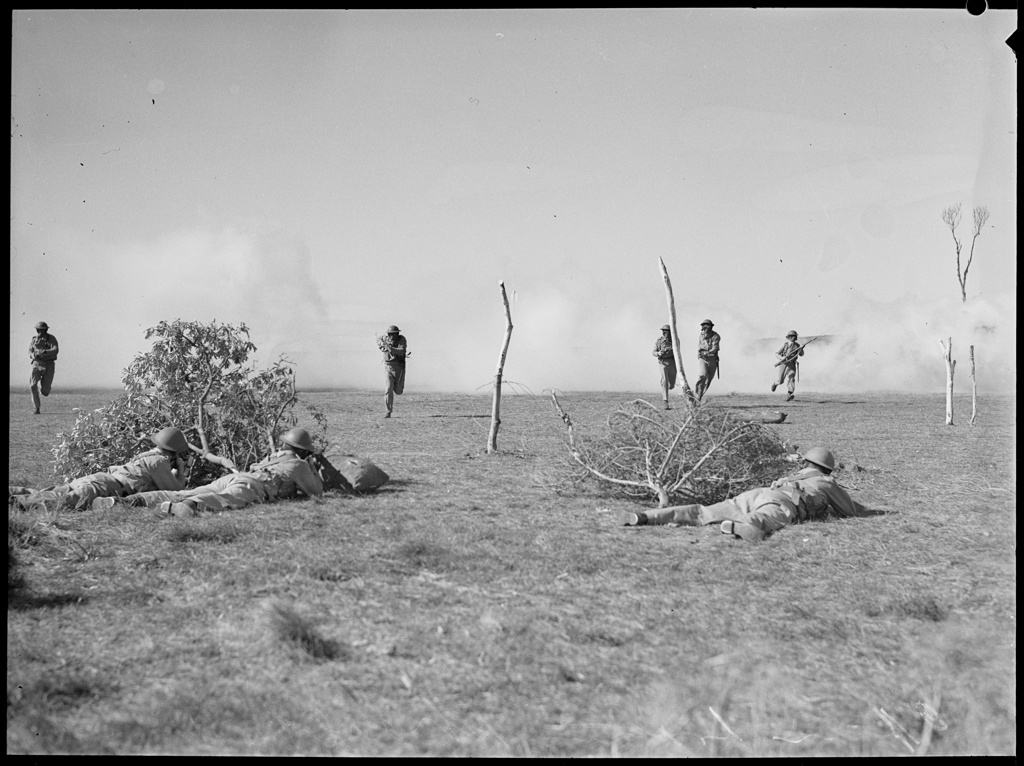
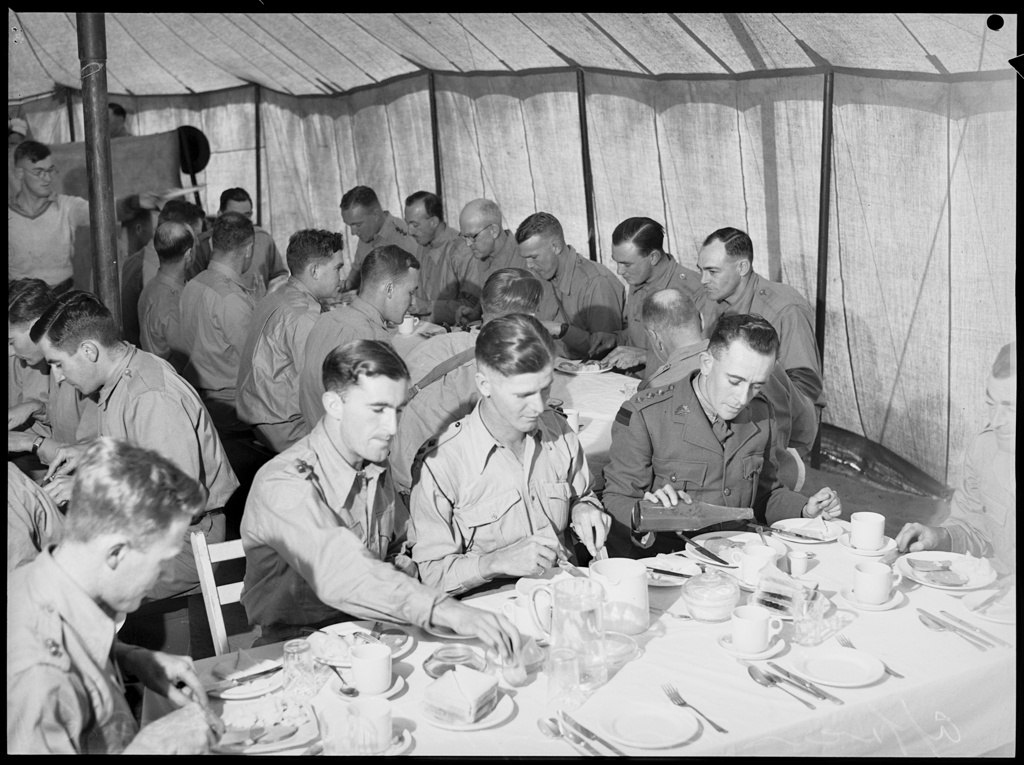
.jpg?timestamp=1660417222932)
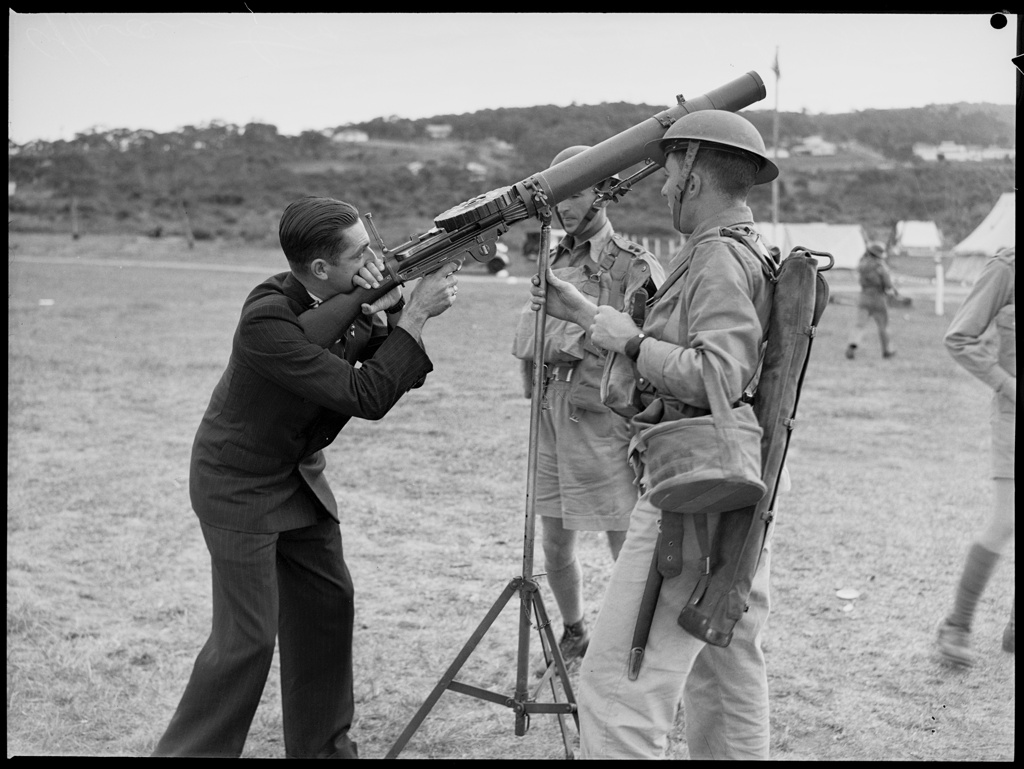
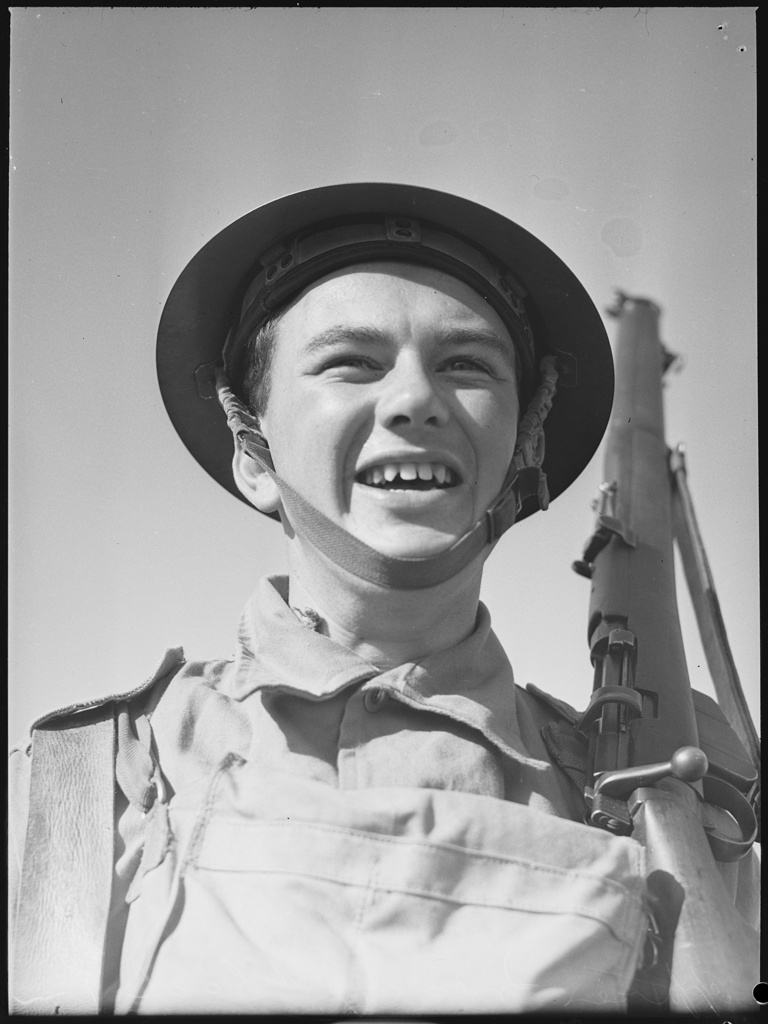
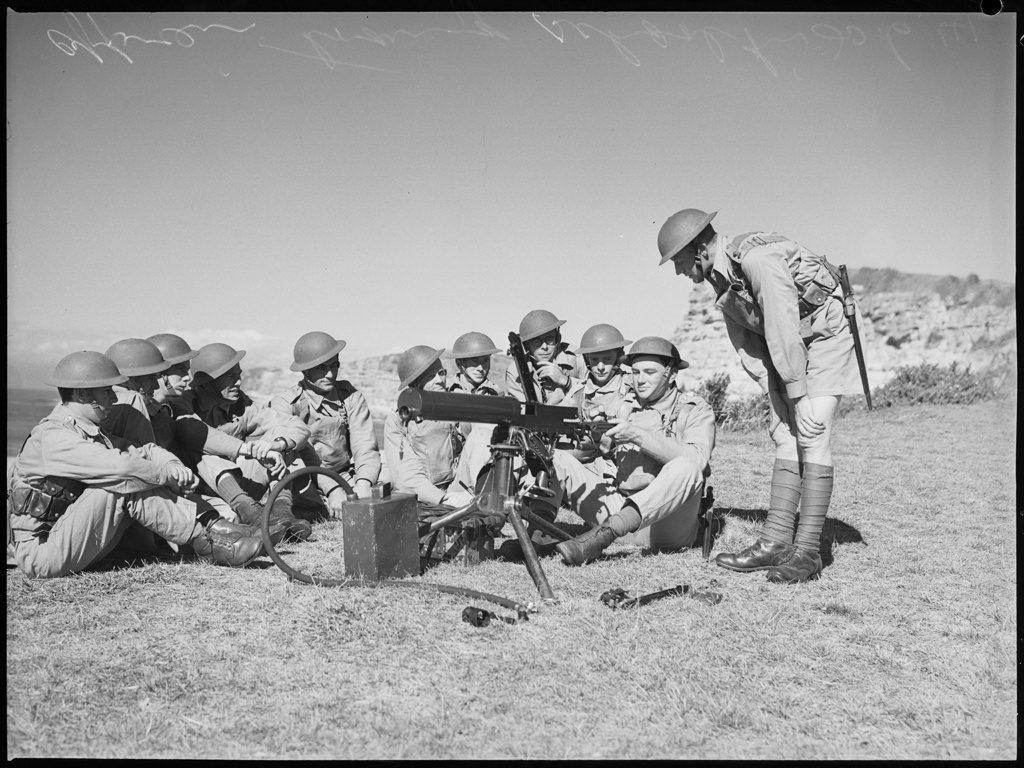
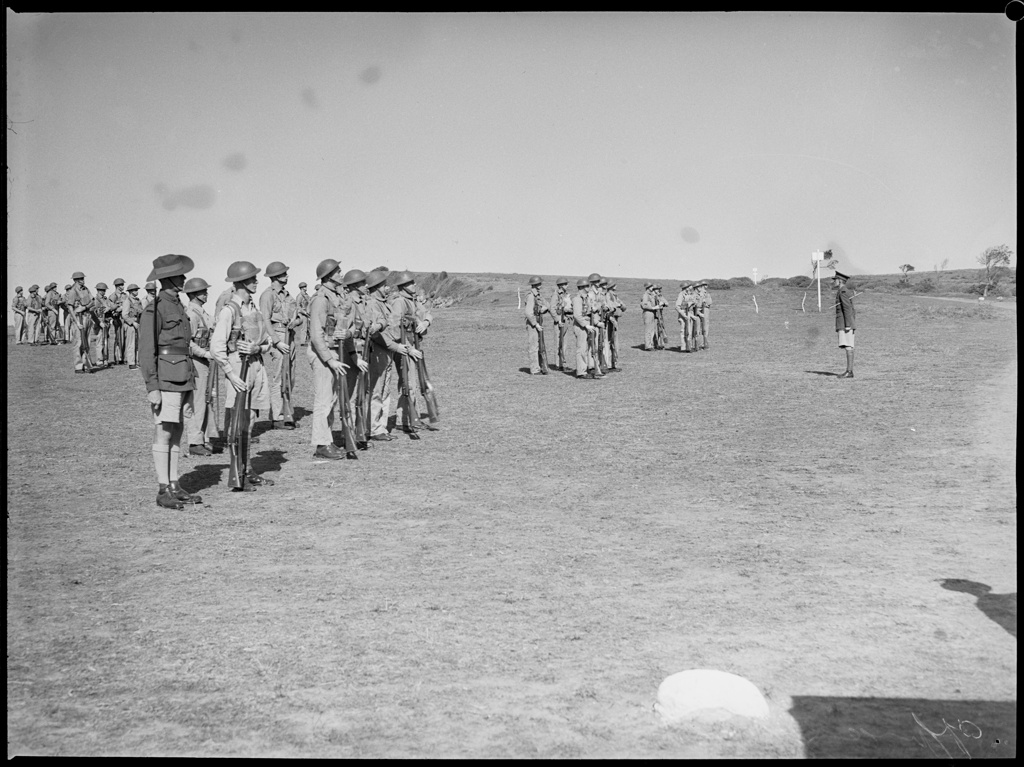
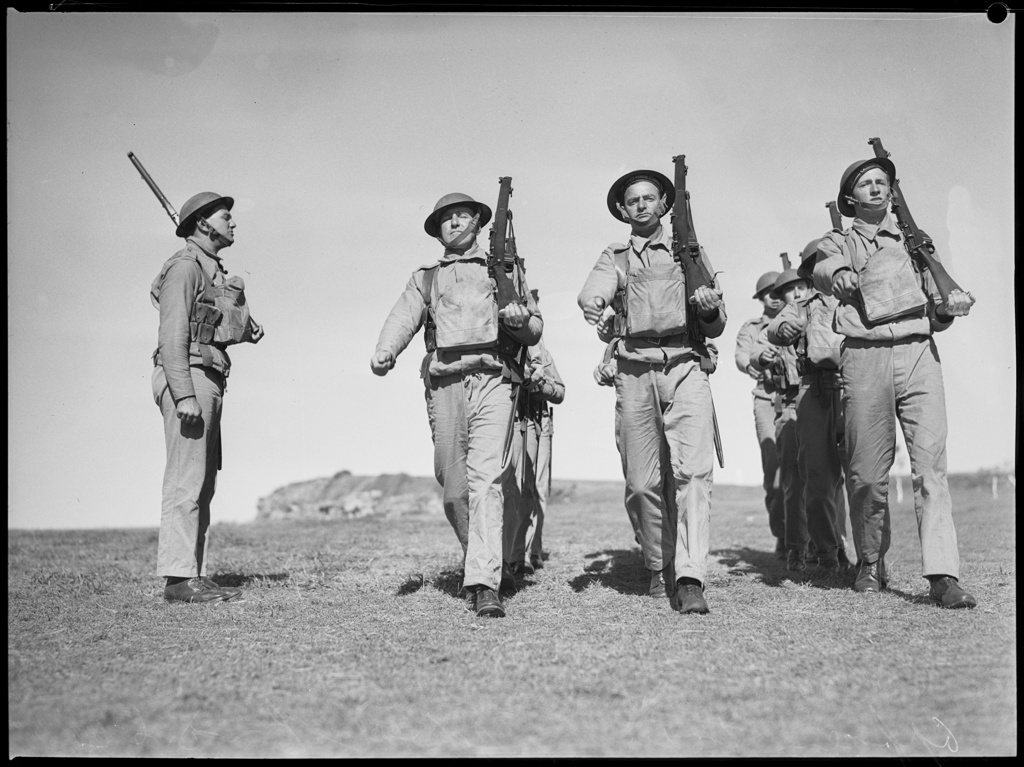
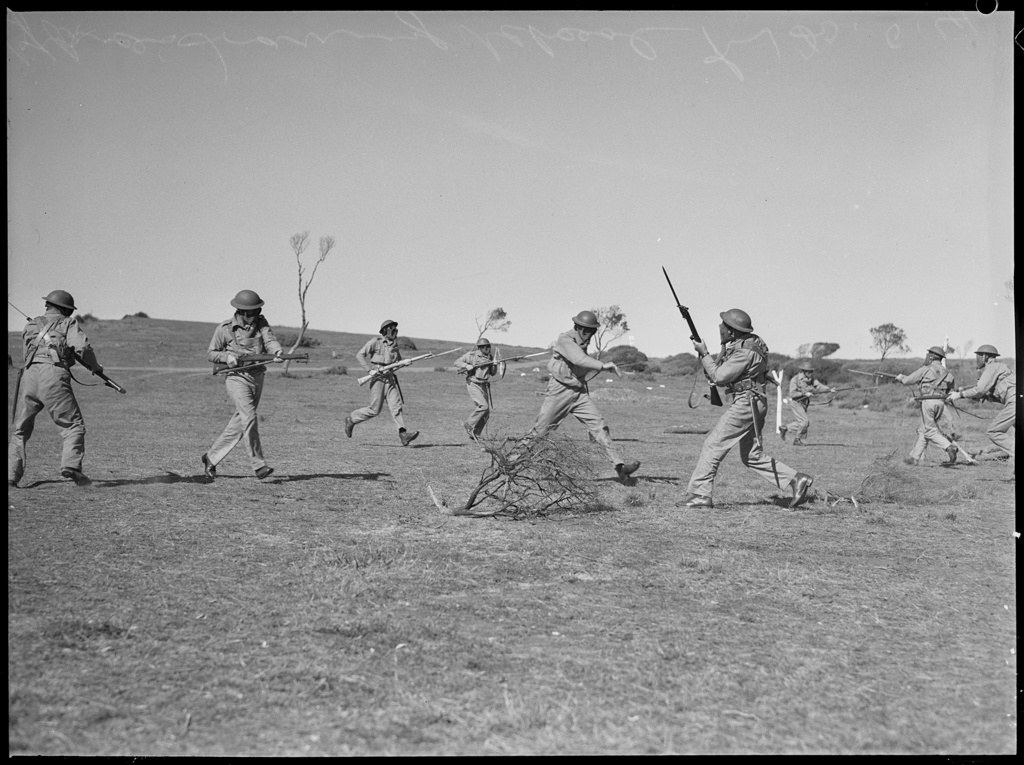
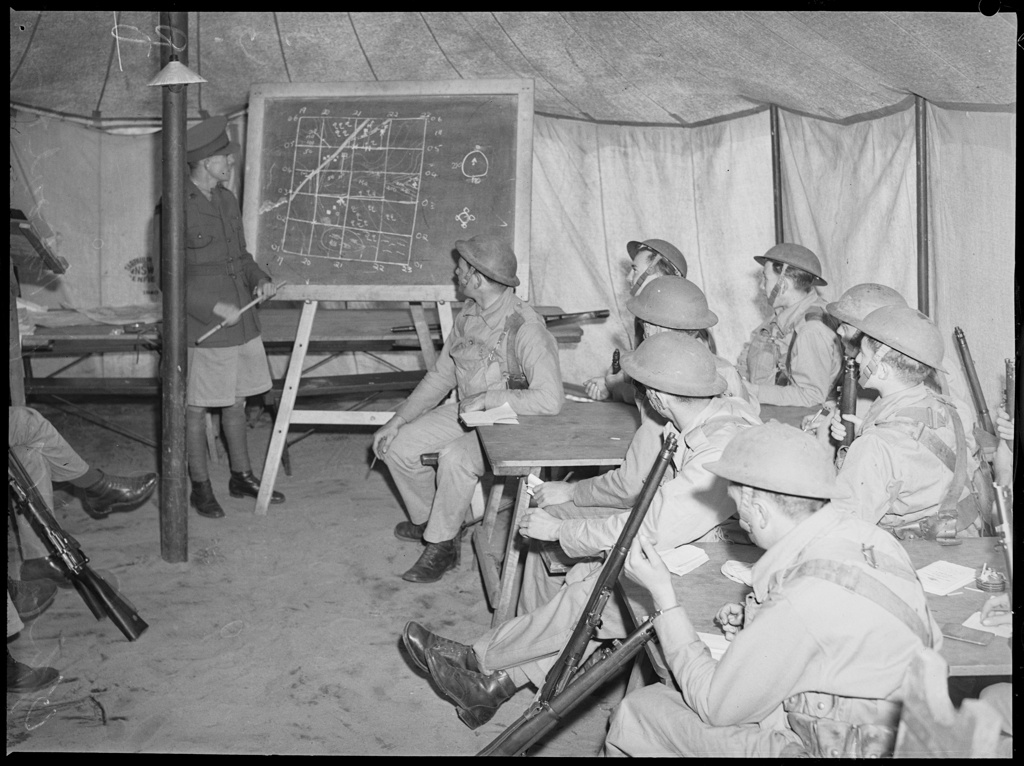
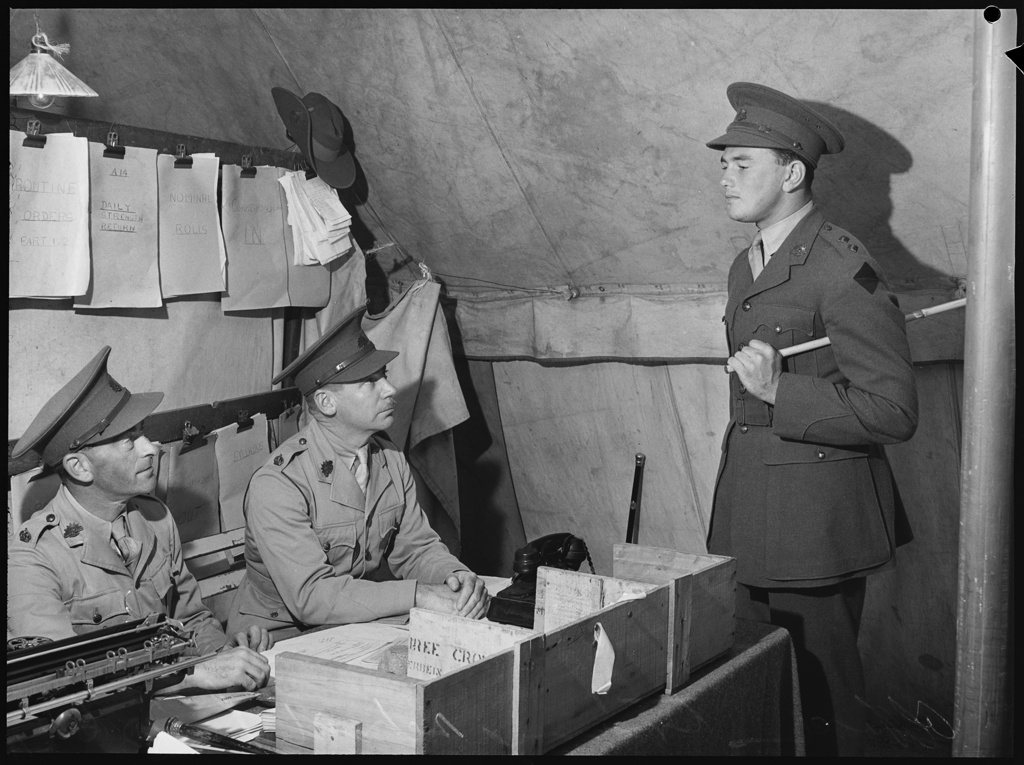
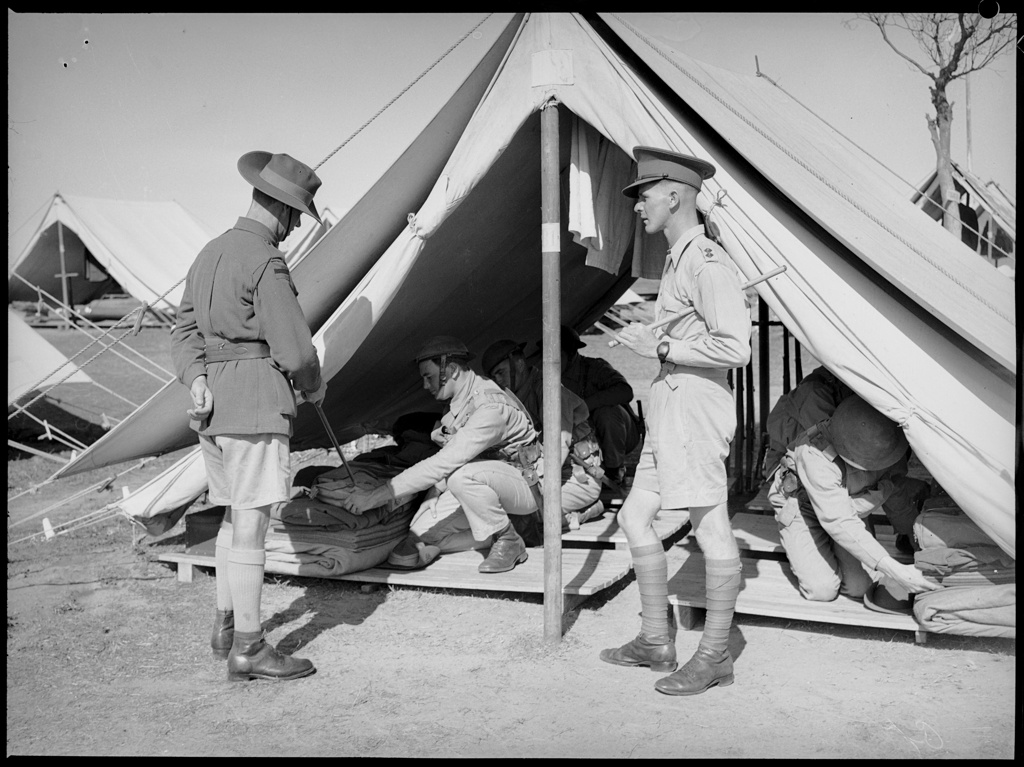
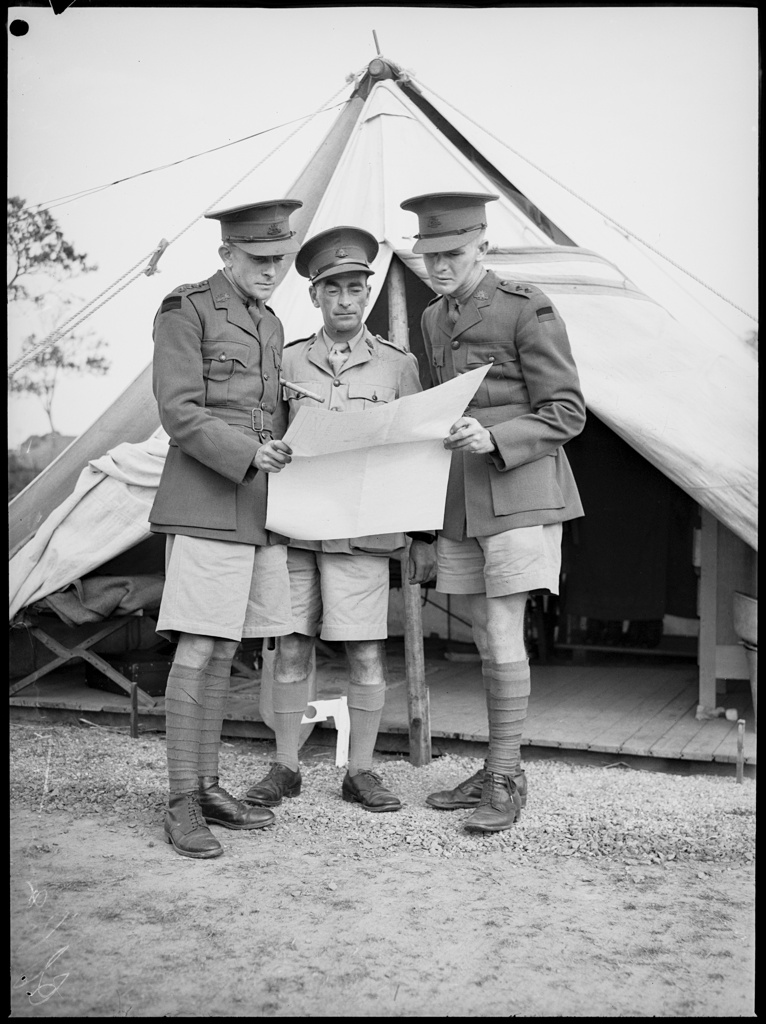
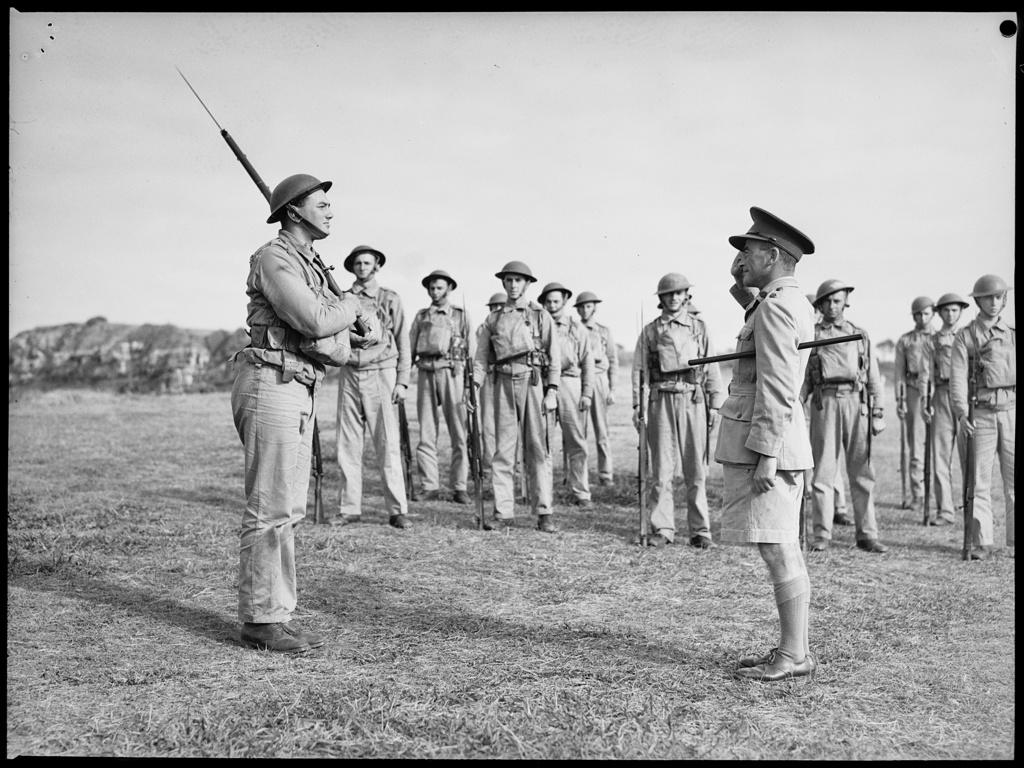
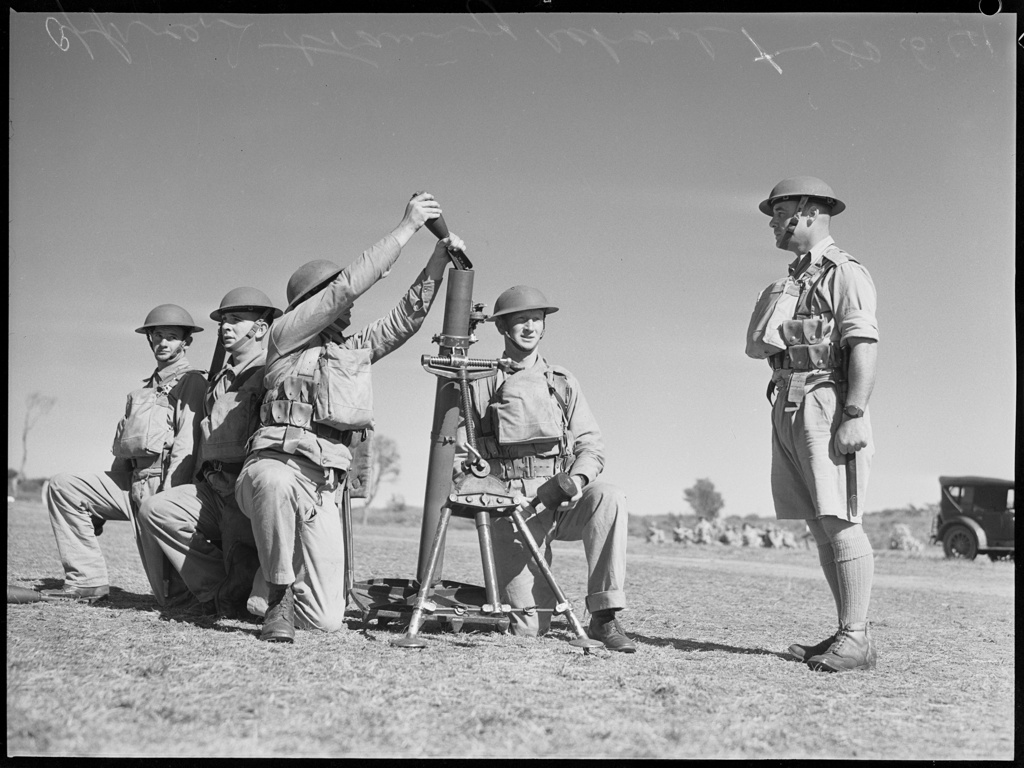
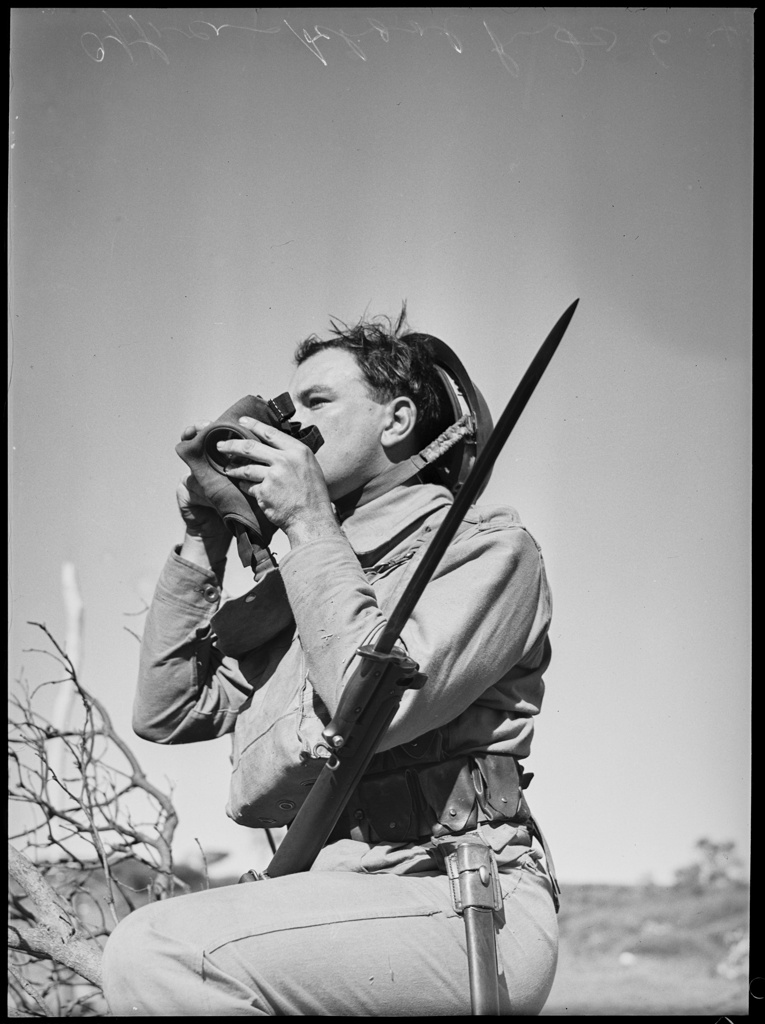
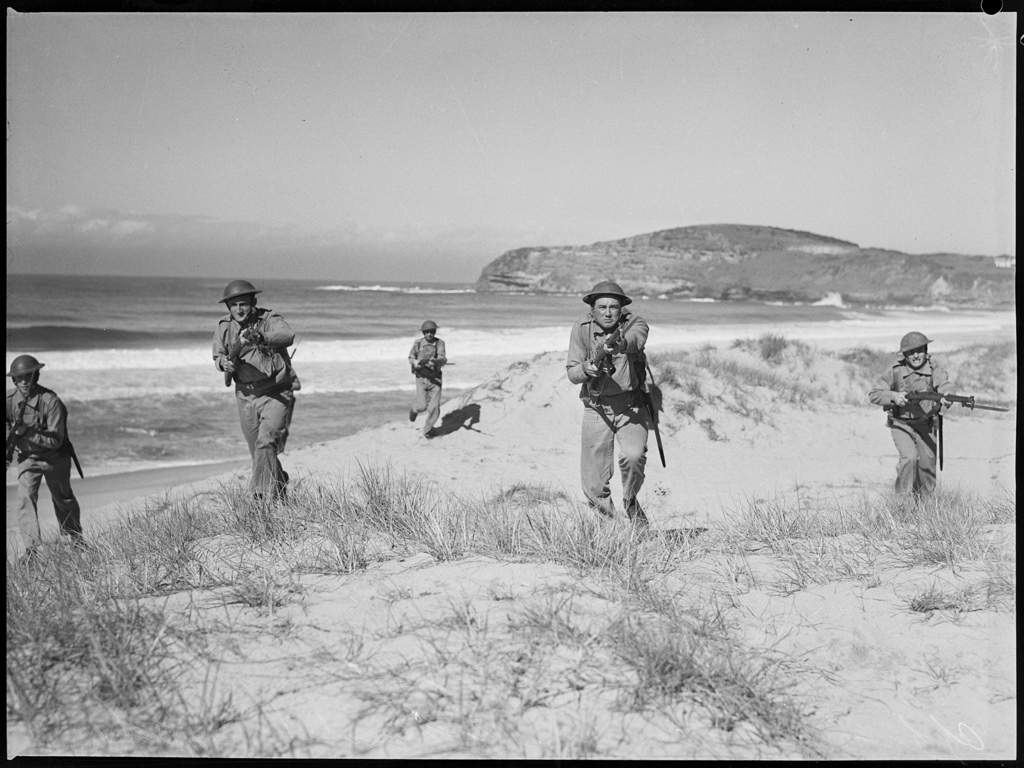
The National Archives of Australia provide the documents associated with the use of La Corniche during WWII as well as, through the lists of what need to be repaired after the commandeered building was no longer needed, of the structure as it was then and he cottages also occupied by Australia's Defence personnel, For instance, when the Defence Forces commandeered the building and agreed to the rent, it didn't cover what the mortgage was, so that was renegotiated. Another item that shows up in the records is a charge for excess water usage, clearly Mr. McPhee Snr., although supportive of the war effort, not least because of what his son was doing behind the liens in New Guinea, did not have excessive £ during this time of everyone going without to invest in their own defence, to meet the extra charges.
The records show:
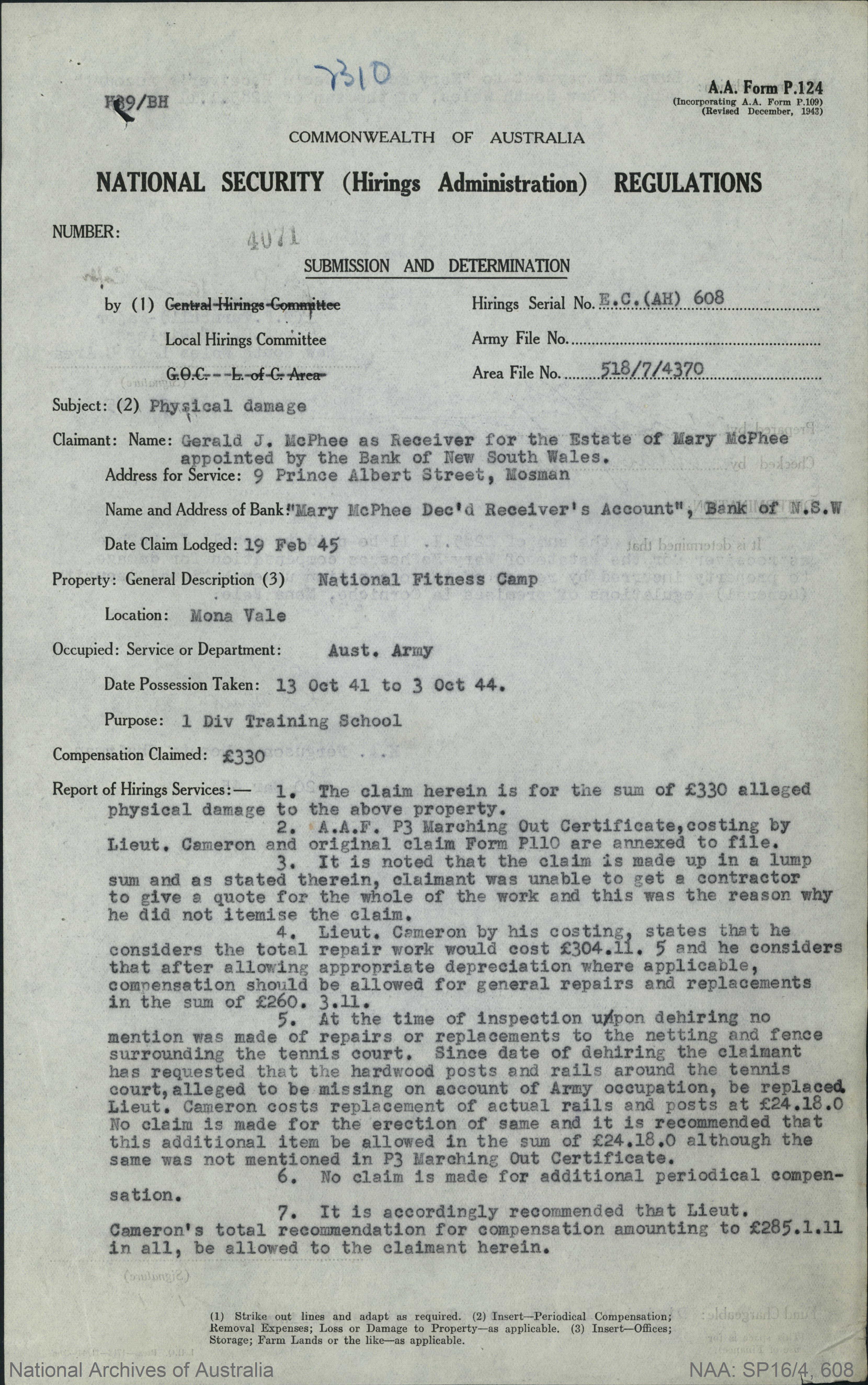
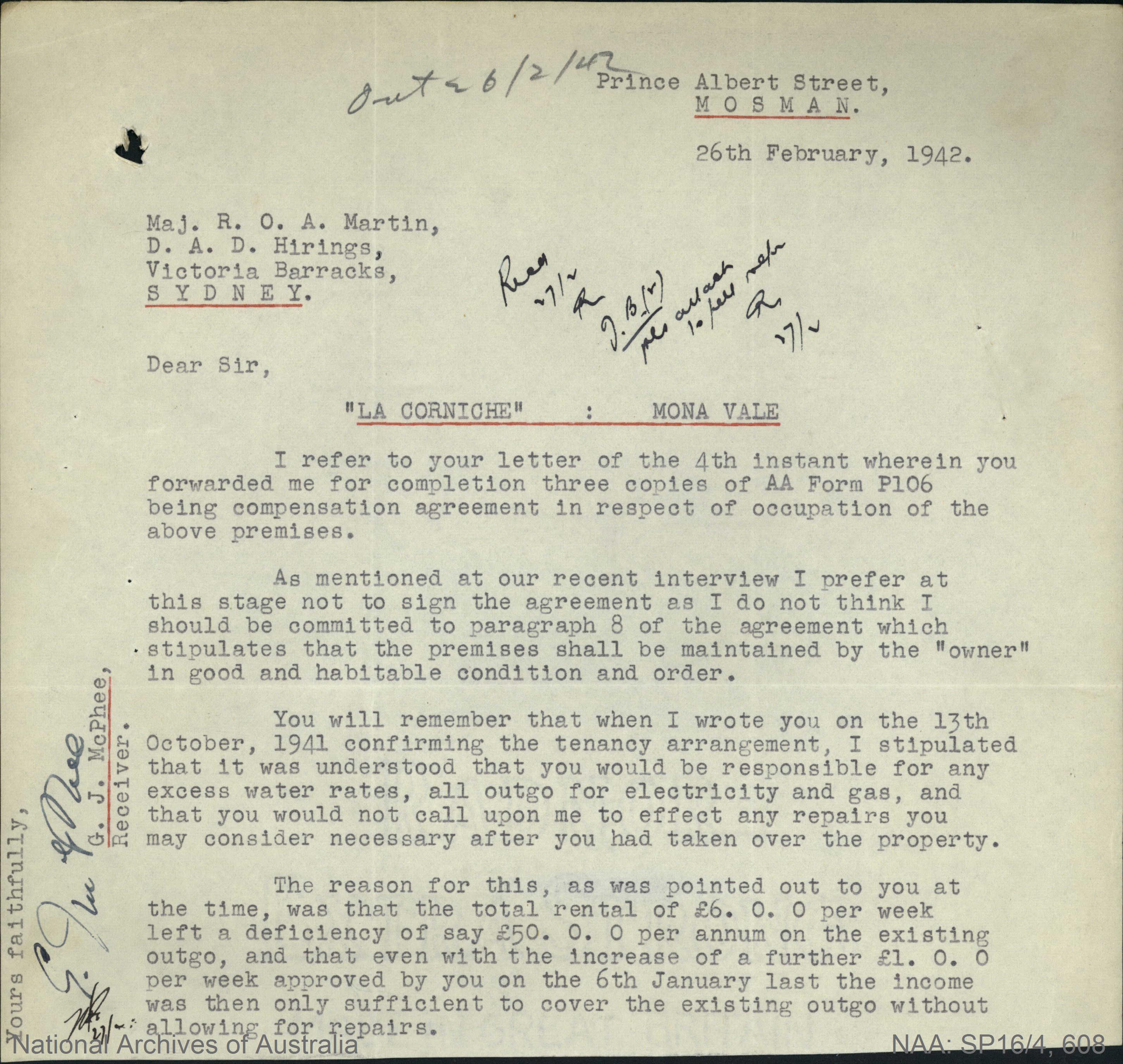
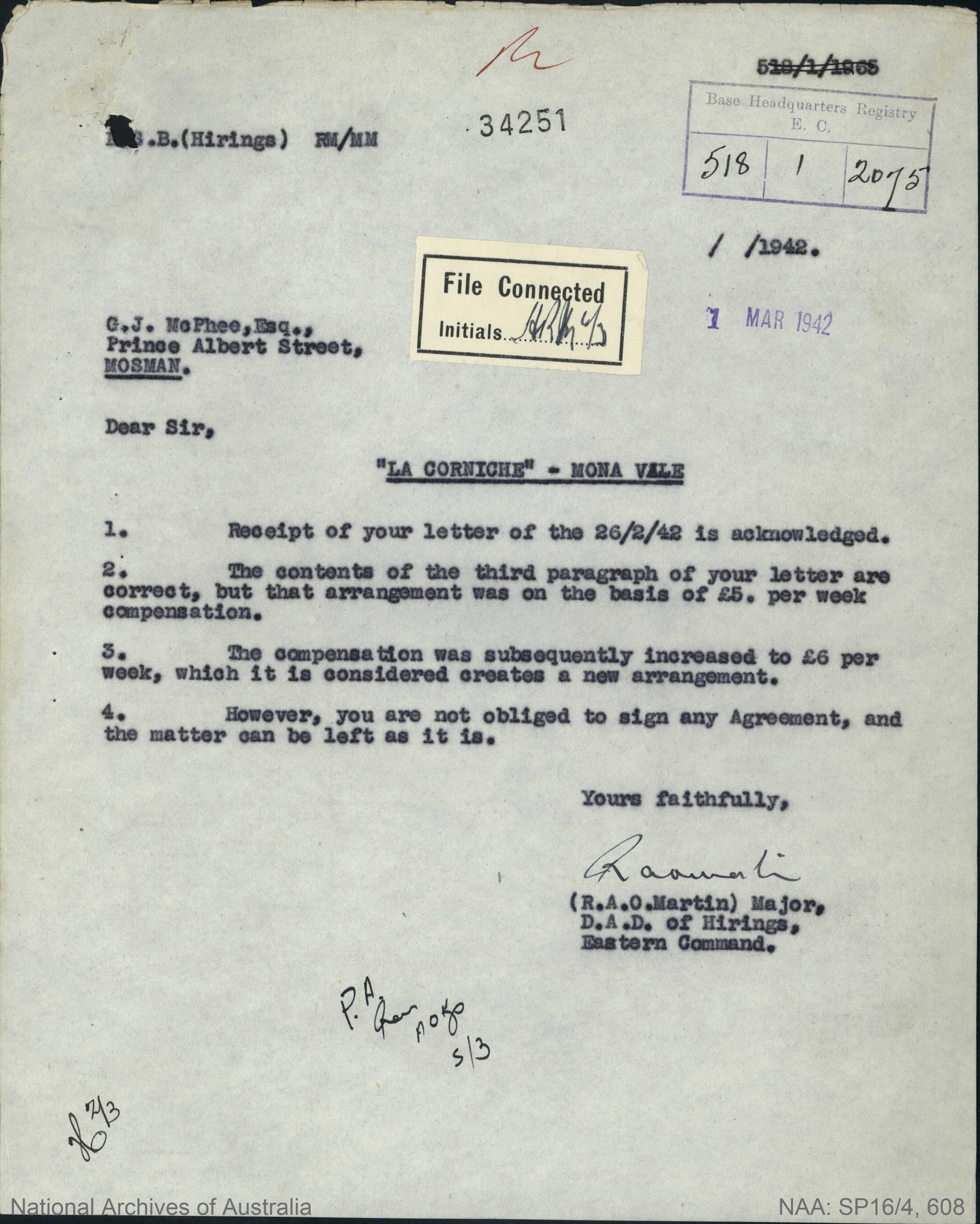
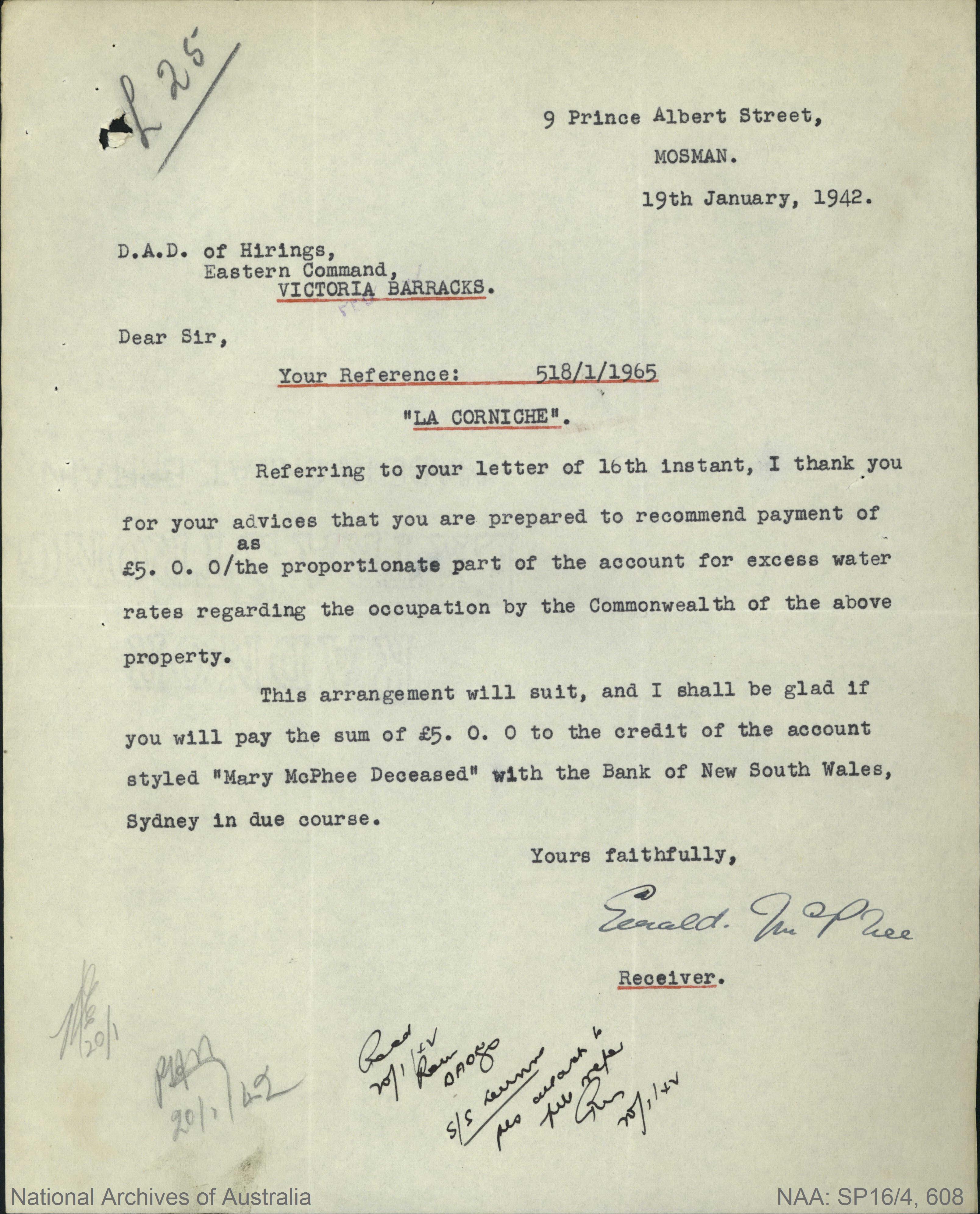
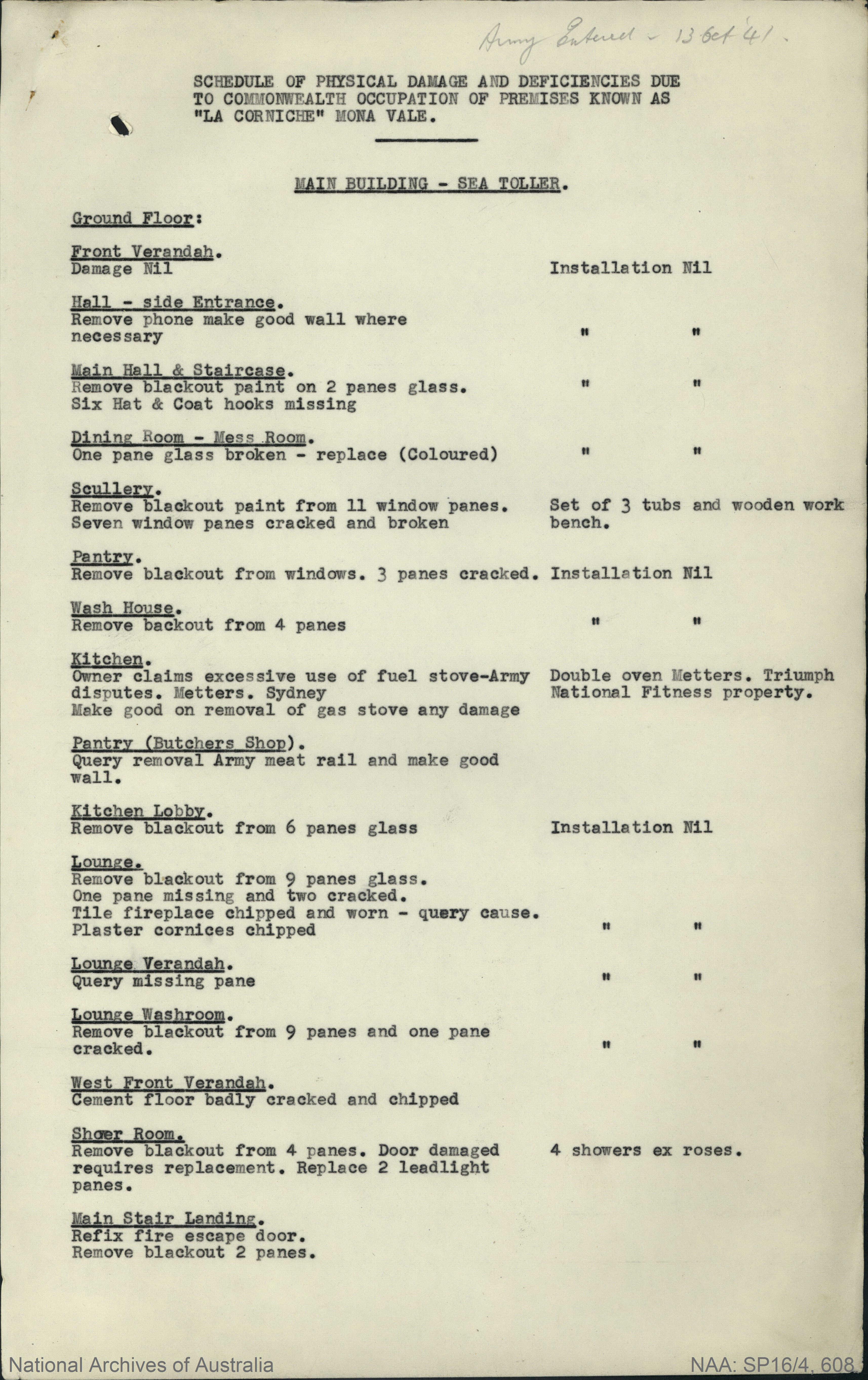
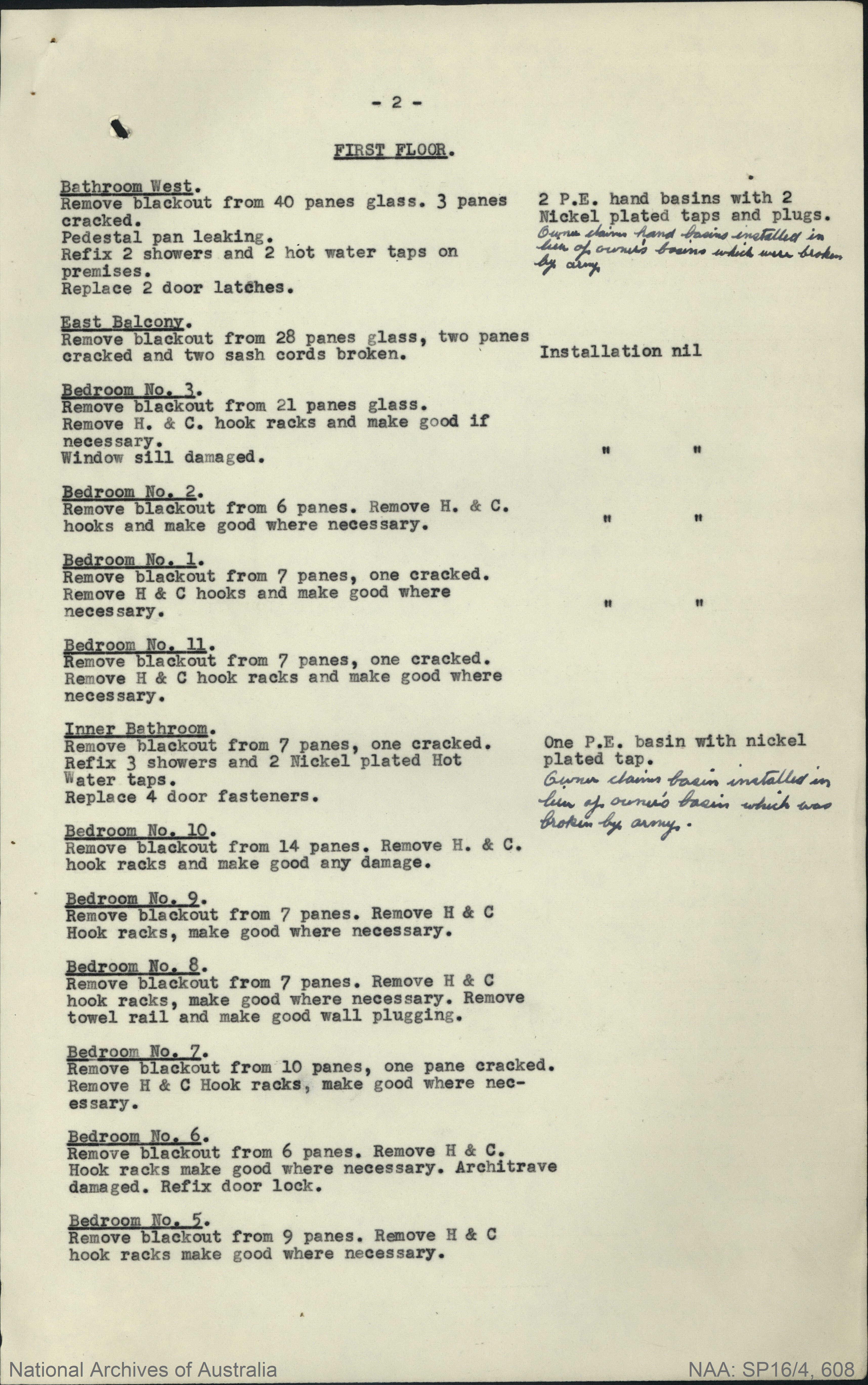
Demolition for Flats
With the cessation of hostilities and the return of La Corniche to Mr. McPhee, as recorded in National Fitness Centres At Broken Bay, Mona Vale, Narrabeen: Local History Shows We Like To Move It! Move It! and The Australian Air League Camps At Mona Vale Beach In The Old La Corniche Building + The Robey Family Of Manly; 'Always Looking Out For Younger People', Gordon Young originally looked at the site as a National Fitness Camp as a possibility, when shifting some equipment from Patonga, prior to the establishment of the same at Narrabeen. The grounds and buildings were then leased for Air League use in 1944.
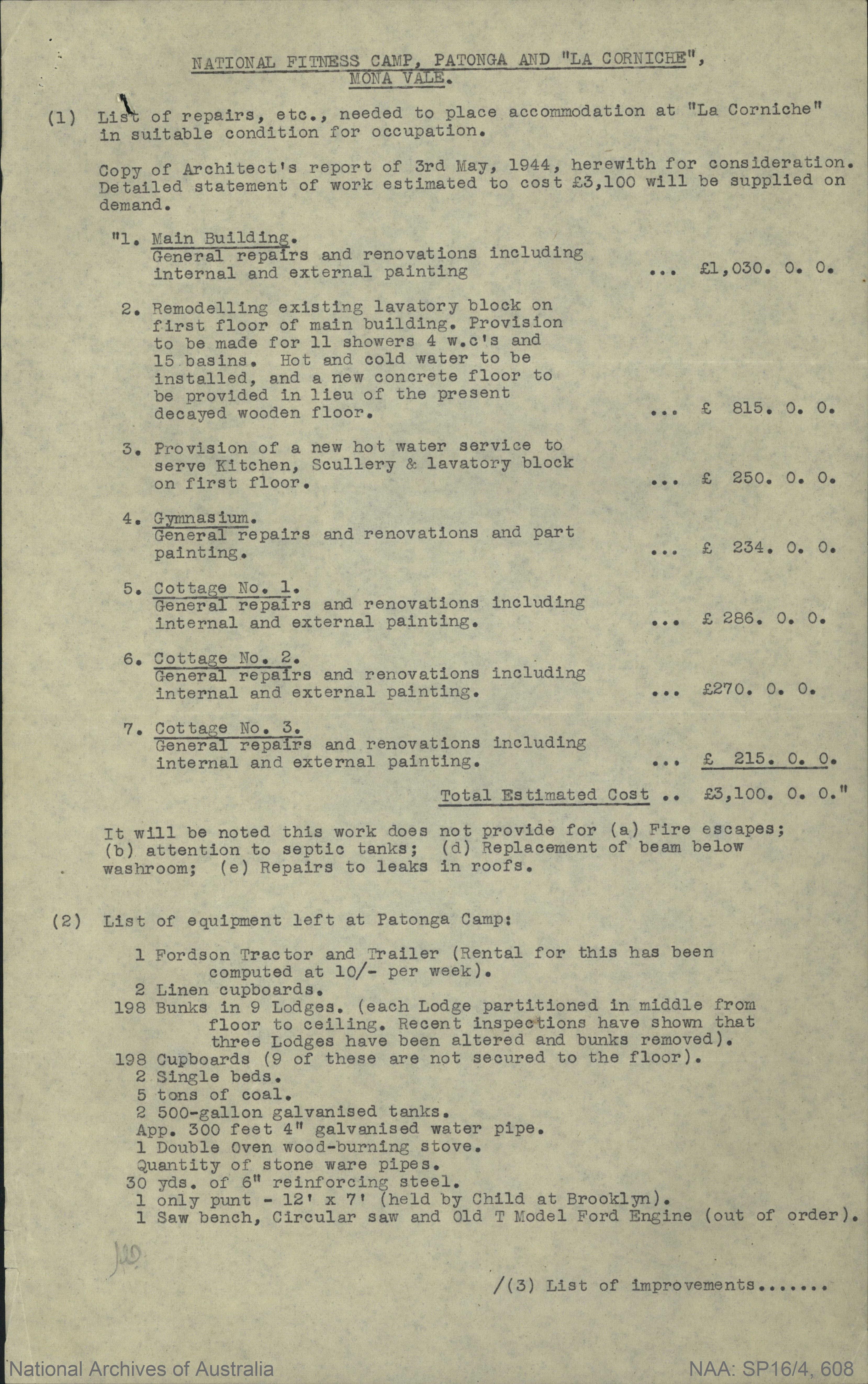
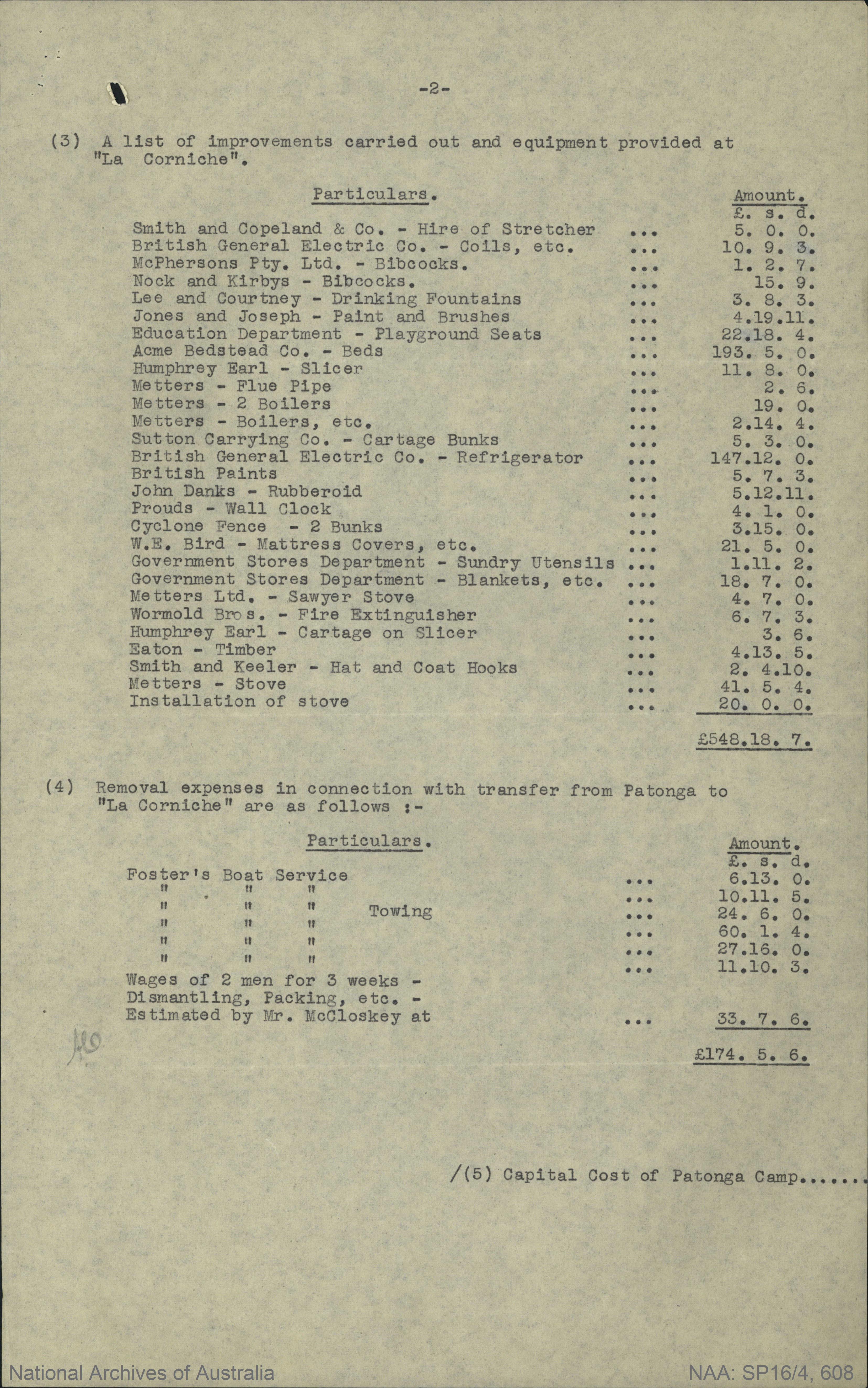
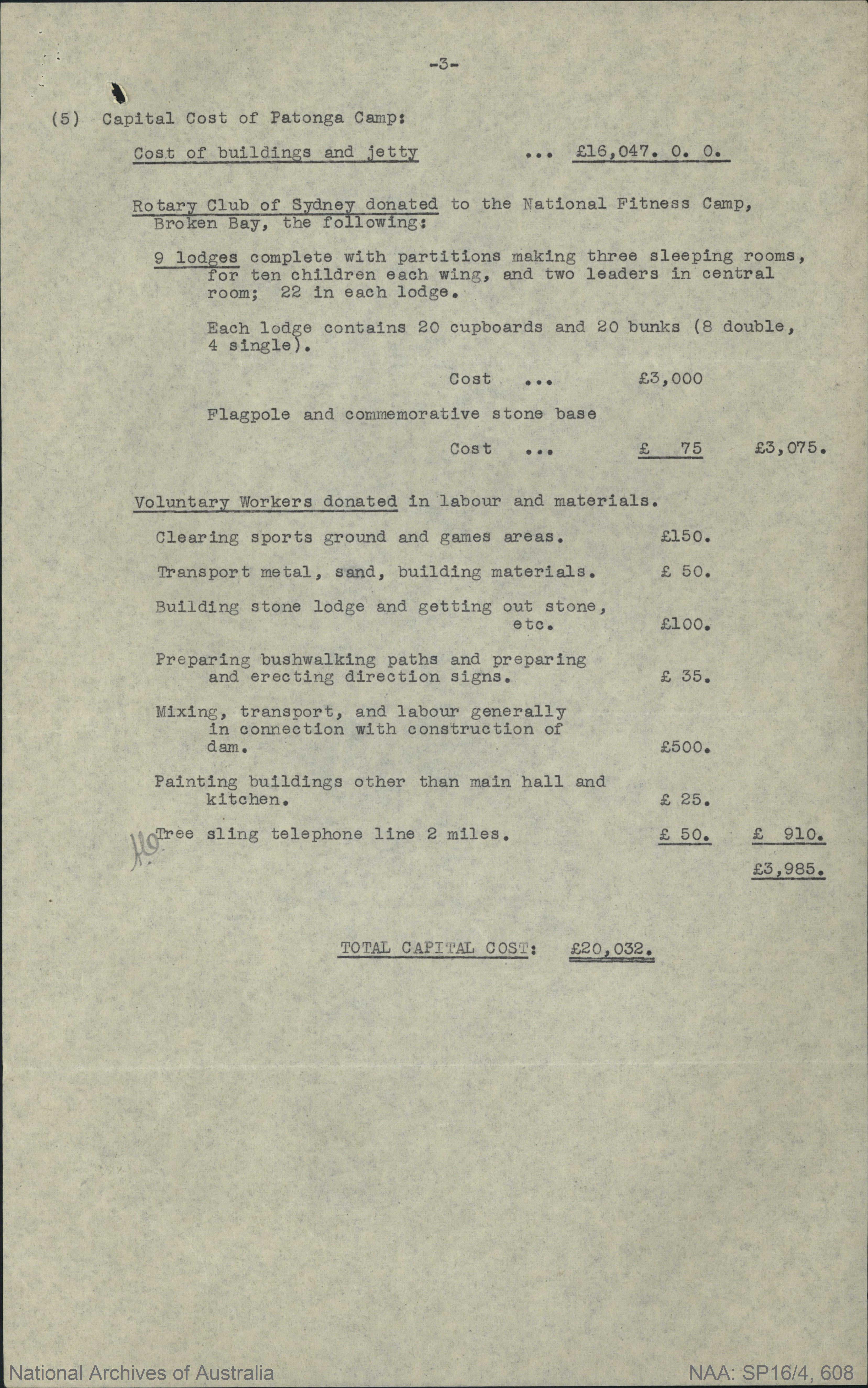
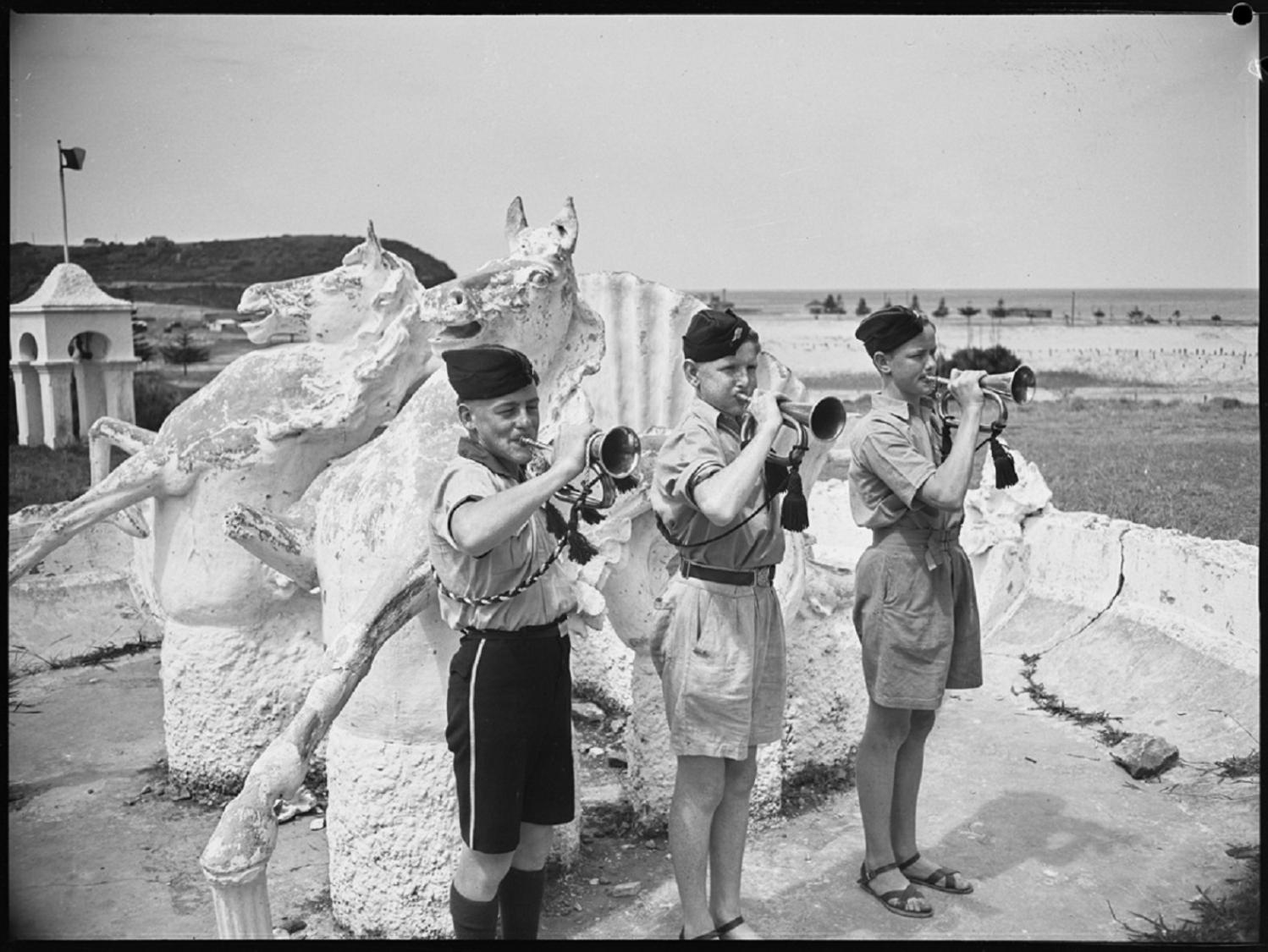
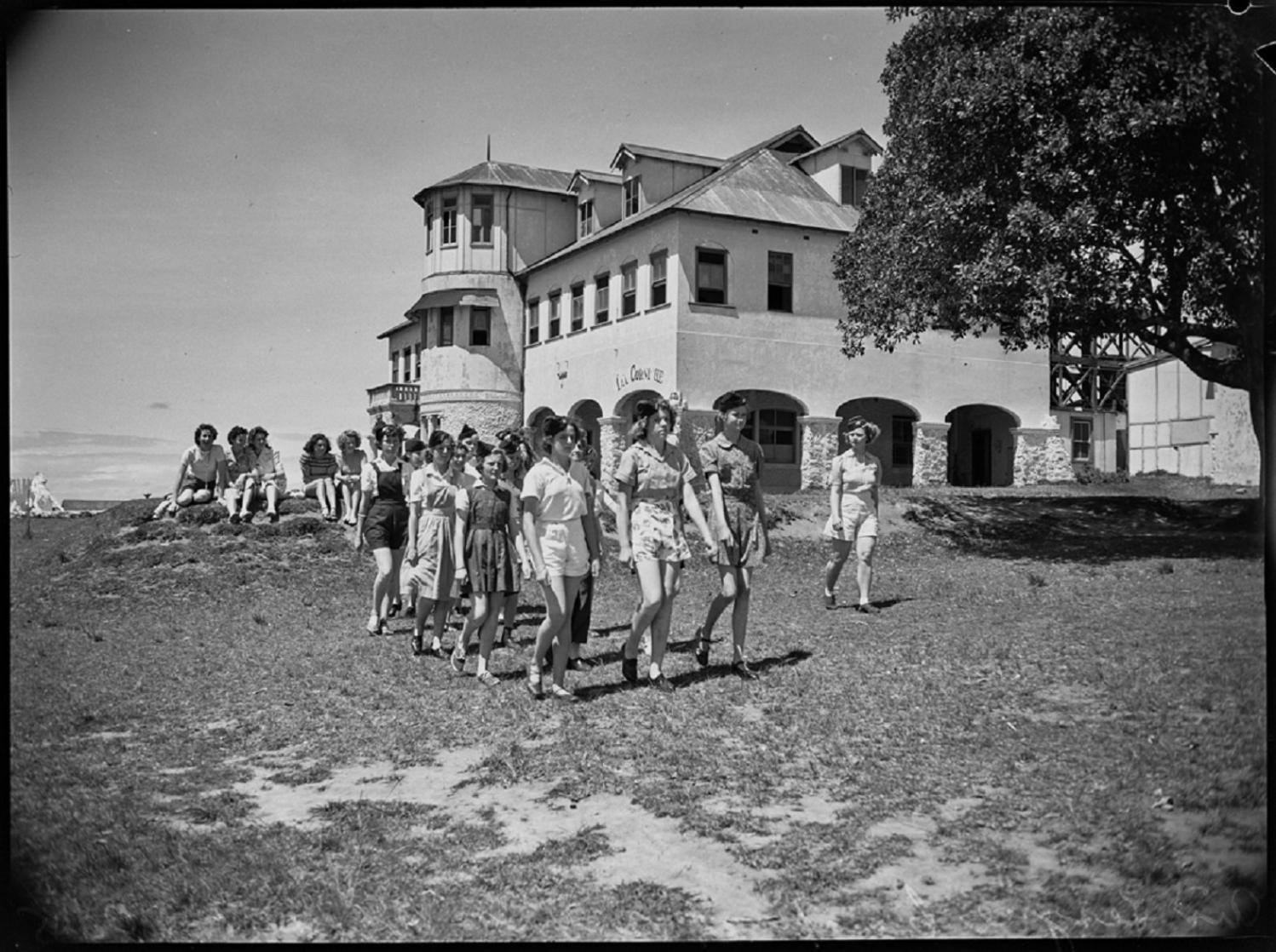
In 1945 the La Corniche buildings and lands passed into the hands of Wallace Joseph Browne, in June 1945 and then to a real estate agent, Trayton Elliott for Jessie Street, wife of the Hon. Kenneth Street, Justice of the Supreme Court of NSW, in May 1946 and in January and August 1947.
NSW Land Registry Services HLRV Vol-Fol5500 140 + 139:

 5500 140.jpg?timestamp=1660175662685)
 5500 139.jpg?timestamp=1660175724103)
NSW Land Registry Services HLRV Vol- Fol 5709-69:

 Jesse Street.jpg?timestamp=1660175212920)
From there what land holdings remained were subdiivied and sold and the cottages demolished.
Bert King OAM, surf boat legend of Narrabeen and Newport, in his Profile, explained he worked as a builder owning Bert King Constructions - and was one of those men who helped build Mona Vale Hospital. He was also contracted to demolish the La Corniche building and erect flats in the mid-1960's:
Didn’t you used to do building as well?
Yes, I was Bert King Constructions. Alex Dobble my old boss and I went into a partnership when I came back from New Guinea and we built War Service homes. I built the first ever units in Mona Vale in Darley Street East on the crest of the hill where the old La Corniche used to be, pulled it down and everyone complained about it being pulled down, but the building was a heap of rubbish; it was just a shack really, the other main building, the one still left, the old golf club is still there.
It’s part of the hospital, where the old Hospice is, next door to that is the old Golf Club, if you get the chance to get into that it’s beautiful. See, originally the golf course was on the flat, where Seabeach Avenue is. There was a swamp there and they reclaimed that and built a horse racing track around the outside edge. They used to race horses there.
Geoff Searl OAM, President of the Avalon Beach Historical Society Meeting, explained a few years ago that there is still a remnant of The Oaks - La Corniche cottages in Mona Vale.
Described in an extensive sales brochure as 'the most substantial' of the 4 villas built here, it was built primarily of stone and brick and stands today at 22 Darley Street east. Geoff explained; ''Originally the front door gave entrance to a large reception room, which in turn gave access to '4 splendid rooms'. Adjoining this villa was a music room and studio.
.jpg?timestamp=1639101392817)
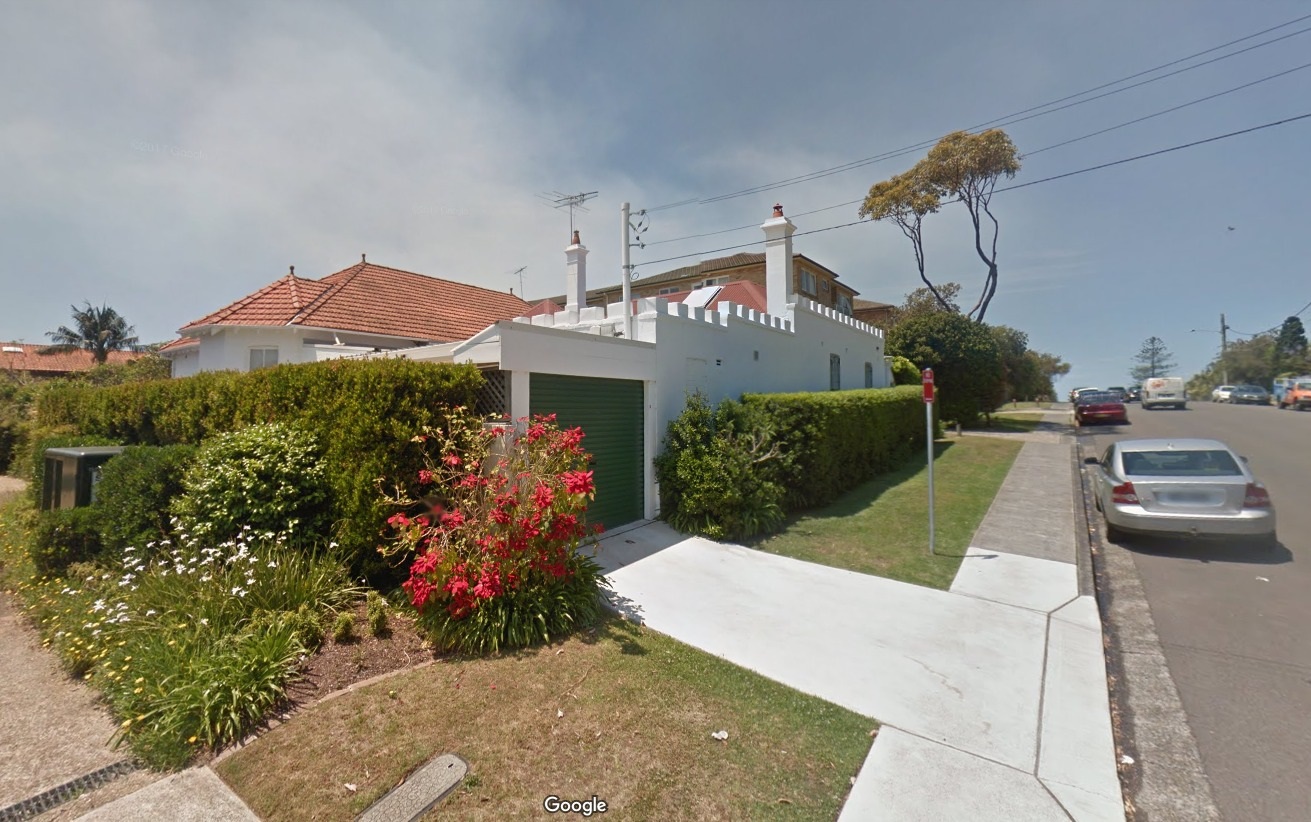
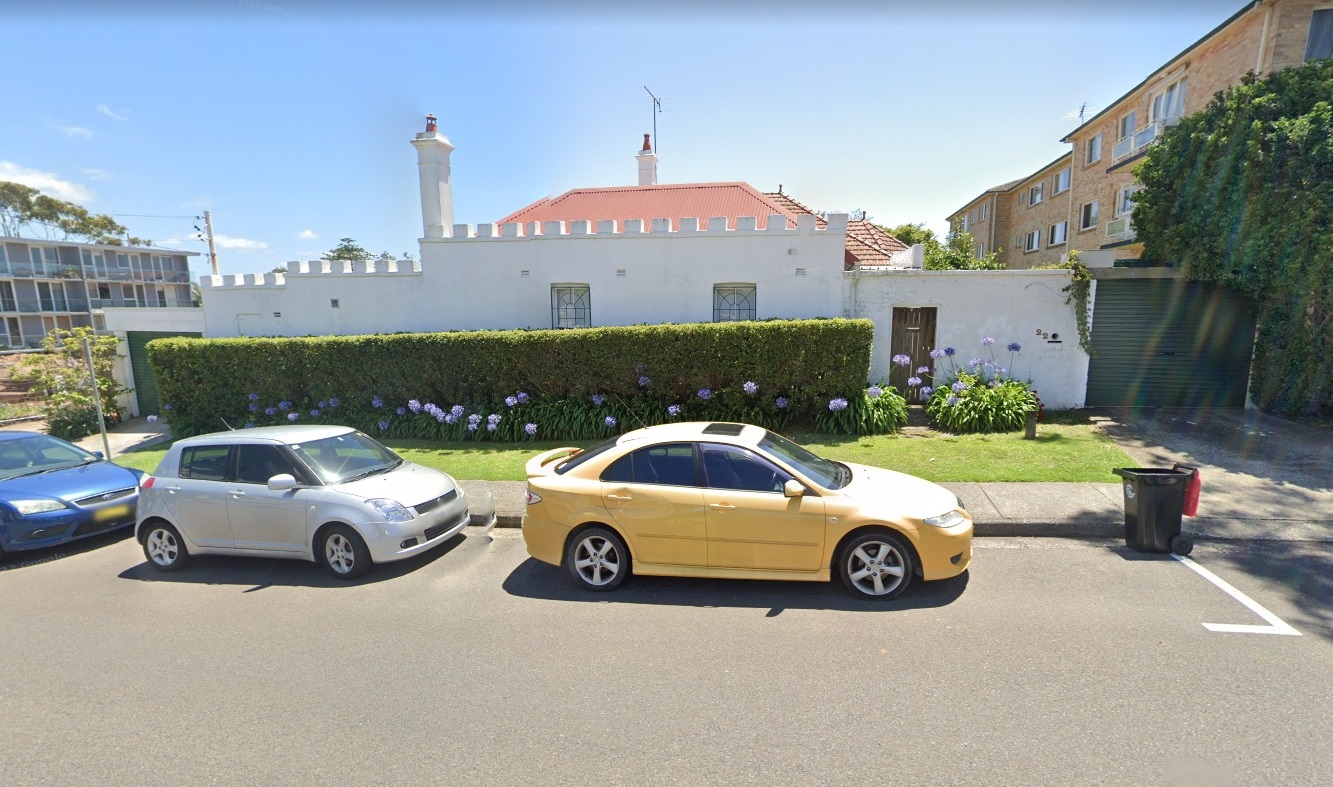
currently - images curtesy Google maps
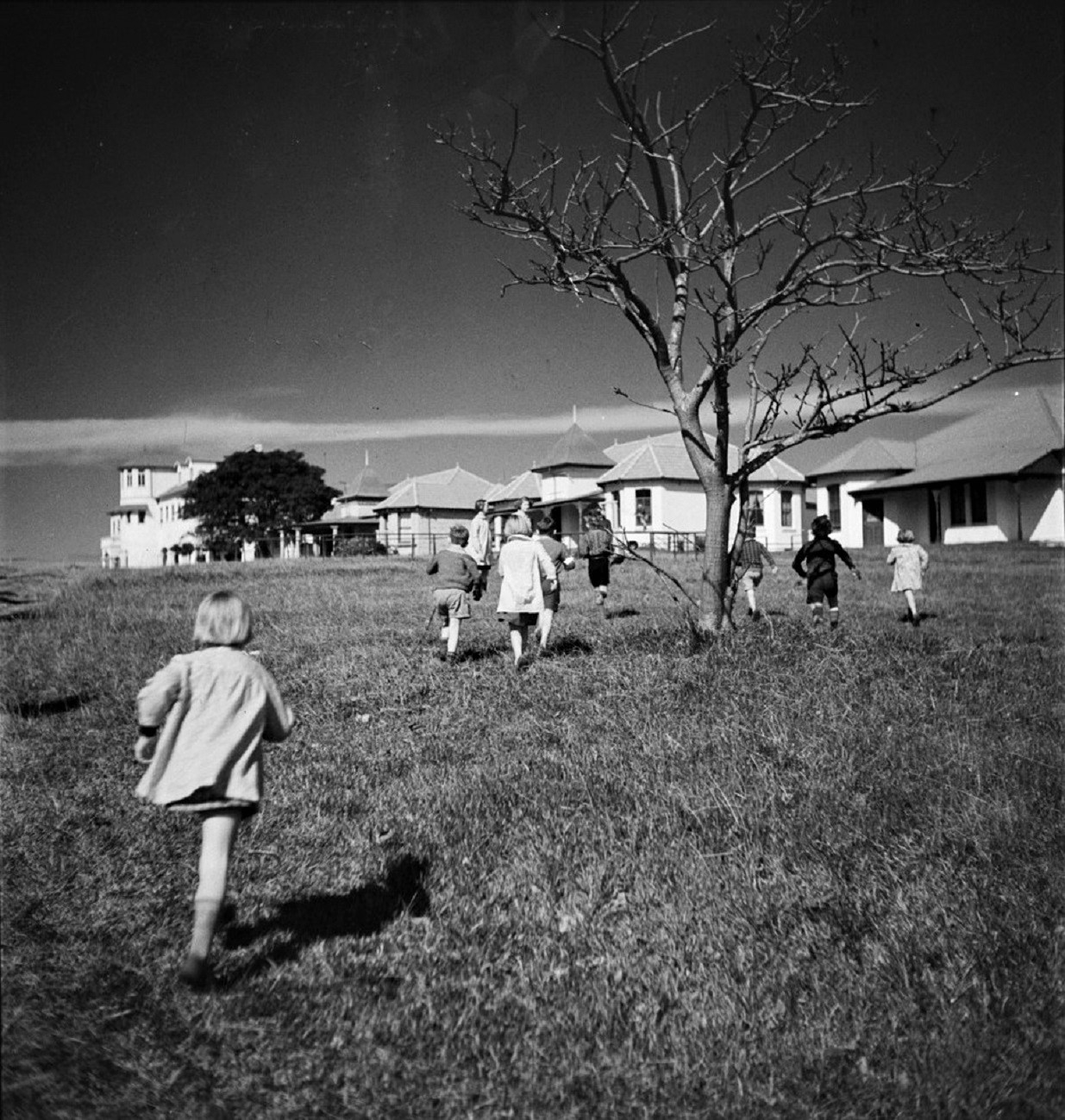
From Quest Haven album, circa 1938 - courtesy State Library of NSW
The villa on the corner, now the site of a petrol station, also named 'The Oaks' in some lithographs and shown in a pamphlet, was the one owned by William Scott-Fells, and possibly the first place built, and from which George Brock's 'The Oaks Polo Grounds' was named in newspapers of the early 1900s, which record there were 'no less than 44 polo ponies' on these grounds.
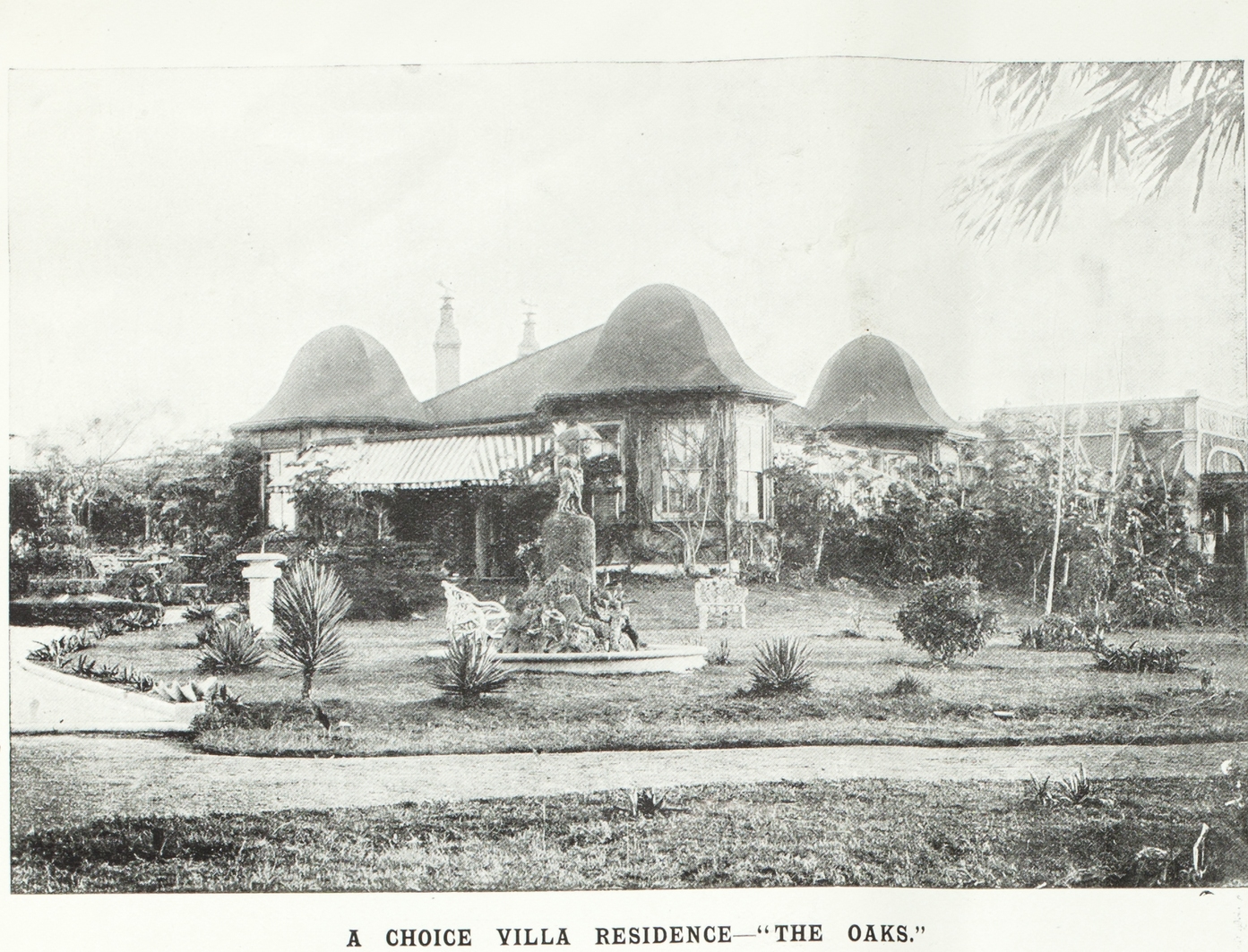
TO HOTELKEEPERS, AMUSEMENT CATERERS, SPORTING CLUB PROPRIETORS. BY ORDER OF THE MORTGAGEES. THE OAKS. MONA VALE.. PITTWATER.
This MAGNIFICENT and UNIQUE PROPERTY comprising about 114 acres, under TORRENS TITLE is situated 10 miles from MANLY, about 500 yards from the Rock Lily Hotel, on the main road to Pittwater and Newport, rendering it accessible from the city by either MOTOR CARS or COACH, has large FRONTAGES to DARLEY STREET, 'the PITT WATER-ROAD, BASSET STREET, and the PACIFIC OCEAN'!
THE BUILDINGS specially designed for a RESIDENCE of a PERFECT SANATORIUM, with Cottages for families attached, of brick on concrete foundation with Mansard roof with promenade, contain imposing MAIN ENTRANCE and HALL, billiard-room, lounge, smoking-room, 25 bedrooms, extra large dining hall, 6 bathrooms, and most up-to-date domestic arrangements, and servants' quarters.
ADJOINING THE CLUB-HOUSE is a STUDIO MUSIC-ROOM, with artistic lead-light windows and ceilings. LARGE FERNERY. A Short Distance from the main building is an octagonal house of brick and wood, containing in the upper portion BALL-ROOM (12ft x 42ft), -with up-to-date arrangements in basement.
IN the GROUNDS are the THREE BRICK COTTAGES above referred to, also TWO OTHERS in course of construction, and on the far side of the grounds is a six-roomed W.B. Cottage, with tiled roof.
THE GROUNDS are tastefully laid out with ornamental shrubs, lawns, and statues in front of the CLUB-HOUSE, while an area of about 40 acres opposite has been made ready for SPORTING purposes. GOLF, POLO, CRICKET, FOOTBALL, LAWN TENNIS, etc, and a 6-furlong Racecourse.'
THE PROPERTY. DELIGHTFULLY SITUATED on the shores of the PACIFIC OCEAN, embraces large beach Frontage where SURF Bathing can be indulged in without risk. Added to other attractions there is a NATURAL FRESH WATER LAKE in the grounds, enhancing their beauty, and at the same time affording a PERMANENT WATER SUPPLY. '
CONSIDERING the rapid strides in Motoring- as a means of transit, and the unrivalled position of the health and holiday resort, there should be a great future FOR THE OAKS.
BATT, RODD, AND PURVES, LTD, have been instructed to sell the above by PUBLIC AUCTION, at their Rooms, 88 Pitt-street. Next TUESDAY, the 7th of MAY, at 11.30 a.m. MESSRs. Minter, Simpson and Co., solicitors for the Mortgagee. Advertising. (1907, April 27). The Sydney Morning Herald (NSW : 1842 - 1954), p. 22. Retrieved from http://nla.gov.au/nla.news-article28153265
And later in the year, an Auction showing subdivisions is accompanied with a brochure:
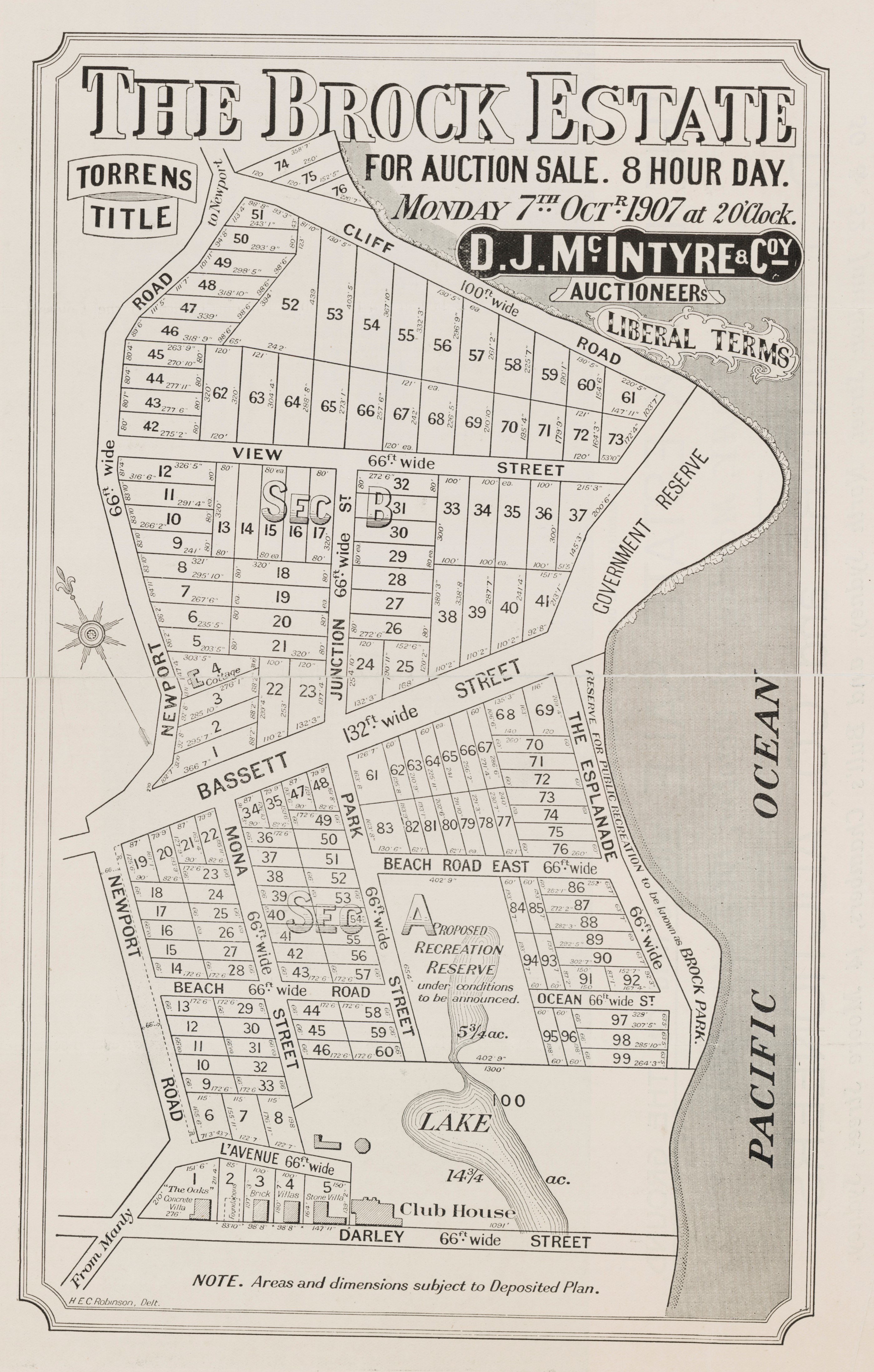
The Brock Estate - Cliff Rd, The Esplanade, Darley St, October 7th Newport 1907. Item No.: c046820076 from Mona Vale Subdivisions, courtesy State Library of New South Wales
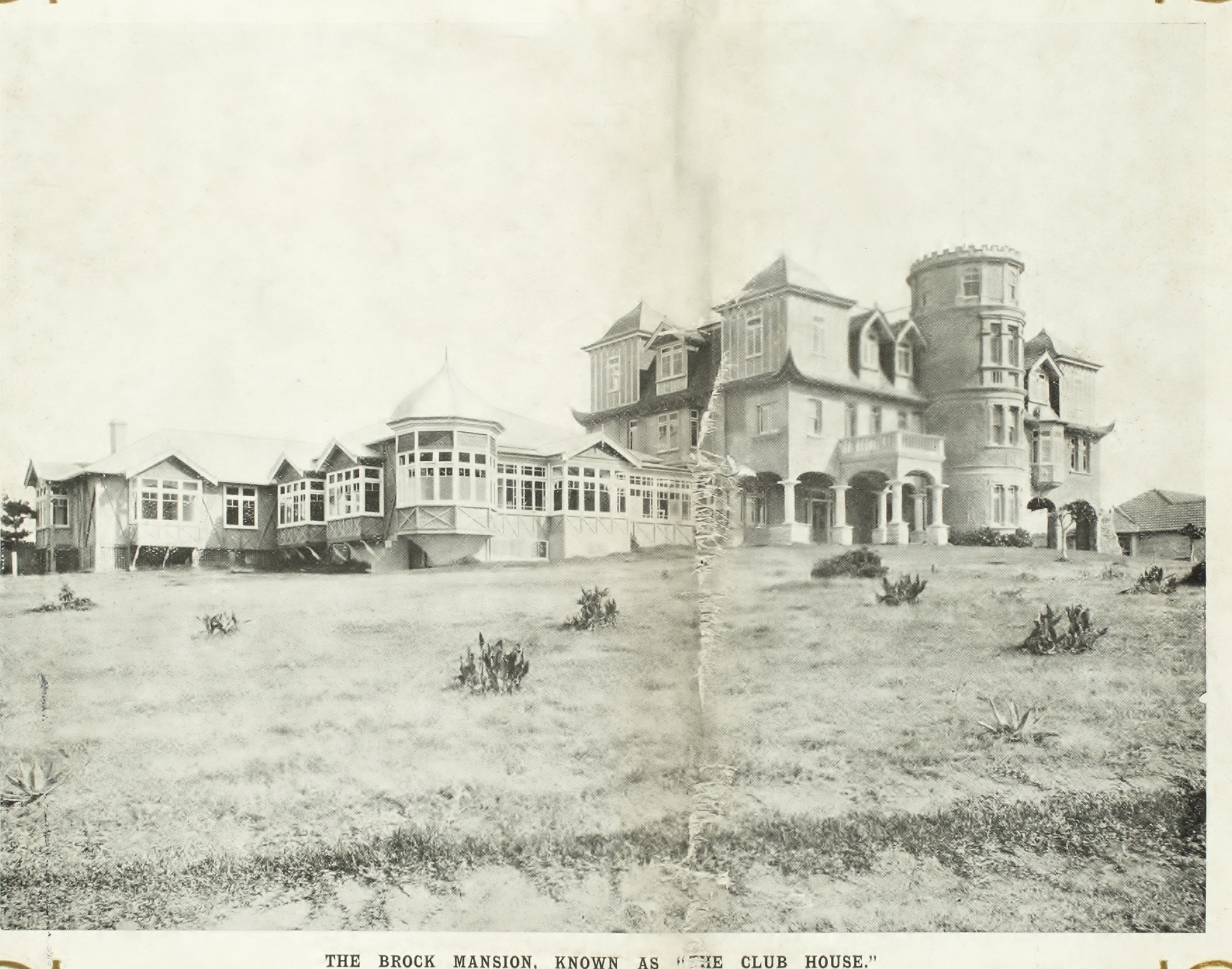
The Brock Estate - 1907, inner page brochure, Item No.: c046820079, Mona Vale Subdivisions, Courtesy State Library of NSW
Today:
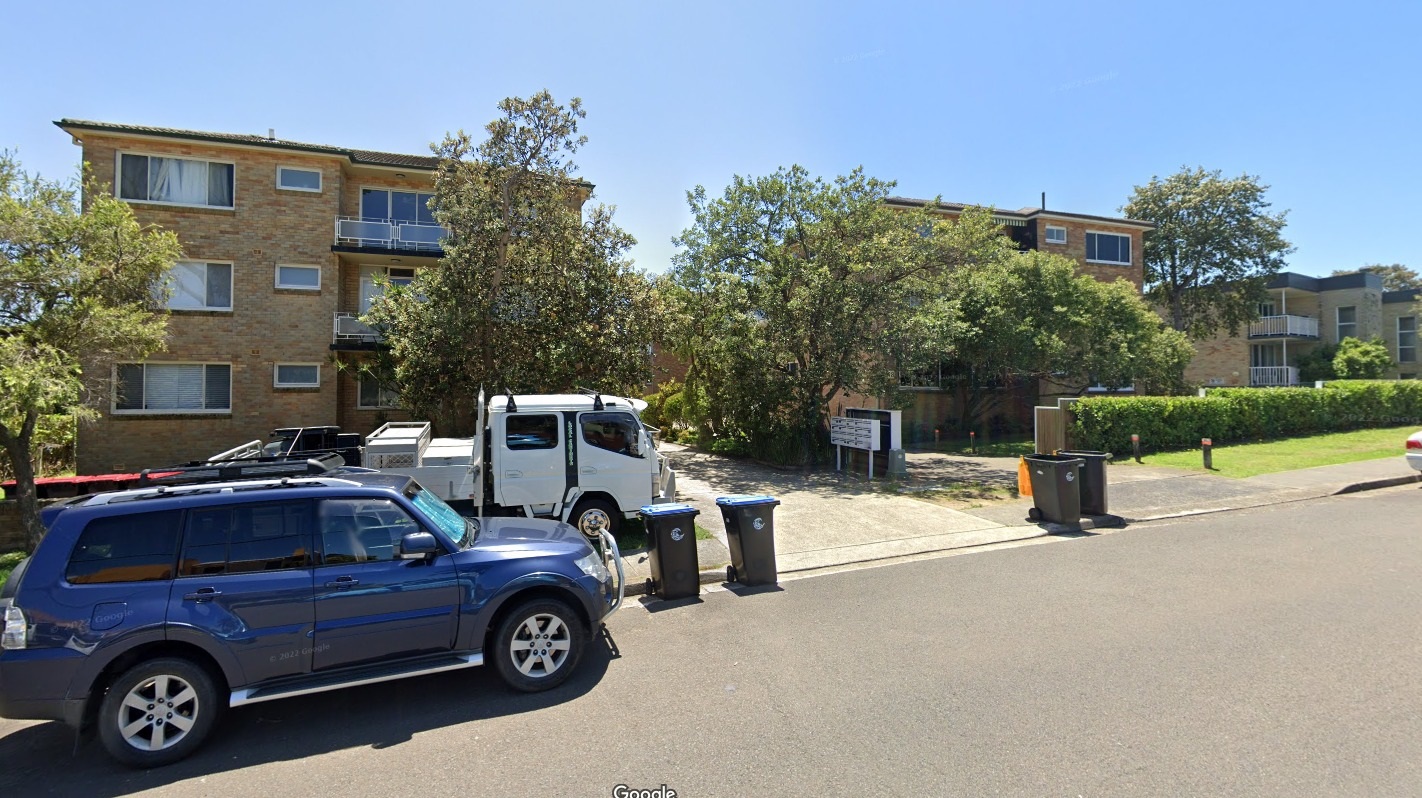
The Hydrology of the site links it, over that hill, to what was originally part of the 'Black Swamp' Reserve, of 180 acres, first set aside for 'camping' (!) on February 8th 1870, and formed part of current day Mona Vale Golf course, Kitehcner Park and Beeby park:
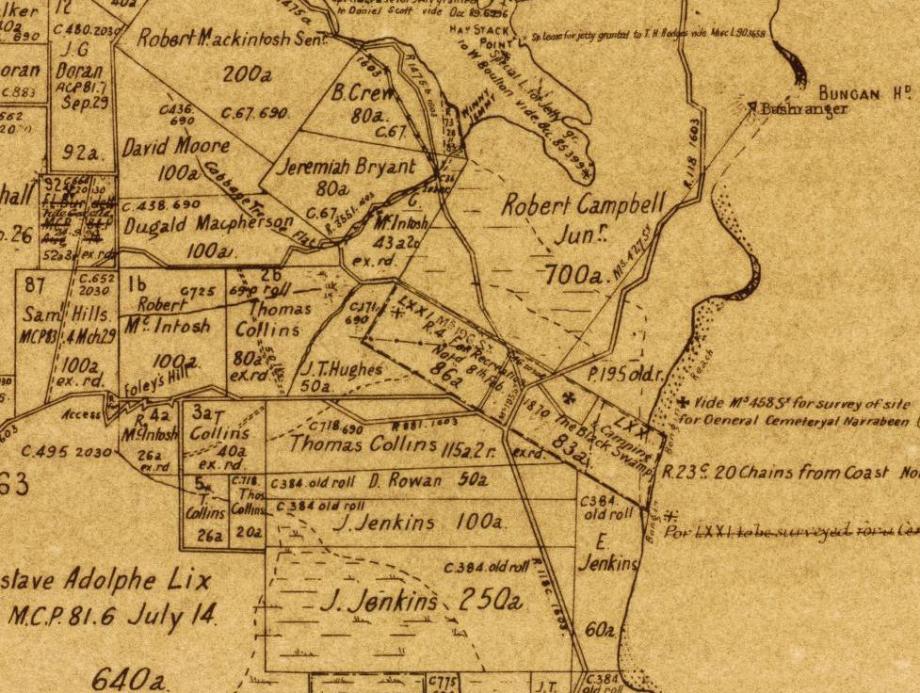
Parish of Narrabeen, County of Cumberland [cartographic material] : Metropolitan Land District, Eastern Division N.S.W. 1886. MAPG8971.G46 svar (Copy 1). Courtesy National Library of Australia
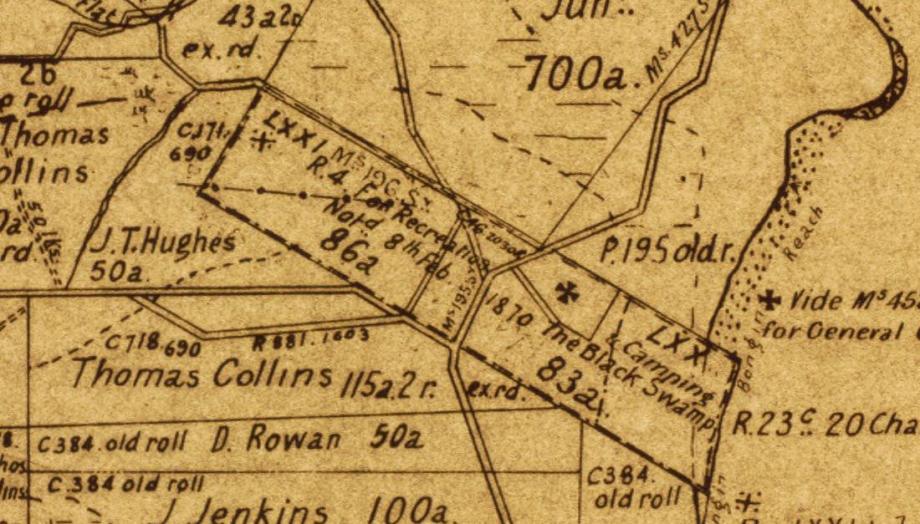
The Gazette Notice:
Department of Lands,
Sydney, 8th February, 1870.
HIS Excellency the Governor, with the advice of the Executive Council, directs it to be notified, that in pursuance of the provisions of the 4th section of the Crown Lands Alienation Act of 1861, the land specified in the Schedule appended hereto shall be reserved from sale for Recreation and for Camping.
WILLIAM FORSTER.
No.4 County of Cumberland, parish of Narrabeen, at Pitt Water, 180 acres: Commencing on the sea-coast at the north-eastern corner of E. Jenkins' 60 acres ; and bounded thence on the south-west by the north-eastern boundaries of that land, D. Rowan's 50 acres, Thomas Collins' 115 acres 2 roods, and J. T. Hughes' 50 acres, being in all a line bearing north 60 degrees west 93 chains; on the north-west by (lie south-eastern boundary-line of J. T. Hughes' 50 acres aforesaid, bearing north 30 degrees east 19 chains to the margin of Winnererremy Swamp ; thence by the margin of that swamp northerly about 4 chains; on the north-east by a line (dividing it from Robt. Campbell's 700 acres grant) bearing south 60 degrees east 85 chains 20 links to the sea-coast; and on the east by the sea-coast southerly, to the point of commencement. Government Gazette Notices (1870, February 8). New South Wales Government Gazette (Sydney, NSW : 1832 - 1900), p. 306. Retrieved from http://nla.gov.au/nla.news-article223285883
The view south from the Mona Vale- Bungan and Bushrangers Hill before all those changes:
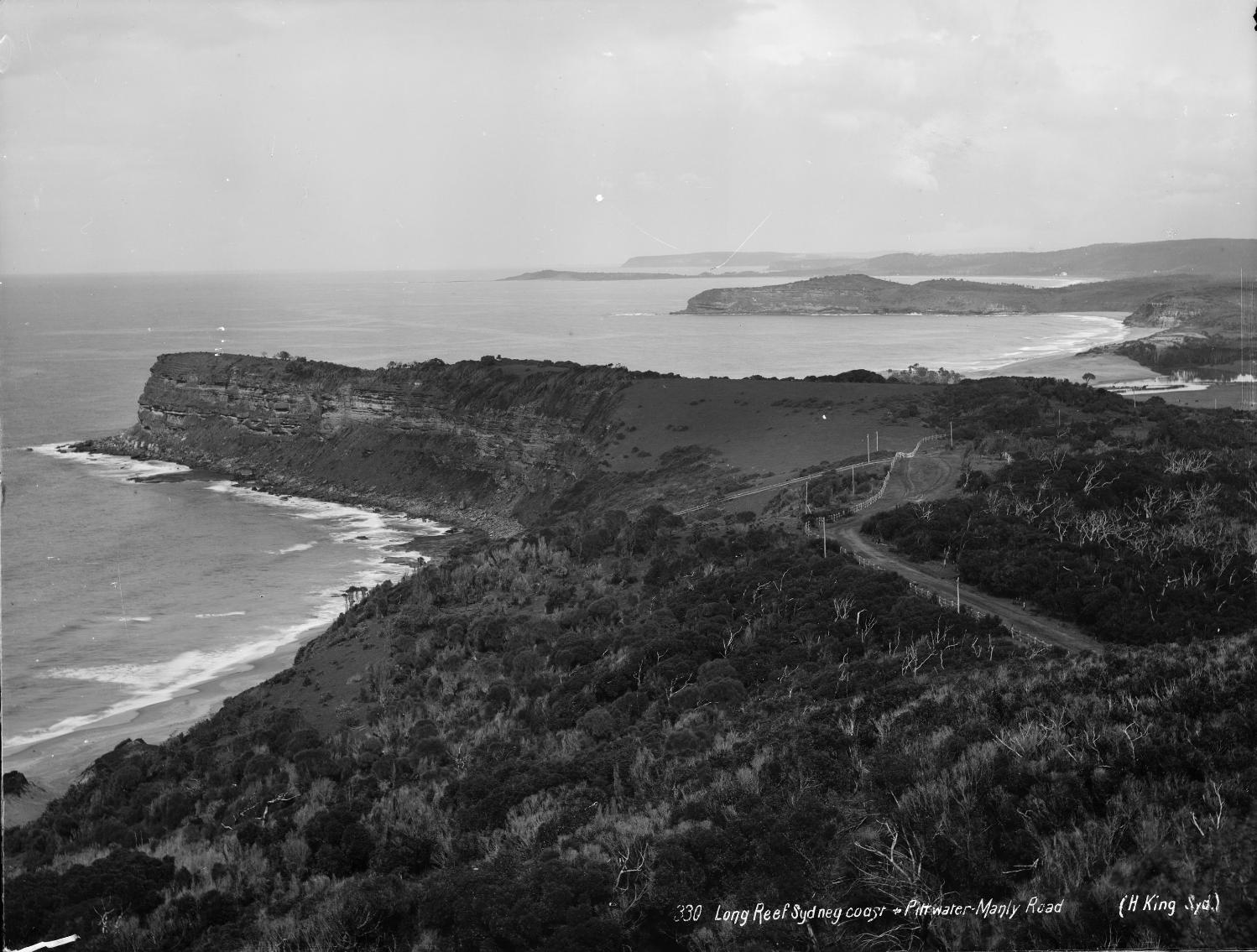
References - extras
- TROVE - National Library of Australia
- State Library of NSW - NB: For those interested, the digitised catalogue provides higher resolution versions of all those smaller photographs in the Allen Family Albums.
- The Oaks - La Corniche - 2011 History page
- La Corniche, Bayview - 2011 History page
- Mona Vale Training Grounds: From Lancers On Horses To Lasses On Transport Courses
- Pittwater Roads II: Where The Streets Have Your Name - Mona Vale, Bongin Bongin, Turimetta and Rock Lily
- Daniel Gordon Soutar's Influence On Local Golf Courses: Some History Notes
- The Australian Air League Camps At Mona Vale Beach In The Old La Corniche Building + The Robey Family Of Manly; 'Always Looking Out For Younger People'
- Mona Vale SLSC: The Clubhouses - Some History
- Some Recollections Of Early Bayview - Don Taylor, youngest son of W. D. M. Taylor, who was eldest son of P. T. Taylor and brother to P. G. 'Bill' Taylor, and Margaret Tink, nee Andrews, whose mother was a Snow
- Profile interviews with Norman Godden, Bruce Robertson OAM and Bert King OAM
- Bungan Head 'Bridge' and Tank Trap During WWII
- National Fitness Centres At Broken Bay, Mona Vale, Narrabeen: Local History Shows We Like To Move It! Move It!
- The Australian Air League Camps At Mona Vale Beach In The Old La Corniche Building + The Robey Family Of Manly; 'Always Looking Out For Younger People'
- Pittwater Reserves: The Green Ways; Mona Vale's Village Greens A Map Of The Historic Crown Lands Ethos Realised
- Original Sales Pamphlets Of Scotland Island, Mona Vale, Great Mackerel Beach, Bungan, Offer Images Into Our Past – A Pittwater Summer Idyll
NSW Historical Land Records Viewer (HLRV) of Brocks Estate - Rickards sales, Volume - Folio - 2124-227 from September 26th, 1910 on - finalised February 18th, 1911 and March 11th, 1911:

 Volume - Folio - 2124-227.jpg?timestamp=1659995485644)
 Volume - Folio - 2124-227.jpg?timestamp=1659995520988)
 Volume - Folio - 2124-227.jpg?timestamp=1659995580923)
 Volume - Folio - 2124-227.jpg?timestamp=1659995629732)
 Volume - Folio - 2124-227.jpg?timestamp=1659995660481)
 Volume - Folio - 2124-227.jpg?timestamp=1659995685498)
 Volume - Folio - 2124-227.jpg?timestamp=1659995706208)
 Volume - Folio - 2124-227.jpg?timestamp=1659995802843)
 Volume - Folio - 2124-227.jpg?timestamp=1659995760562)
 Volume - Folio - 2124-227.jpg?timestamp=1659995945271)
 Volume - Folio - 2124-227.jpg?timestamp=1659995982559)
 Volume - Folio - 2124-227.jpg?timestamp=1659996009105)
 Volume - Folio - 2124-227.jpg?timestamp=1659996151305)
 Volume - Folio - 2124-227.jpg?timestamp=1659996218653)
 Volume - Folio - 2124-227.jpg?timestamp=1659996243192)
 Volume - Folio - 2124-227.jpg?timestamp=1659996325908)
 Volume - Folio - 2124-227.jpg?timestamp=1659996391947)
 Volume - Folio - 2124-227.jpg?timestamp=1659996423222)
 Volume - Folio - 2124-227.jpg?timestamp=1659996448685)
 Volume - Folio - 2124-227.jpg?timestamp=1659996472421)
 Volume - Folio - 2124-227.jpg?timestamp=1659996499957)
 Volume - Folio - 2124-227.jpg?timestamp=1659996525444)
 Volume - Folio - 2124-227.jpg?timestamp=1659996547911)
 Volume - Folio - 2124-227.jpg?timestamp=1659996572268)
 Volume - Folio - 2124-227.jpg?timestamp=1659996595829)
 Volume - Folio - 2124-227.jpg?timestamp=1659996620976)
 Volume - Folio - 2124-227.jpg?timestamp=1659996680837)
 Volume - Folio - 2124-227.jpg?timestamp=1659996707112)
 Volume - Folio - 2124-227.jpg?timestamp=1659996732096)
 Volume - Folio - 2124-227.jpg?timestamp=1659996754730)
 Volume - Folio - 2124-227.jpg?timestamp=1659996781290)
 Volume - Folio - 2124-227.jpg?timestamp=1659996806021)
 Volume - Folio - 2124-227.jpg?timestamp=1659996829968)
 Volume - Folio - 2124-227.jpg?timestamp=1659996854031)
 Volume - Folio - 2124-227.jpg?timestamp=1659996879303)
Volume - Folio 2124-227
PARIS HOUSE.
PHILIPPE PIC'S PLAINT.
Alleged Breach of Contract CLAIM FOR £480.
Judge Murray was occupied in No. 1 District Court all day Thursday in determining and action instituted by a chef name Philippe Pic against Paris House, Limited, wherein Pic claimed £400 for breach of contract. It was claimed by the plaintiff that Paris House, Limited, had engaged him for 12 months as chef-in-chief at a salary of £10 per week. He commenced duties at the beginning of March, and was dismissed in October without any reason being assigned. Mr. Coyne (instructed by Mr. J. W. Abigail) appeared for the plaintiff; and Mr. Sheridan (instructed by Messrs. Dodd and Richardson) for the defendant company. Defendants paid £10 into court in settlement. Plaintiff is a typical Frenchman, and shrugged his shoulders and said 'No saire' with Parisian exactness. He said that he had been a chef for 20 years, and had worked in Melbourne for some considerable time. He had been at the Cafe Anglais, the Cafe Denat, and at other well-known restaurants.
He OPENED THE SAVOY CAFE in Melbourne, took in a partner, and stayed there two years. After that he was employed as chef at Hosies' Cafe, in Flinders-street. Next he got an engagement at Paris House, in Sydney, at £10 a week, the term mentioned being 12 months. He got that position, through his brother. He commenced duties on March 2. He had to look after both kitchens. The top kitchen catered for the fashionable people, who dined in the more expensive rooms, and who took private rooms, while the restaurant on the ground floor was for less expensive people.
His Honor: Hum. Some people live to eat, and other eat to live. I don't live to do the former.
The assemblage, as was meet, laughed tumultuously at this.
Mr Coyle: Did you do any cooking yourself? — Yes, sometimes, when we had banquets, etc. My duties were to generally supervise the kitchen and see that the food was well cooked and prepared, and to see that everything went all right. If anyone wasn't doing anything right, I WOULD CORRECT HIM. You used to receive the provisions from the providors? — Yes. Can you tell me anything about the relative prices of provisions for the. first and second quarters you were there?— Well, during the second quarter some provisions (poultry and fish, for instance) went up 50 per cent, in price. At Paris House there is a lot of poultry consumed and fish also. In fact, fish forms part of every meal. Sometimes we have 50 pair of birds consumed a day, and sometimes more. During the first three months poultry would cost, say, 4s. or 5s. a pair, and in the second they would cost 7s. or 7s. 6d. or 7s. 9d., and they were smaller, too. You would be able to get two portions of a bird off the second lot, whereas of the poultry supplied earlier in the year you would be able to get four portions of the bird.
You received a letter on October 2 calling upon you to cease duties? — Yes. You saw the directors a few days before that— Yes, at a board meeting. They told me to look into the expenses of the kitchen, as they were too high. I said that I would do so. Was anything said at that meeting about misconduct on your part or anything like that? — No, nothing whatever. Did you get any official intimation of why you were dismissed? — No. I went back after I got notice and saw the secretary. He asked me it I had received notice, and I told him that I had. Then he asked me what I was doing back there. THEN I LEFT. What about the price of meals?— You see, saire, I was told that the poultry and fish were too high -His Honor : In price, I presume ? Witness: Yes, saire, 'zaclly so. I was told that the bills were too high, and that the fish and poultry in June, July, and August were double those of the preceding months. It was about this time that the price of meals was raised. Mr. Sheridan : You say that no complaints were made to you about your conduct?— No, saire. Were there any complaints about the cooking?— Yes, many. It was not sufficiently cooked and badly served? It was served cold?— I did not hear that. Why, didn't you hear that some of it was served cold? I am not referring to ices and such things? — Sometimes it would be, in winter. Of course, there may have been ONE OR TWO COMPLAINTS. You were responsible for the manner in which the food was cooked and served?— In a certain way. What do you mean by that?— Well, saire, I was dodging between the top kitchen and the bottom kitchen, and I could not watch them both at the same time. If the waiters could not get their dishes served, who would be responsible for that?— You see, saire, there may be a rush on, and that would, perhaps, be responsible for some cold plates. They may not be washed in time. If the waiters had to pay the cooks to be served and looked after, you will admit that that was bad organisation?— It would be quite wrong. Who was responsible for that system which prevailed?— I suppose I would be. Doesn't food for the bottom floor come from the bottom floor kitchen? — Yes. Well, then, how would it get cold? Would it get cold in being taken from the kitchen to the customers? — Sometimes; but more often it would get cold through being left on the chute, which is in the draught. My responsibility ceased the moment the plates were placed on the chute ready to , be taken away by the waiters. You say you were not officially notified of the board's dissatisfaction, but you knew indirectly?— I was told that three affidavits had been signed against me alleging that I was the LEADER OF A CONSPIRACY amongst the employees, who aimed at defrauding the Paris House people of a certain amount weekly. I think that the sum named was about £10 a week. ' What else? — Mr. Hermann said that was why I was dismissed. Wasn't it on account of the unsatisfactory manner in which the food was served and cooked?— That is not right. And on account of the way is which the kitchen was run? — No. Were you told to do some of the cooking yourself?— I made a report that no-thing would be saved by me doing it. Per-haps about 20 times I did cooking. I used to cook when there was anything on in St. James' Hall. Were you asked to explain the increased expense?— I was. Did you explain?— Yes, I pointed to the increased cost of poultry and fish. Are you now in employment?— Not yet. Isn't it a fact that the prices of meals were raised on the bottom floor only? — I don't think so. Mr. Coyle: Did Mr. Hermann ask you to drop these proceedings? — Yes, he said that the matter was A VERY SERIOUS ONE. and told me- to drop' matters, and leave things as they were. I told him that it was very serious for me, and that I intended to see it through.
Mr. Sheridan : You knew that during the last four months you were there there was a gradual decrease in the number of customers attending Paris House? — Yes, that is so. Wasn't that because of the way the food was served? — Not at all. Holland House, in Elizabeth-street, opened and took a lot of our customers. Mr. Coyle: They do French cooking there too, and everything else like Paris House ? — Yes. Christopher Elmslie, chairman of the Board of Directors of Paris House, Limited, said that he took a personal interest in the place, and frequently visited it. Lie-vain, who had Paris House and sold it to the company, continued as manager for several months. There were no complaints about the manner in which the restaurant was run when he was there. From June until August there were complaints about the manner in which things were carried out. In consequence, Pic was invited to attend the Board meeting, where he was asked to explain the unsatisfactory method in which the kitchen was run. He was told to do SOME OF THE COOKING himself, and he promised to see what improvements he could make. Complaints, however, continued to be numerous, and were in reference to the poorness of the cooking. Pic was called before a Board meeting in October, and he was told of the complaints about bad cooking, and that the Board had received information that the company was being systematically robbed by employees in the kitchen. , Mr. Sheridan: Did you go into details?— | No. He said that he did not understand, and that he would immediately see into it. After Pic retired, we left Mr. Hermann and the secretary to see him again. Part of his duty was to receive fish and poultry?— Yes. What was your experience of meals there? —Not very satisfactory. The food was only partly cooked, and served cold. When I remonstrated with the waiter he was quite cheeky to me. He knew who I was, and I presumed that I, the chairman, would have ' got proper attention. Yes, quite cheeky! Poof! Witness, who is a little cove, puffed out his chest like a pouter pigeon, and blinked like an owl in the gaslight. He looked terribly indignant at the thought of the bold waiter. Mr. Coyle: What experience have you had of restaurants? — This is the first that I have been, connected with. But I have had FIVE AND TWENTY YEARS' experience with companies.
What about Mr. Hermann? I know he has had a large experience in company promoting; but what about restaurants? — I don't know what he knows. Have you anyone on your directorate who knows anything about restaurants? — Mr. Metcalf has had a vast experience in catering. Mr. Pic was there when Mr. Lievain was there?— Yes. Mr. Lievain practically made Paris House? — Yes, he did. Joseph Earle Hermann, one of the di-rectors, said that, he told Pic that Paris House was going down through bad cooking, and also made him acquainted of al-legations made by a number of ex-employees. Witness also told him that it had been alleged that the quantity of goods signed for was not coming into Paris House. At a Board meeting, held about this time, a formal resolution was carried, empowering witness and others to discharge Pic, failing a satisfactory explanation. Shortly after-wards witness saw Pic, and told him practically what was in the statutory declarations. Pic was not able to explain the charges made. Witness then told him that the Board was very dissatisfied with his conduct of affairs, that the provision accounts had gone up, that the number of meals served had decreased, that the kitchen staff was disorganised, that there was a general state of dissatisfaction in Paris House, and the food was badly prepared and served. In consequence of this, the Board had decided to dispense with his services. Pic shrugged his shoulders when made acquainted of the contents OF THE AFFIDAVITS, and said nothing.
A few days later Pic called at witness office of his own accord, upset at the action taken by the company. He said that he was going to take proceedings against the company. Witness told him that he would be very foolish to do that, and that there was more than ample justification for his dismissal. Witness suggested that he should try and prove that the allegations made were wrong. He answered that he would see about it. Mr. Sheridan: You personally investigated the fish account?— Yes. With what result?— The fish account had gone up like -the- poultry account. What explanation did he give? — Well, he said that, like, poultry, that was the season when the price of fish increased. I asked him whether, as he said, like poultry, fish increased in price as they get smaller in size. He said that he was getting the best value for the money. I also complained about a number of dockets missing, and he said that be always kept a rigorous I check over them. Were they important?— Yes; they were really vouchers. Mr. Coyle: The man who supplies the fish is in a rather big way?— I could not say. Now, Mr. Hermann, have you had any experience in running a restaurant? — Not much. Isn't that the characteristic of all the members of your board? — Isn't that the characteristic of all boards? Not of successful ones, Mr. Hermann. Your business is company promoting. There's only one man, a caterer, who has had any experience ? — He says he has, but I've never SEEN HIS QUALIFICATIONS. Wouldn't he be courting discovery to destroy these dockets?— Oh, I don't know. There's no money passes through the chefs hands? ' - No, none. ; Now, Mr. Lievain practically made Paris House?— Yes. Were there any complaints when he was there with you? — There were some, but not as many as when he left. He had expert cooking knowledge?— Yes, I believe he was a chef himself 20 years ago. His Honor: Chefs are born and not made, like poets!
The bewigged barristers laughed like the devil at- this marvellous example of judicial wit, and Mr. Sheridan even dislodged his wig, so uproarious was his outburst. Now, about that chute; the space would hold only about four dinners? — Yes, about that. So that if there was a rush the waiters would have to wait their turn?— Not if the kitchen' arrangements were good. You know that at times of the year poultry is dear? — Yes, about 50 per cent.; but— and there is a but— there is a method by which poultry may be obtained at the dear time of the year at a price that you would not have to pay in the ordinary shops. If was Mr. Pic's duty to buy in THE VERY BEST MARKET. Regarding the directors' meeting, when the decrease of business was discussed, did you say that there had been a decrease or an increase of 3000 meals served?— No, I don't think so. When you spoke to him about this criminal action- of taking the company down, and advised him to drop proceedings, did you know that these proceedings would be taken?— No, I am sure of it. You said that, if he did go on, you would proceed with the criminal charge of robbing the company?— I did not use the expression 'criminal charge.' I spoke to him in an ordinary conversational manner, and told him not to make a fool of himself. The threat had no terrors for him?— There was no threat. Do you attribute the decreased attendance at Paris House to Pic? — Yes; to the bad cooking and to the disorganisation. There's the same class of men there' now, and they are being properly served. Isn't the whole of the disorganisation amongst the waiters? — No. Has the disorganisation ceased? — Yes. Everything is working smoothly? — Yes. Pic had no control over the waiters?— No; but he had over the kitchen, and the method of serving the waiters. Mr. Sheridan: Are there fewer waiters there now? — Yes. I believe three waiters went TO ANOTHER RESTAURANT down town.
Otto Hoyer, a Paris House waiter, said that while Pic was chef at Paris House there was great trouble about getting food from the kitchen. 'There were any amount of complaints,' continued witness, 'and 1 lost a lot of customers who had been coming to my rooms for 10 years. They, wouldn't stand it any longer. I had 20 or 30 regular customers into lunch, and during Pic's time they dwindled down to 10. They all left. They all complained of the way the food was dished up.' Had you to give money to the cooks to get decent attention?— Yes; in Mr. Lievain's time I used to give the cook a shilling or two, but that was nothing. But in Mr. Pic's time we always had to give the cooks money to get decent attention. And another thing, we used to have stale stuff down stairs for three days,— three solid days. There used to be too much cooked upstairs, and it would be sent downstairs for the cheaper customers. My word, they know the difference between stale chicken and fresh chicken, just like the people upstairs. That sort of thing happened three or four times a week, and not all at once. We got all stale stuff downstairs, and things went FROM BAD TO WOESE. Charles Endercott, manager' of Paris House, said that he had been employed at Paris House for the past 17 years. He was head waiter for some time. Things got very bad when Lievain left, and there was general laxity and an inability to cope with the work. The kitchen was- run in a very lax manner, and witness heard complaints about the loose manner in which food was cooked and served. Witness's staff was complaining every hour of the day about the poor attention they received from the kitchen: Since Pic left witness had heard no complaints from customers. The case stands part heard. PARIS HOUSE. (1911, December 24). Truth (Sydney, NSW : 1894 - 1954), p. 8. Retrieved from http://nla.gov.au/nla.news-article168746685
CLAIM BY A FRENCH CHEF: VERDICT FOR THE DEFENDANTS.
In the claim for £390 damages by Philippe Pic, a French chef from Paris House. Ltd.. ' for alleged wrongful dismissal and wages due, Judge Murray, In the Metropolitan District Court, found for the defendant company. Plaintiff alleged that he was engaged at £10 per week for 12 months, and was dismissed before the end of that period. The defendant company paid;£10 Into court In satisfaction of the claim, but denied liability. Mr. Coyle (Instructed by Mr. J. "W. Abigail) appeared for the plaintiffs and Mr. Sheridan (Instructed by Messrs. Dodds and Richardson) for the defendant company. CLAIM BY A FRENCH CHEF. (1911, December 22). The Sun (Sydney, NSW : 1910 - 1954), p. 1 (FINAL EXTRA). Retrieved from http://nla.gov.au/nla.news-article221522763
